In pictures: the W* photography desk’s 2018 digest of visual inspiration
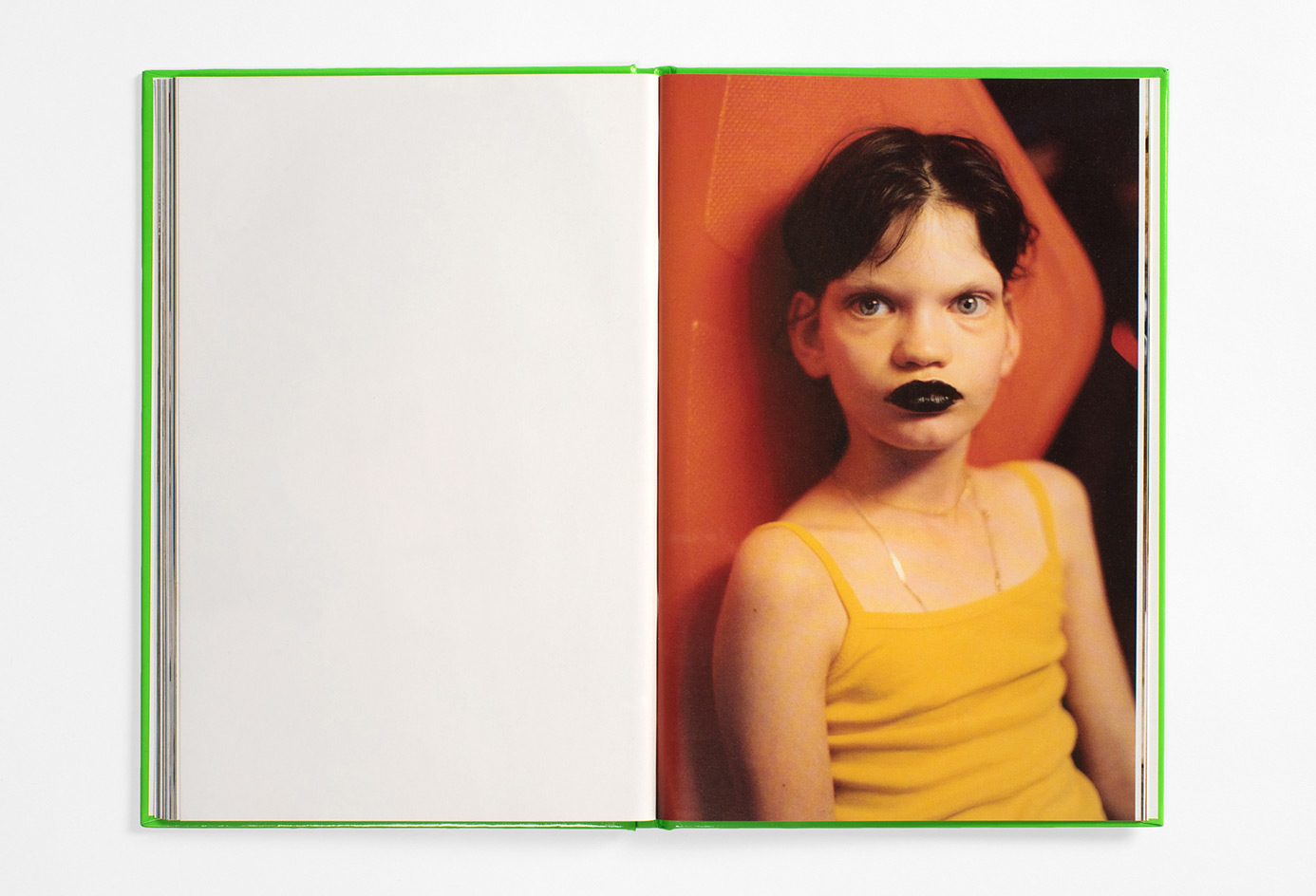
The young girl depicted in Out Of You becomes a medium through which collaborative artist duo Hart Lëshkina explore constructed self-representations. The new monograph delves into the complex time of transition from child into adolescent, when awareness of the self merges with awareness of the gaze of others upon the self. A curious element is the girl’s age: from page to page she seems to grow both older and younger, despite the series being shot over a short period of time. While these intimate images appear candid, Hart Lëshkina have in reality staged them, bringing to mind something that follows our own personal experience of identity construction and memory.
Out of You, $38, published by Total Visual Shop
Writer: Sophie Gladstone
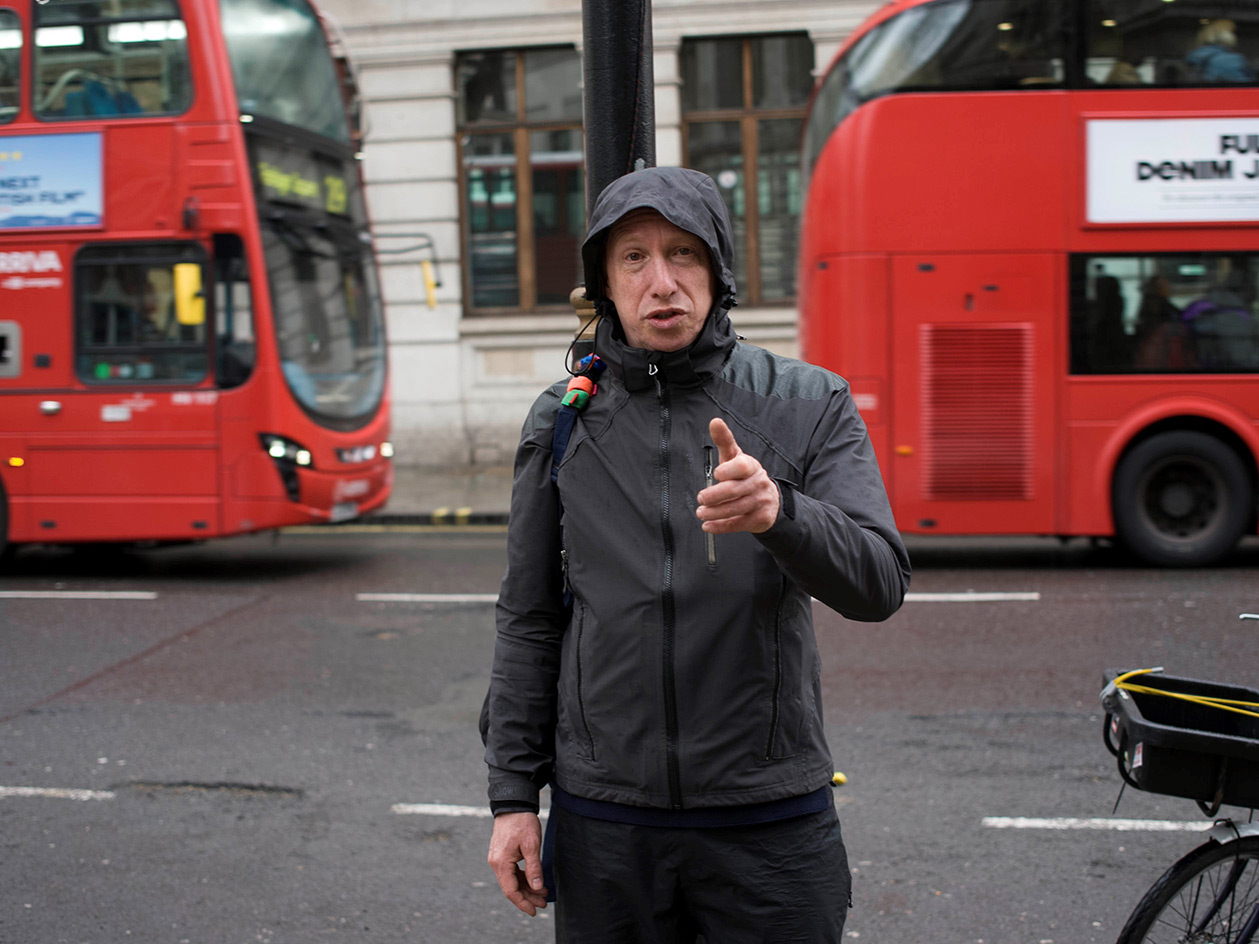
With all proceeds going to charities supporting people suffering from homelessness, photographer Nigel Shafran has produced a thought-provoking book The People on the Street. By asking vulnerable people on the street to take his photograph, we see the view of the person taking the picture, an attempt to reverse the dynamic in which these people are seen as ‘other’. Since 2010, the number of rough sleepers in London has doubled – a poignant fact when we take in the signifiers of wealth and fast-paced urban life present in the images.
Pictured, Ron, Charing Cross Road, WC2, by Nigel Shafran. Courtesy of the artist
Writer: Sophie Gladstone
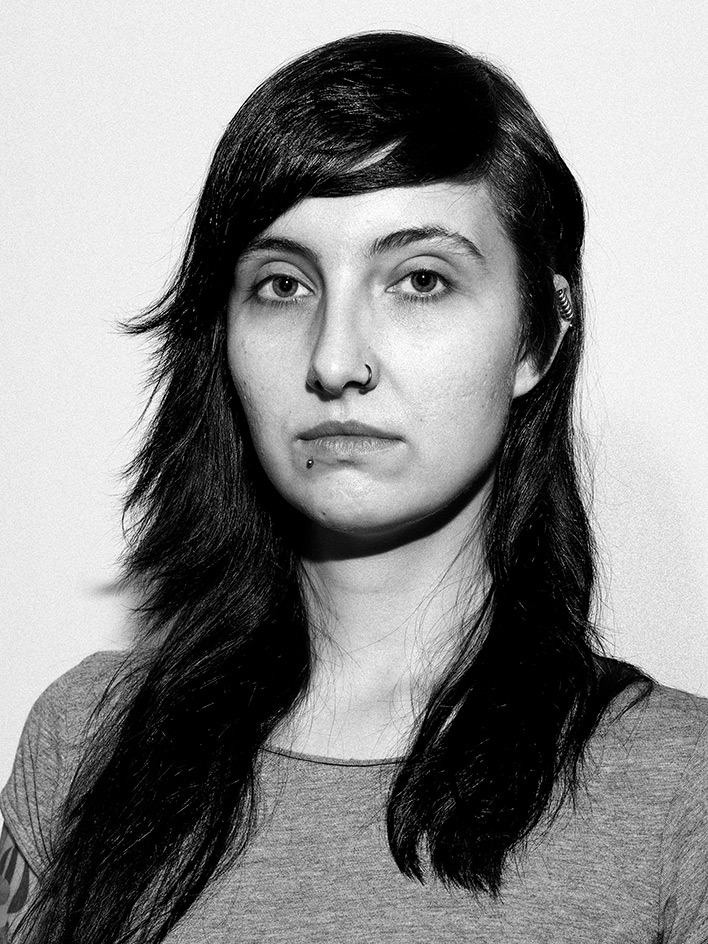
On Abortion, the first chapter of Lai Abril’s long-term project On Misogyny, has won the 2018 Paris Photo/Aperture Foundation Photobook of the Year Award. The thoroughly researched book conceptualises the historical dangers and difficulties that have surrounded abortion and contraception, through to the present day. Despite the fact that safe and efficient means of abortion now exist, many countries and religions still do not give women significant reproductive rights. Consequently, 47,000 women die every year from botched abortions. Bringing together questions of morality that she treats with ethical sensitivity, Abril explores the powerful social stigmas and taboos that perpetuate control over women’s fertility, and reveals what has historically been hidden.
On Abortion, £35, published by Dewi Lewis Publishing
Writer: Sophie Gladstone
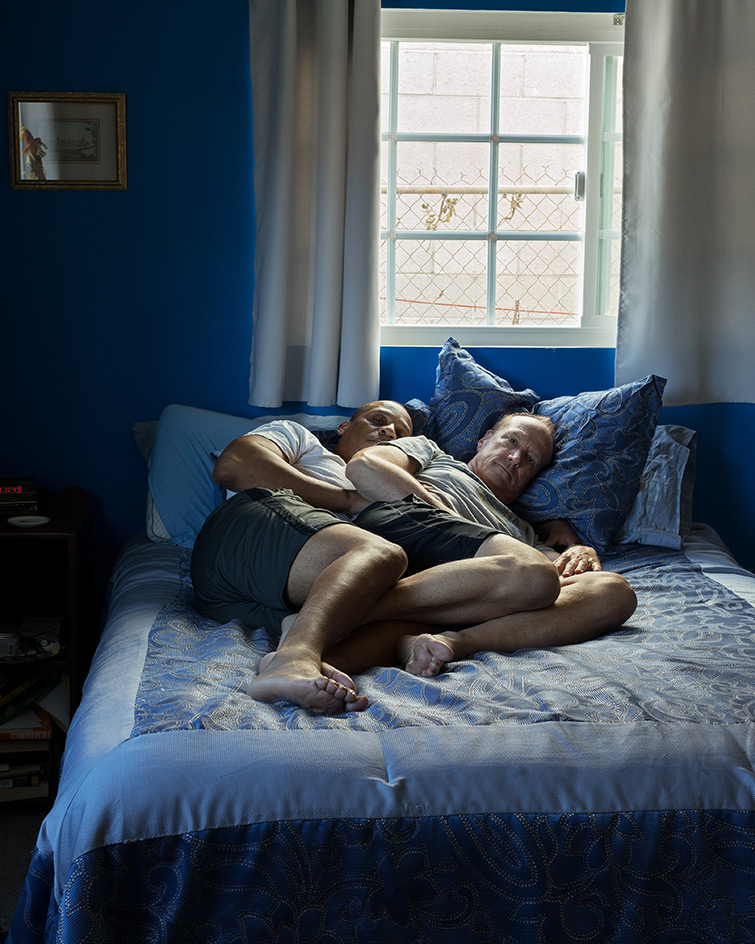
The California Sunday Magazine presents the exhibition ‘At Home: In The American West’ (6 December 2018 – 4 January 2019) at Aperture Foundation in New York. Travelling through ten states in the American West, a troupe of photographers including Pixy Liao, Ricardo Nagaoka, Mark Steinmetz and others, connected with a diverse range of people to explore how we feel ‘home’. Coinciding with the exhibition and sharing its emotive theme is the release of The California Sunday Magazine’s December issue.
Pictured, Derrick Washington & Kurt Gramm, Los Angeles, CA, by Erica Deeman
Writer: Sophie Gladstone
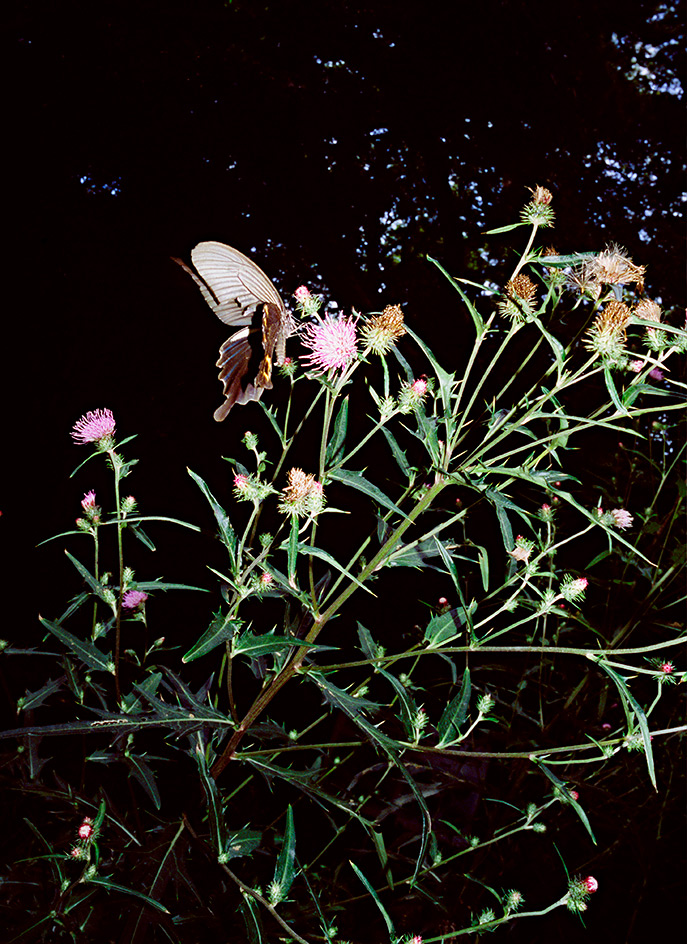
For Jean-Vincent Simonet, Japan has always been ethereal. Photographed in Tokyo and Osaka, the Lausanne-based artist’s most recent work In Bloom, is an intense hyper-visual journey into the awe-inducing underground culture of the two cities. With a passion for excess and entropy, Simonet is known for going beyond boundaries of photography; analogue images are manipulated by experiments during printing, creating transformations that abstract and blur, evoking feelings of being ingested by the mythical organism that is Japan. Sitting somewhere between love letter and travel diary, the series is showing at London’s Webber Gallery until 21 October, in partnership with Self Publish Be Happy.
Pictured, In Bloom, 2018, by Jean-Vincent Simonet
Writer: Sophie Gladstone
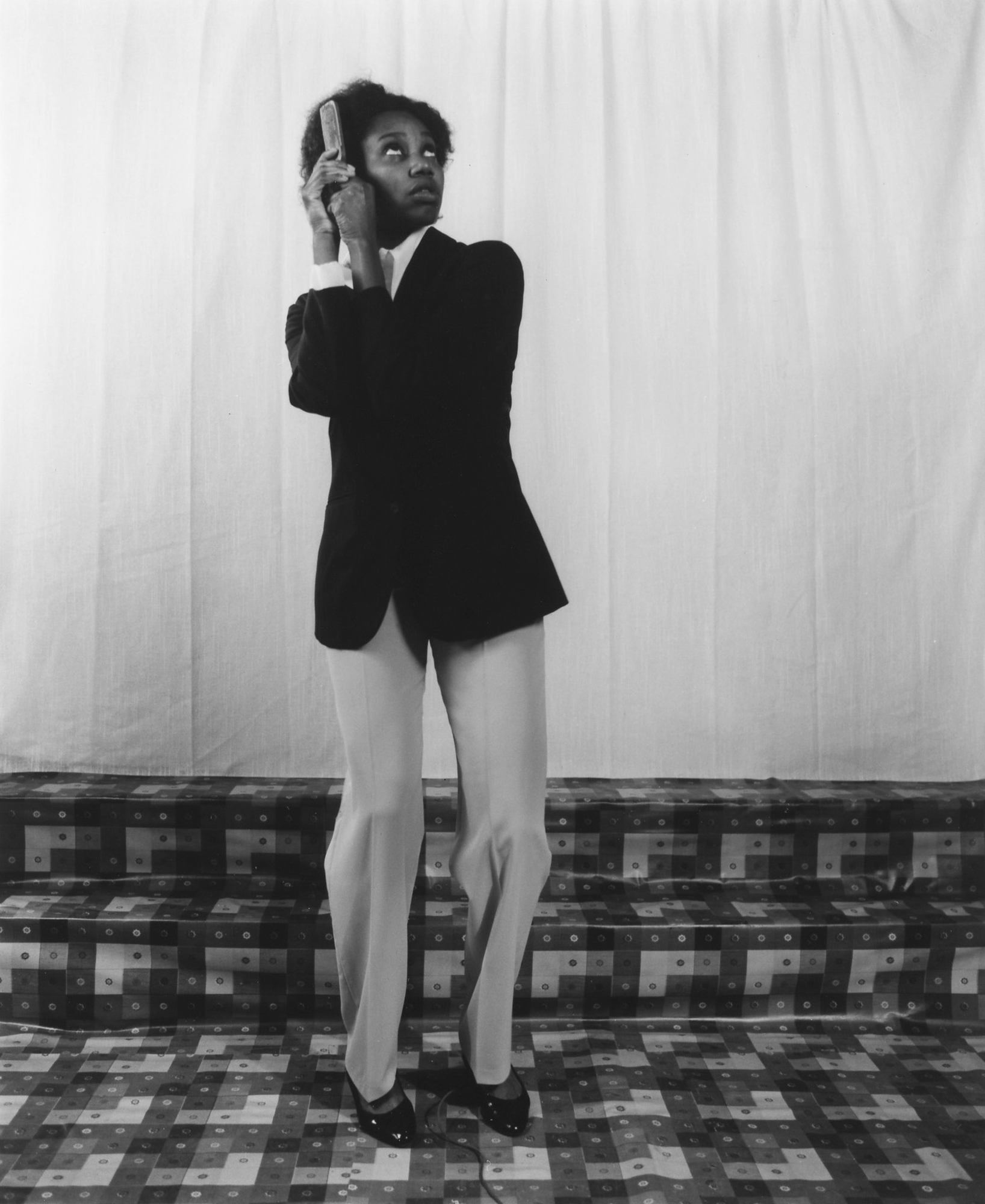
The two winners of the Jerwood/Photoworks Awards have been announced as Silvia Rosi and Theo Simpson. Launched in 2015, the biennial award offers a development opportunity and touring exhibition (showing January 2020). to aid the production of new work the winners will receive a grant of £10,000 each. Togolaise-Italian artist Rosi’s work explores themes of memory, migration and diaspora through self-portrayals of archival imagery, while Simpson’s self contained pieces respond to current evolutions of our environments in dialogue with pivotal historical and political moments.
Pictured, The Look, 2016, by Silvia Rosi
Writer: Sophie Gladstone
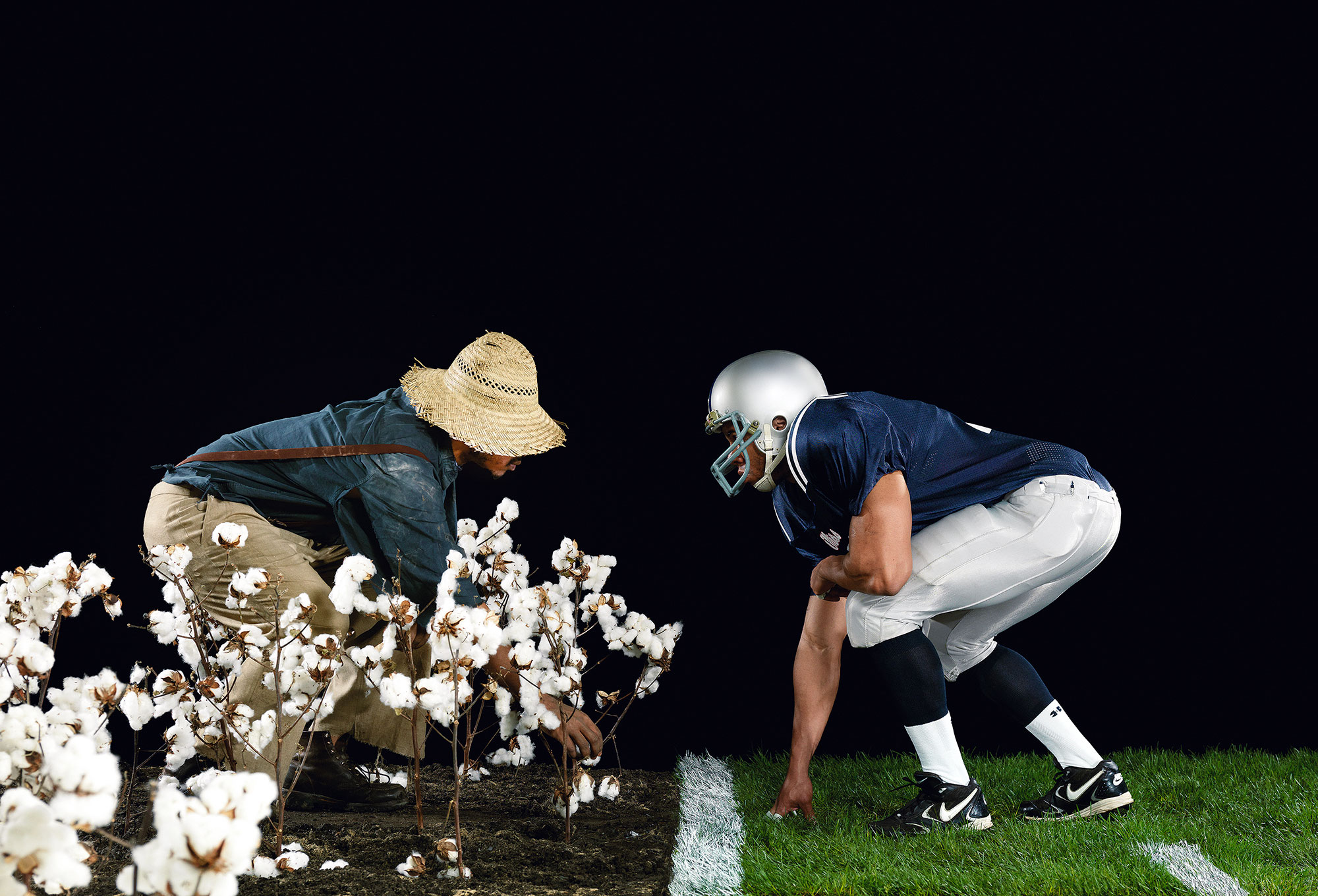
Issues of race, gender and cultural identity run powerfully throughout all mediums Hank Willis Thomas works with, and now Aperture has published a survey of his phenomenal interdisciplinary career. Hank Willis Thomas: All Things Being Equal is a testament to the artists aptitude for critically exploring the relationship between art and civic life. The book contains over 250 works, contextualised with astute essays from Portland Art Museum curators Julia Dolan and Sara Krajewski and art historian Sarah Elizabeth Lewis. Thomas’ inspirations and influences are also delved into in an interview by art historian Kellie Jones.
Pictured, The Cotton Bowl, 2011, by Hank Willis Thomas, digital C-print, from the Strange Fruit series. © Hank Willis Thomas
Writer: Sophie Gladstone
Wallpaper* Newsletter
Receive our daily digest of inspiration, escapism and design stories from around the world direct to your inbox.
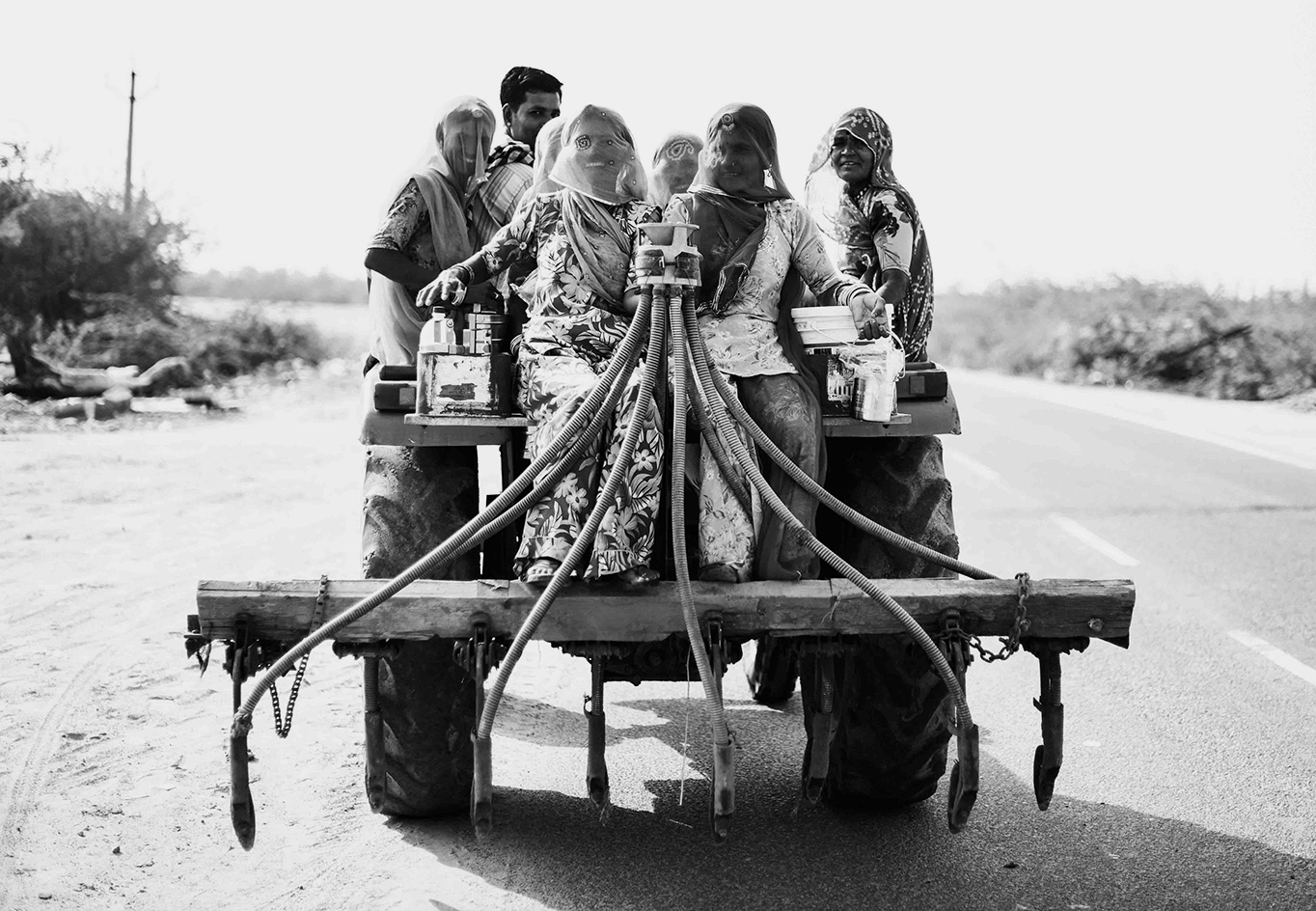
Since 2011, luxury italian home brand Visionnaire has devoted a permanent gallery space within its Milan flagship to emerging artists. Visionnaire creative director Eleonore Cavalli and her husband, curator Marco Morandini, are currently showcasing portraits by Paolo Balboni taken in Varanasia, a holy city in India considered to be fortuitous by many. Bambino has turned his camera towards the daily comings and goings of the people in this spiritual capital. Documenting in black and white, ‘Varanasi’ provides an insight into richly symbolic area of Hindu tradition. Until 29 February 2019.
Pictured, Untitled 11, by Paolo Balboni
Writer: Sophie Gladstone
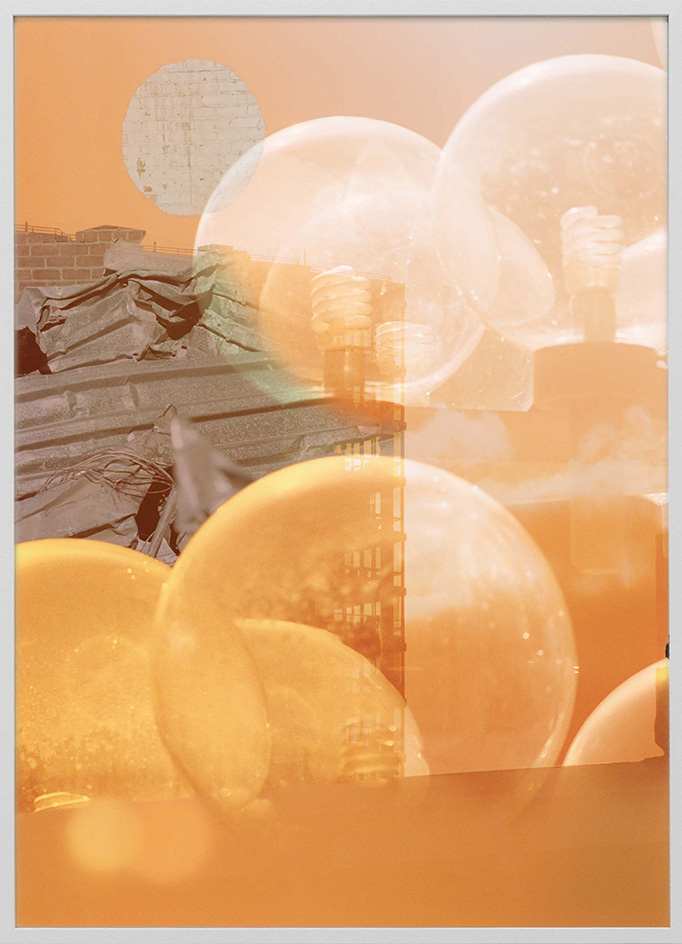
Amsterdam museum Foam has opened ‘43-35 10th Street’ (23 November 2018 – 27 January 2019), an exhibition of the work of American photographer Daniel Shea who was announced as this year’s winner of the Foam Paul Huf Award. Shea’s latest project both appeals and disconcerts, with monumental cityscapes stipulating the power of urban landscape and its impact upon society. The title of the work is the address of his studio in Long Island City, an area of accelerated gentrification in New York. However the times and places of Shea’s photographs go beyond this physical location, posing a multidimensional question of power, privilege and politics. Unusual incorporations such as architectural blueprints etched into the glass of the frame, or compositions that bleed onto their mount, convey the disconnect between reality and an imagined utopia.
Pictured, LIC20, 2017, by Daniel Shea, from the series 43-35 10th Street. © Daniel Shea
Writer: Sophie Gladstone
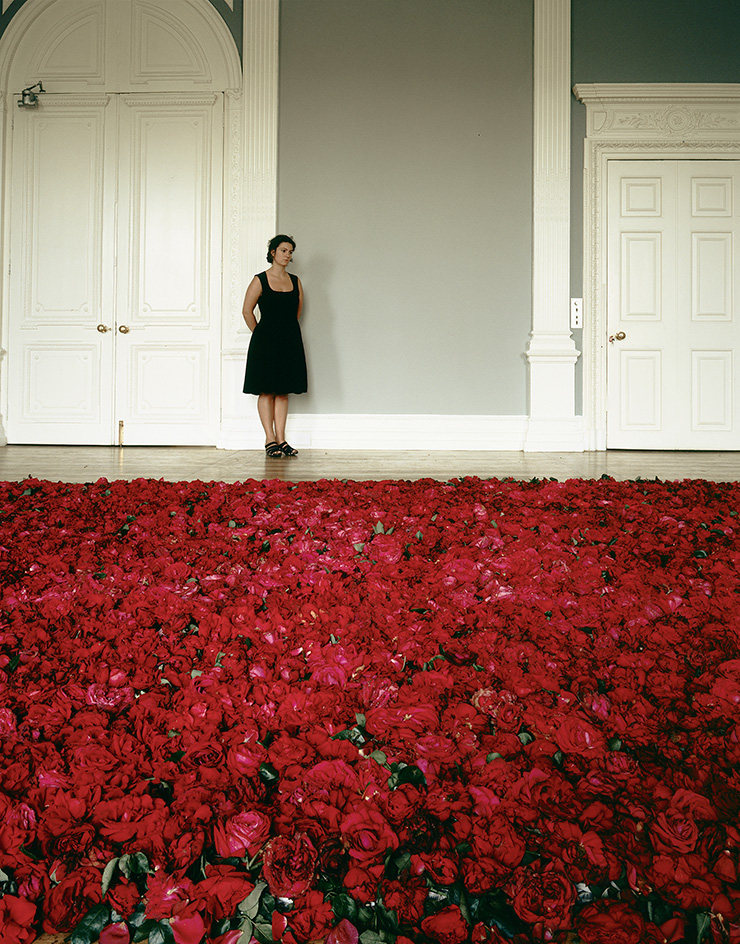
Over 8,000 images were narrowed down for John Hansard Gallery’s retrospective of Edward Woodman in Southampton, hosted in partnership with Art360 Foundation and on view until 2 February 2019. Spanning six decades, Woodman’s work is exceptionally broad ranging from reportages of political rallies in the 1960s to enigmatic 1980s and 1990s portraits of artists. Among his most recognisable images are thoughtfully composed photographs of artists’ sculptures, as well site-specific, ephemeral and performative works. It is evident that the luminaries behind these works – including Phyllida Barlow, Damien Hirst, Richard Deacon and Cornelia Parker – unequivocally trusted Woodman to communicate their vision.
Pictured, Anya Gallaccio, photographed with Red on Green at the ICA, July 1992, by Edward Woodman
Writer: Sophie Gladstone
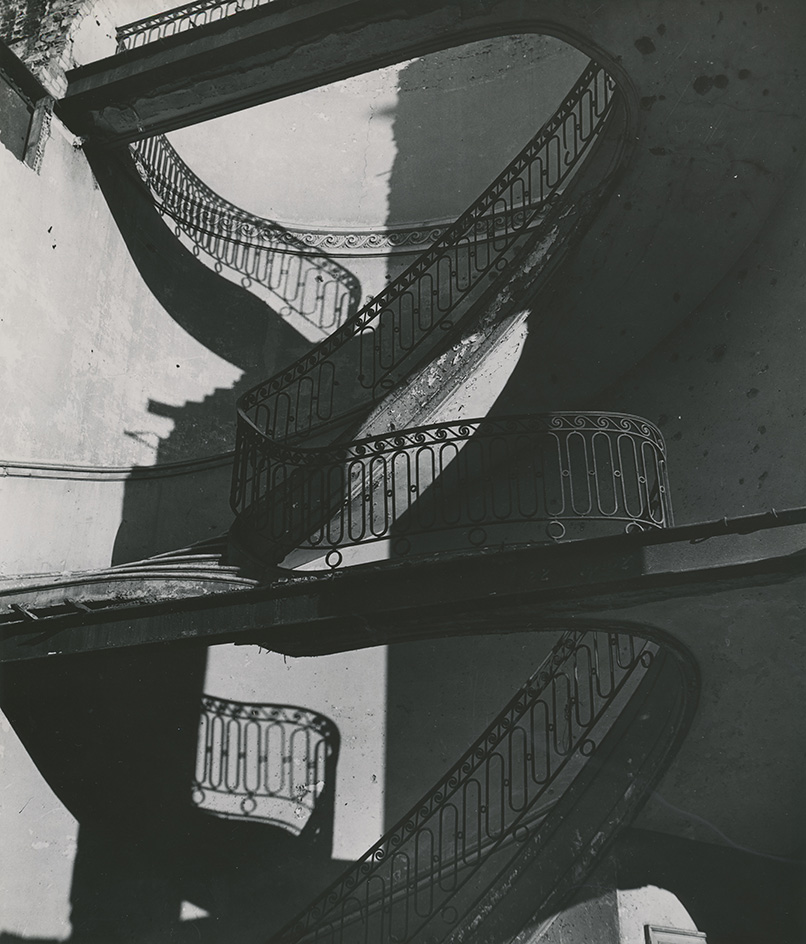
Known for his distinctive portraits and landscapes, British photographer Bill Brandt’s visual language has been hugely influential since the 1960s. Michael Hoppen Gallery in London is staging a solo exhibtion of his work, on view until 19 January 2019. German-born Brandt rose to prominence with his memorable series of distorted nudes as well as documenting the Underground bomb shelters of London during The Blitz in 1940. Collectors will be pleased to hear that some of these scarcely seen works are on offer, giving them ‘an opportunity to acquire masterpieces, which rarely come on the market’ says gallerist Michael Hoppen.
Pictured, Bombed Regency Staircase, c1942, by Bill Brandt. © Bill Brandt Archives. Courtesy of Michael Hoppen Gallery
Writer: Sophie Gladstone
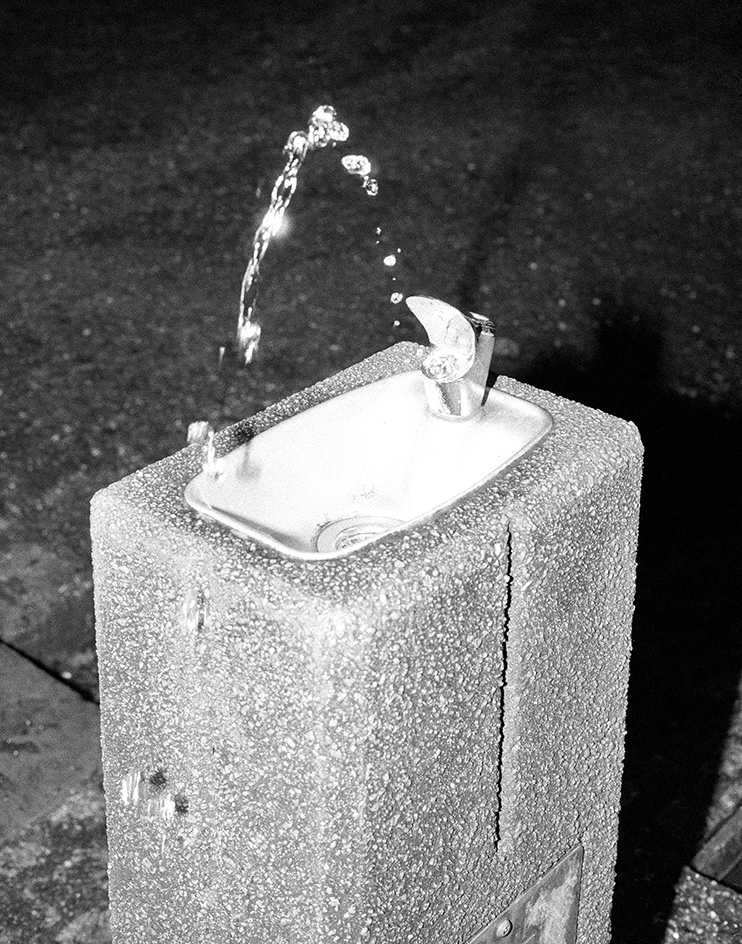
Photograd, a UK-based organisation with the aim of showcasing and supporting recent graduates, presents Photogram Open (15-29 November) at London’s Atrium Gallery. Work from 30 photographers who have graduated within the last three years gives insight into where the medium is heading. The wide range of subject matter is a testament to the quality and curiosity of these artists early in their careers, with everything from news reportage to digitally manipulations that push the boundaries of photography.
Pictured, Untitled, by Sara Fiorino
Writer: Sophie Gladstone
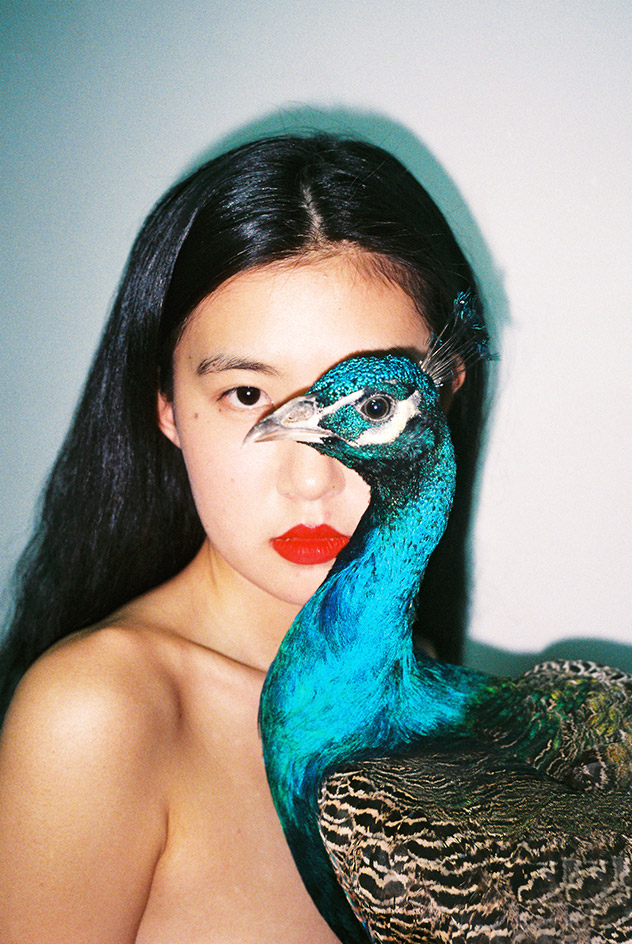
As part of this year‘s Homotopia Festival, the exhibition ‘Wake up Together’ (16 November 2018 – 17 February 2018) champions the right to freedom of love and identity expression at Liverpool’s Open Eye Gallery. Featuring Ren Hang’s moving poetry alongside his photographs, this is the first UK showing of a series by the late photographer. His work was fearless in its playful explorations of how our bodies interact with each other within urban, natural and domestic settings. Exhibited alongside this is an ongoing project by Robin Hammond’s, who is sharing moving stories and photos of those who live through this pervasive hostility.
Pictured, Untitled, 2016, by Ren Hang. Courtesy of Stieglitz
Writer: Sophie Gladstone
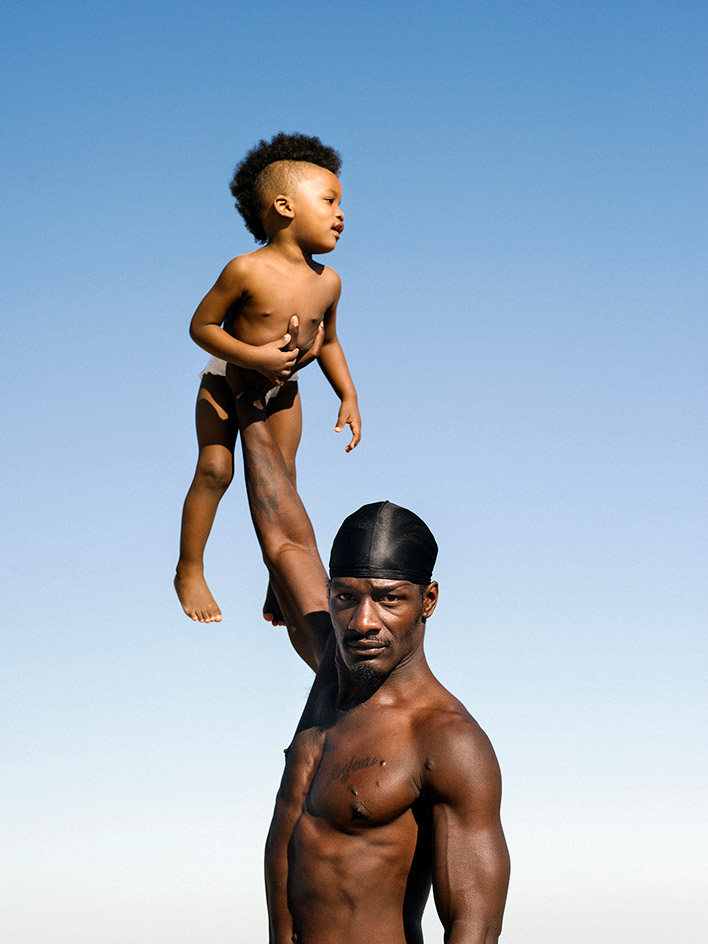
Coinciding with the relaunch of L’Uomo Vogue magazine, the work of over 20 contemporary photographers have been brought together for Photo Vogue Festival’s ‘All That Man Is – Fashion and Masculinity Now Is’ (15-18 November) exhibited at Base Milano gallery. Curated by Vogue Italia photography editor Chiara Bardelli Nonino, the pop-up show calls for inclusivity and a revaluation of pervasive and reductive gender stereotypes in which manliness is about exerting power over others. As awareness grows of the outdated models of masculinity, these portraits provide an alternative representation that carries no stigma for sensitivity or diversity in manhood.
Pictured, Untitled, by Mark Harman. © The artist
Writer: Sophie Gladstone
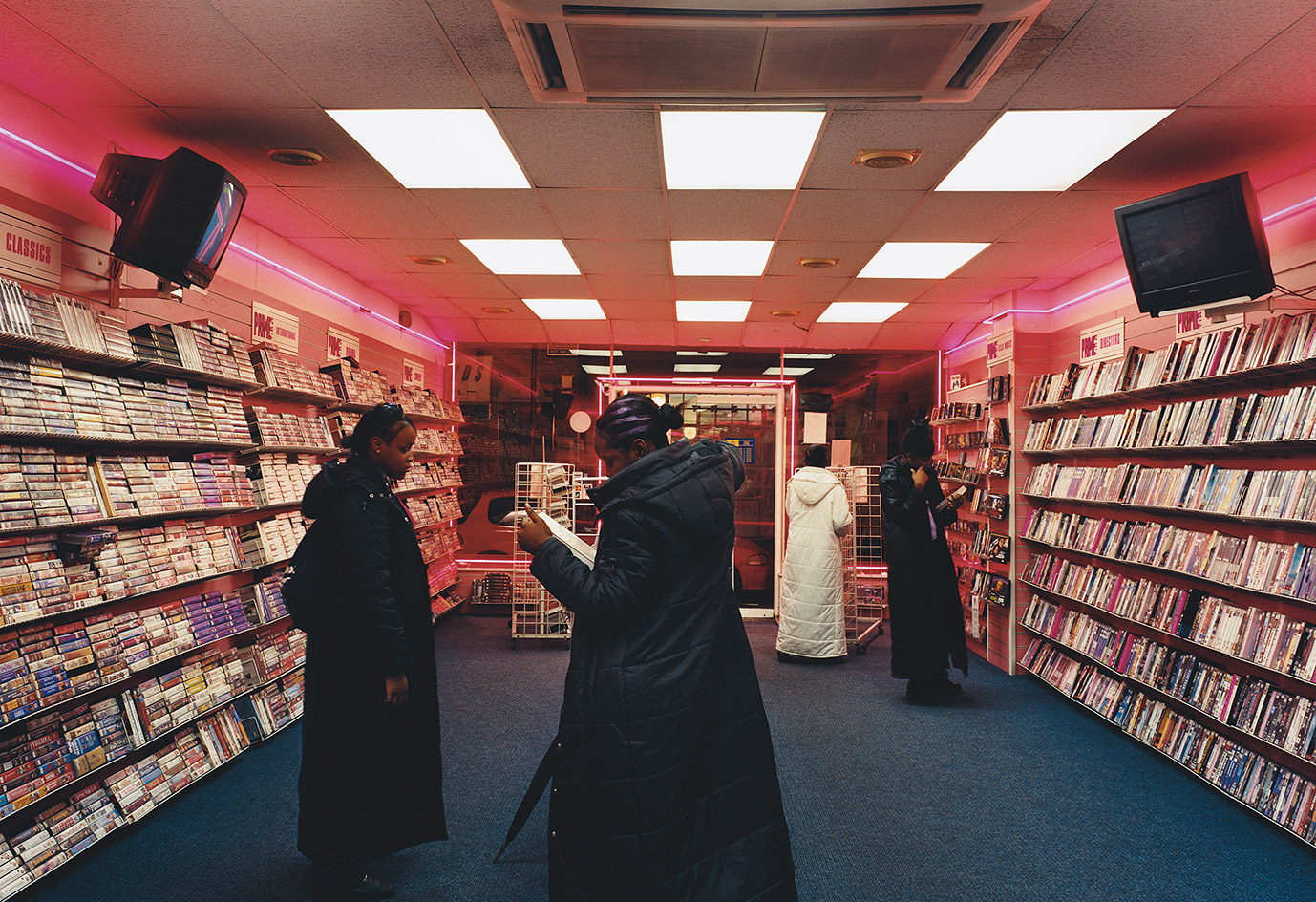
Belfast-born Hannah Starkey’s book Photographs 1997-2017 traces a 20-year-long probe into how visual culture has shaped what it means to be female. Spanning women of all generations, Starkey’s images offer the perspective of the flâneuse, a counterpoint to ‘the artistic tradition of the male flâneur’. Starkey’s staged images communicate moments of reflection, alienation and social interaction in womens’ everyday lives, making this book an influential touchstone for discussions on the female gaze. A biographical essay by curator and writer Charlotte Cotton and a candid conversation between the artist and the editor and writer Liz Jobey are included in the book.
Photographs 1997-2017, £40, published by MACK. Pictured, Untitled, January 2000, by Hannah Starkey. Courtesy of the artist and MACK
Writer: Sophie Gladstone
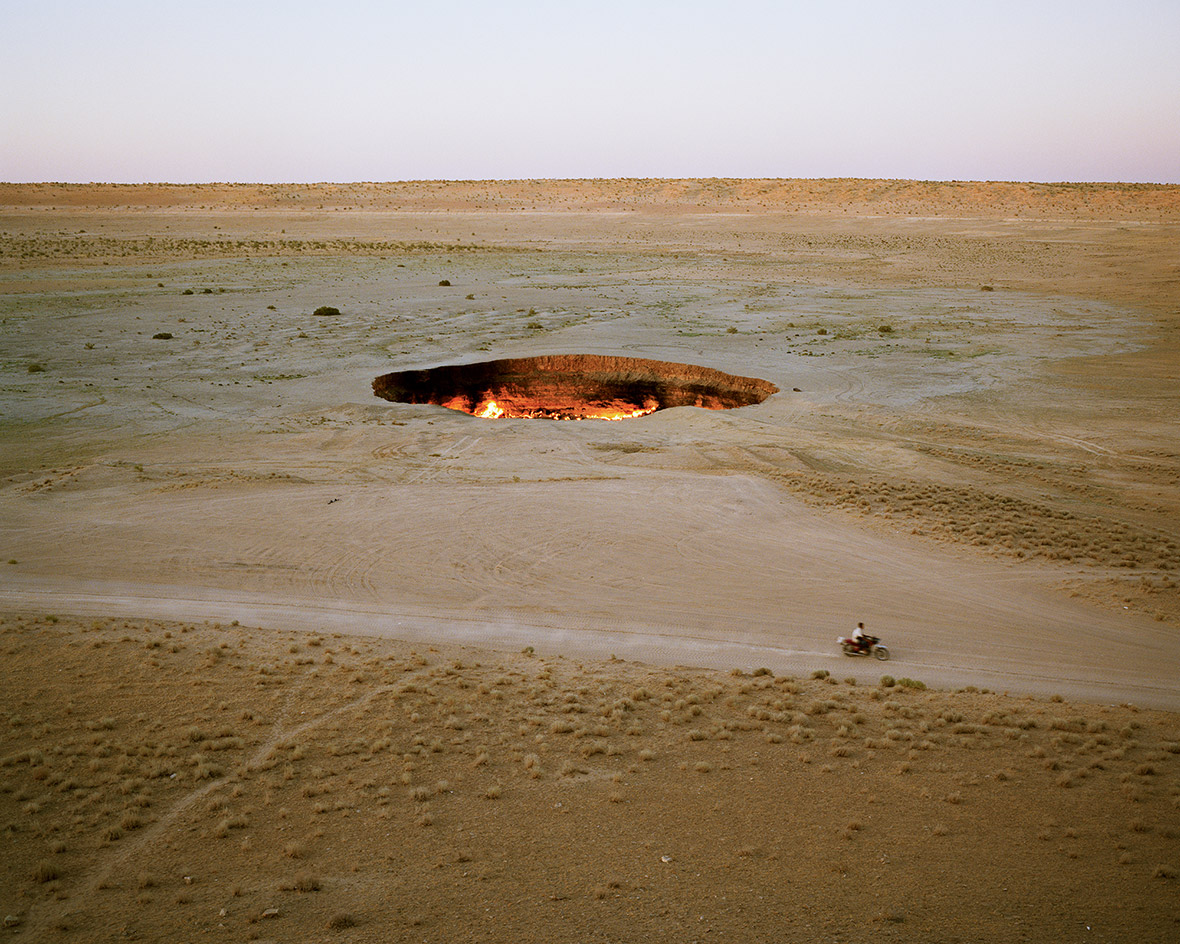
British photographer Chloe Dewe Mathews has recorded the valuable resources, contested geopolitics and cultural identities of The Caspian Sea – a gargantuan inland body of water that has shores in Kazakhstan, Azerbaijan, Turkmenistan, Russia, and Iran. Shot over five years, Caspian: The Elements comprises three photographic essays – ‘Oil, Gas, Fire’, ‘Rock, Salt, Uranium’, and ‘Water’. Enigmatic portraits and landscapes follow a piece of thoughtful writing in each section. Dewe Mathews’ book, published with Aperture and Peabody Press, comes at a potent time as our understanding grows of how reliant and unsustainably our modern lives have become on oil. It is possible that these images will become a record of the huge loss of a richly biodiverse area. The series is is on view at Aperture Gallery in New York from 25 October – 30 November.
Writer: Sophie Gladstone
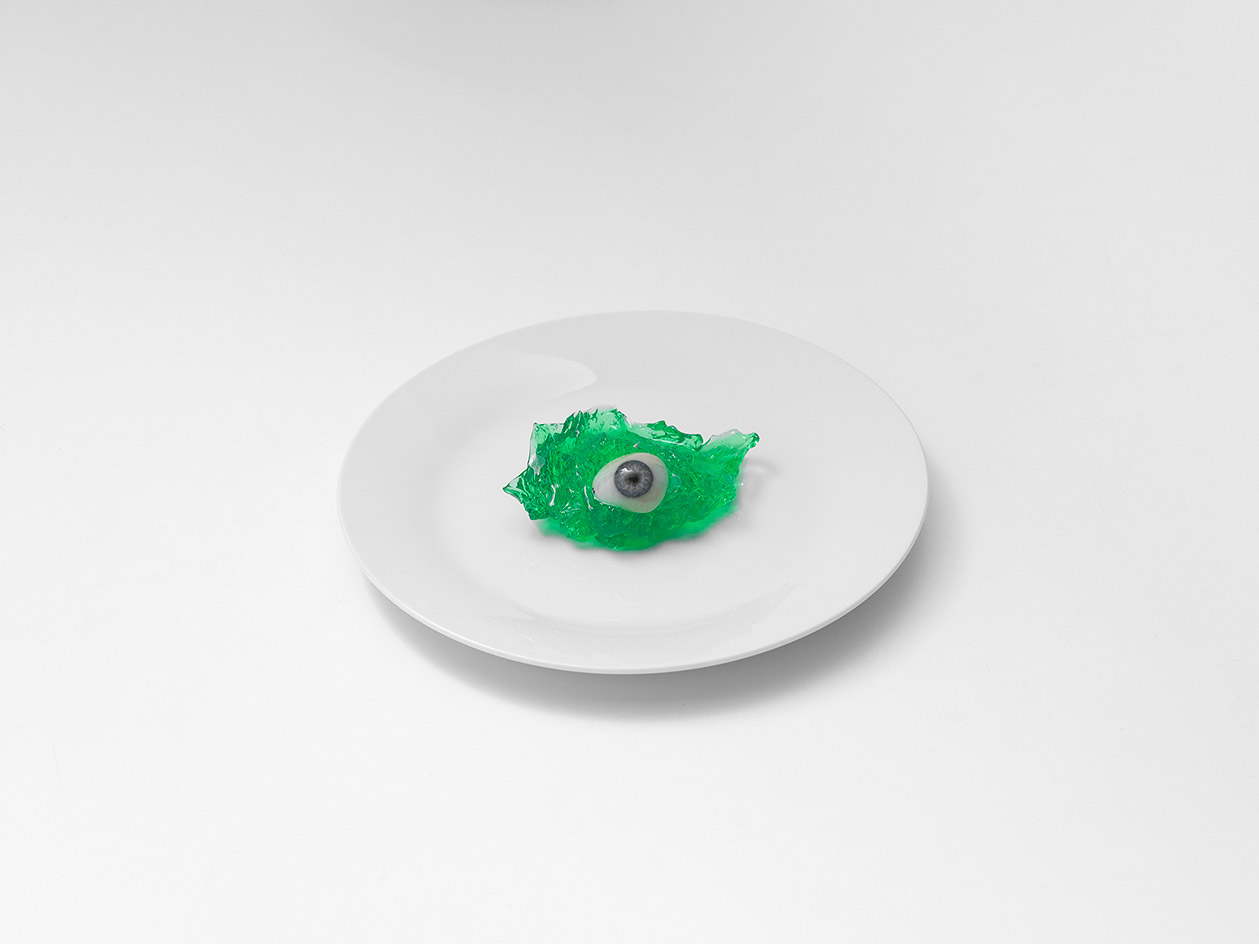
Photographer Brian Griffin was inspired to produce SPUD! during a residency at Labanque arts centre in northern France, located near one of the largest potato production plants in Europe and also where British and Commonwealth soldiers were posted during the First World War. Griffin builds on the dream of pre-industrial and pre-war landscape, alongside an absurd reality where the world’s most popular vegetable grows in soil rich with casualties of war. The surreal and unconventional body of work is on show at London’s MMX Gallery until 8 December.
Pictured, Glass Eye on White Plate, London, 2017, by Brian Griffin. © The artist
Writer: Sophie Gladstone
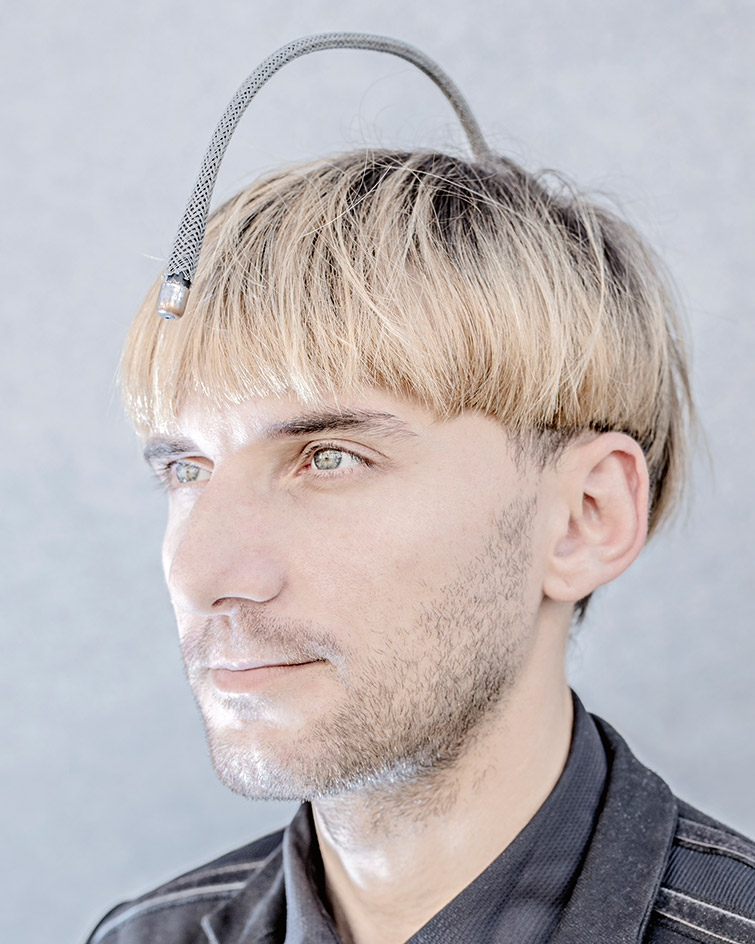
A world of artificial limbs, exoskeletons, implants, neuroprosthetics, Quantified Self gadgets, nootropics, dietary supplements, anti-ageing, biopower, body hacking, genetic engineering and body preservation come together in Swiss photographer Matthieu Gafsou’s book Transhumanism(s), published by Keher Verlag. Documenting the growing movement of Transhumanism (abbreviated as H+) and its desire to expand human intellect and physiology with advanced technology, the series is a look beyond the natural boundaries of the self. Through a mixture of a documentary and allegorical approach Gafsou presents an equally exciting and uneasy exploration of these advances.
Transhumanism(s), €39.90, published by Keher Verlag
Writer: Sophie Gladstone
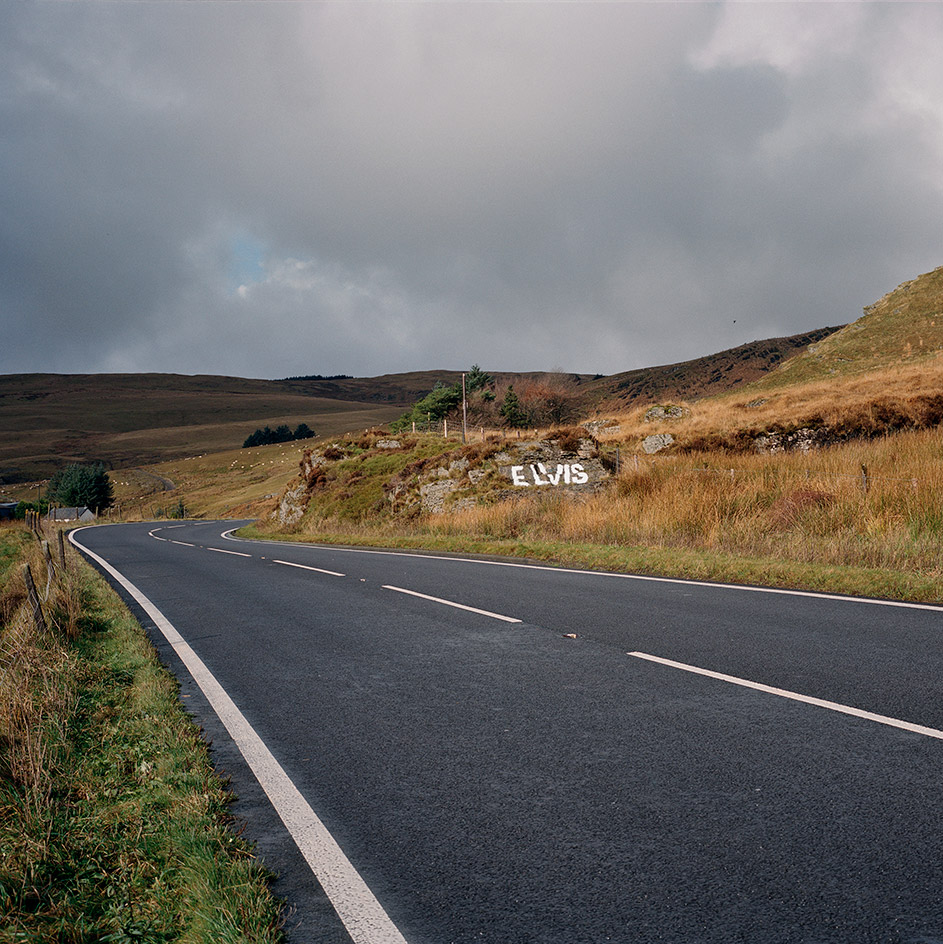
The cult of Elvis is explored by Wales-based photographer Clémentine Schneidermann in ‘I Called Her Lisa Marie + Bonus Track’ (24 October – 3 November), on show at London gallery Sion and Moore. Schneidermann’s empathetic photographs focus on working class towns in southern Wales, particularly Porthcawl, which proclaims to be the site of the largest Elvis festival in the world. The French-born artist also follows a young boy from Wigan by the name of John-Paul who, with his mother and grandmother, travels to Memphis to perform as an Elvis tribute artist under the stage name Johnny B Goode. Schneidermann’s work deals with the human experience of striving for a dream and shared passions within communities.
Pictured, The Elvis Rock, A44 near Powys, Wales, 2017, by Clémentine Schneidermann. © The artist. Xourtesy of Sion and Moore
Writer: Sophie Gladstone
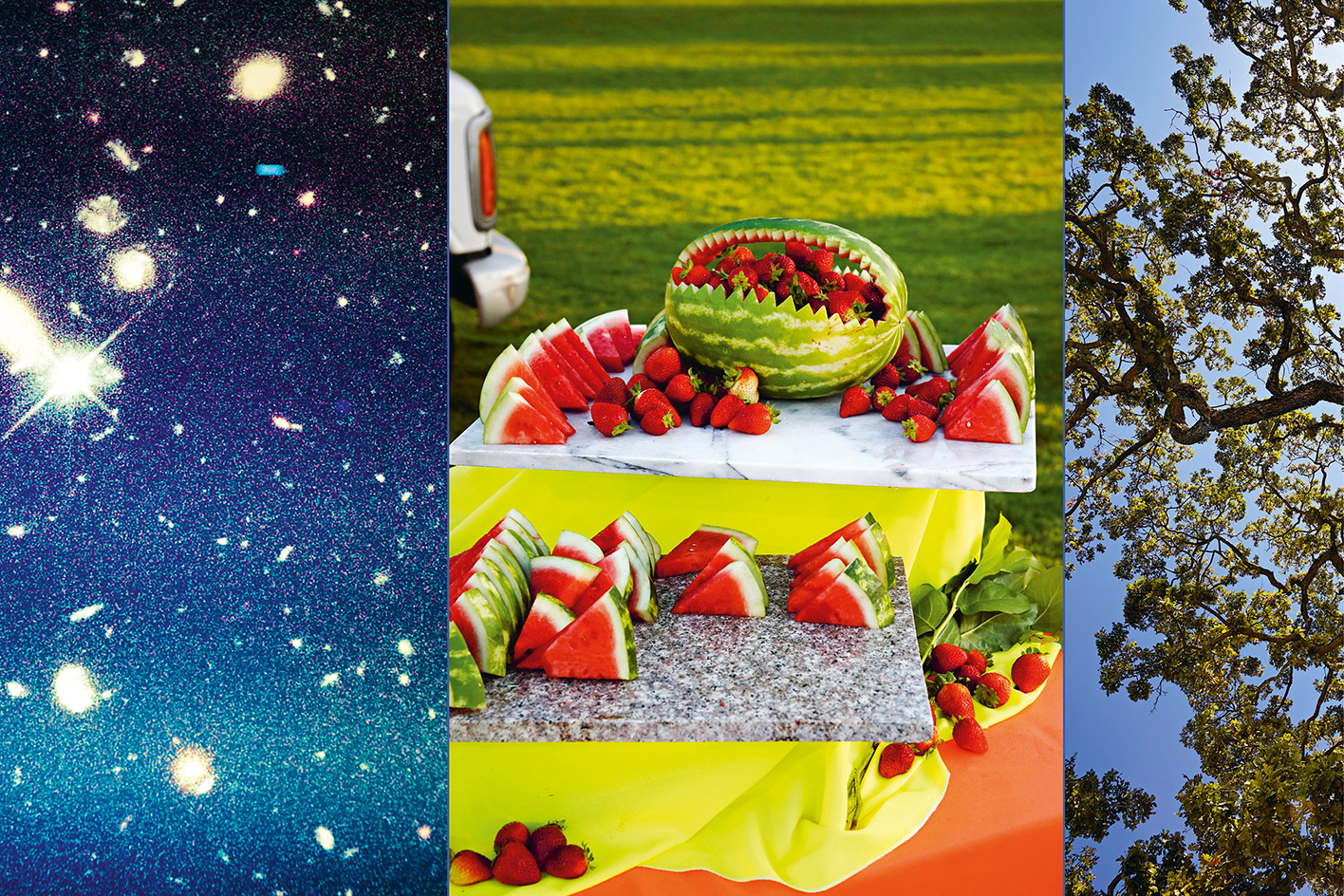
French artists Mazzacio and Drowilal’s new book The Happiness Project is a vibrant and witty journey through Silicon Valley. The duo merge elements of art history and digital culture in collage-like still lifes (or ‘contemporary vanitas’, as they describe them). Californian ideals of health, wellbeing and new ageism are intercut with images of everyday objects, technology ephermera and office desktops.
The Happiness Project, €30, published by RVB Books
Writer: Sophie Gladstone
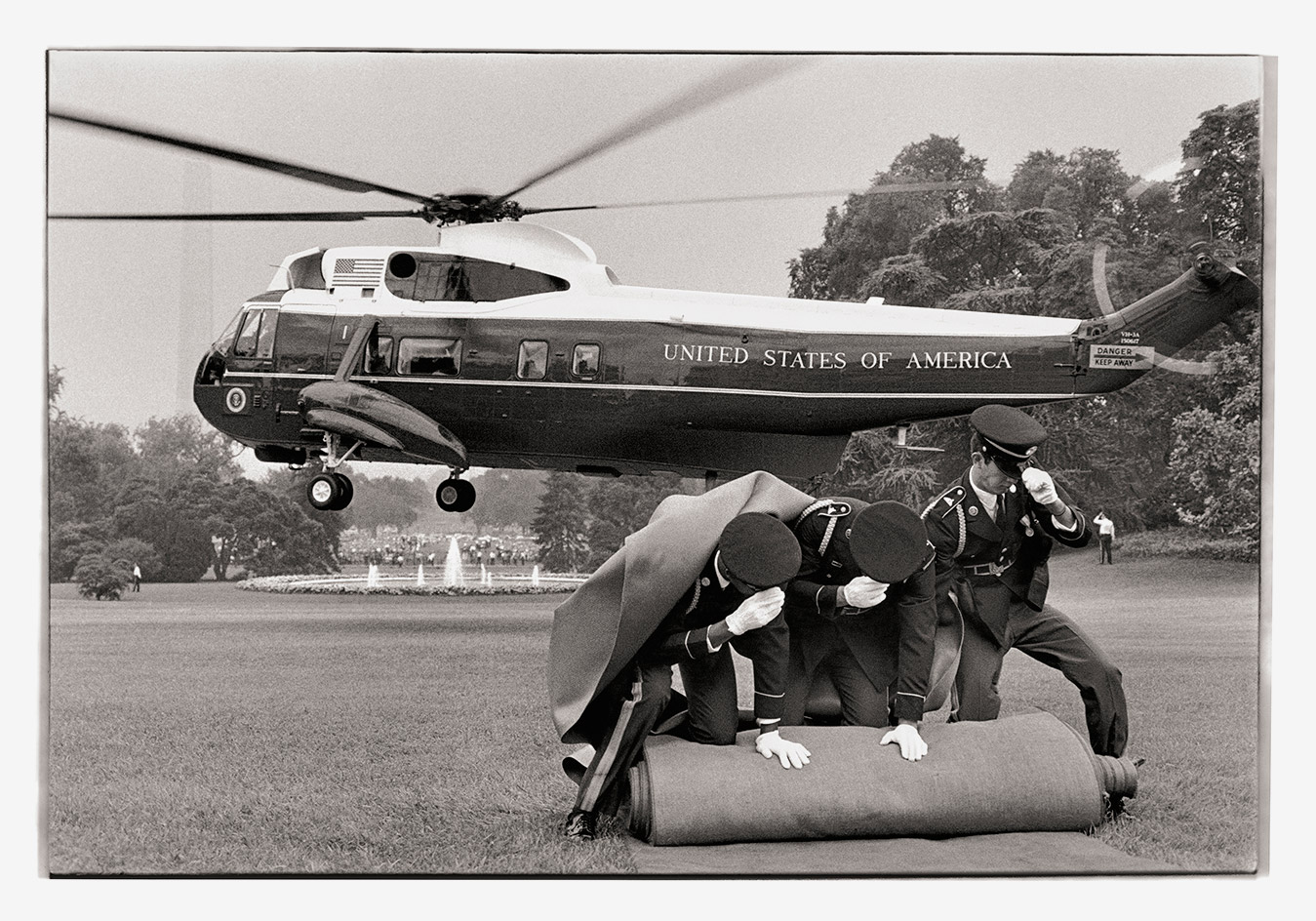
Annie Leibovitz: The Early Years, 1970–1983, published by Taschen, returns to Leibovitz’s origins. Personally curated by the photographer, the book contains Polaroids and contact sheets, bringing to life an important time of political, cultural and counter-cultural development. The pages are filled with the famous and familiar faces of Muhammad Ali, Ken Kesey, Patti Smith, and Debbie Harry, as well as John Lennon and Yoko Ono’s famed embrace only hours before his assassination. Military figures and politicians of the time are recorded too, with the same reverence Leibovitz extends to her famous subjects.
Annie Leibovitz: The Early Years, 1970–1983, £40, published by Taschen. Pictured, President Richard Nixon’s resignation, Washington, D.C., August 8, 1974, by Annie Leibovitz. © Annie Leibovitz
Writer: Sophie Gladstone
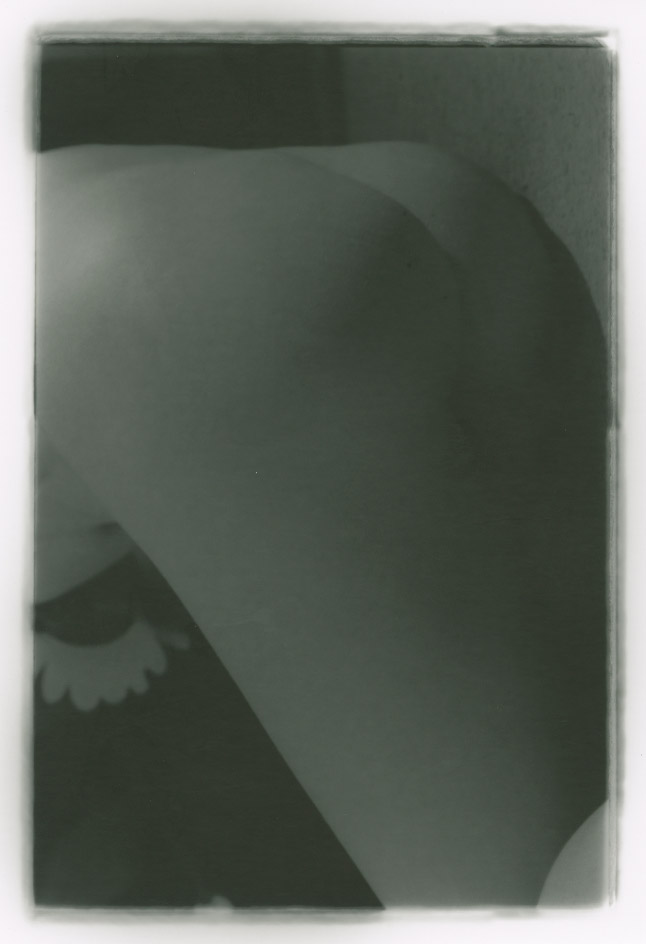
For one night only on 18 October, non-profit feminist organisation Women in Fashion is staging an exhibition of photography, poetry and drawing in partnership with Rapid Eye in Hackney, London. Curated by Women in Fashion founder Daisy Walker, the exhibition brings together a community of artists who make work at Rapid Eye and focuses on deepening our understanding of what being a woman means. Artists showing include Lea Colombo, Beatriz Maues, Agnes Costa, Lily Vetch, Katy Vetch, Laura Jane Coulson, Alexandria Coe, Alice Joiner, among others.
Pictured, Self-portrait, by Daisy Walker
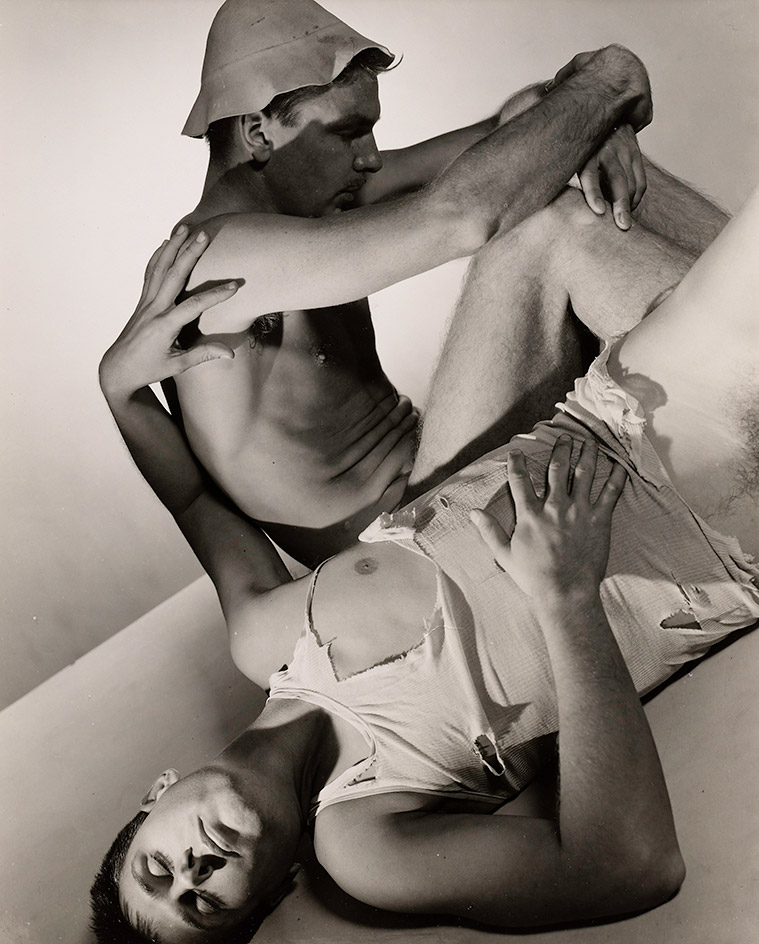
The creative output of more than 40 artist couples goes on view at the Barbican Art Gallery exhibition ‘Modern Couples: Art, Intimacy and the Avant-garde’ (10 October 2018 – 27 January 2019). The London show offers insight into partnerships between artists, architects, designers, writers, and musicians, including Lee Miller and Man Ray, Dora Maar and Pablo Picasso, and Federico García Lorca and Salvador Dalí. Through personal photographs, love letters, gifts and more, visitors can immerse themselves in these multi-faceted relationships – conventional and obsessive, loving and painful, fleeting or life-long. More interesting still, is the way the show challenges the notion that the history of art consists mostly of lone male geniuses.
Pictured, Paul Cadmus and Jared French, 1937, by George Platt Lynes. © 2018 Estate of George Platt Lynes, Courtesy of Soloman R Guggenheim Museum, New York
Writer: Sophie Gladstone
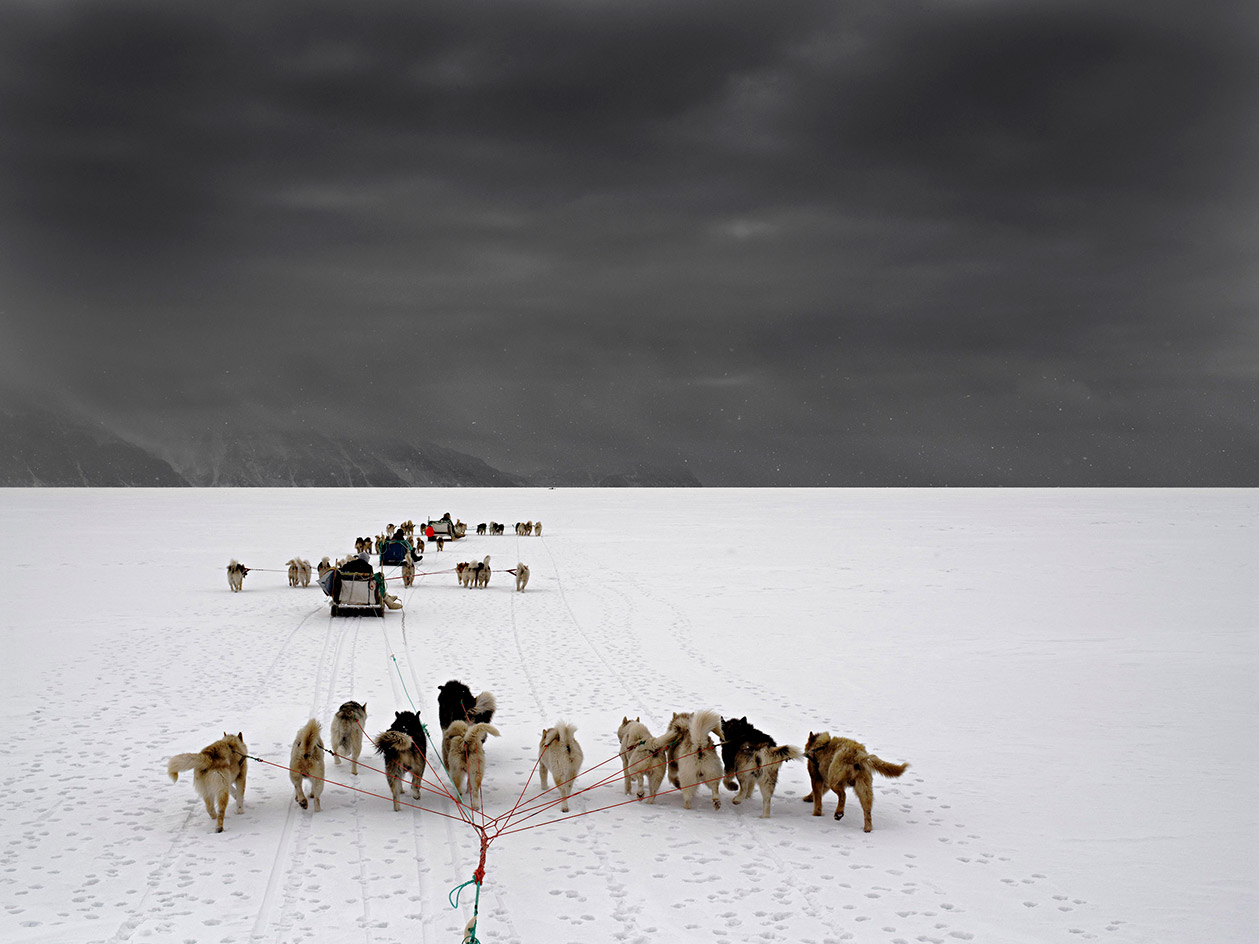
After spending months at what has been considered the edge of the world, Danish photographer Henrik Saxgren has produced a book documenting life for hunters in Thule, the northernmost point of Greenland. Thule has roots in mythology as ‘the last land’, a potent name for the home of what is likely the last generation of hunters on the Arctic ice pack. Saxgren’s photographs describe life in northern Greenland as a constant dance between nature and the hunters, ultimately bringing into sharp relief how rapidly this land and way of life is disappearing.
Ultima Thule, €78, published by Hatje Cantz. Pictured, Heading for hunt. Hvalsund. May 2015, by Henrik Saxgren. © The artist
Writer: Sophie Gladstone
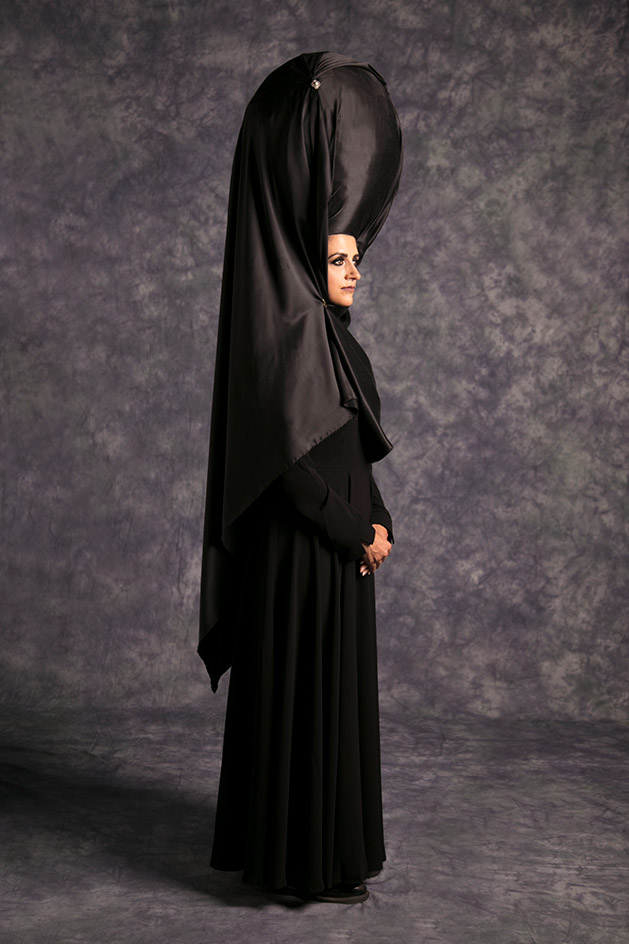
Drawing together themes of love, life, religion, home and working life, ‘Human Stories: Another England’ (10 October – 11 November) at London’s Now Gallery presents a survey of contemporary and historical narratives of black and asian heritage in England from the past 100 years. Rare archival photography and ephemera, alongside newly commissioned works, interrogate past and present concepts of migration, multiculturalism and racism. Curated by Kaia Charles and Tamsin Silvey from Historic England, the exhibition gives a platform to underrepresented perspectives while opening up honest conversations.
Pictured, Self-Portrait with Hijab, by Sarah Maple. Courtesy of Now Gallery
Writer: Sophie Gladstone
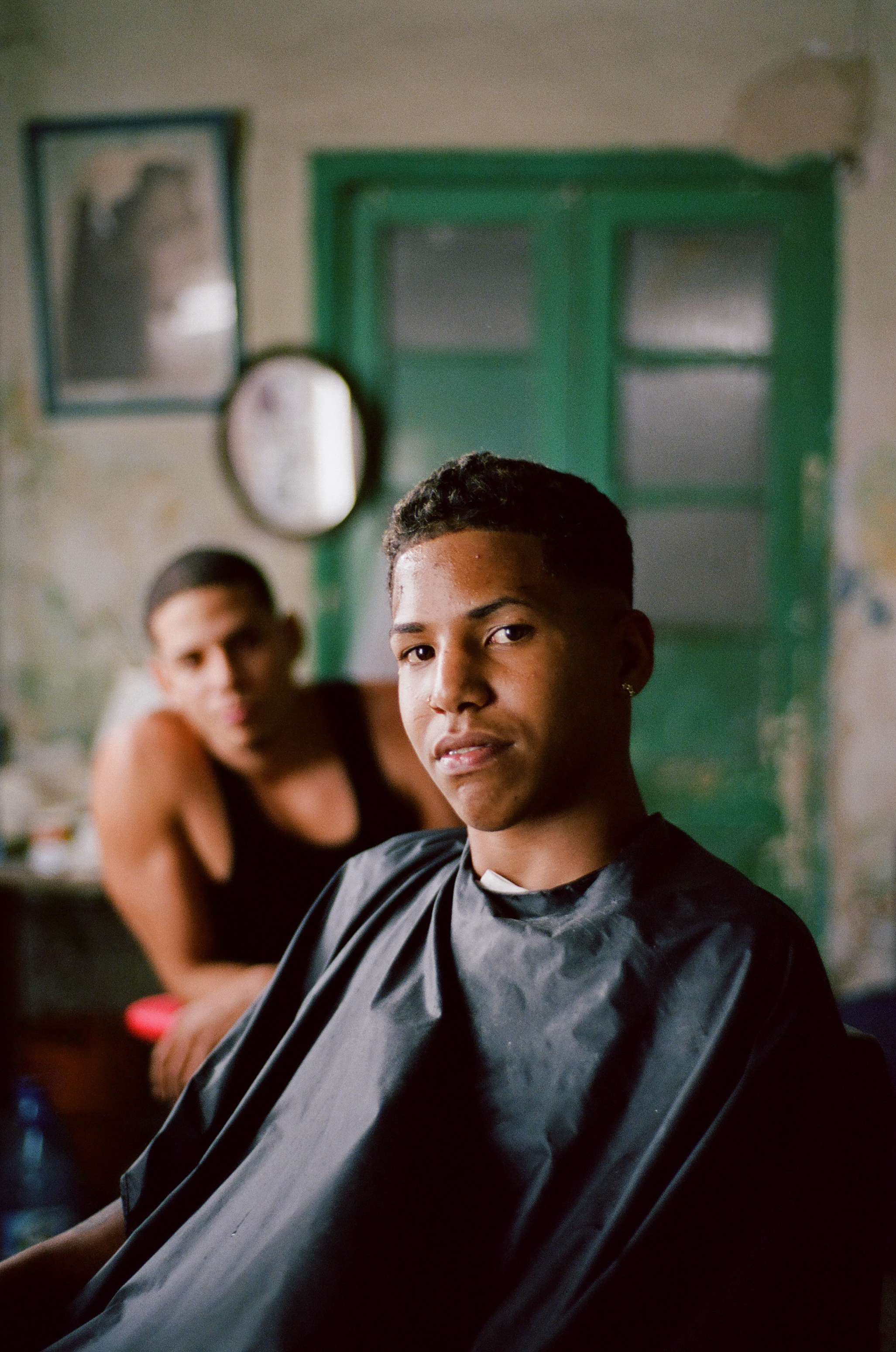
Havana is known for its old world charm but Joshua Osborne’s ‘Habanaboy’ – on show in Paul Smith’s Amsterdam store until 21 October – sheds light on the city’s male subcultures and their vibrancy, optimism and anger. In a city often defined by politics, Osborne’s portraits offer a refreshing insight into the diverse personalities of its youth. The work comes alive in a colourful zine interjected with quotes from the subjects in graphic typography.
Pictured, Untitled, by Joshua Osborne, from the series Habanaboy
Writer: Sophie Gladstone
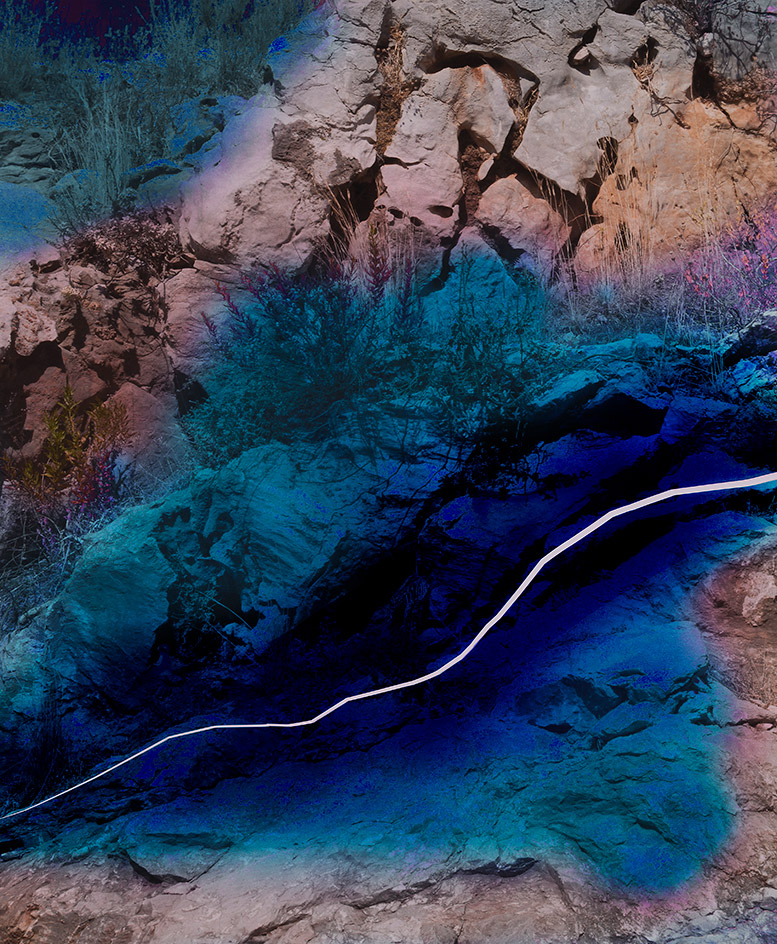
Balancing digital and analogue methods with conceptual rigour, artist Douglas Mandry is delving into photographic theory for his exhibition ‘Equivalences’ (4 October – 17 November) at Zurich’s Bildhalle. Mandry is not drawn to the autobiographical or documentary potentials of photography; rather his interventions explore the gap between reality and representation. ‘Equivalences’ brings together three bodies of Mandry’s work: Territorial Shift expands the medium’s technical boundaries, focusing on the creation of the photograph instead of its consumption; Monuments combines ideas of time with materiality in the digital era; and Unseen Sights is an ongoing project centred on time and change in the digital age. A coinciding limited-edition book (€50) is being published by RVB Books.
Pictured, Roc Surface II, 2018, by Douglas Mandry, from the series Unseen Sights, acrylic on c-print. © The artist
Writer: Sophie Gladstone
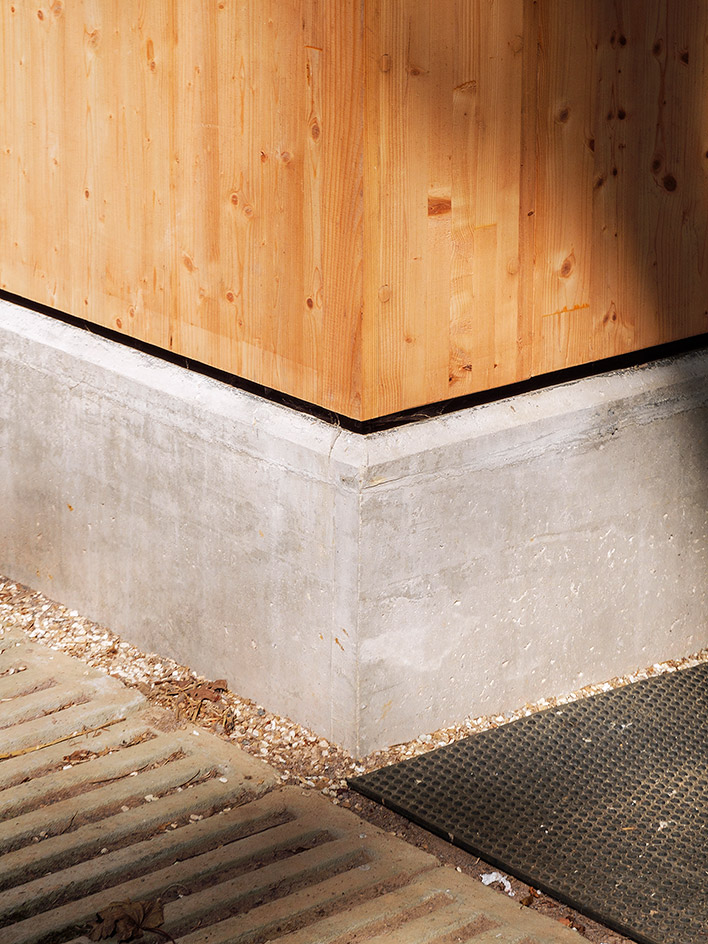
The subtle background details and architectural gestures of The Drawing Matter Archive at the working Shatwell Farm in Somerset, UK, are thoughtfully considered in Footnotes, backgrounds, sheds, published by Perimeter Editions. The Archive’s architect, Hugh Strange, Norwegian-Australian photographer Max Creasy, and Swedish academic, architect and writer Elizabeth Hatz come together for a three-way conversation on the building and the collection it houses as well as its relationship to the surrounding farm, offering insight into the layers of built form.
Footnotes, backgrounds, sheds: the drawing matter archive by Hugh Strange, €22.70, published by Perimeter Editions. Photography: Max Creasy
Writer: Sophie Gladstone
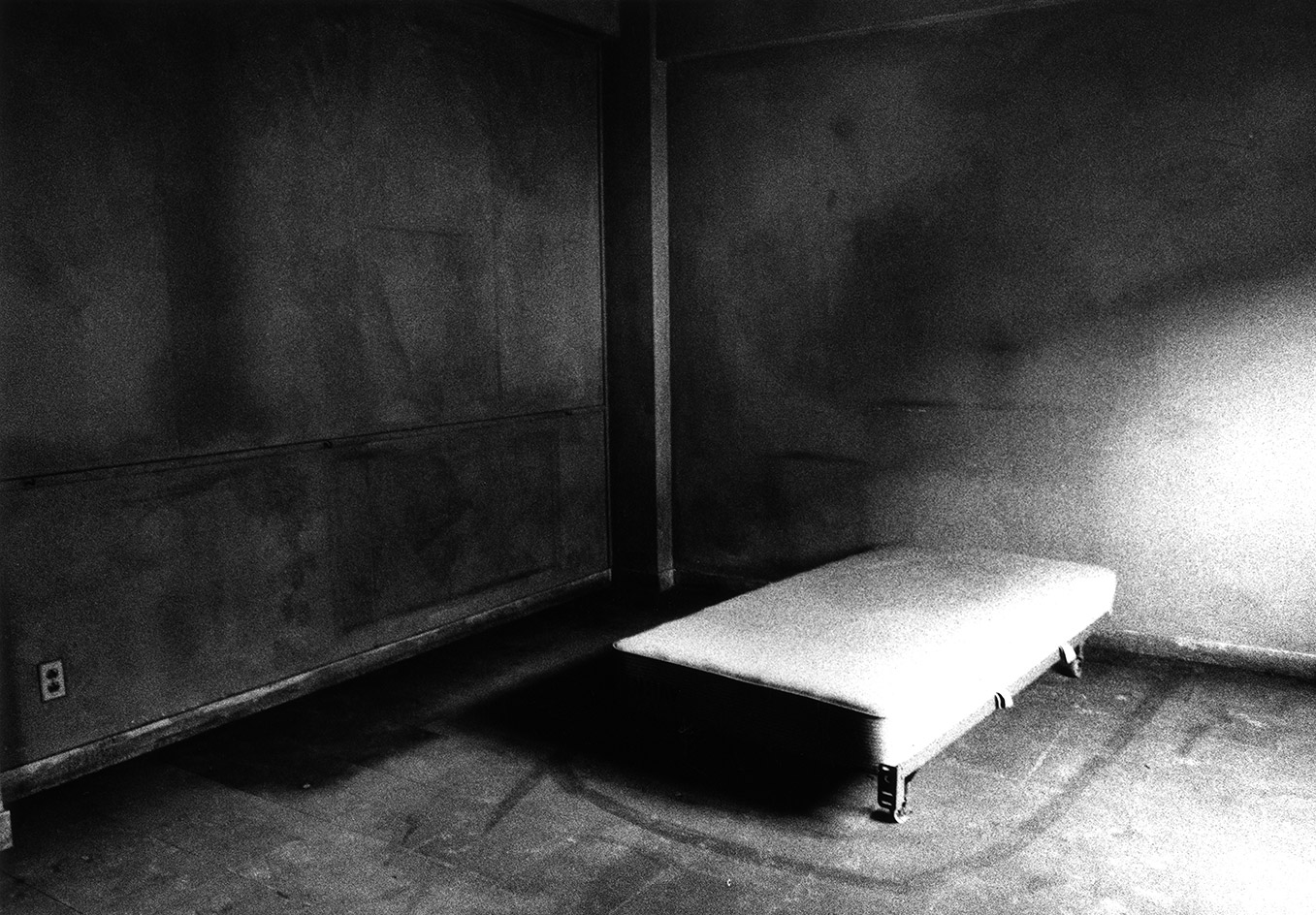
Early works of renowned Japanese photographer Ishiuchi Miyako are being exhibited by Michael Hoppen Gallery’s inaugural booth at Frieze Masters (4-7 October) in London. Ishiuchi has long focused on the personal and political traces left behind as time passes, the effect on the human body, clothing with remnants of the atomic bombing of Hiroshima, and traces of the American naval presence in Japan. The physical process of printmaking is essential to Ishiuchi’s work – after setting up a darkroom in her home and learning through experimentation, she formed the recognisable grain structure of her prints by underexposing then overdeveloping (or pushing) them.
Pictured, Bayside Courts #53, 1988-1999, by Ishiuchi Miyako, vintage silver gelatin print. © Ishiuchi Miyako. Courtesy of Michael Hoppen Gallery
Writer: Sophie Gladstone
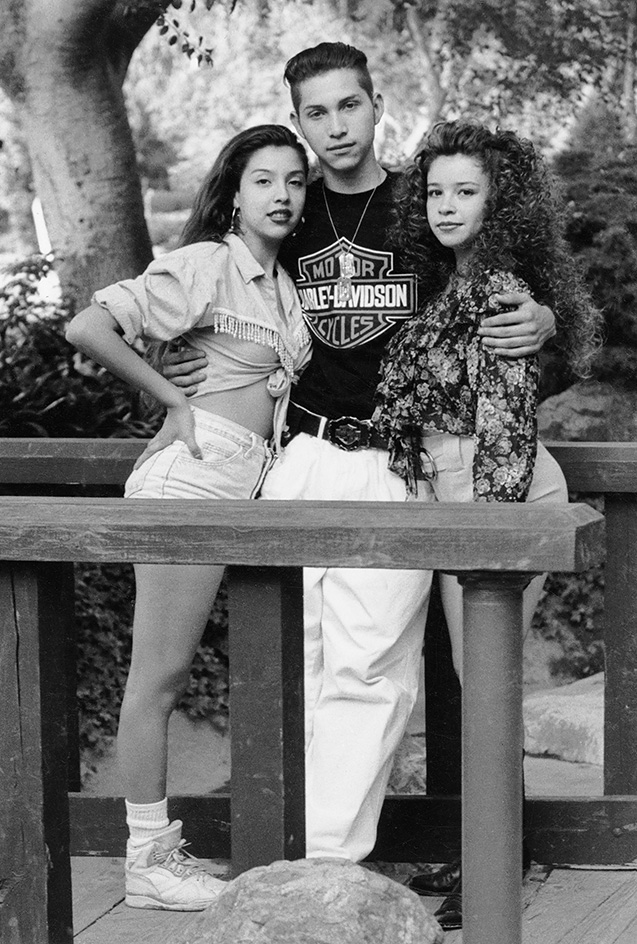
Latinx culture and community in 1990s Los Angeles is being toasted by Guadelupe Rosales in ‘Legends Never Die, A Collective Memory’, on view at Aperture in New York until 20 October (the project also features in the Fall 2018 issue of the foundation‘s magazine). Rosales displays vernacular archival material drawn from her Instagram accounts (@veteranas_and_rucas and @map_pointz), such as photographs of loved up Chicanx couples and the party crews that ran East LA’s rave scene. These come together to tell us a story of Latinx youth that runs counter to the sometimes misguided perception of the history of brown youth.
Pictured, Booker and friends, 1992, photographer unknown. Courtesy of Guadelupe Rosales and Eileen Torres
Writer: Sophie Gladstone
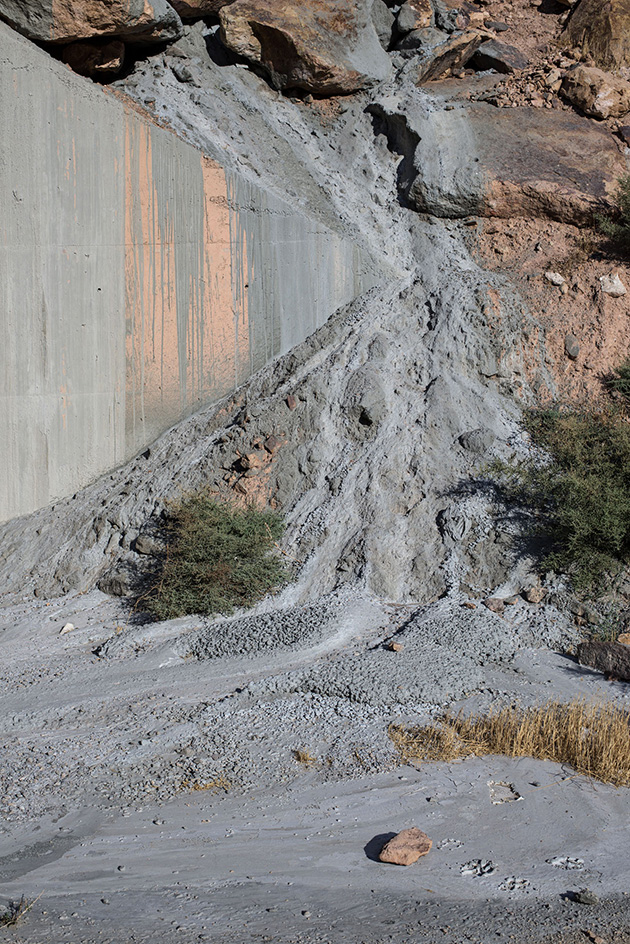
To deal with the pain of her cancer, Shahrzad Darafsheh has chronicled her sickness in a limited-edition book, Half-Light. Darafsheh sees the need for more openness and knowledge of our bodies, particularly for women. The pages of varying opacity are evocative of skin; its scars and fragilities and are sequenced to read differently depending on whether you are a reading in English or Farsi, from the left or the right. The bilingual book is an exploration of narrative that gives sensitive insight into life in a country many will be naive to, alongside a window into the experience of a life-altering disease.
Shahrzad Darafsheh: Half-Light, $38, published by Gnomic Book
Writer: Sophie Gladstone
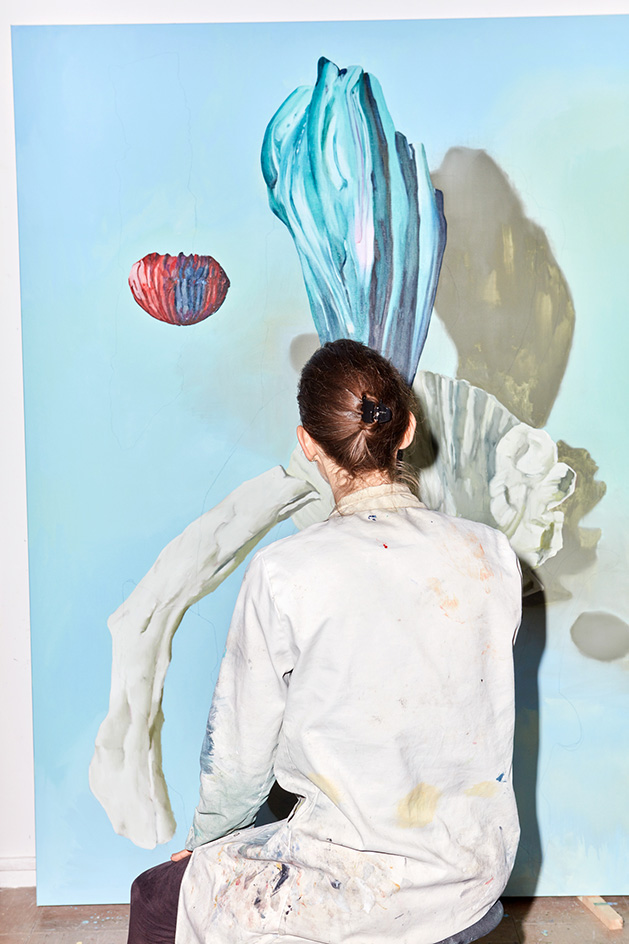
Vincent Ferrané's latest book Visitor provides an enigmatic documentation of the studios of 17 Parisian female artists. Although things have improved since Linda Nochlin’s 1971 essay Why Have There Been No Great Women Artists? (a point of reference for Ferrané) the art world is still disproportionately weighted in men’s favour. The title of the book emphasises the presence of Ferrané as a welcome stranger in a universe that is not his own, from which he brings back images that evidence the complexities and commitment present in artists studios, spaces in which gender can be incidental, secondary or central to the art.
Pictured, Maude Maris, by Vincent Ferrané. Visitor, €45, published by Libraryman
Writer: Sophie Gladstone
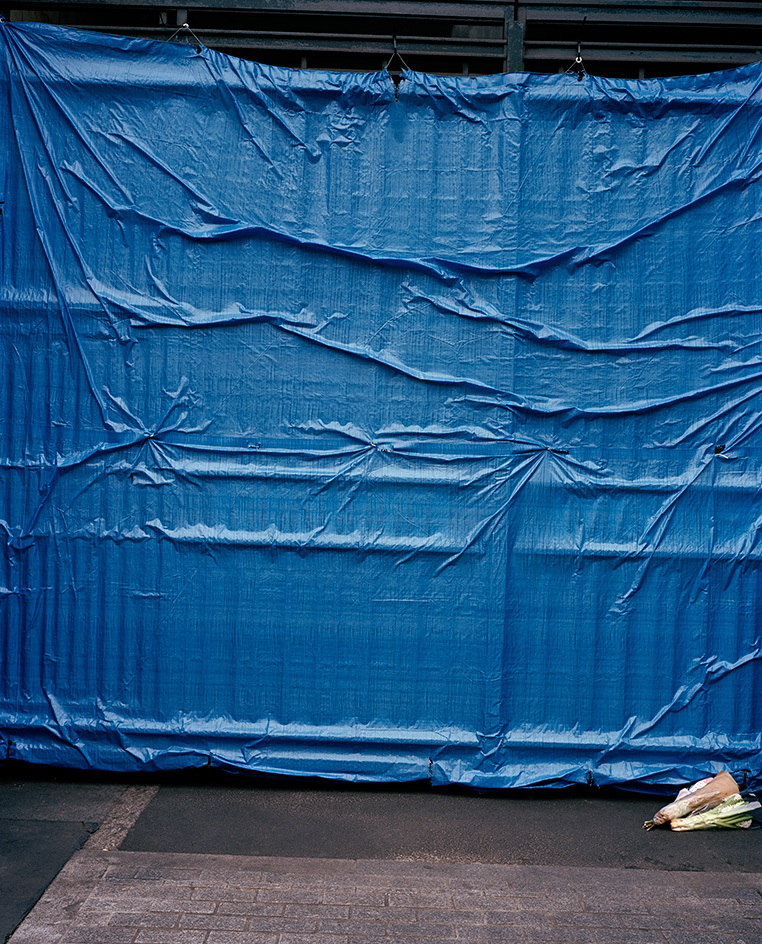
For its eighth edition, Brighton Photo Biennial (28 September – 28 October) focuses on the UK’s relationship with Europe as it experiences momentous geopolitical change, a time of both connection and separation for the nation as an island. Curated by Photoworks director Shoair Mavilan, the festival delves into the uncertainty faced by this ‘new’ Europe, exploring photography’s connection to forming national identity and the refugee crisis. Artists include Heather Agyepong, Bill Brandt, Tereza Červeňová, the Cross Channel Photographic Mission, Aikaterini Gegisian, Uta Kögelsberger, Émeric Lhuisset, Robin Maddock, Hrair Sarkissian, Harley Weir and Donovan Wylie.
Pictured, Borough Market, London; 8th June, 2017, by Tereza Červeňová, from the series June 2016-18. © The artist
Writer: Sophie Gladstone
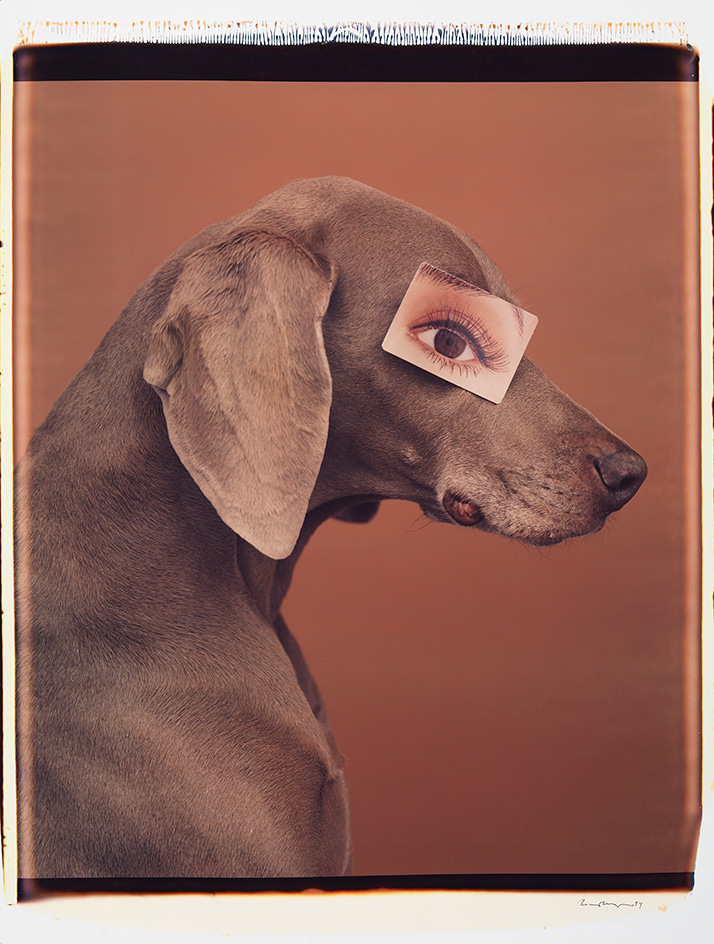
American artist William Wegman is best known for his collaboration with his Weimaraners, exploring themes of abstraction, surrealism, cubism, colour theory and anthropomorphism in his witty photographs. Wegman’s canine muses play elegant yet playful roles in these recently discovered Polaroids, which are being shown in the UK for the first time. A select group of unique 20 x 24 Polaroid prints from the series is on view at London gallery Huxley-Parlour from 26 September - 20 October.
Pictured, Eyewear II, 1994, by William Wegman. © William Wegman. Courtesy of Huxley-Parlour Gallery
Writer: Sophie Gladstone
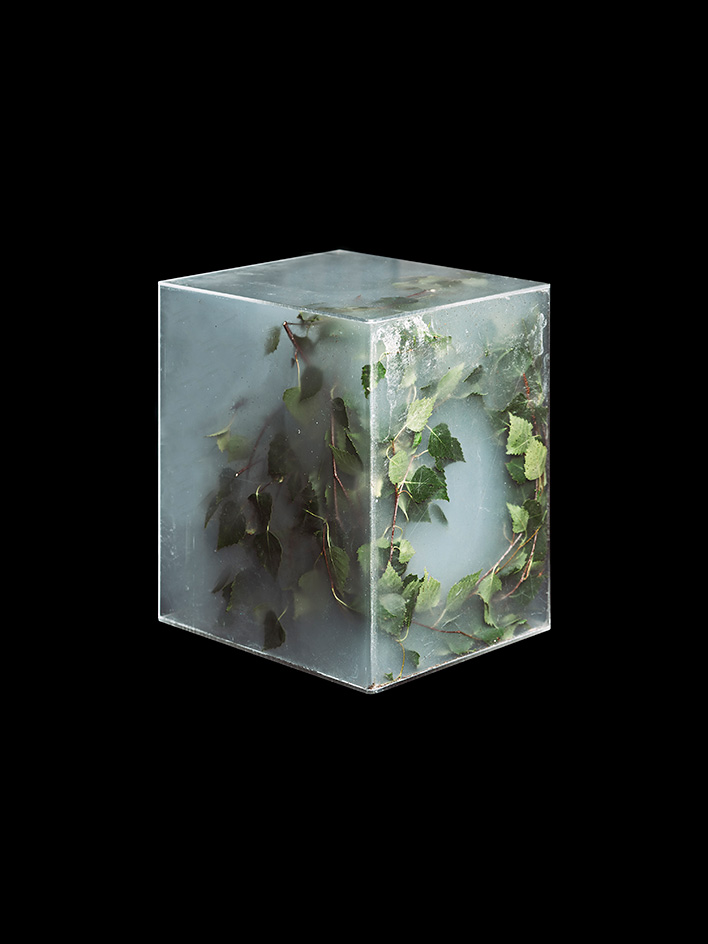
For the past two months, the finalists of ING Unseen Talent Award have been mentored by acclaimed multidisciplinary artist Isaac Julien to create work on the theme ‘New Horizons’, exploring the promise and perils of the future. Now, Jaakko Kahilaniemi has been announced as the winner of the Jury Prize, for his project Nature Like Capital, which plays with the complex and contradictory relationship between humans and nature, in an attempt to make peace of the conflict. Alexey Shylk, meanwhile, was won the public vote for his project that imagines how we could repurpose objects in the post-environmental crisis.
Pictured, Tropospherical Forecast, 2018, by Jaakko Kahilaniemi. © The artist
Writer: Sophie Gladstone
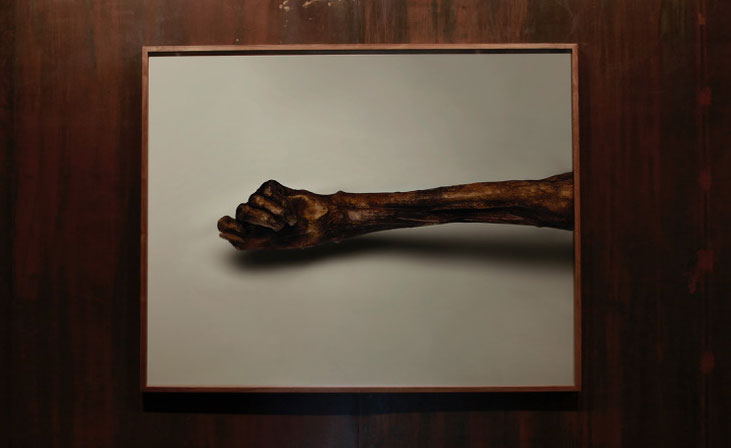
Italian artist (and longtime Wallpaper* collaborator) Brigitte Niedermair is showing photographic works of Europe’s oldest known natural human mummy Ötzi (or the ‘Ice Man’), famously found in the Ötztal Alps in 1991. Presented at Castel Tirolo in Italy (21 September – 9 December) and titled ‘Eccehomo’ – which roughly translates as ‘behold the man’ in Ecclesiastical Latin – the exhibition closely focuses on the body as both a temple of memory, and a biographical code. In these haunting works, the skin is a visceral and tactile symbol for life lived, and life remembered, made more potent by the body’s remarkably well-preserved nature, appearing to be frozen in time. Discover more of Niedermair’s photographic work in our September issue.
Pictured, installation view of ‘Eccehomo’, 2018, by Brigitte Niedermair
Writer: Sophie Gladstone
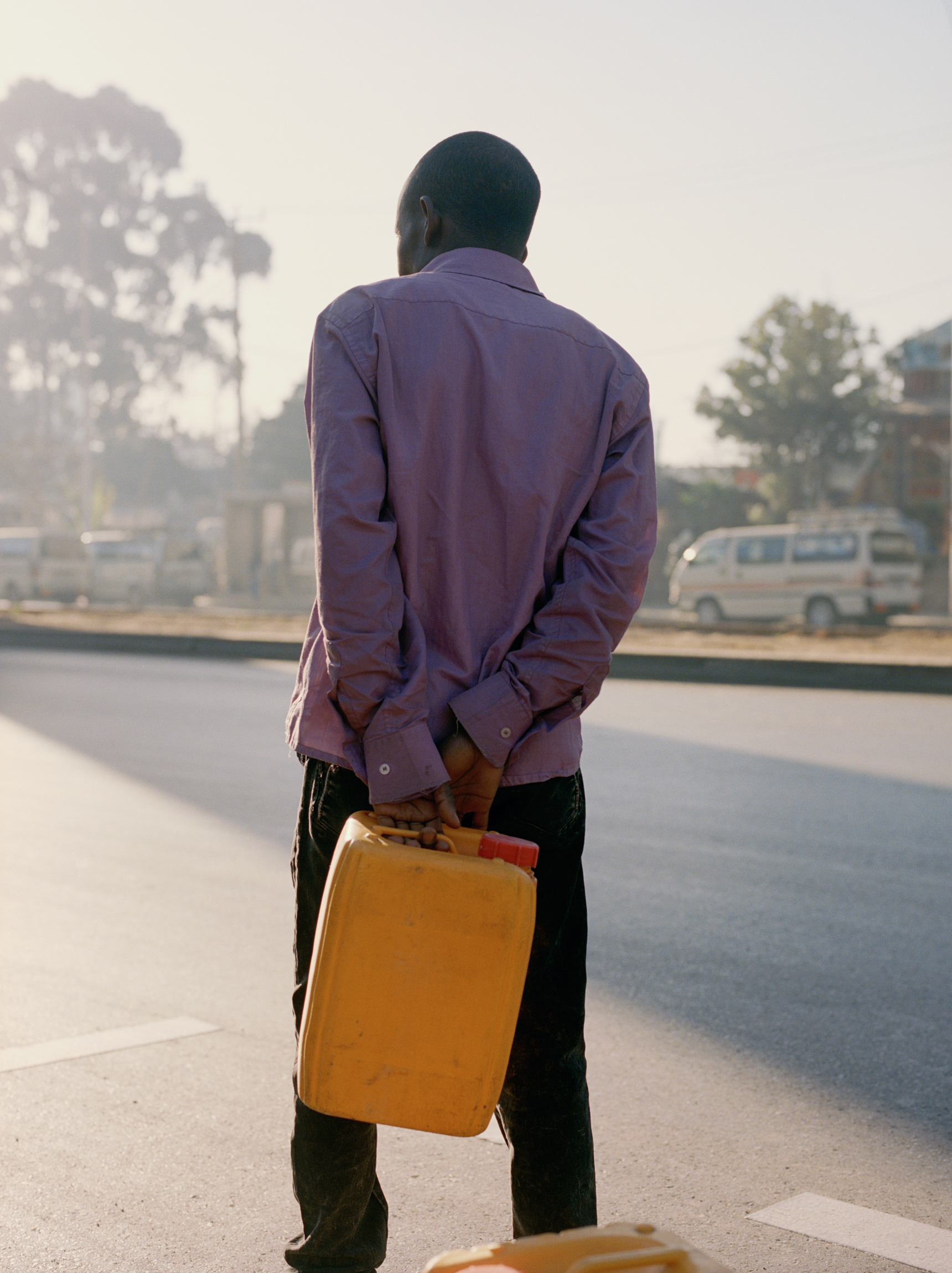
Published by Libraryman and inspired by Kim Ki-Duk’s 2003 film Spring, Summer, Fall, Winter … and Spring), Seasons Series is a quarterly book series in which a group of creatives are ‘brought together under one vision with a focus on each artist’s unique way of seeing’. For autumn, Osama Harvilahti’s Ethiopia takes centre stage. Shot over just two days and mainly in Meskel Square – a chaotic intersection with no traffic lights, roundabouts or traffic controllers – the images depict moments of balance within intensity. Harvilahti has always been interested in everyday rituals and practises, and with a background in fashion sociology he brings a heightened awareness to the elements of design and makeshift compositions of carried materials and goods weaving throughout the cities Addis Ababa and Bahir Dar.
Ethiopia, €35, published by Libraryman. Pictured, Untitled, Addis Ababa, 2018. Courtesy of the artist and Libraryman Books
Writer: Sophie Gladstone
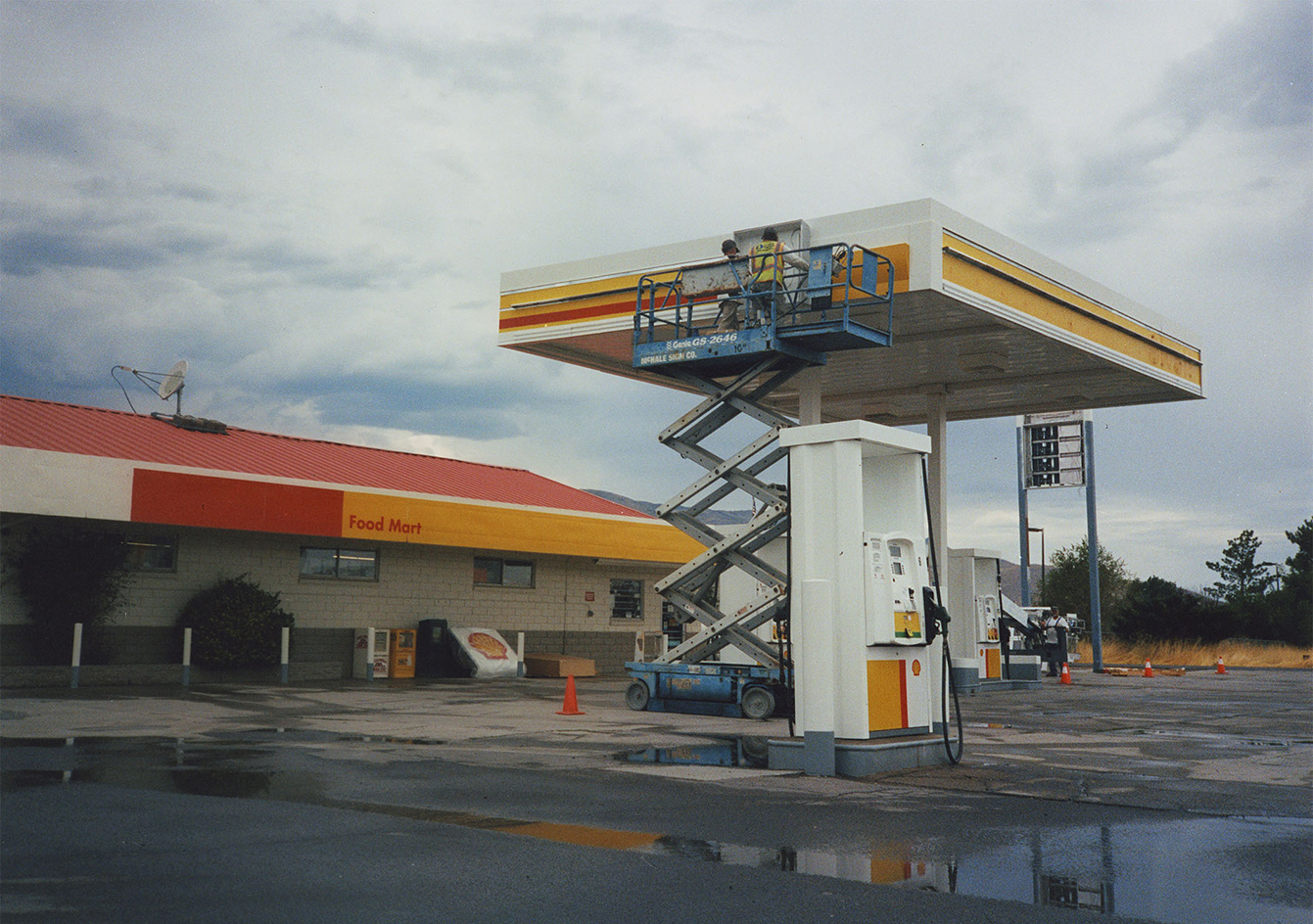
On show at London’s New Art Projects, Frances Wilks’ ‘How to Sell Death to the Living’ (6 September – 20 October) confronts society’s measurements of masculine success. In a competitive world defined by consumerism and materialism, Formula 1 cars have become potent aspirational symbols for many, yet ultimately only operate in the interest of large corporations. The capitalist interests of this industry are highlighted through Wilks’ use of the vibrant colours and graphic compositions of men’s magazines and advertisements for Marlboro, Ferrari, and Champion. Where we would typically expect a man, Wilks implants herself in her paintings (exhibited alongside photographs of empty gas stations), challenging an industry that traditionally excludes women.
Pictured, Empty Shell (Gas Station) II, 2018, by Frances Wilks
Writer: Sophie Gladstone
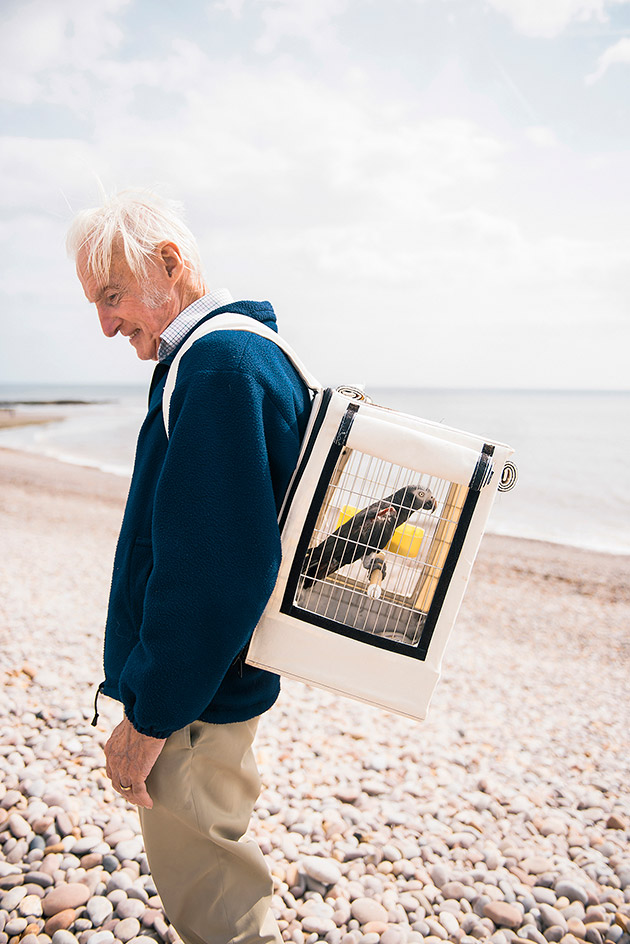
With over 13,000 portraits submitted and 100 winners, Portrait of Britain is the UK’s largest ever prize in contemporary photography, capturing and uniting the tremendous diversity of Britain. Judged by key industry leaders Caroline Hunter, picture editor of The Guardian’s Weekend magazine; Olivia Arthur, Magnum photographer; Martin Usborne, Hoxton Mini Press co-founder; and Simon Bainbridge, British Journal of Photography editorial director. Millions of people will see the winning images showcased nationwide from 1-30 September across UK train stations, shopping centres and high streets, brightening up everyday journeys at time of pivotal change for Britain. In addition, Hoxton Press is publishing a book of 200 shortlisted images with an introduction by Will Self, available from 6 September.
Pictured, Rehabilitating Roy's Parrot, 2018, by Alexander Flemming
Writer: Sophie Gladstone
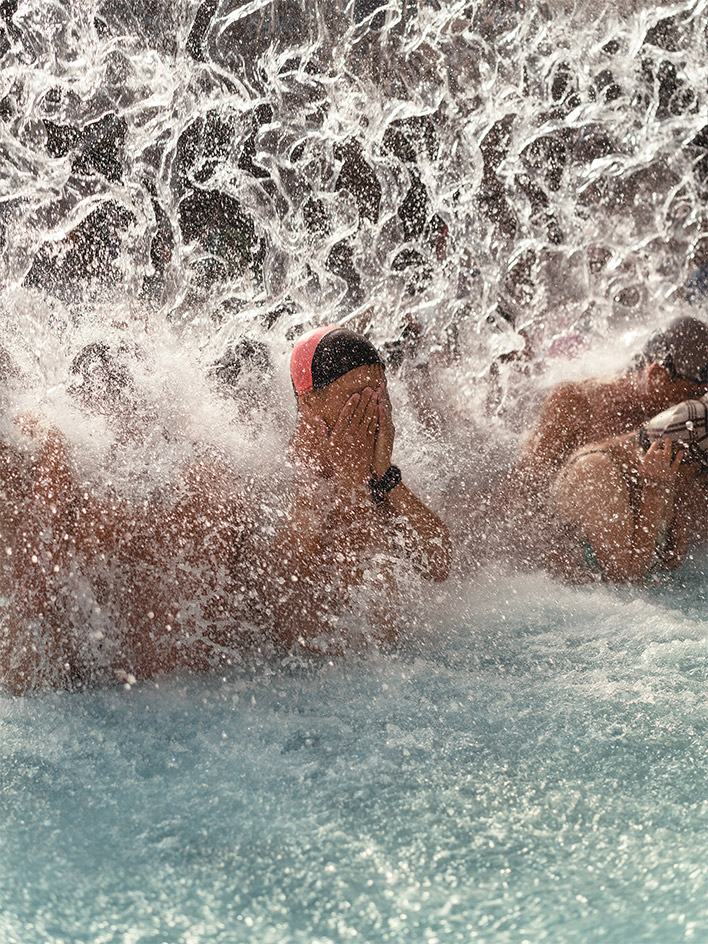
Launched in 2013, Paper Journal has sinced established itself as an impressive online platform for photography, fashion, and culture. Making the leap from pixel to paper, the magazine has now launched its first ever print edition, marking the milestone with an exhibition at London’s Webber Gallery (31 August – 12 September). The exhibition features a number of artists published in the inaugural print issue, including Daniel Shea, Gregory Halpern, Joseph Kadow, Kristine Potter, Lola & Pani, Matthew Connors, Nhu Xuan Hua, Patrick Bienert, Reto Schmid, Senta Simond, Stefanie Moshammer and Xiaopeng Yuan.
Pictured, Unanimous Desire, 2018, by Matthew Connors
Writer: Sophie Gladstone
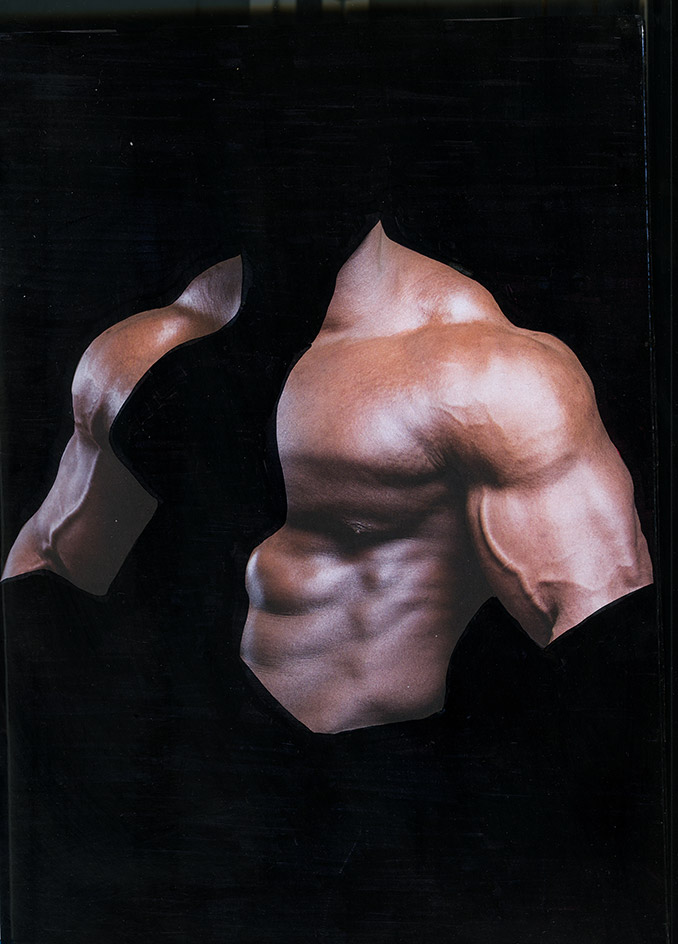
Exploring the sculptural potential of photography, Alix Marie responds to sociocultural idealisation of the body. For the series Olympians (2018), she removed the faces and backgrounds of muscular models from bodybuilding magazines with black marker pen, reducing their identities to their physiques. Similarly in It’s Like Somebody Blowing Air into your Muscle (2018) and Deep Muscle Massage (2018), cropped images of bodybuilders are printed onto fabric and animated by electric massage mats and fans, resulting in immersive sounds and movements that evoke the repetitive exercises required for such physiques. Marie’s latest work can be seen at Roman Road’s booth at Code Art Fair in Copenhagen (30 August – 2 September).
Pictured, Olympians 89, 2018, by Alix Marie, black marker pen on magazine paper encased in a handmade Perspex and self-amalgamating rubber tape frame. Courtesy of Roman Road and the artist
Writer: Sophie Gladstone
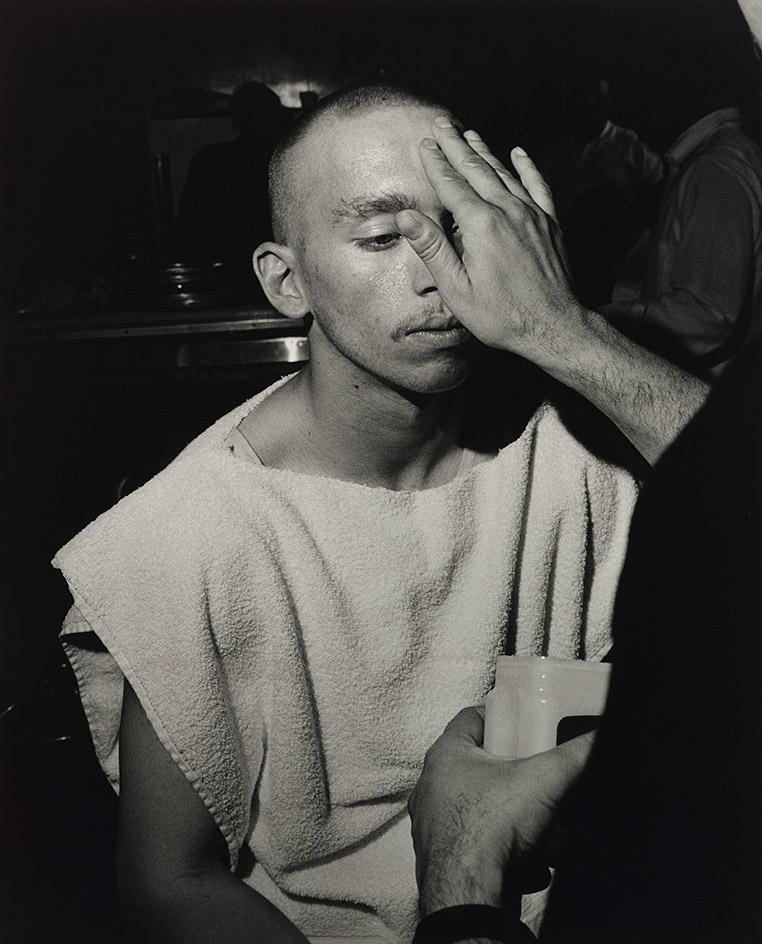
On show at The Philadelphia Museum of Art, Larry Fink’s photographs reveal the extraordinary world of boxing. Shot over an 18 year period, the 80-odd gelatin silver prints show contenders in rowdy rings and ambition-fuelled gyms. Fleeting moments of vulnerability and tenderness alongside close-ups of chiseled bodies in action reflect the intense duality of this sport. Fink spoke of ‘the deep fraternity’ of the boxing gym – a gritty intimacy develops that holds the close knit-communities of clubs together through agonising failures and triumphant highs. ‘The Boxing Photographs’ is on view 11 August – 1 January 2019.
Pictured, Castlehill, Allentown, Pennsylvania, June 1993, by Larry Fink. Promised gift of the Tony Podesta Collection, Washington DC. © Larry Fink. Courtesy of Philadelphia Museum of Art
Writer: Sophie Gladstone
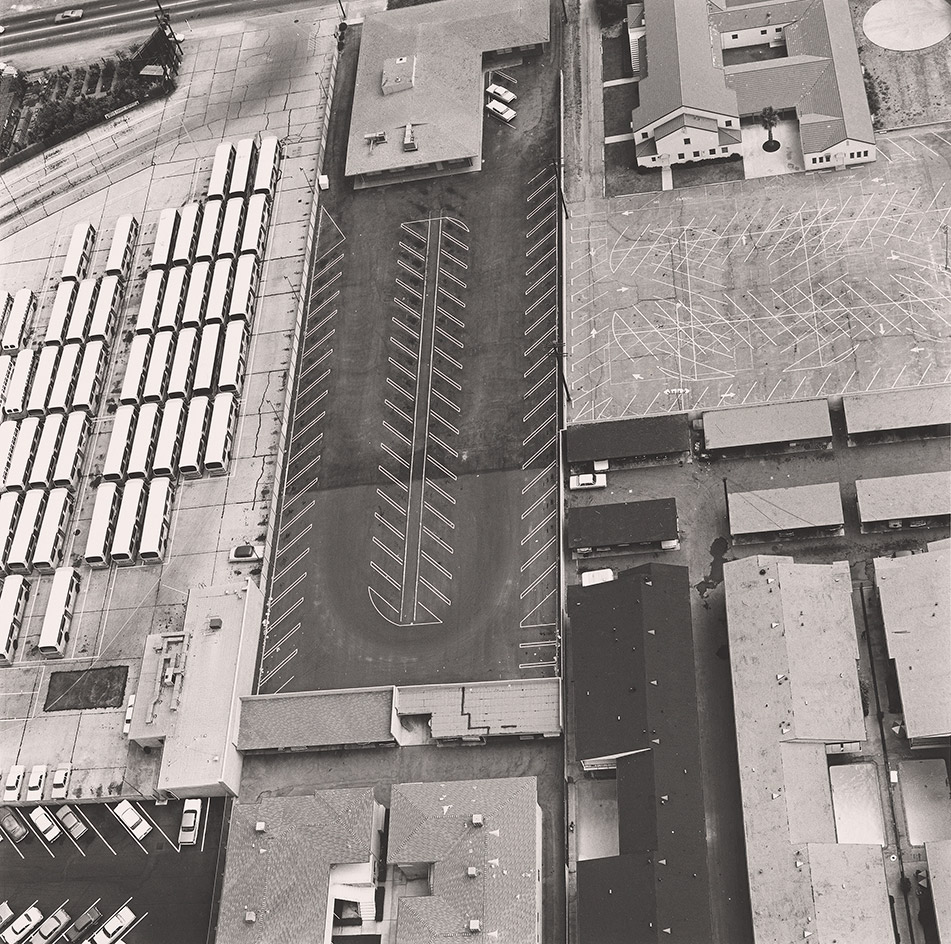
‘Ed Ruscha: Archaeology and Romance’ (11 August – 6 January) at Austin’s University of Texas is the first major exhibition to place particular focus on Ruscha’s artist’s books. The exhibition draws extensively from archival materials, including Twentysix Gasoline Stations (1963), and Thirtyfour Parking Lots in Los Angeles (1967), as well as photographs, drawings, prints, layout sketches and studio notebooks. The exhibition examines Ruscha’s influence through seminal works, which riff on American pop and consumer cultures, and Californian roadside architecture.
Pictured, State Board of Equalization, 14601 Sherman Way, Van Nuys, by Ed Ruscha, from the portfolio Parking Lots, 1967; printed 1999; gelatin silver print. Edward Ruscha Papers and Art Collection, 2013.17.19. © Ed Ruscha. Courtesy of Harry Ransom Center
Writer: Alex Jones
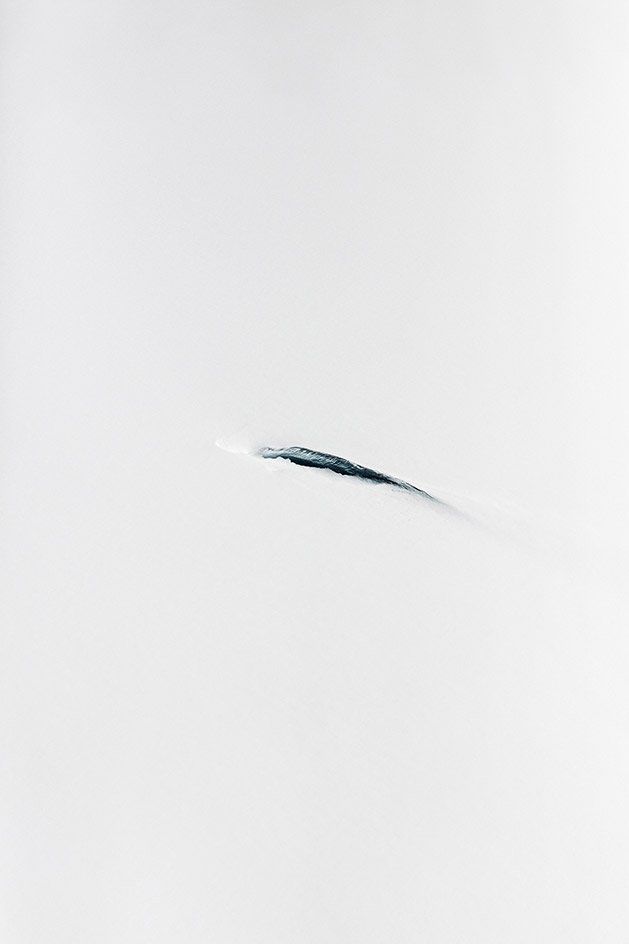
Photographed from a plane during NASA’s IceBridge expedition of Antarctica, Italian artist Paolo Pellegrin presents expanses of awe-inspiring natural beauty. Tracing abstract forms of snow textures and ice cracks, the large-scale detailed works are evocative of Alfred Stieglitz’s Equivalent”. Underscored by a more ominous note, the striking project is a haunting reflection of the impact of mankind’s industrial activities. Drawing on his experience as a Magnum photographer covering wars and catastrophes, Pellegrin is now bringing our attention to the crisis of global warming, a conflict that will ultimately impact us all. The exhibition Antarctica is on view at Zurich’s Bildhalle from 29 August – 6 October.
Pictured, NASA IceBridge flight over South Peninsula A, Antarctica, 2017, by Paolo Pellegrin
Writer: Sophie Gladstone
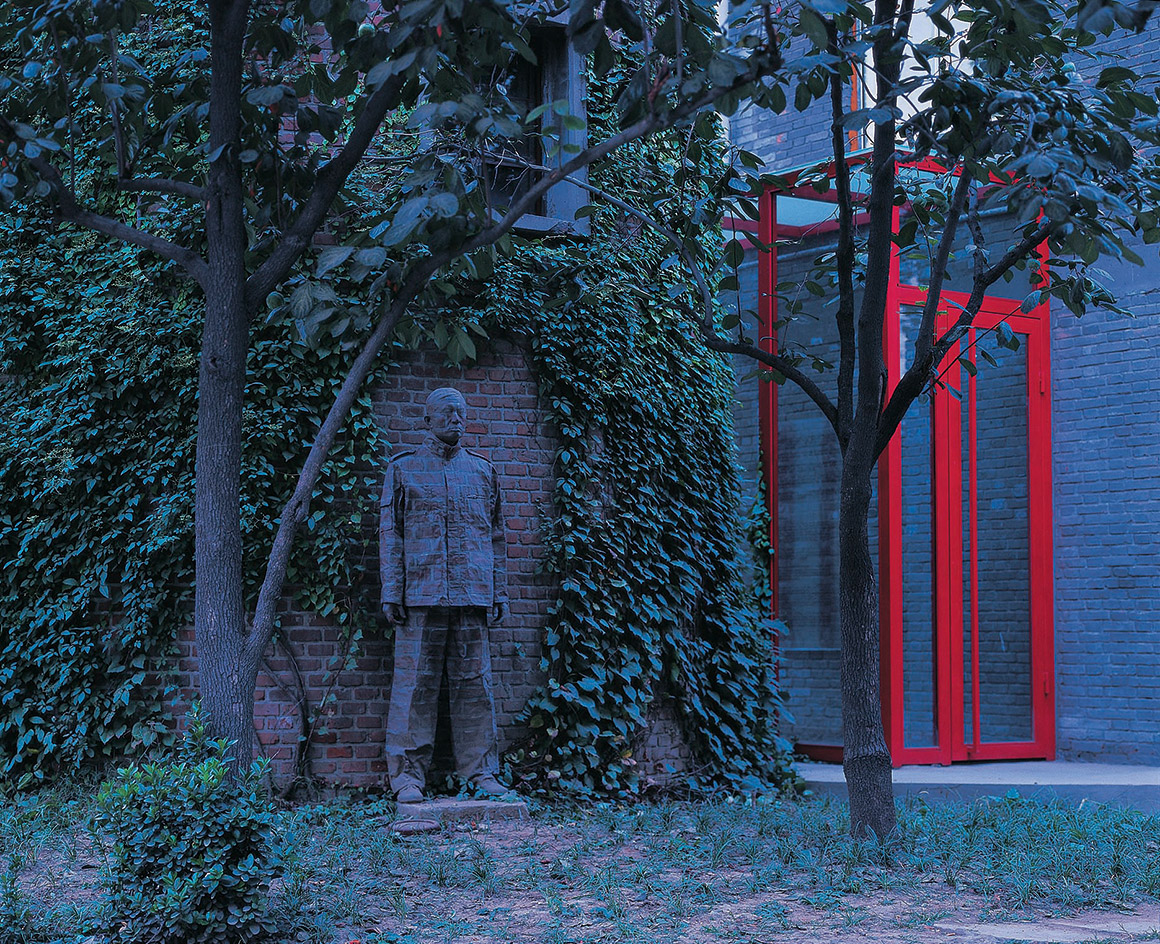
Liu Bolin’s precise hand-painted camouflage sees him blend seamlessly into different environments, exploring a multitude of issues from visibility, to concealment, consumerism, anxiety and homelessness. Playing on Bolin’s nickname as The Invisible Man, ‘Vanishing Point’ will be the Chinese artist’s first solo show in the UK. The exhibition shows previously unseen work (expanded from his series at Art Basel), and continues with Bolin’s engagement with the social concerns present in his home country. ‘Vanishing Point’ is on view 20 June – 15 September at BAFA Contemporary, a relatively new gallery situated in the heart of Mayfair, London.
Pictured, Hiding in the City No.14, Er Guo Tou Wine Factory, by Liu Bolin. © Liu Bolin
Writer: Alex Jones
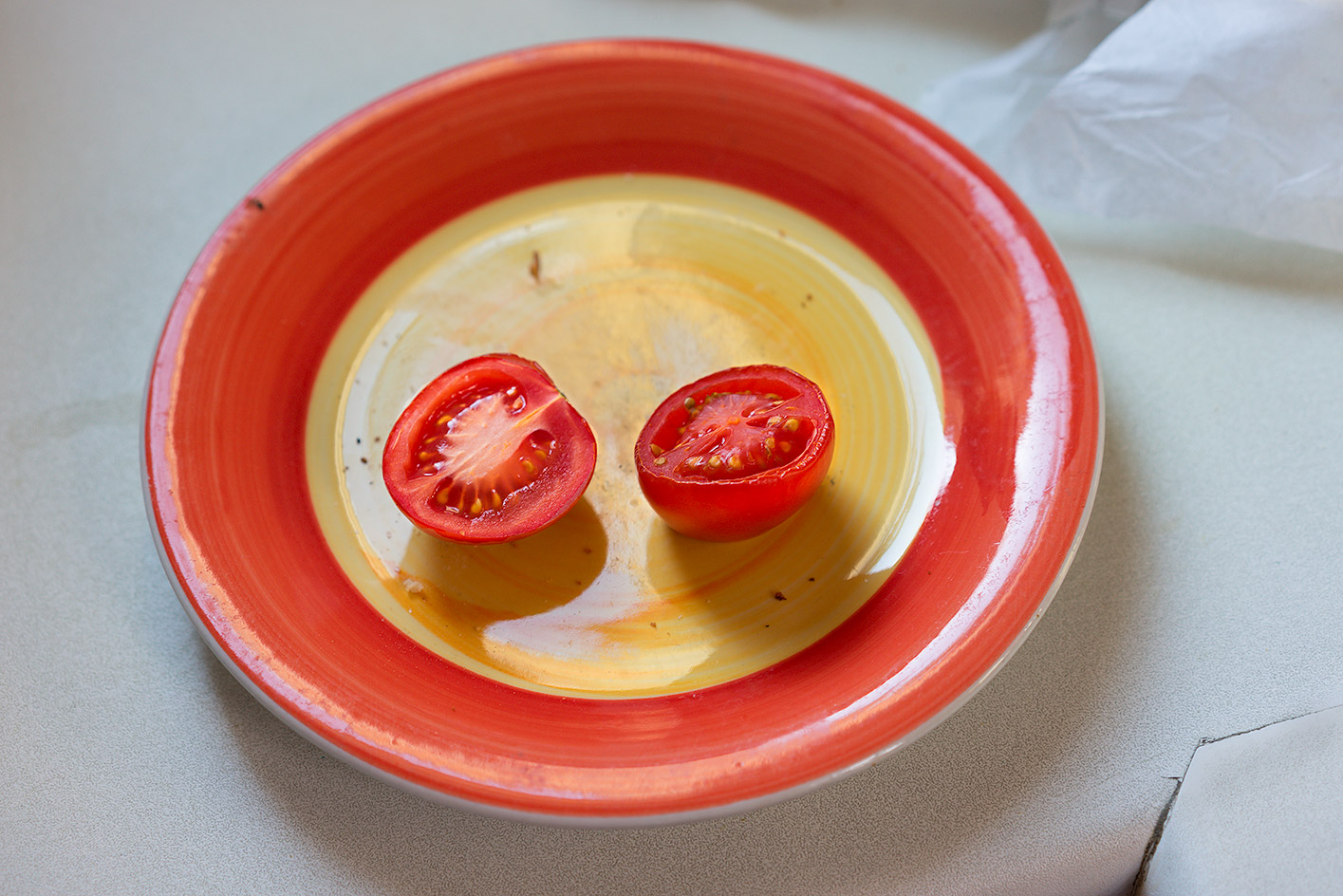
‘Mathematics’ by British artist Peter Fraser is showing in the UK for the first time at London’s Camden Arts Centre until 16 September. Once mentored by William Eggleston, Fraser shot to prominence alongside peers such as Martin Parr and Paul Graham, championing colour photography in fine art since the early 1980s. The photographer is known for his near-obsessive focus on ‘stuff’, documenting everday objects around us. In this body of work – inspired by the philosophical enquiries of the likes of Aristotle and Galileo – he responds to the notion that everything can be described mathematically and that there is always a moral dimension to mathematics. Portraits of individuals experiencing a questioning moment intersect panoramic landscapes and still lifes. Seeming at first to be unrelated, Fraser gives them all equal attention to reveal the interconnected nature of all that surrounds us.
Pictured, Untitled, 2016, by Peter Fraser. Courtesy of the artist
Writer: Sophie Gladstone
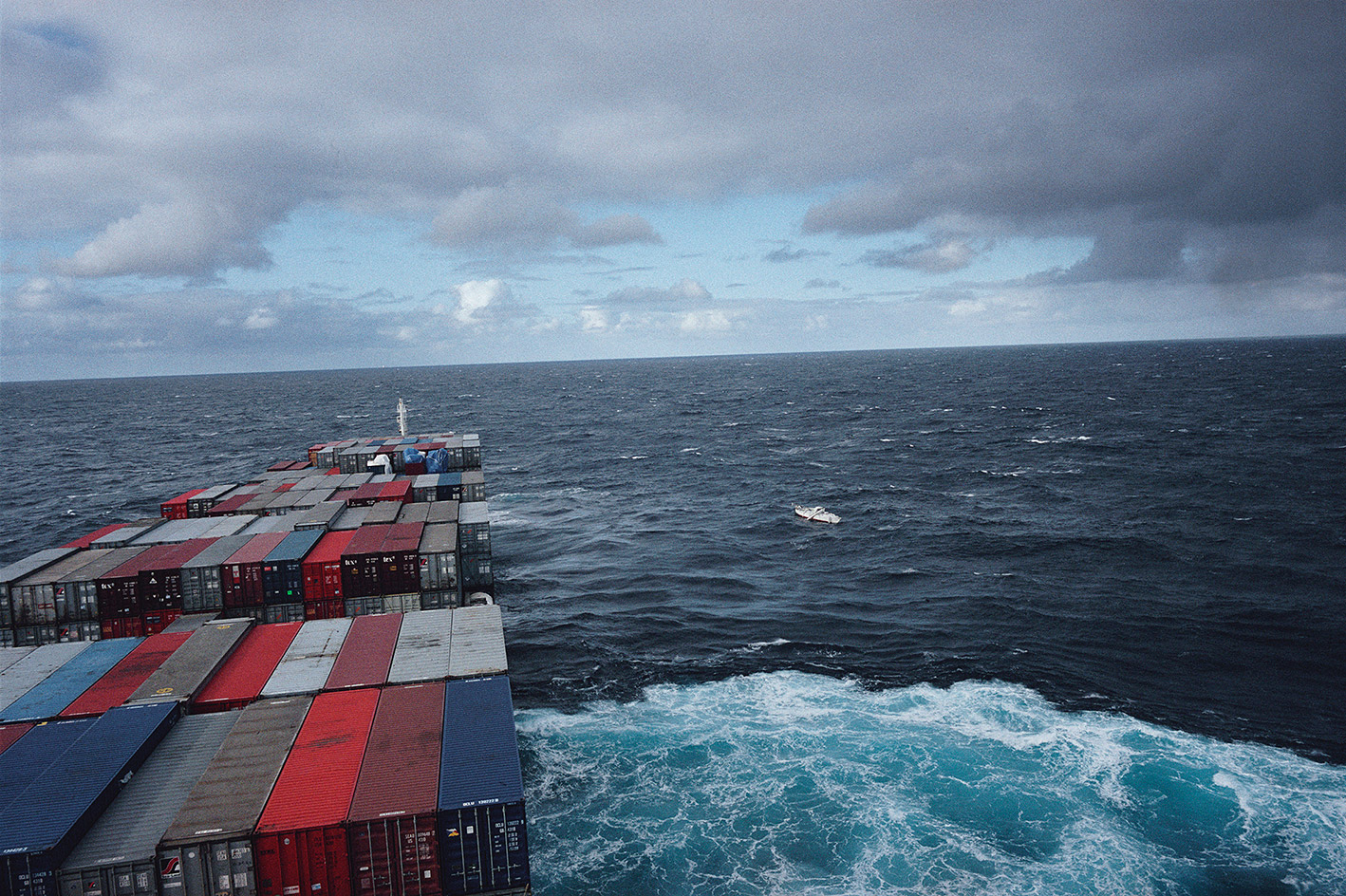
Long out of print, Allan Sekula’s seminal body of work Fish Story is being republished by MACK. Sekula explores how globalisation plays out in the ocean, expanding our understanding of the increasing physical impact of international industry. The project is considered the American artist, filmmaker and writer’s magnum opus, which he once described as an ‘experimental essay in words and pictures’. Completed between 1989 and 1995, it is a key early critique of global capitalism that challenged perceptions about the role of photography as both a visual art and a documentary medium. Panel discussions will take place in New York at E-flux on 21 September, and in London at ICA on 25 October.
Pictured, Conclusion of search for the disabled and drifting sailboat Happy Ending., by Allan Sekula, from the chapter Middle Passage (1993). Fish Story, £30, published by MACK. Courtesy of MACK
Writer: Sophie Gladstone
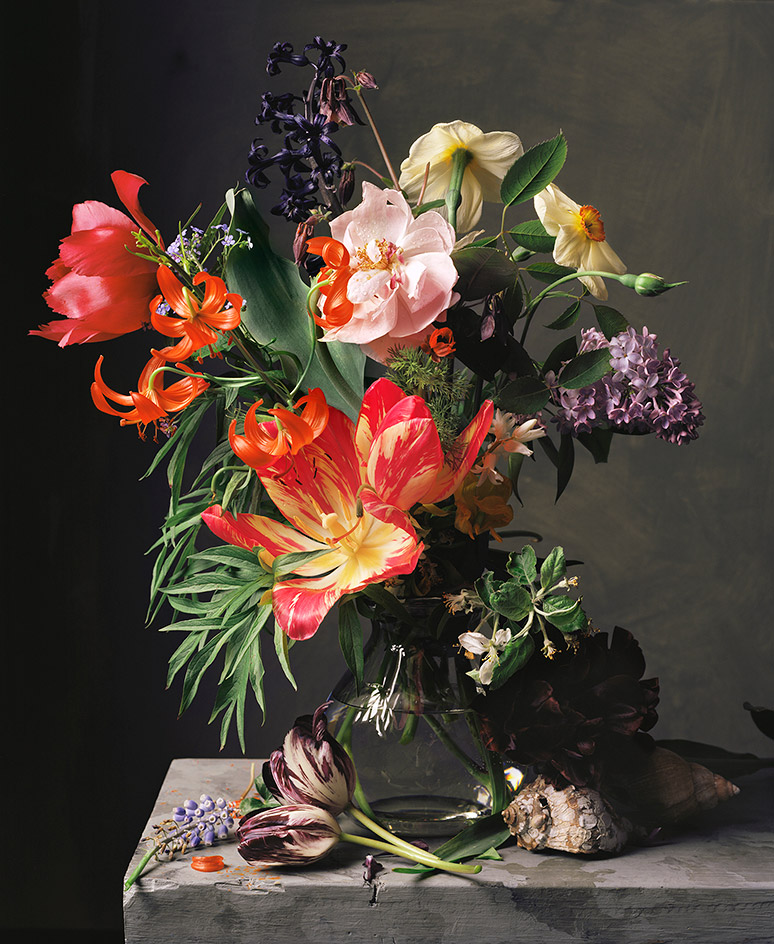
Referencing hundreds of years of art history – from the Dutch masters of the 1600s to early 1900s modernism – New Orleans-born photographer Sharon Core dissects floral still lifes in both of her series, 1606-1907 and Understory. Her images reference the history evoked by flora, while addressing the impermanence of the subjects themselves and the historical tensions built within the mediums of painting and photography. Core has worked meticulously to cultivate the plant and flower species personally: in Understory, the artist produced in her own ‘living’ studio situated within a greenhouse, gradually capturing the development of life. The exhibition ‘Sharon Core’ is on view at Tracey Morgan Gallery from 3 August – 22 September.
Pictured, 1661, 2017, by Sharon Core, from the series 1606-1907. © Sharon Core. Courtesy of Tracey Morgan Gallery, NC
Writer: Alex Jones

This year’s winners of the British Journal of Photography’s International Photography Award, the Copenhagen-based collective Sara, Peter & Tobias present a solo exhibition at London gallery TJ Boulting. In the show ‘The Merge’ (13 July – 11 August), the trio explores the possibility that our reality does not exist as we believe it to, but that instead we live in a simulation. It’s an artful investigation into the consequences that supercomputers, artificial intelligence, and robots may have on our society in the future. It’s a complex subject – the artists strike a fine balance between realism and imagination, leaving it open to interpretation and engaging a dialogue with the audience about the landscape of our future: If life is a simulation, where should we look to understand the world we live in?
Writer: Alex Jones
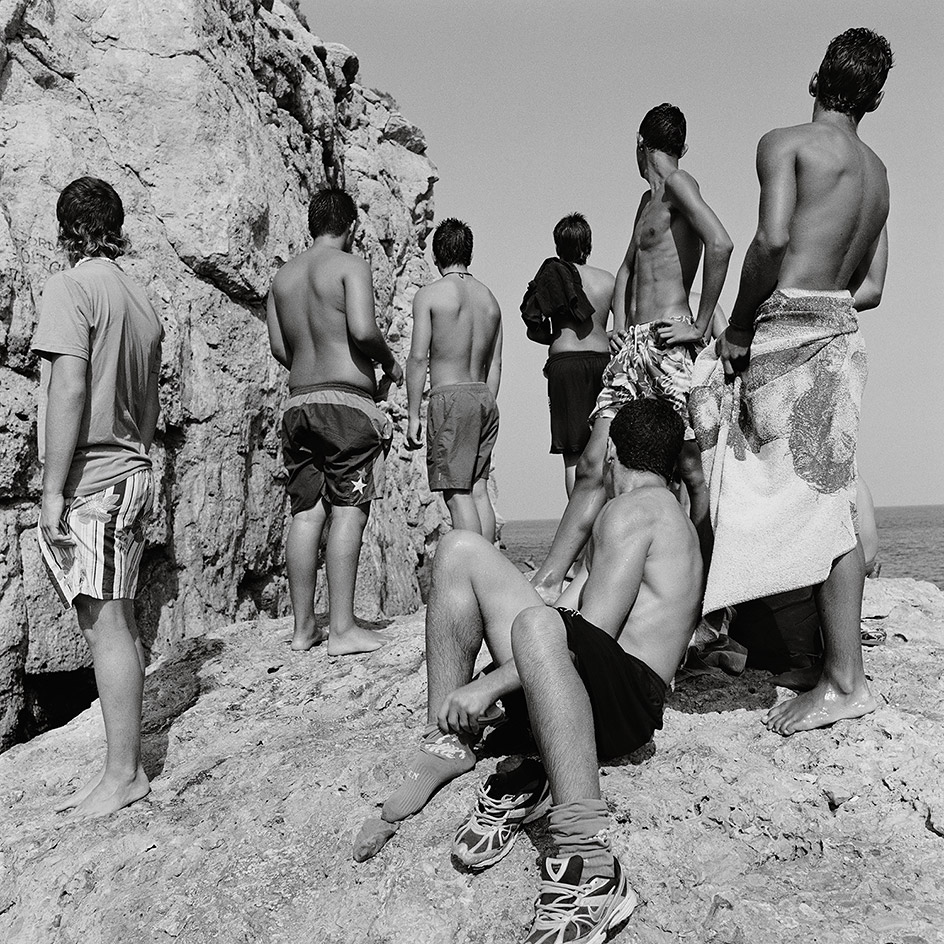
At first glance, Catalan photographer Txema Salvans’ new book appears to show Spaniards enjoying a leisurely summer on the Mediterranean coast. Instead, the artist’s black-and-white images cut through the heat, offering a wry take on the turbulent political climate and ongoing discussions about sovereignty and identity in his home country. Salvans’ photographs are spliced together with quotes from the former King of Spain, Juan Carlos I (1975–2015). My Kingdom is accompanied by a booklet containing extracts of speeches by political figures including Margaret Thatcher, Benito Mussolini, and Winston Churchill, reflecting how nationalistic rhetoric has been used by the state as a mechanism of control.
My Kingdom, £30, published by MACK
Writer: Alex Jones
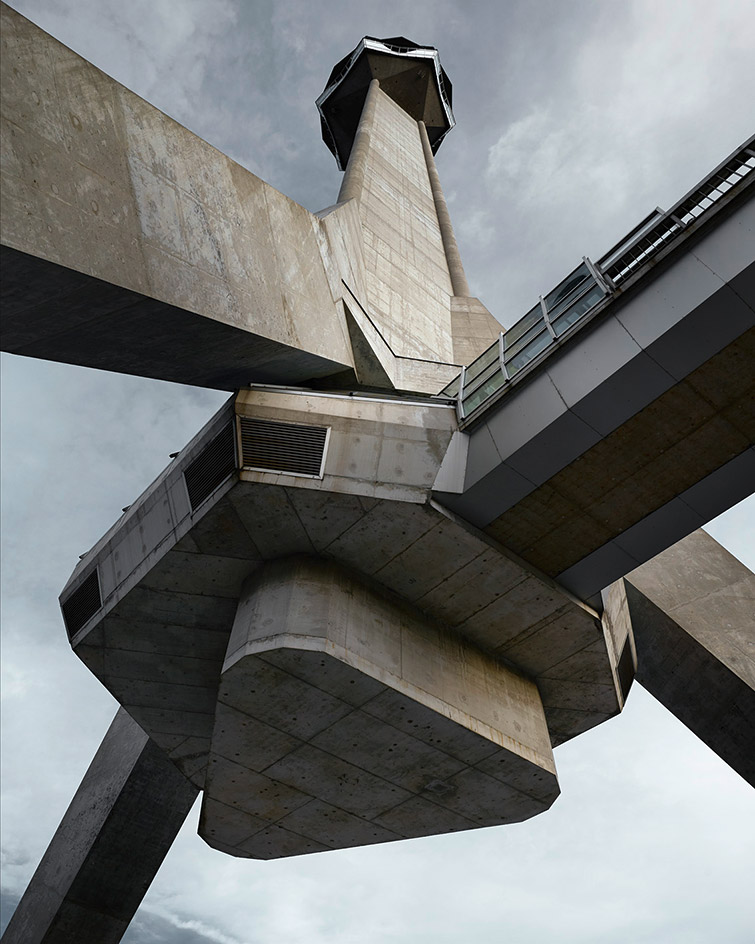
‘Towards a Concrete Utopia: Architecture in Yugoslavia 1948-1980’ (15 July – 13 January) at New York’s Museum of Modern Art is the first major US exhibition to explore Yugoslavia’s remarkable architecture during its 45 years of existence. The show investigates architecture’s capacity to produce a shared civic space and common history in a highly diverse, multi-ethnic society through more than 400 drawings, models, photographs, and film reels culled from an array of municipal archives, family-held collections, and museums across the region. A socialist society was constructed based on ‘self-management’ – modern architecture ultimately played a key role for the country’s utopian vision.
Pictured, Janko Konstantinov. Telecommunications Center. Skopje, Macedonia. View of the Southwestern Block façade, 1968-81, by Valentin Jeck. Commissioned by The Museum of Modern Art, 2016. © The Museum of Modern Art
Writer: Alex Jones
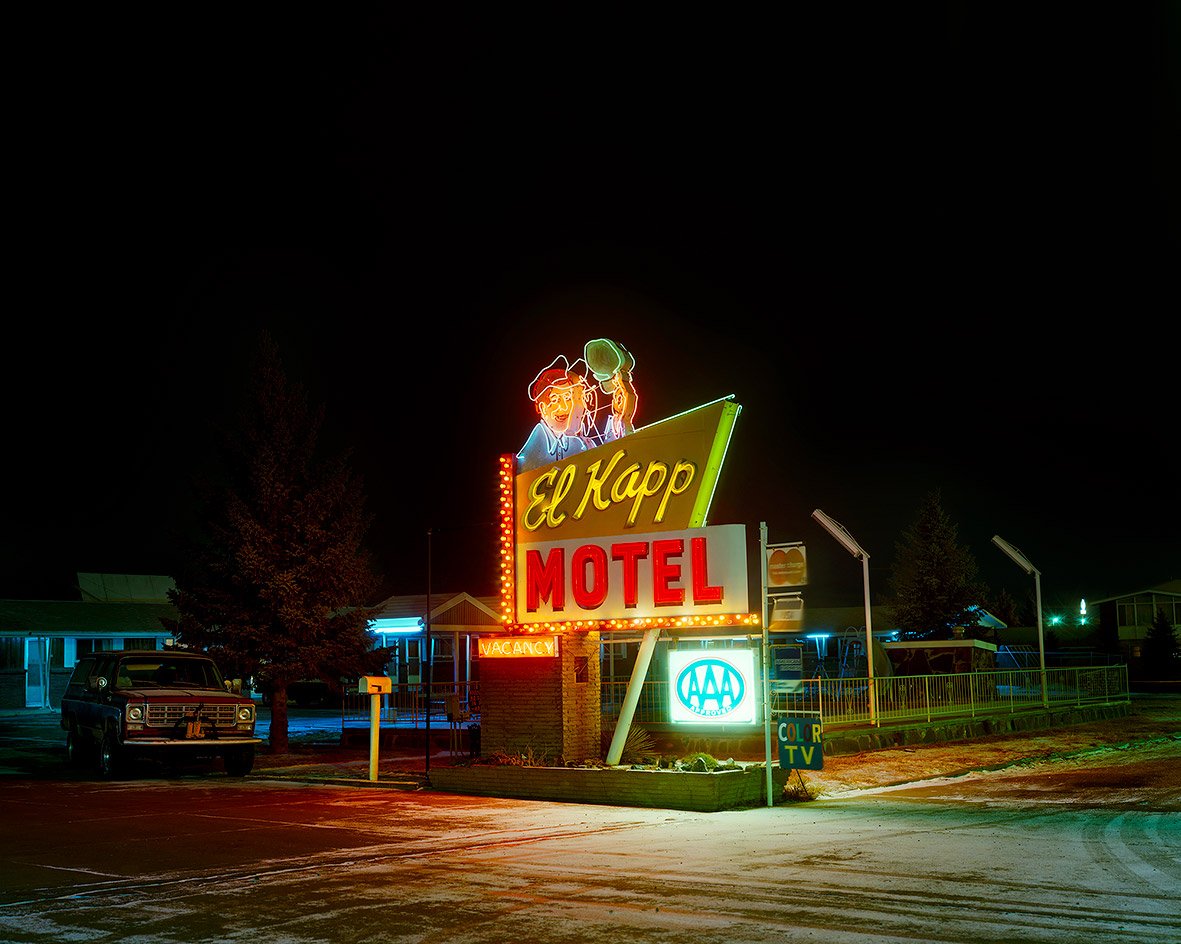
Kopeikin Gallery launches a solo exhibition, ‘Vanishing Vernacular’ (14 July – 25 August), by Steve Fitch, coinciding with the publication of a new book by the same name. Fitch has captured roadside signage, drive-in movie theatre screens and radio towers, most of which are now endangered due to the advent of the Interstate Highway System and corporate franchises. The artist is among the most well-known chroniclers of the American West and has been photographing its changing vernacular landscape and vanishing roadside landmarks for
more than 40 years.
Pictured, El Kapp Motel, Highway 64, Raton, New Mexico, December 19, 1980, by Steve Fitch
Writer: Alex Jones
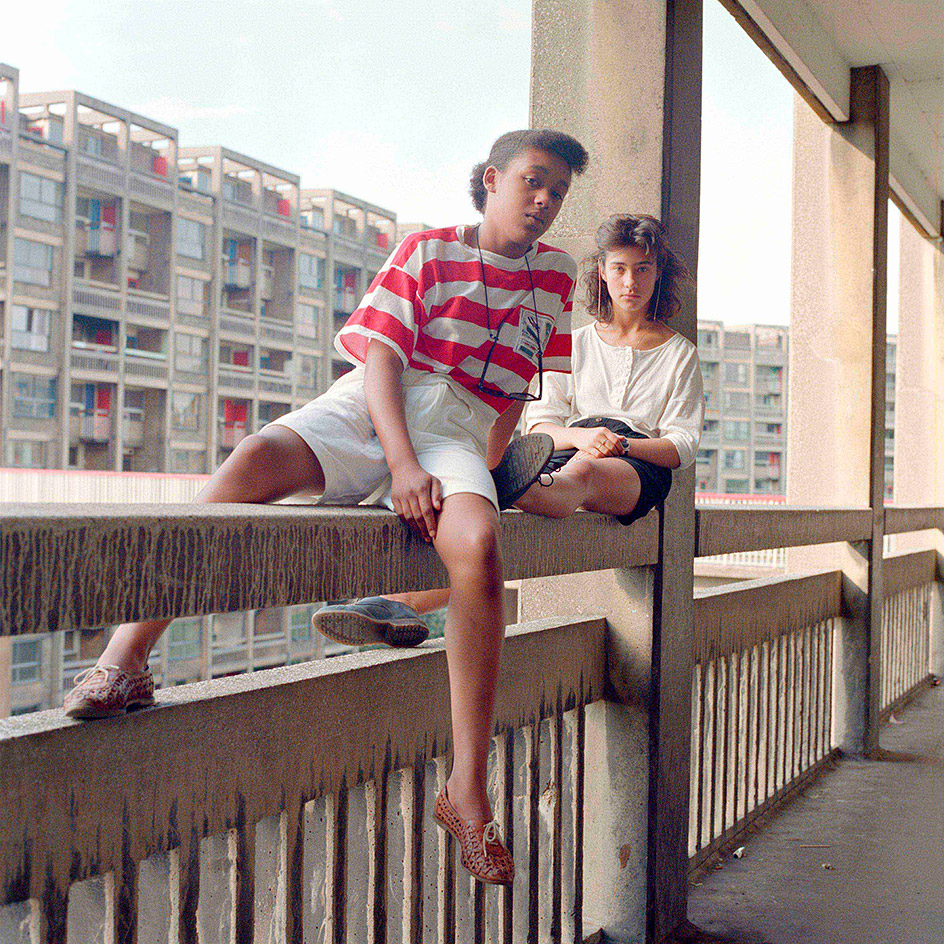
Opened at S1 Artspace in Sheffield’s brutalist Park Hill estate, ‘Love Among the Ruins: A Romance of the Near Future’ (20 July – 15 September) presents the work of two social documentary photographers, Bill Stephenson and the late Roger Mayne. The pair documented the first residents of Park Hill in the early 1960s and the decline of the estate’s sister building in Hyde Park in 1988 for the show ‘Streets in the Sky’, exhibited that same year. Thirty years later, ‘Love Among the Ruins: A Romance of the Near Future’ revisits that show, alongside archival documents and landmark 1965 BBC documentary The Fortress.
Pictured, Donna Hargreaves and Carmen Bello sit on an unguarded fourth storey concrete parapet. Hyde Park Flats, Sheffield, 1988, by Bill Stephenson. © The artist
Writer: Alex Jones
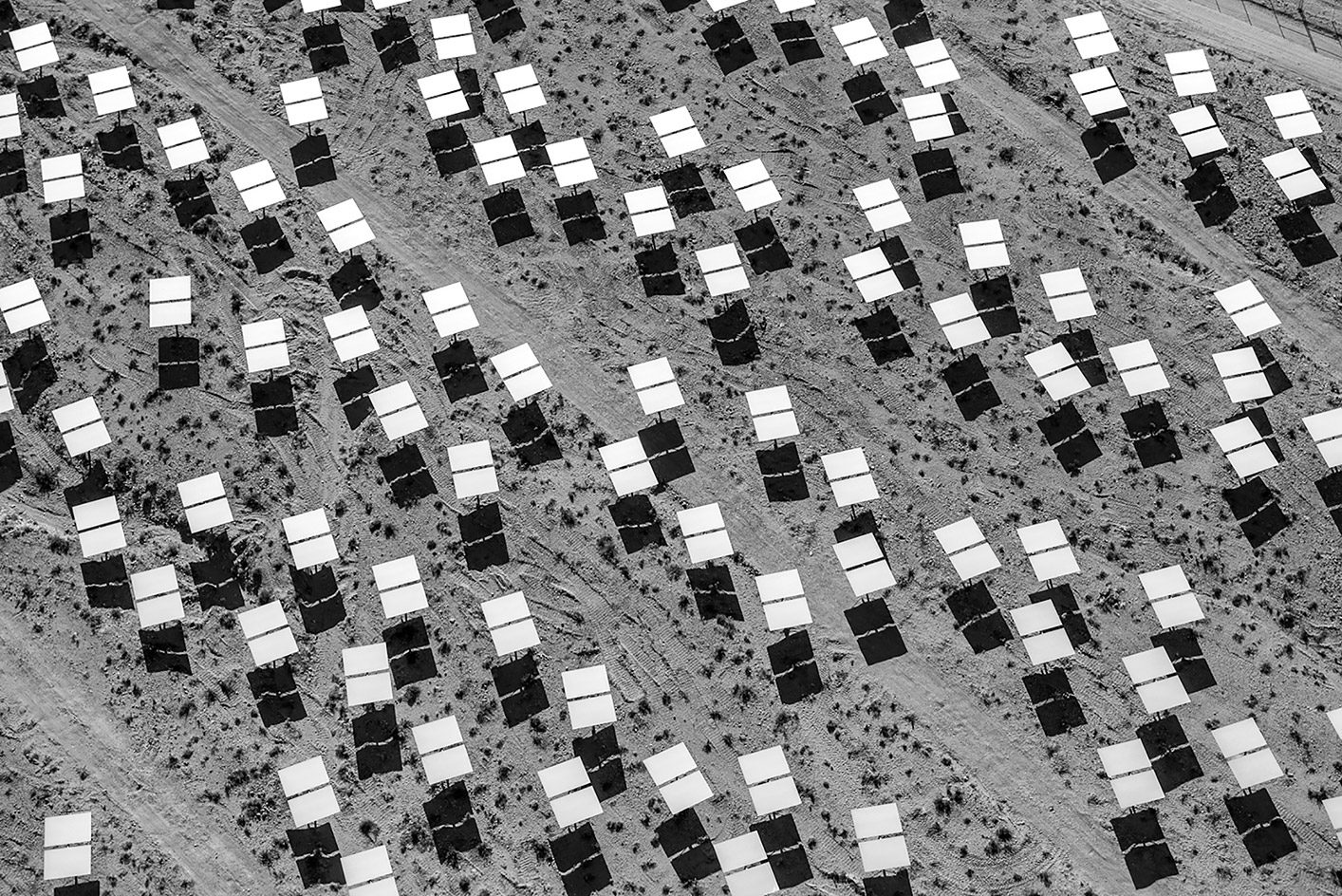
Echoing the values central to the 1975 exhibition ‘The New Topographic’, a group show at Toronto’s Stephen Bulger Gallery examines mankind’s impact on our natural surroundings and the built environment. Geoffrey James’ images of human activity in the landscape are shown opposite of Robert Burley’s colour study of Toronto’s expansive park system. Their verdant scene are in stark contrast to those of Jamey Stillings and Dana Fritz, whose projects both explore innovative scientific projects in the desert regions of the American Southwest. Stilling’s image (pictured) depicts rows of heliostats at Ivanpah Solar power facility, which direct the suns energy to receptors at the top of the three towers. Ivanpah is the worlds largest concentrated solar thermal plant in the world with almost 350,000 mirrors scattered across six square miles. ‘Land Use: A Group Exhibition’ is on view from 21 July – 8 September.
Pictured, #6425, 2 June, 2012, by Jamey Stillings. © Jamey Stillings. Courtesy of Stephen Bulger Gallery
Writer: Alex Jones
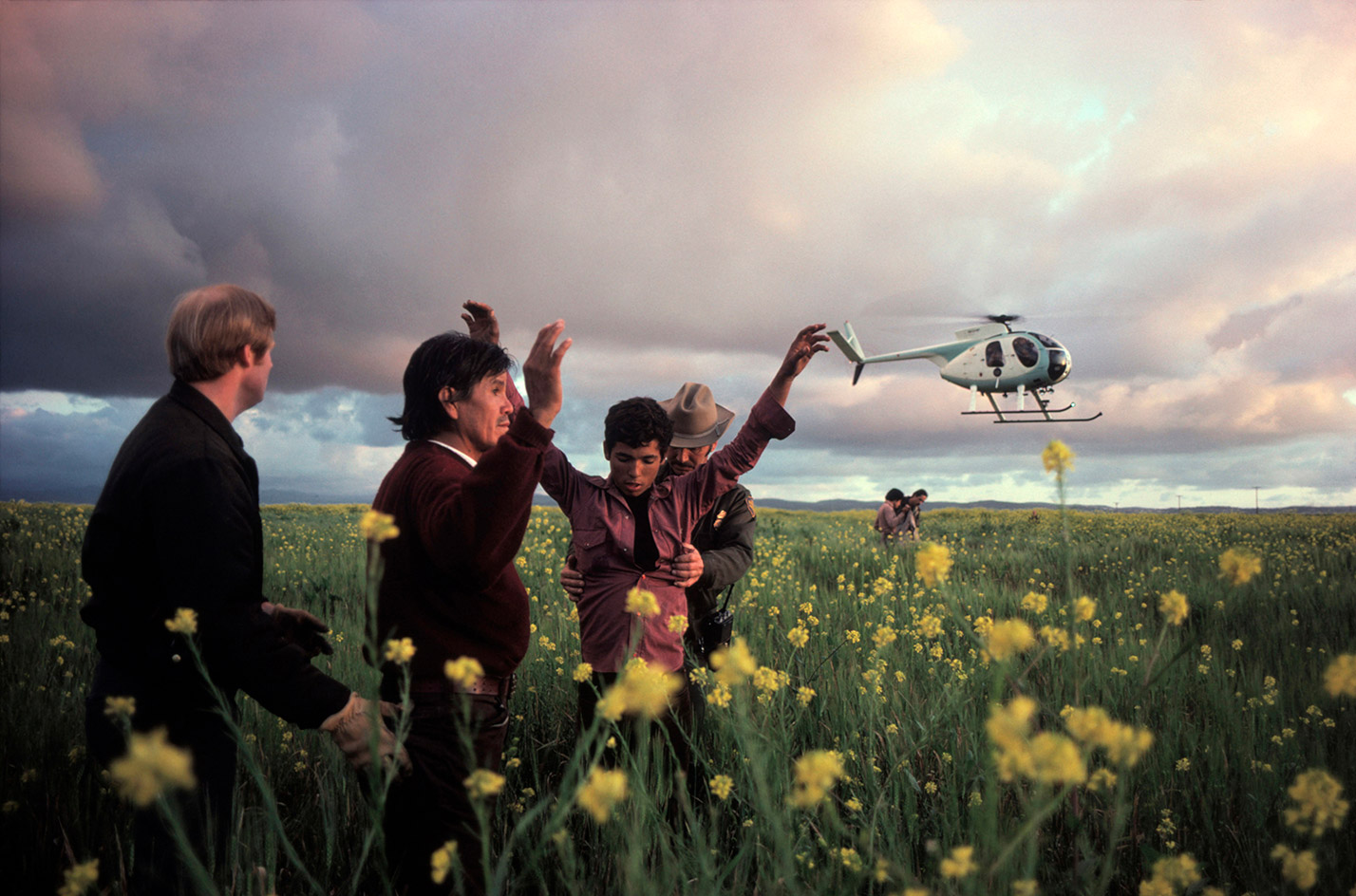
Opened at Etherton Gallery in Tuscon, Arizona, ‘From the Archive: Masters of 20th Century American Photography’ (3 June – 31 August) puts the spotlight on the photographers who helped create the 20th century’s most iconic visuals. Featuring Ansel Adams, Diane Arbus, Robert Frank, Annie Leibovitz, nd more, the exhibition also includes many unique and rare prints from these artists. Alex Webb’s image of Mexicans arrested trying to cross the border to the US in 1979 (pictured) is taken from his series, Crossings: Photographs from the US-Mexico Border. Webb spent 26 years documenting the nature of transience and the border’s existence as a non-place in a humanising portrayal of how the two countries’ cultures have blended.
Pictured, San Ysidro, California, 1979, by Alex Webb, digital type c-print on Fuji Crystal Archive paper. © Alex Webb, Courtesy of Etherton Gallery
Writer: Alex Jones
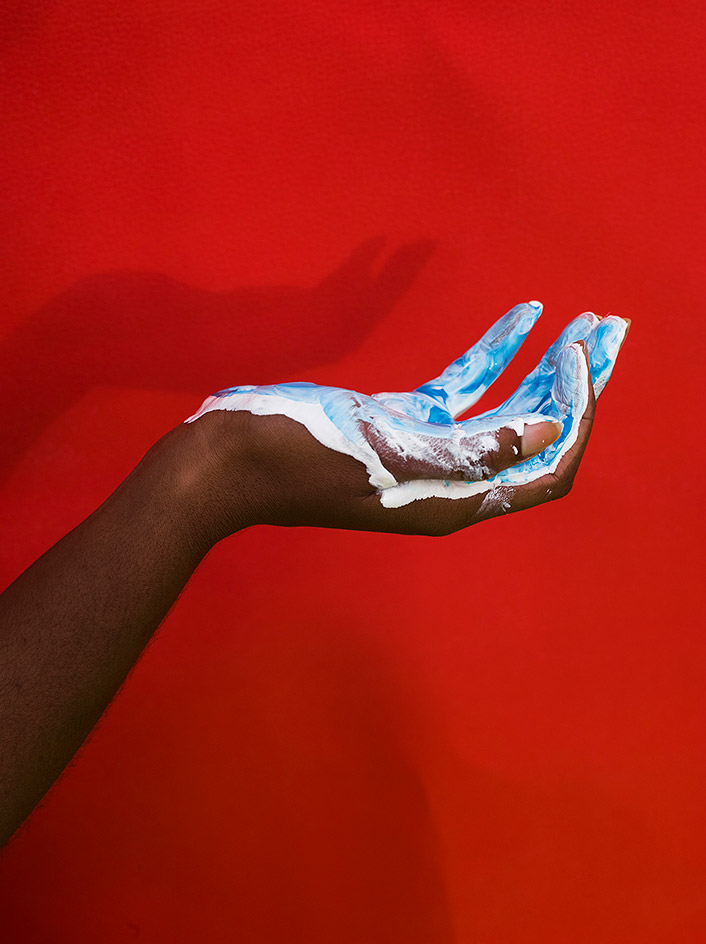
Dutch artist and photographer Viviane Sassen is the subject of a survey at Yorkshire’s The Hepworth Wakefield. ‘Hot Mirror’ (22 June – 7 October) includes work made by Sassen over the past ten years, as well as new photographic and collage work. This image from her most recent series, Of Mud and Lotus (2017), examines traditional notions of femininity: procreation, fertility, body image and transformation. The exhibition by Sassen, who notes surrealism as a major influence in her use of colour and fragmented compositions, is running in tandem with ‘Lee Miller and Surrealism in Britain’ at The Hepworth Wakefield.
Pictured: Ra, 2017, Vivane Sassen, from the series Mud and Lotus. © Viviane Sassen. Courtesy of Stevenson Gallery, Cape Town, South Africa
Writer: Alex Jones
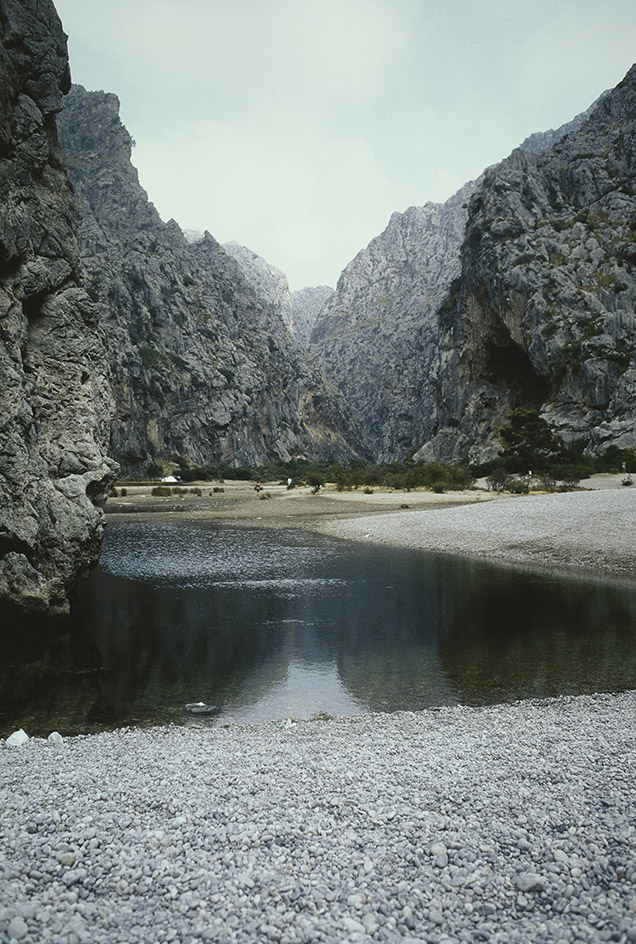
Jeu de Paume in Paris opens a solo exhibition on the French photographer Daniel Boudinet, whose work helped shape the European photographic renaissance of the 1970s. Boudinet’s photojournalistic practice centred heavily on black and white, something that he rejected in his personal work. He used colour to reveal both the mystery and normality of his photographic subjects, frequently working with long exposures to produce soothingly surreal tones. Although he was very involved in the arts scene of 1970s and 1980s, Boudinet never sought to follow artistic trends or rules and was known for developing his work indepenently to further his unique exploration of the medium. ‘Le Temps De La Coleur’ (‘The Colour of Time’) is on view from 16 June – 28 October.
Pictured, Creek, Majorca, Spain, 1987, by Daniel Boudinet. Ministère de la Culture / Médiathèque de l’architecture et du patrimoine / Dist. RMN-GP © Donation Daniel Boudinet
Writer: Alex Jones
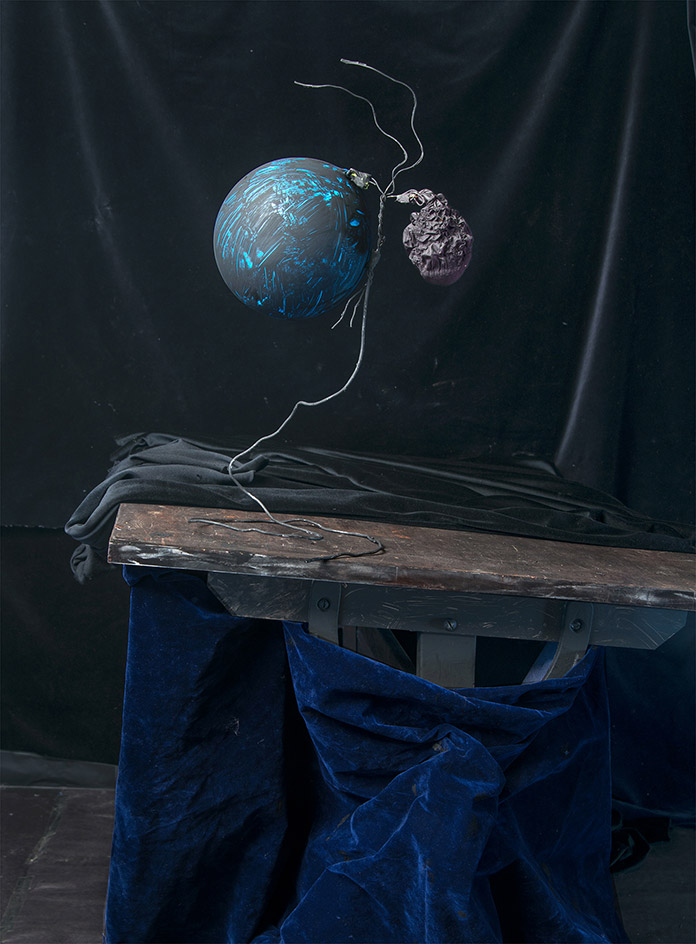
The summer group show at New York’s Julie Saul Gallery presents previous unexhibited work by a collection of artists using assemblage, collage and photographic construction. Having previously exhibited at Lieberman & Saul Gallery in the 1980s, Zeke Berman is showing new colour still life constructions that hark back to his use of simple materials and mysterious spaces. Other artists in the show include Gonzalo Puch, Anastasia Samoylova, Stephen Frailey, Didier Massard, Maria Martinez-Cañas and Rafael Domenech. ‘DIY: Made in the Studio’ is on view 6 July – 17 August.
Pictured, Painted Balloons, Inflated and Deflated, 2018, by Zeke Berman. © The artist. Courtesy of Julie Saul Gallery, New York
Writer: Alex Jones
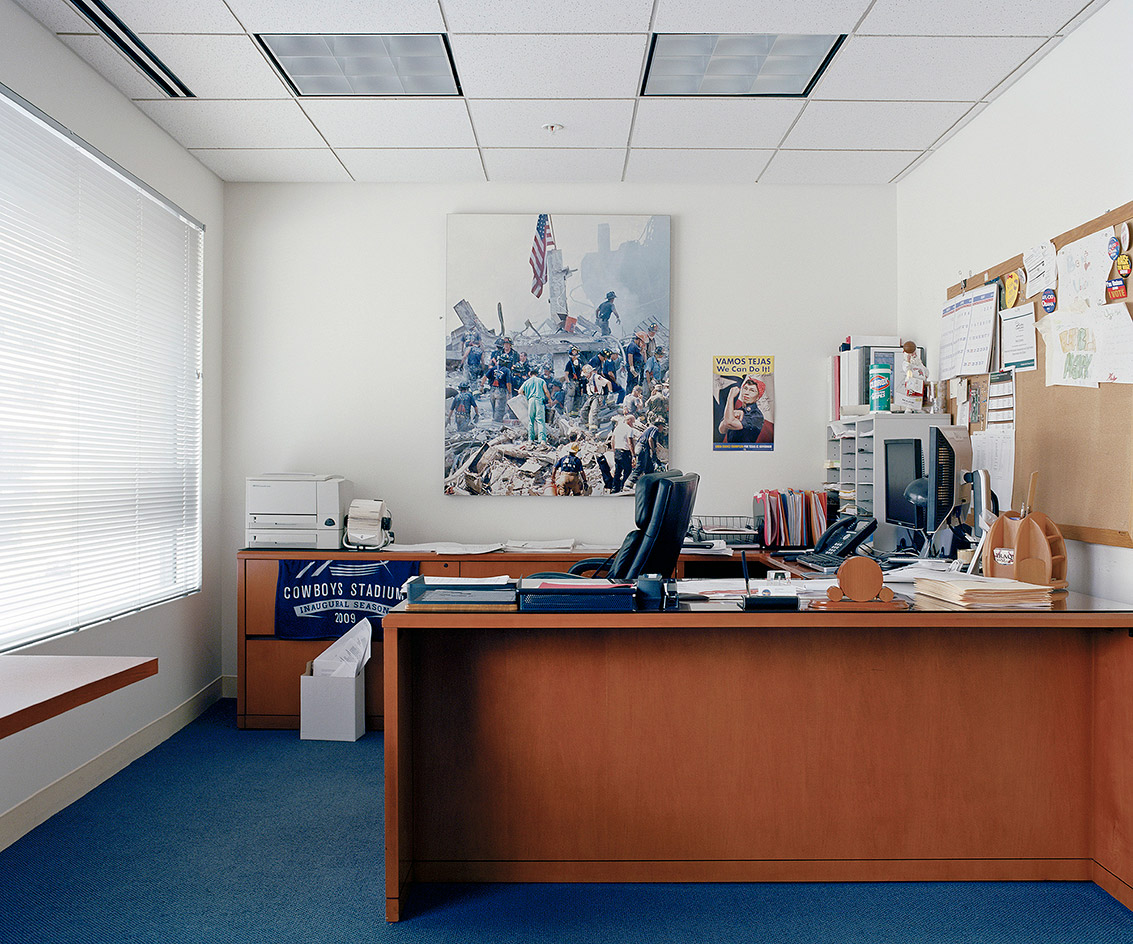
Amid the growing unease surrounding Brexit, many workers face uncertainty as their employment rights are set to be challenged. Noel Bowler’s series Union captures offices and boardrooms of trade unions across the world – from Russia to the UK – offering a glimpse into the institutions dedicated to protecting workers’ rights. Each office is imbued with clues to its occupants: flags, emblems and posters allow the viewer to assemble an image of everything from political leanings to sporting preferences. The exhibition coincides with the 150th anniversary of the Trade Union Congress. Union is on view at Bradford’s Impressions Gallery until 22 September and is accompanied by a book published by Kehrer Verlag.
Pictured, Maritime Trades Department, AFL-CIO Building AFL-CIO, Washington, D.C., USA, by Noel Bowler. © The artist. Union by Noel Bowler is supported using public funding by Arts Council England and Culture Ireland.
Writer: Alex Jones
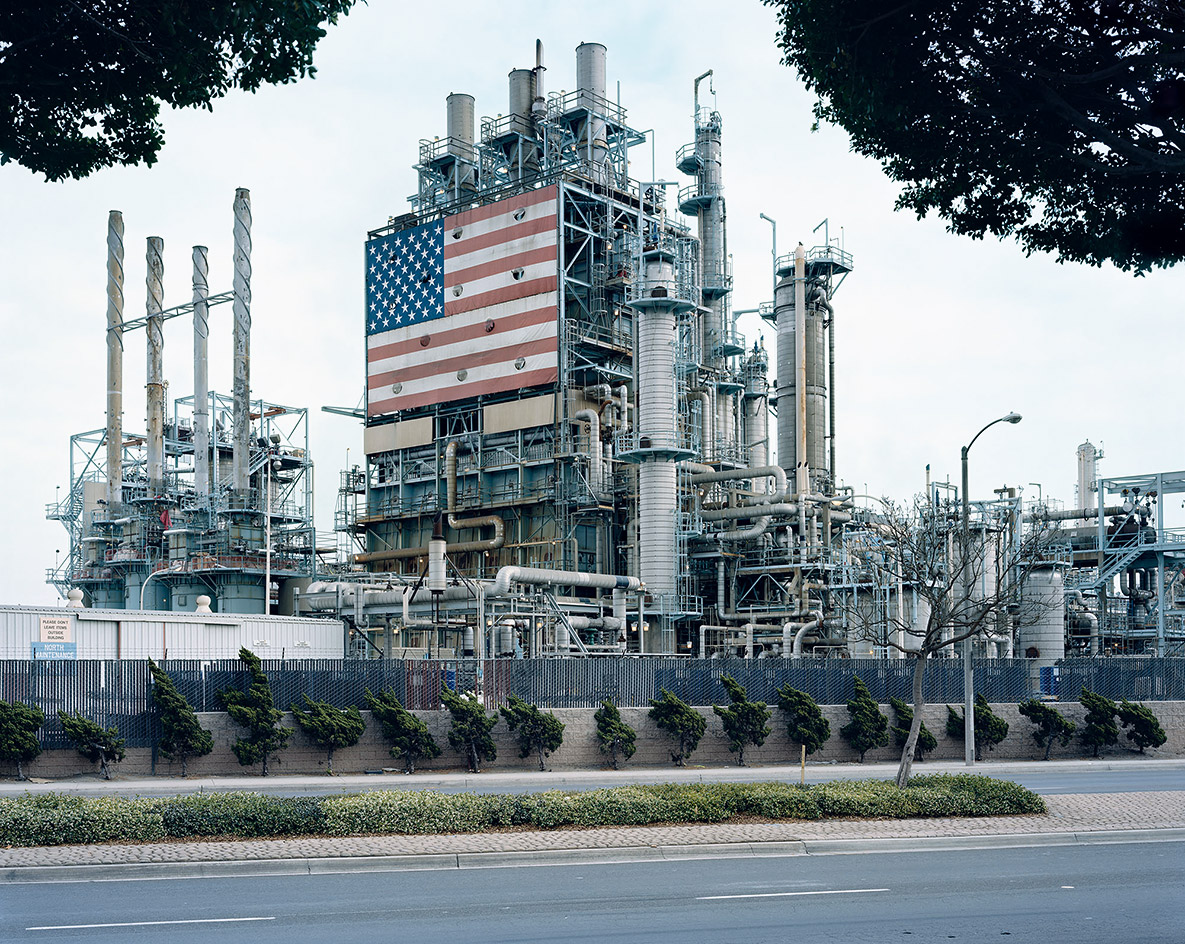
Launched in 2008 with the aim of highlighting sustainability and the environment, The Prix Pictet has become one of the photography’s most coveted awards. Each ‘cycle’ of the Prix Pictet centres on a specific theme, which in the past has included Water, Earth, Growth, Power, Consumption, Disorder and Space. To celebrate ten years of the award, Prix Pictet and Les Rencontres d’Arles will present a special retrospective exhibition, ‘Prix Pictet Laureates’ (5 July – 23 September), which features works by the seven Prix Pictet winners: Benoit Aquin, Valérie Belin, Luc Delahaye, Mitch Epstein, Nadav Kander, Richard Mosse, and Michael Schmidt. Coinciding with the opening of the exhibition, a film about the award will be screened at Arles’ Roman Theatre on Thursday 5 July, at which the eighth theme of the award will be announced with an exhibition planned for autumn 2019.
Pictured, BP Carson Refinery, California, 2007, by Mitch Epstein, from the series American Power, 2006-07. © Prix Pictet Earth
Writer: Alex Jones
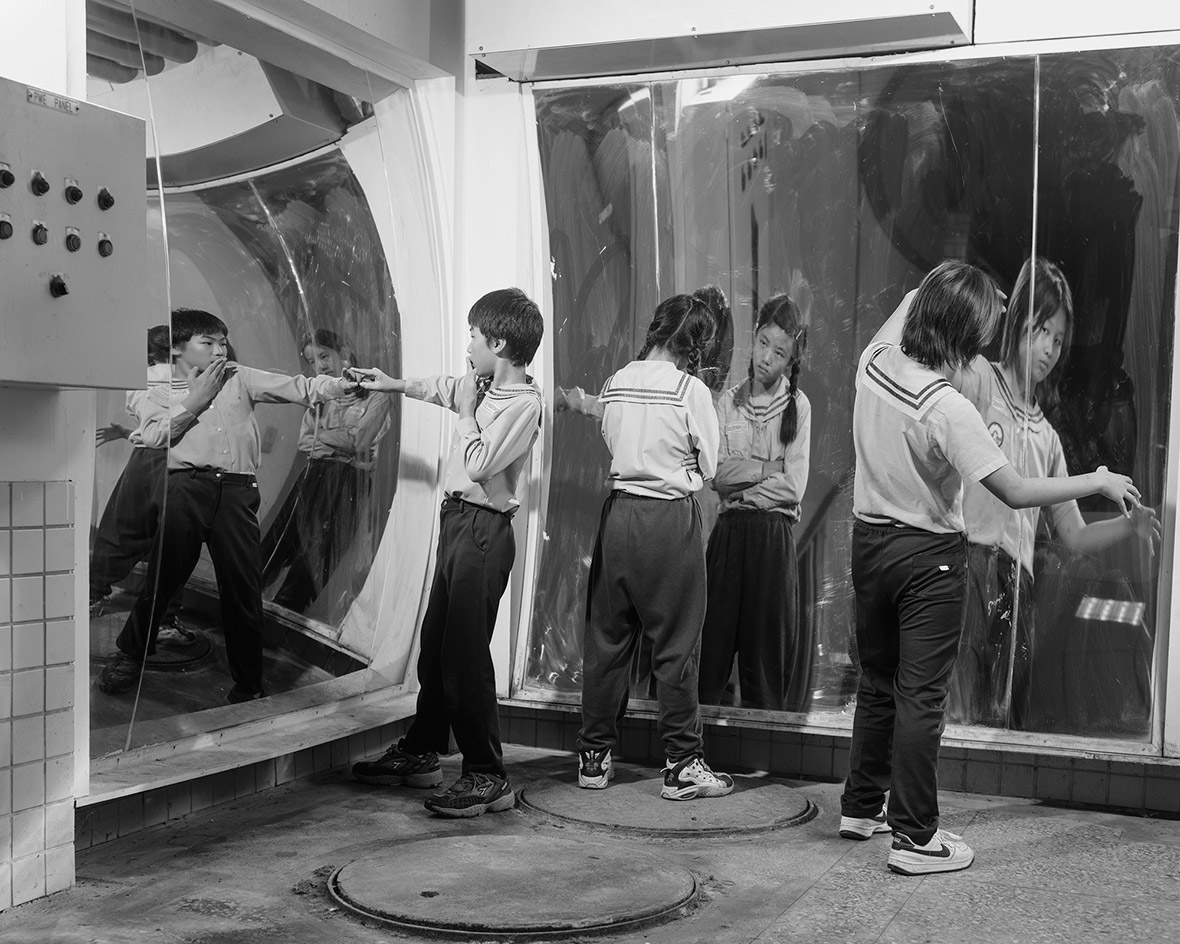
Now in its 49th edition, Rencontres d’Arles (2 July – 23 September) kicks off its jam-packed opening week with talks, workshops, and exhibitions as well as the book-specific programme Cosmos Arles. Spanning more than 40 exhibitions and satellite events, the festival offers a broad survey of photography, from emerging artists, to key works from by the likes of Robert Frank, Wolfgang Tillmans, Raymond Depardon, and William Wegman. Highlights this year in clude the exhibit ‘Run Comrade, The Old World is Behind You’, which draws parallels between society today and the tumultuous year of 1968; and the forward-looking show ‘Augmented Humanity’, exploring the digital revolution, including the integration of technology and science into the everyday, and the development of artificial intelligence and cyborgs.
Pictured, Hope, by Chin-Pao Chen, from the series Mirror, Dengkong Project series. Courtesy of the artist
Writer: Alex Jones
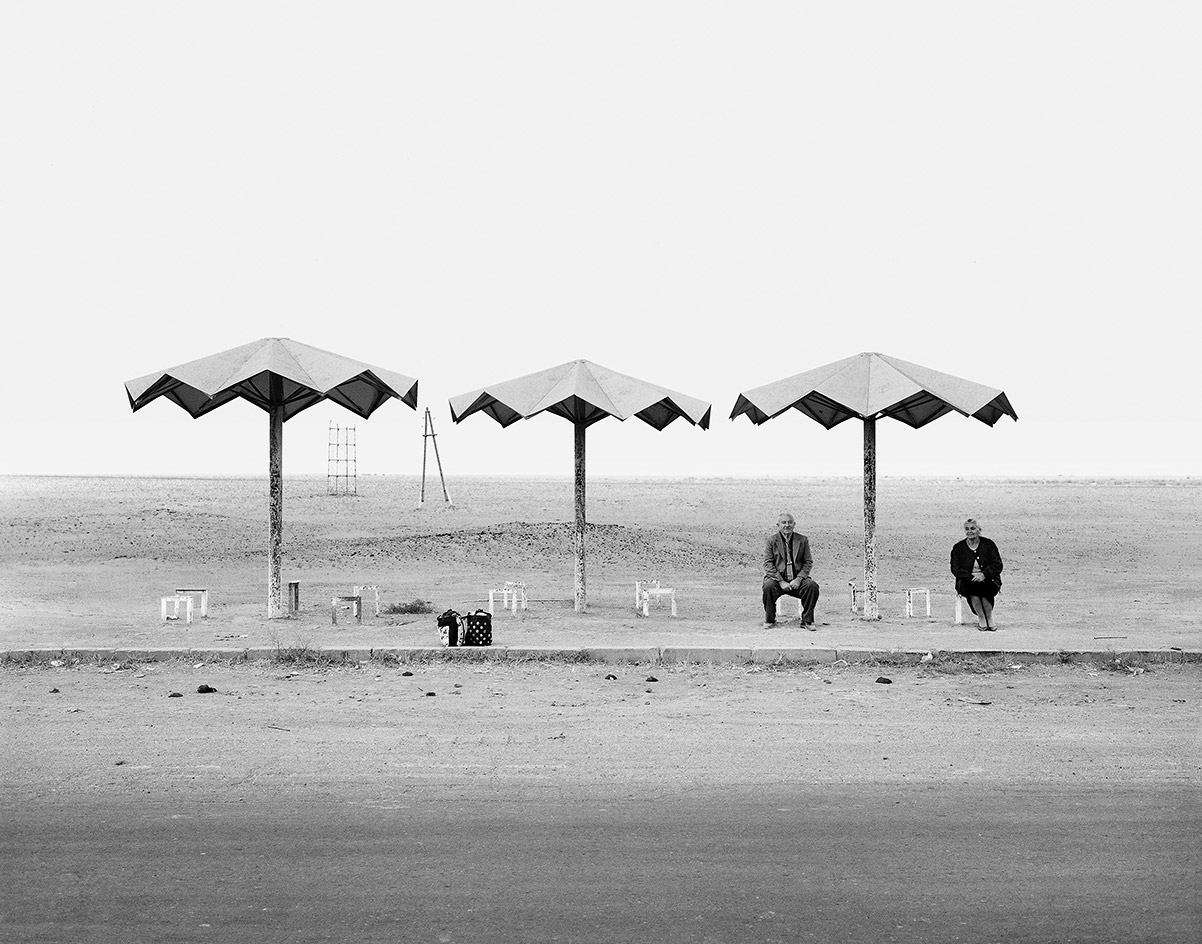
The photographer Ursula Schulz-Dornburg has devoted her career to investigating landscapes and places of transit, borders both physical and invisible, as well as relics from past cultures and political systems. ‘The Land In-Between: Photographs from 1980-2012’ (4 July – 9 September), opening at Frankfurt’s Städel Museum, is the first comprehensive survey of the artist’s work. The show explores the traces of civilisation left in the landscape, from the dissolution of the Soviet union to the Gulf Wars and the eradication of cultural landmarks by the Islamic State. One of the series exhibited, Bus Stops. Armenia. 1997/2011 (pictured), focuses on the modernist architecture and infrastructure left behind in post-Soviet Armenia.
Pictured, Erevan – Gyumri, 2004, by Ursula Schulz-Dornburg, from the series Bus Stops. Armenia. 1997/2011
Writer: Alex Jones
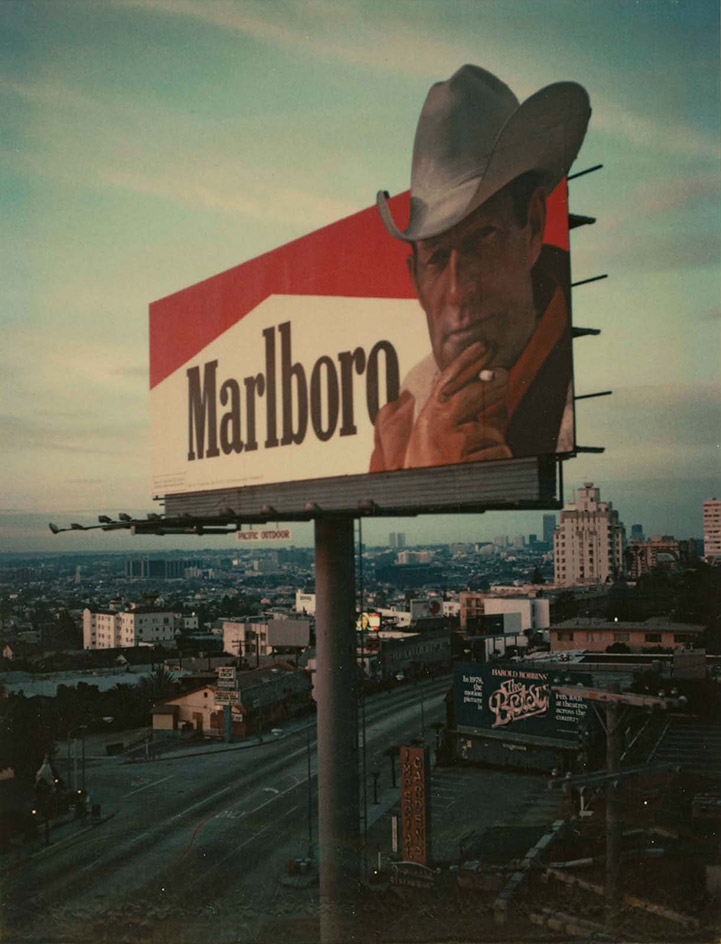
C/O Berlin opens a duet of exhibitions exploring the influence of Polaroid on 20th-century artists as well as contemporary culture. One of the exhibitions, ‘Wim Wenders: Instant Stories’ (7 July – 23 September), includes a selection of approximately 240 Polaroids by Wim Wenders. The filmmaker and artist used Polaroid as a complimentary tool for research, often taking daily snapshots of objects and moments. Prior to the camera’s public release, the Polaroid company sent Wenders a prototype of its SX-70 instant camera, which he incorporated into the narrative of his 1974 film Alice in the Cities. The thousands of images in the exhibition amount to a biographical story of Wenders’ life, depicting his numerous film sets, travels throughout Europe and the United States, as well as intimate portraits of celebrity friends such as fellow photographer and director Dennis Hopper.
Pictured, Dead Man Smoking, LA, 1977, by Wim Wenders. © Wim Wenders. Courtesy of Wim Wenders Foundation
Writer: Alex Jones
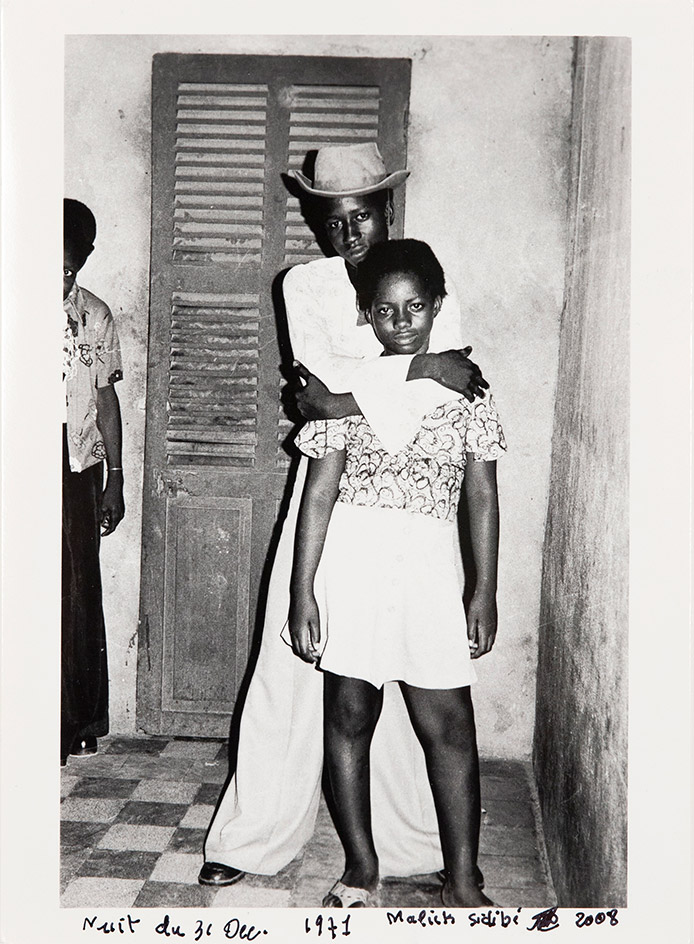
Throughout the 1960s, Bamako-based Malick Sidibé documented the explosion of independence in the once colonially-controlled Mali. Revelling in the country’s newfound freedom, a vibrant movement took hold where individuals expressed themselves through fashion, music and dance. This individualist approach helped shaped wider societal and political expression, celebrating African personality and independence. Sidibé’s work was key in documenting this landmark cultural shift, offering key perspectives of a newly empowered nation able to shape its own future and identity. ‘LOVE POWER PEACE’ (28 June – August) is Sidibé’s seventh solo show with New York’s Jack Shainman Gallery.
Pictured, Nuit du 31 Décembre, 1971-2008, by Malick Sidibé
Writer: Alex Jones
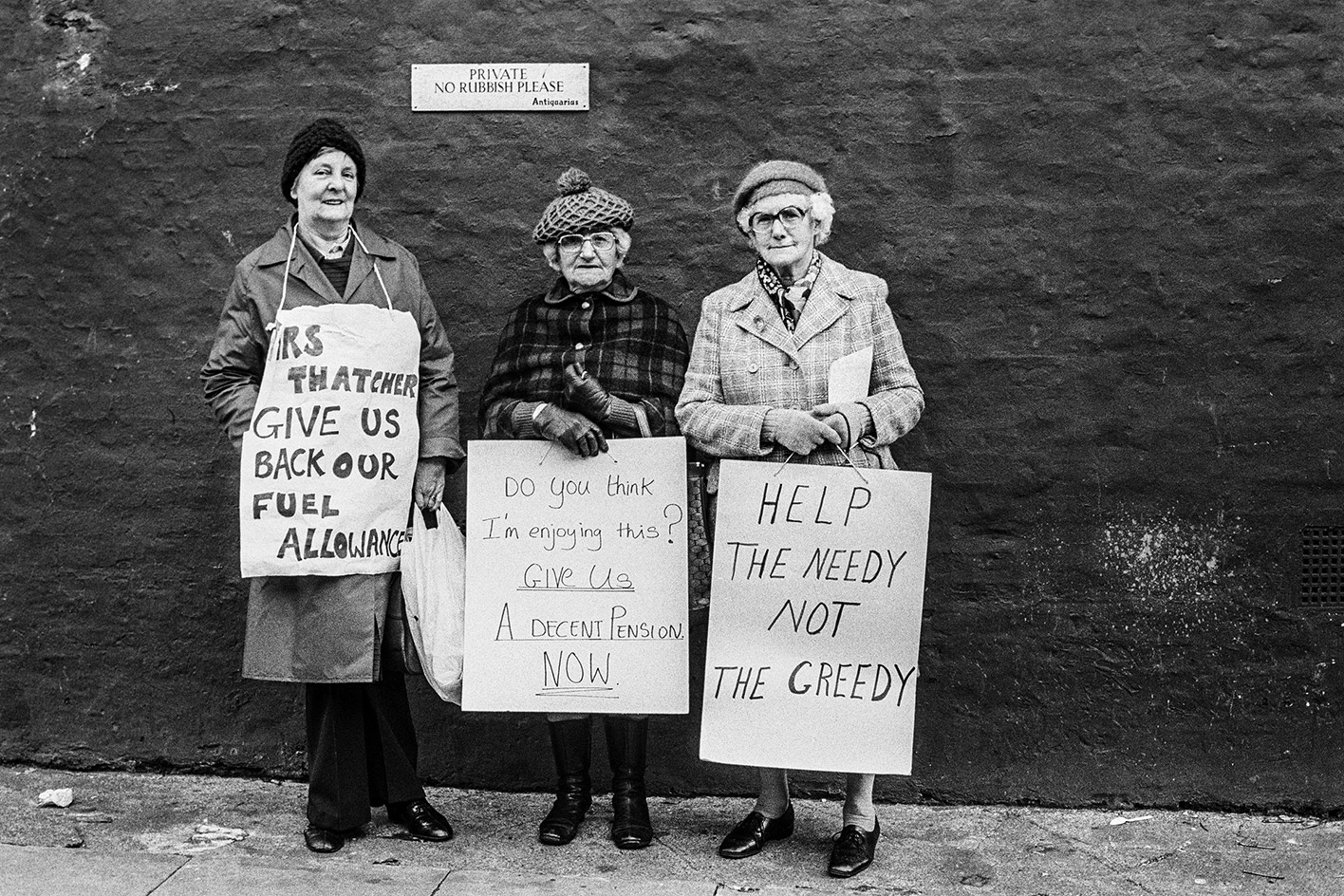
A retrospective of photojournalist Jane Bown CBE (1925-2014) opens at Proud Galleries in London, tracing her six decade-long career documenting British austerity in the 1950s, through to the rise of celebrity culture. Bown gutsily chose a creative path in a male-dominated industry, gaining recognition for her candid style as well as her unobtrusive presence while photographing celebrities – often all she required was one reel of film, 15 minutes with her subject and indirect sunlight from a window. Bown worked on several assignments for The Observer, covering women’s demonstrations, political strikes, and more. She also demonstrated a knack for portraiture, capturing cultural icons such as Queen Elizabeth, Mick Jagger, The Beatles, and Samuel Beckett. ‘Jane Bown: The Observer’ is on view 28 June – 12 August.
Pictured, Pensioners protesting outside Margaret Thatcher’s home, 1980, by Jane Bown. © Jane Bown Estate
Writer: Alex Jones
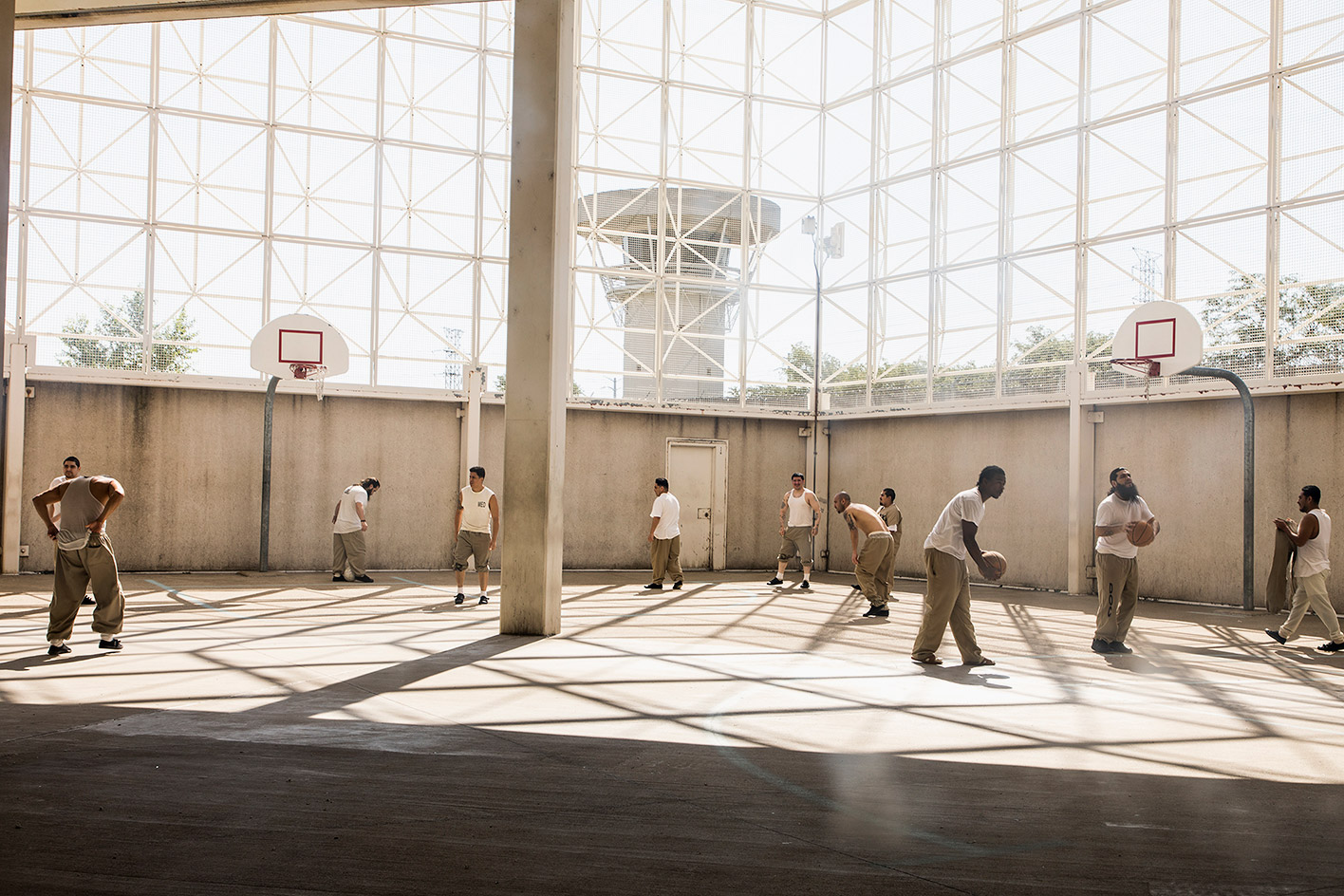
Whittled down from more than 1,000 submissions, the 2018 Aperture Summer Open features 18 artists ‘seeking to reckon with the currents and contradictions of life in the 21st century’. From the exploding opioid crisis to rising incarceration rates in the US, the exhibition tracks every aspect of society’s development through the eyes of photographers including Lili Kobielski, Maria Sturm, and Camila Falcão. The Aperture Summer Open is an annual open-submission exhibition held at Aperture Foundation’s gallery in New York. ‘The Way We Live Now’ is on view from 27 June – 16 August.
Pictured, Untitled, Cook County Jail, 2017, by Lili Kobielski. © The artist
Writer: Alex Jones
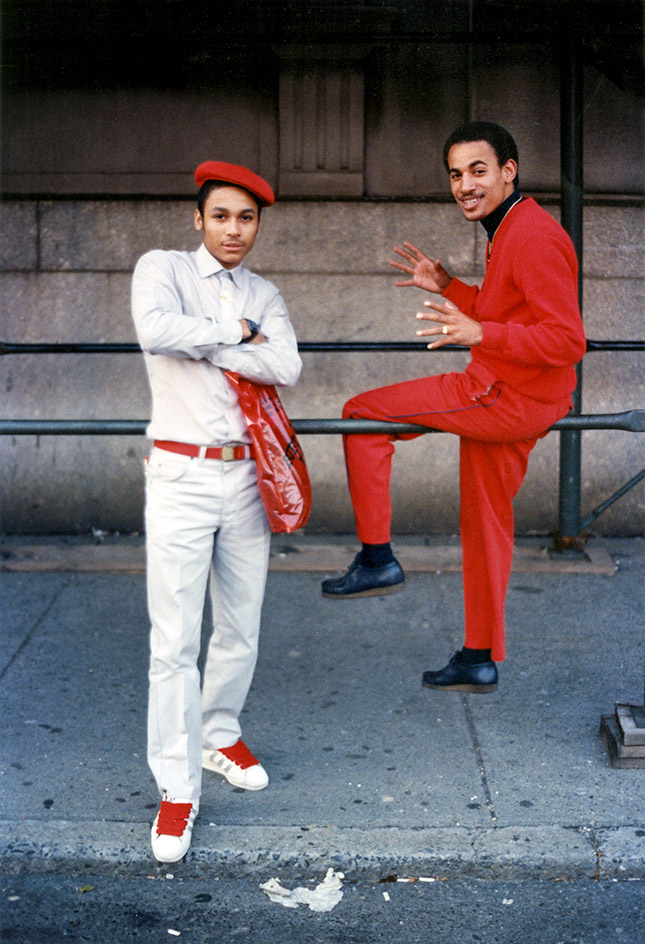
An exhibition at Los Angeles’ Getty Center traces the transformation of fashion photography throughout a century, from 1911 until 2011. Featuring over 160 fashion photographs alongside a selection of costumes, illustrations, magazine covers, videos and advertisements, the exhibit presents the work of more than 80 photographers including heavyweights like Richard Avedon, Helmut Newton, Nick Knight, Irving Penn, and Herb Ritts. African-American artist Jamel Shabazz turned his lens on his native Brooklyn, in an empowered celebration of the local community. ‘Icons of Style: A Century of Fashion Photography 1911-2011’ is on view at Getty Center from 26 June – 21 October.
Pictured, The Latin Connection, 1982, by Jamel Shabazz, digital chromogenic print. Courtesy of Jamel Shabazz
Writer: Alex Jones
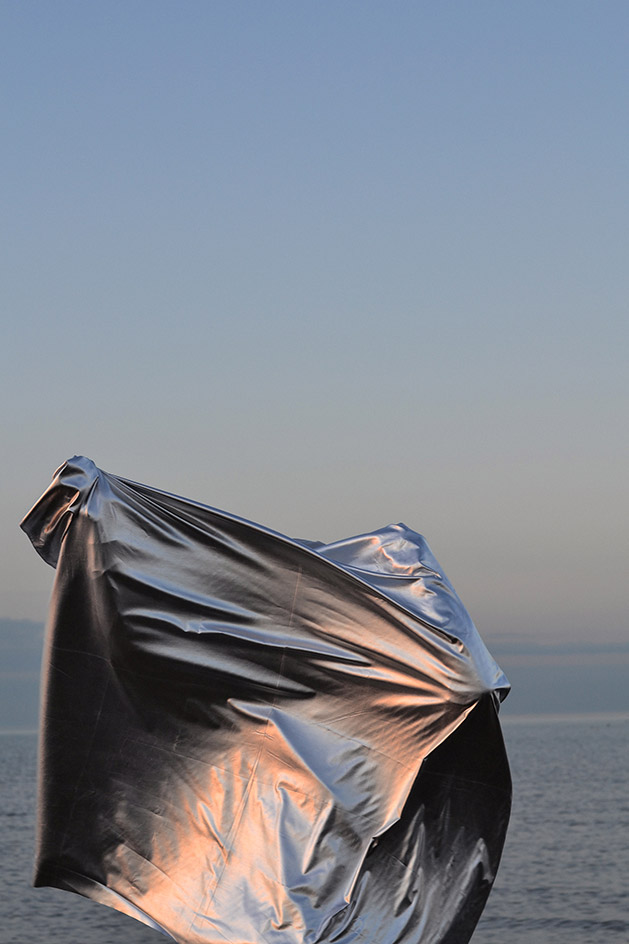
Exhibiting work from the BA and MFA photography students at UCA Farnham, Photo Farnham Showcase 18 (7-15 June) highlights moving image, installation-based work, as well as artist-published books. Olivia Horn’s series The Plastic Age (pictured) examines wider social and environmental issues through the human form. Marrying portraits with abstract shots of plastic and landscapes from one of the worst polluted beaches in the UK, Horn asks the viewer to assess the ongoing impact that unrecycled plastic has on the environment and wildlife. An accompanying Photo Farnham publication launches at The Photographers’ Gallery in London on 25 June.
Writer: Alex Jones
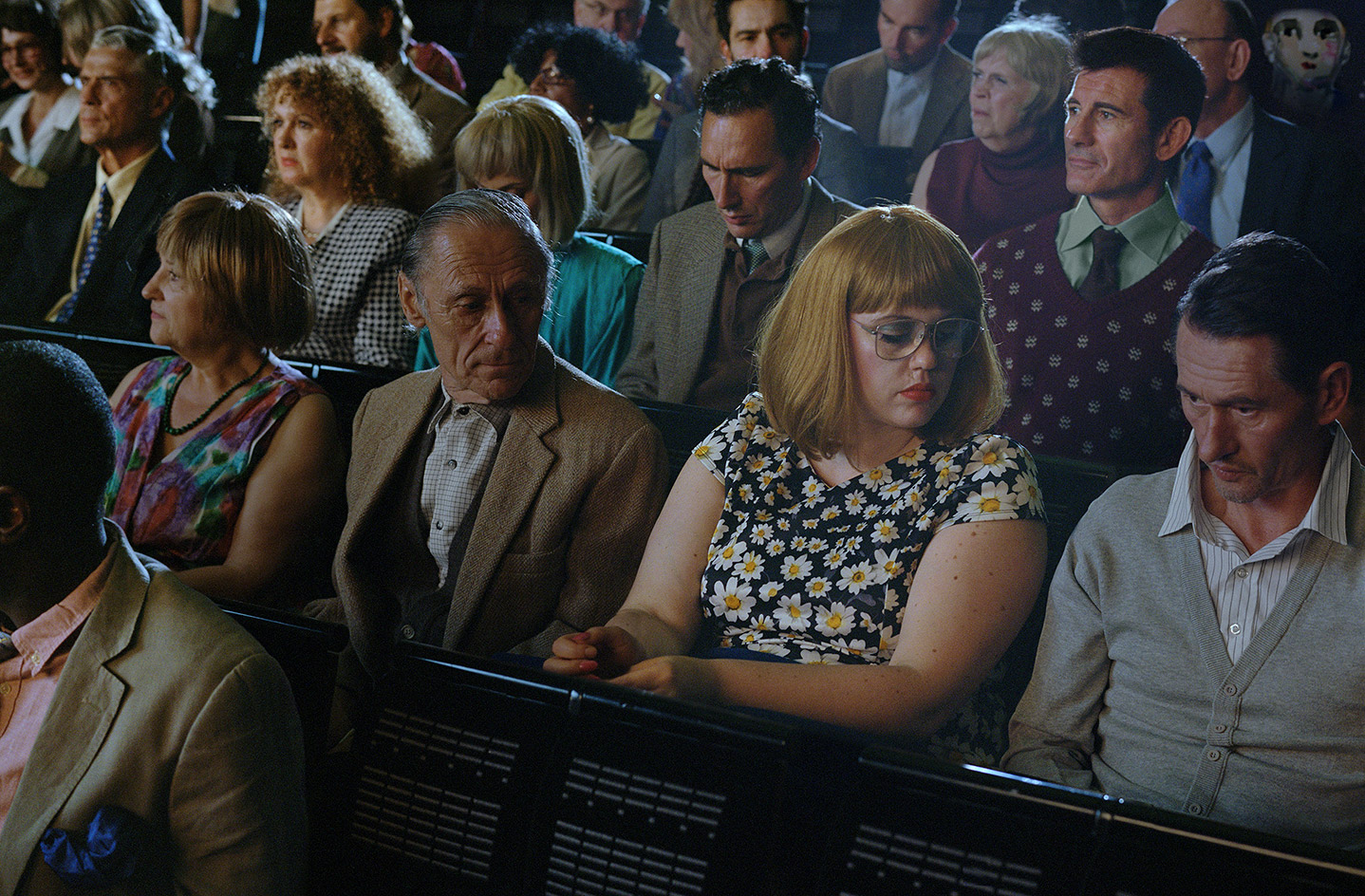
One of two major exhibitions opening at The Photographers’ Gallery in London, ‘Silver Lake Drive’ (15 June – 14 October) marks the first mid-career survey of American artist Alex Prager. The extensive exhibition covers Prager’s career to date, displaying over 40 large-scale Technicolor photographs alongside her film works. Bridging multiple genres, Prager’s work blends a multitude of visual references from 20th-century cinema to fashion photography, as well as touching stylistically on photographers William Eggleston and Stephen Shore.
Pictured, Orchestra East, Section B, 2016, by Alex Prager. © Alex Prager Studio and Lehmann Maupin, New York and Hong Kong. Courtesy of Alex Prager Studio, Lehmann Maupin, New York and Hong Kong.
Writer: Alex Jones
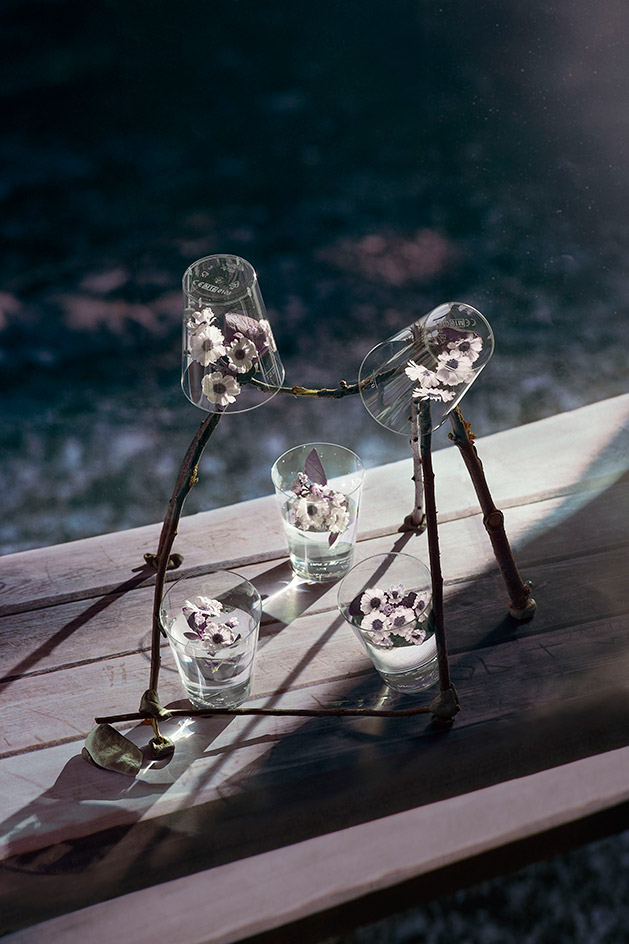
Foam present the first solo exhibition of Thomas Albdorf, one of the recipients of a fellowship from the Amsterdam gallery. ‘Room With a View’ (15 June - 2 September) presents an offbeat account of what appears to be a surreal Mediterranean holiday. Albdorf’s work explores themes of technology and reality, particularly how imaging technology is increasingly shaping our reference to the physical world. By using found imagery, street view, social media and image banks and digitally altering them to create new images, the artist presents these images as a virtual vacation. The new body work is shown alongside recent series General View (2017), pictured, and I Know I Will See What I Have Seen Before (2015), loosely inspired by trips to Yosemite National Park and Austria respectively.
Pictured, Found This On A Picnic Table I Mean It’s Nice But Pretty Sure You’re Not Allowed To Pick Flowers Here???, 2017, by Thomas Albdorf, from the series General View. © Thomas Albdorf
Writer: Alex Jones
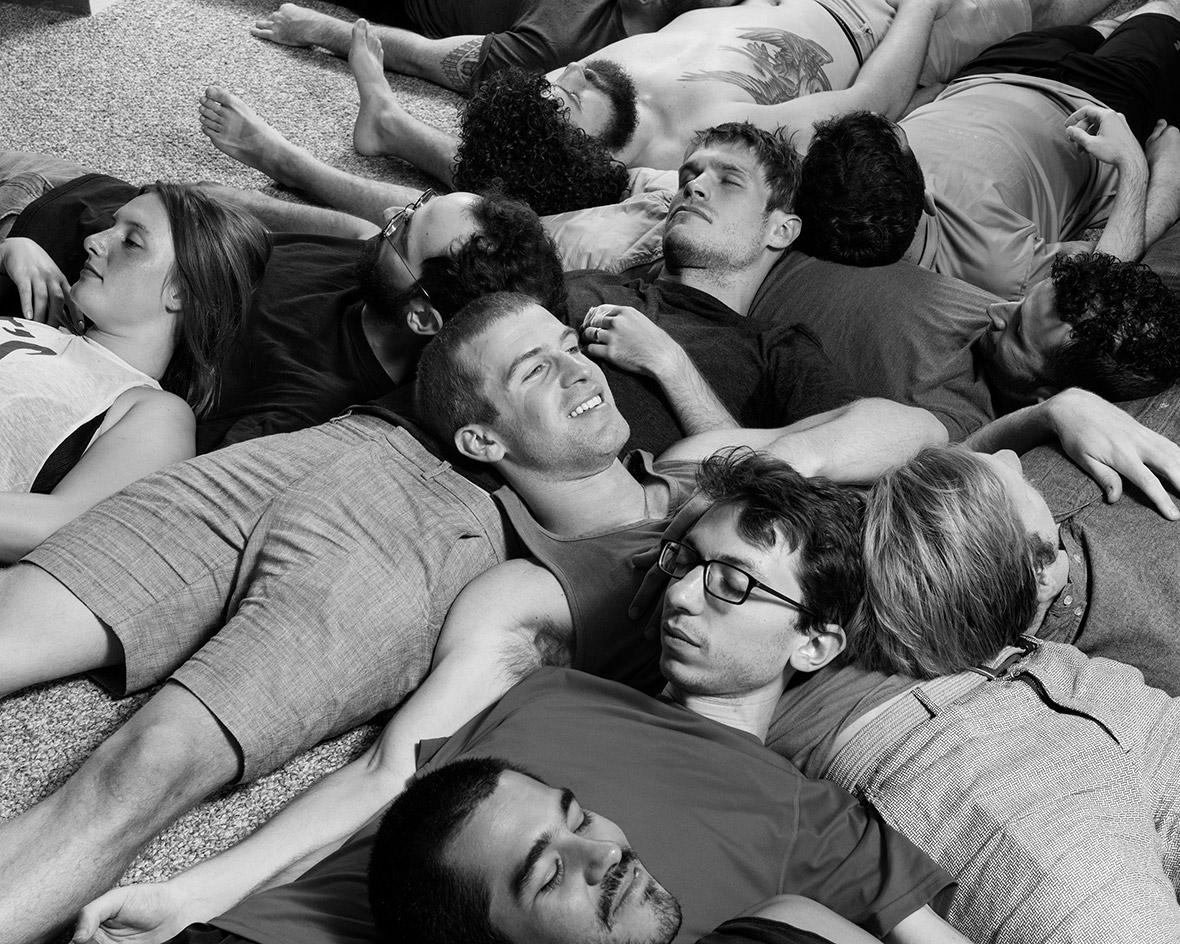
Presented by Brooklyn’s Red Hook Labs, the second edition of ‘Labs New Artists’ (13-24 June) shines the spotlight on 25 unrepresented emerging photographers, chosen for their innovative approaches to the medium and image-making. Following an open call, the final artists were chosen by a jury of industry leaders including photography directors at publications including WSJ, Aperture, Vogue Italia, and The New Yorker. The photographers will receive continued support after the exhibition in a year-long mentorship with their respective juror. One of the selected artists is Eli Durst, the recipient of the 2016 Aperture Portfolio Prize and the 2017 Aaron Siskind Individual Photographers Fellowship grant. His series Connecticut Community Center depicts varying activities from spiritual classes to boy scouts and corporate team building exercises across different community centres throughout the southern US state. Red Hook Labs is a public benefit corporation dedicated to creating and furthering creative industry skills, mentorship and education within developing areas.
Pictured, Pile, 2017, by Eli Durst, digital pigment print. © Eli Durst. Courtesy of Red Hook Labs
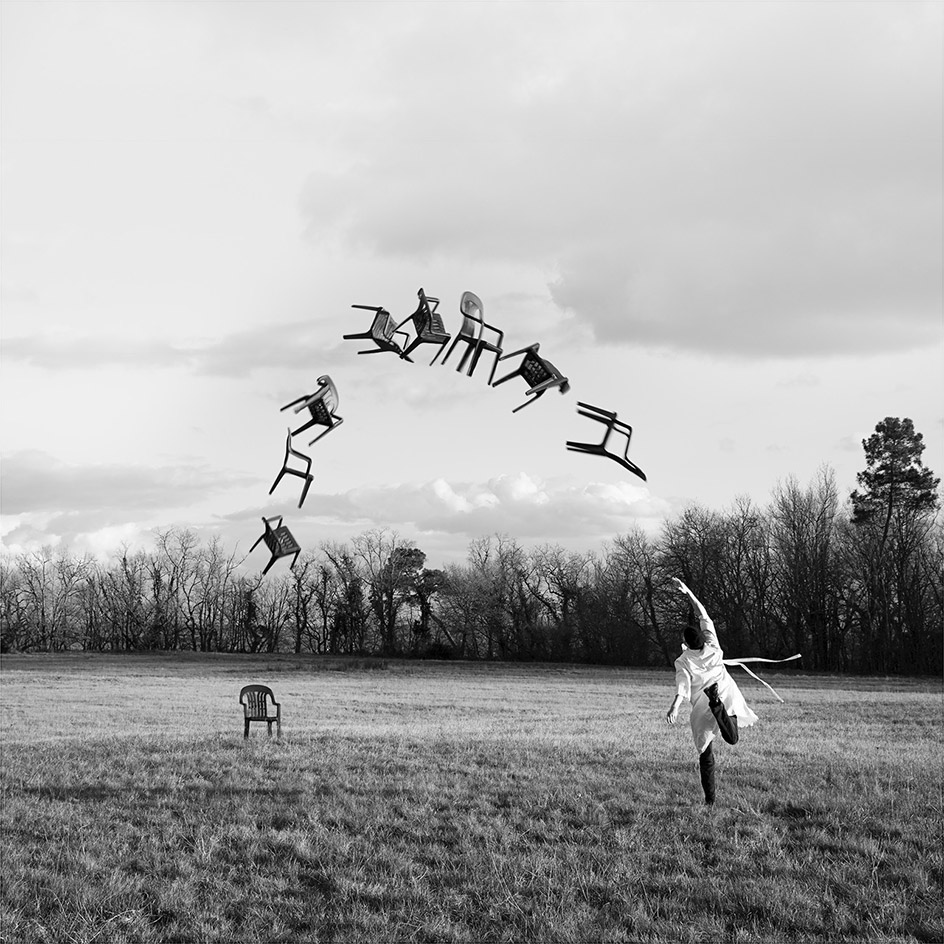
Photo Basel (12-17 June) returns for its fourth edition at Volkhaus Basel with a dedicated programme for photography. Coinciding with Art Basel, the fair brings together 35 exhibitors across 13 countriess. This years sees the debut of the a new sector, ‘Master Cabinet: Pivotal Moments’, which is dedicated iconic photographic images from the 20th century. Guillaume Martial, exhibited by Galerie Esther Woerdehoff, uses playful compositions and techniques to alter our perception. Here, the artist continues his playful diversion of context by dating the image 1882, creating the illusion that the work was produced in a bygone era.
Pictured, Lancer de chaises, 1882, by Guillaume Martial, archival inkjet print. Courtesy of Galerie Esther Woerdehoff
Writer: Alex Jones
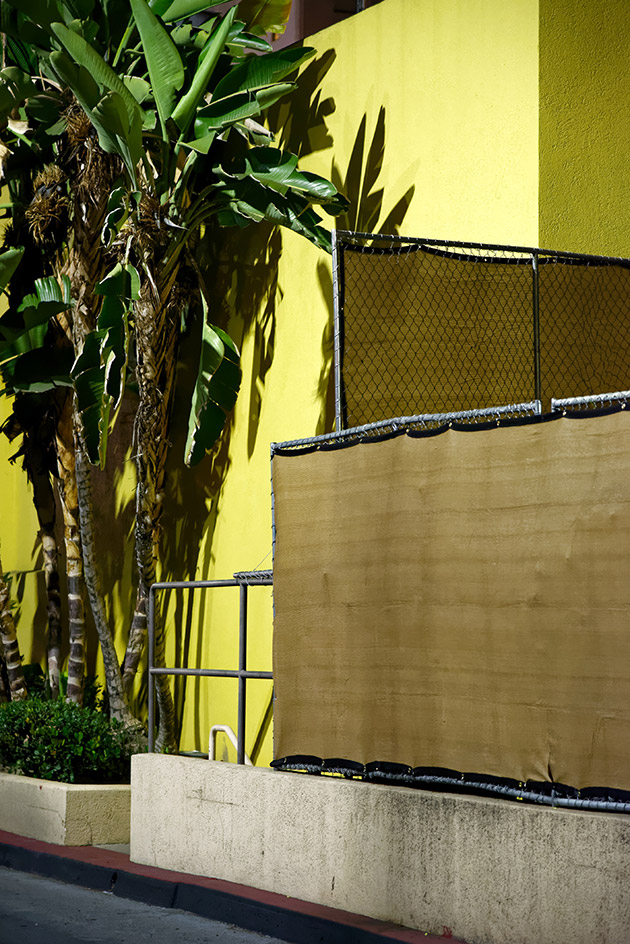
Joachim Hildebrand travelled across the seven states comprising the American Southwest, exploring the clichés and stereotypes we associate with the American Frontier and Wild West. Instead of focusing on the region’s famed landscapes, the artist instead hones in on ‘blurred contours, contradictions, borders, and transitions’. Published by Kehrer, Wild West is a visual adventure exploring the global idea of the Wild West located within the American West, examining the space where imagination meets reality. An accompanying exhibition runs at Alp Galleries in Frankfurt am Main from 7 June until 18 August.
Pictured, 3_Untitled #5740, 2015-2017, by Joachim Hildebrand, from the series Wild West, 2015-2017
Writer: Alex Jones

The second issue of OOF – a bi-annual print magazine examining the intersection between art and football – is available from 5 June ahead of the 2018 FIFA World Cup. Published by Time Out London visual art editor Eddy Frankel and gallery director Justin Hammond, OOF considers how artists have used football as a metaphor to explore wider narratives of community, passion, masculinity, belief and violence. Contributions to the second issue include ‘a heart-wrenching love letter to football’ by Juergen Teller; the post-Soviet football photography of Dmitry Gutov; and the hunt for the lost statue of Gabriel Batistuta.
Pictured, Amazing Grace, by Henry/Bragg. Courtesy of the artists. Issue 2 is available from the OOF magazine website or from selected retailers.
Writer: Alex Jones
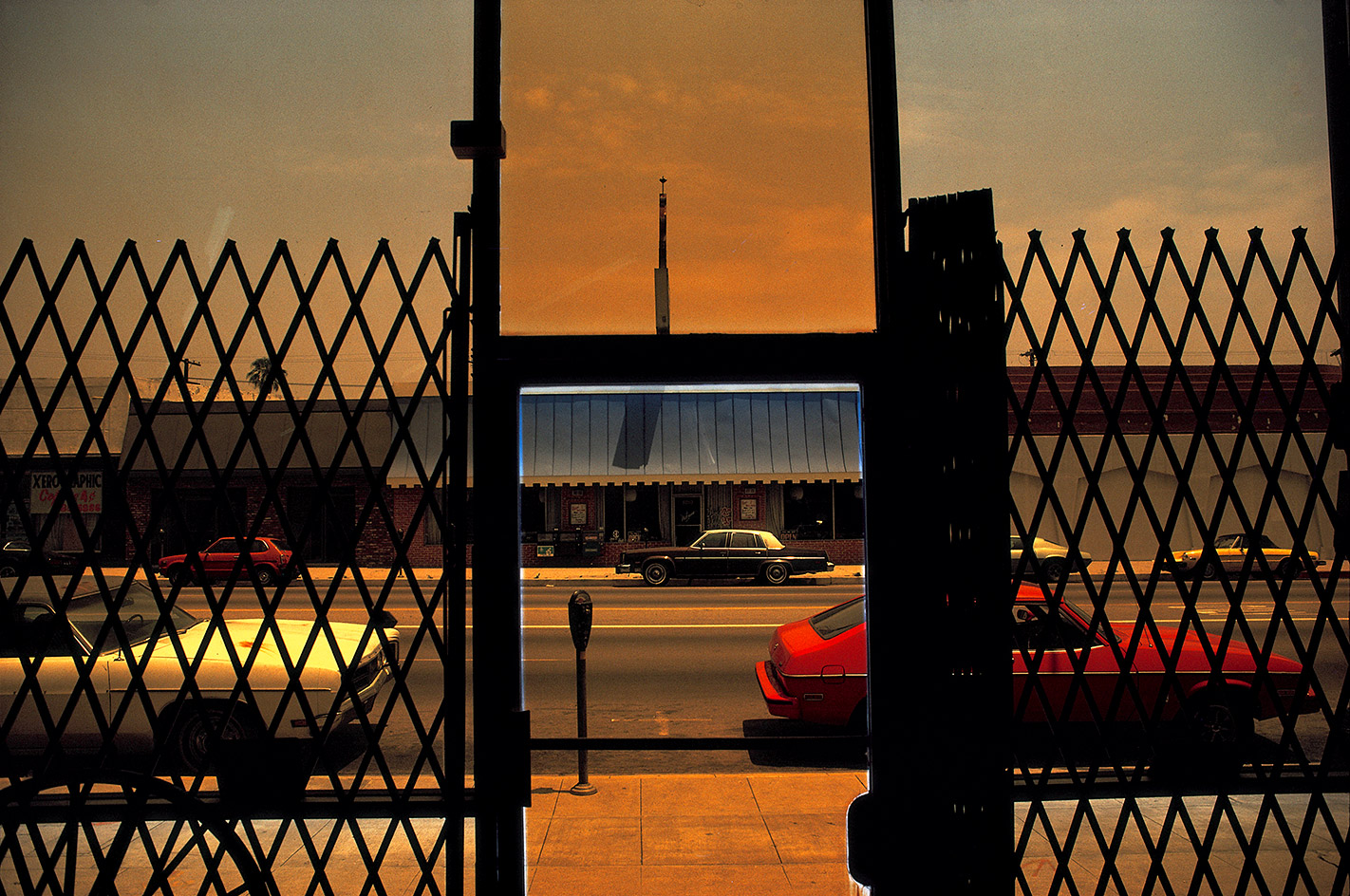
Fifty years on from 1968 – a tumultous year in the US marked by the civil rights movement, anti-Vietnam protests and Martin Luther King’s assassination – Magnum Photos has assembled a collection of 78 photographs evaluating what ‘freedom’ means and made them available for purchase. Harry Grayaert’s contribution from his series East/West, pictured, spans two bodies of work, one taken in Los Angeles and Las Vegas in 1981 and the other in Moscow in 1989. Gruyaert sought to document the creative, liberal and artistic natures of these American cities as well the excess and idea of freedom embedded in American culture compared to the rigid state controlled atmosphere within a shrinking communist state, noting not only the differences but also the similarities.
Pictured, Los Angeles, California, 1981, by Harry Gruyaert. © Harry Gruyaert / Magnum Photos. Magnum’s Square Print Sale runs from 8am EST Monday 4 June until 6pm EST Friday 8 June. Signed and estate stamped, museum quality, 6x6” prints from over 70 artists will exceptionally be available for $100, for five days only, from the Magnum Photos website.
Writer: Alex Jones
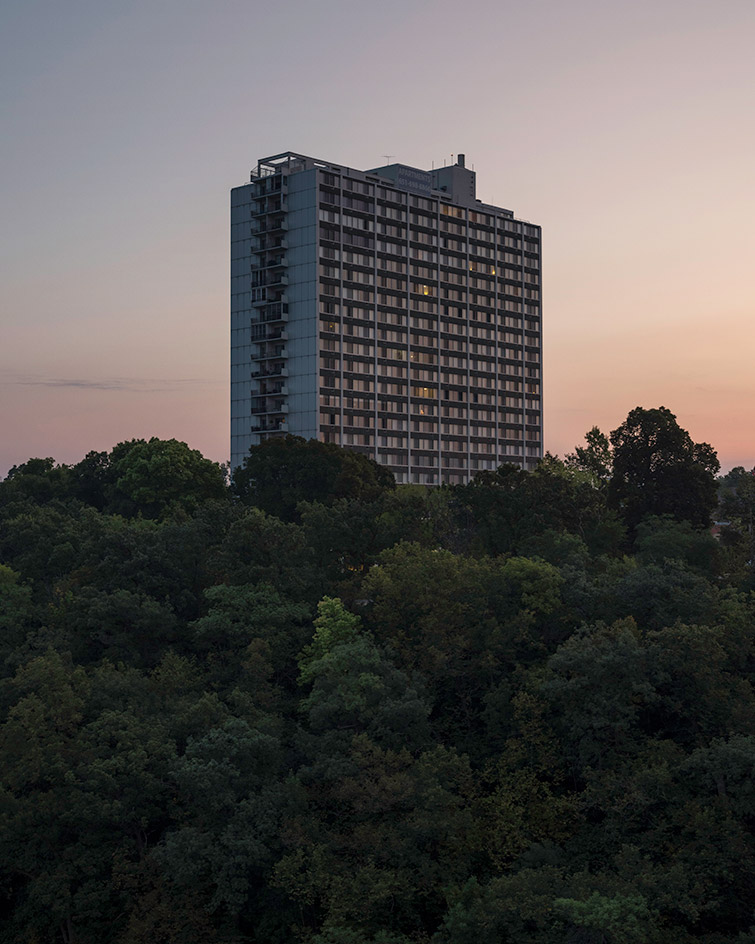
A major collaborative project between Fujifilm and Magnum Photos, ‘HOME’ brings together 16 photographers from the iconic agency for a global exhibition tour spanning ten cities, photobook, and series of of events. Each artist was tasked with creating a short visual essay on the broad theme of ‘home’; some photographed a geographical space of importance, while others took a more personal approach recreating childhood memories or portraits of their family. HOME will be on view in London (The Vinyl Factory, 18 – 27 May 2018); Paris (Galerie Joseph, 10-17 June 2018); Toyko (Daikanyama Hillside Forum, 21-30 July 2018); and Cologne (Koelnmesse, 26-19 September).
Pictured, Minneapolis, Minnesota, USA, 2017, by Alec Soth. © Alec Soth/Magnum Photos
Writer: Alex Jones
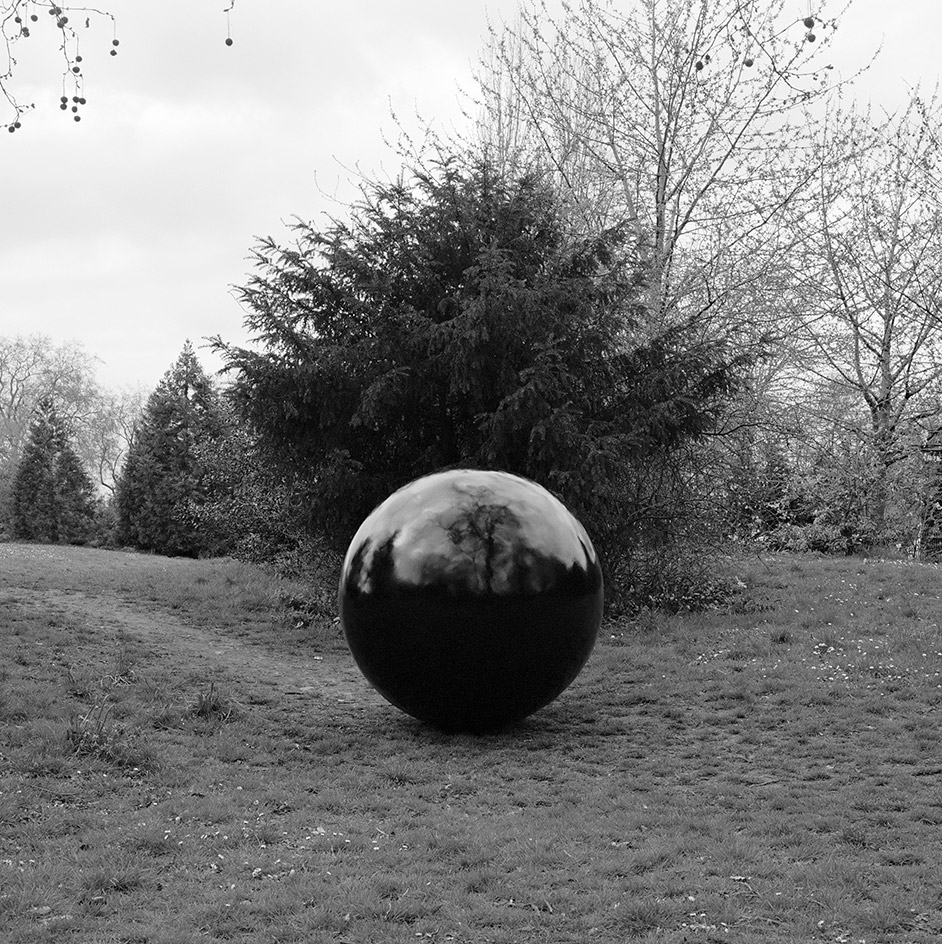
Coinciding with Photo London at Somerset House, Peckham 24 is a three-day festival of contemporary photography celebrating young, experimental artists. From the British Journal of Photography’s ‘One’s to Watch’ to ‘Concealer’ curated by Tom Lovelace, over 30 artists are participating in a range of exhibitions across Copeland Park, Bussey Building, Hannah Berry Gallery and Holdron Arcade.
Pictured, Black Marble, London, 2016, by Tom Lovelace. © Tom Lovelace
Writer: Alex Jones
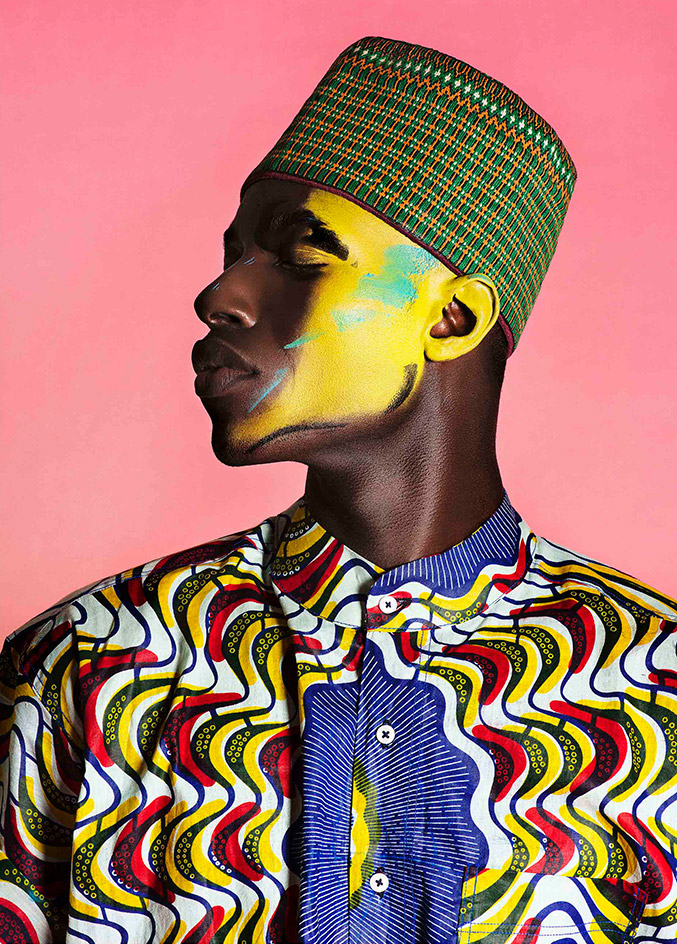
Forming one of the many satellite events surrounding this year’s Photo London, Foam’s annual touring exhibition puts 20 young photographers in the spotlight at Beaconsfield Gallery. This year’s showcase is marked by a notable number of of long-term projects, sometimes involving years of study or extensive travels, as well as the wide range of experimental mediums. Participating artists include Thailand’s Harit Srikhao; Kai Oh from South Korea; Switzerland and Guinea-based Namsa Leuba; and other talents from Mexico, USA, Italy, Iran, India and France.
Pictured, Damien, 2015, by Namsa Leuba, from the series NGL. © The artist
Writer: Jessica Klingelfuss
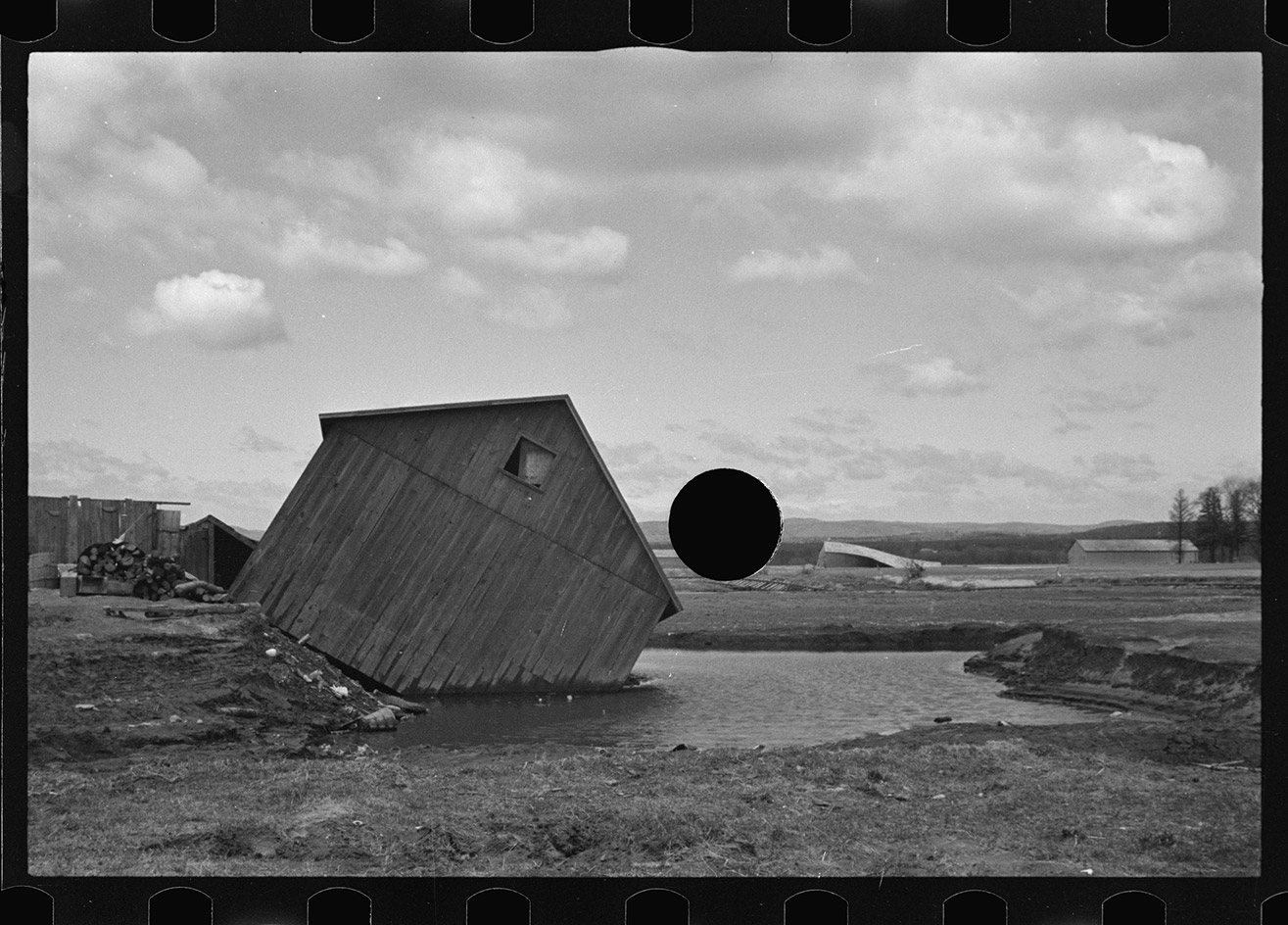
Throughout the 1930s, thousands of photographic negatives by American artists were systematically and irreparably damaged; these images came to be known as ‘killed negatives’. Now, an exhibition at Whitechapel Gallery in London, ‘Killed Negatives: Unseen Images of 1930s America’ (16 May – 26 August), features more than 70 of these images printed especially for the show. The exhibition sheds light on a historic photographic initiative undertaken by the Information Division of the Farm Security Administration (FSA) between 1935 and 1944, which saw the likes of Dorothea Lange and Walker Evans document American farm life during the Depression. The project was led by Roy E Stryker, who ruthlessly edited images which didn’t fit the FSA’s particular brief; those deemed unacceptable, untrue or irrelevant were punctured with a hole punch, effectively ‘killing’ them and deemed permanently unsuitable for publication.
Pictured, Untitled, possibly related to Tobacco fields devastated by the Connecticut River near Northampton, Massachusetts, by Paul Carter
Writer: Alex Jones
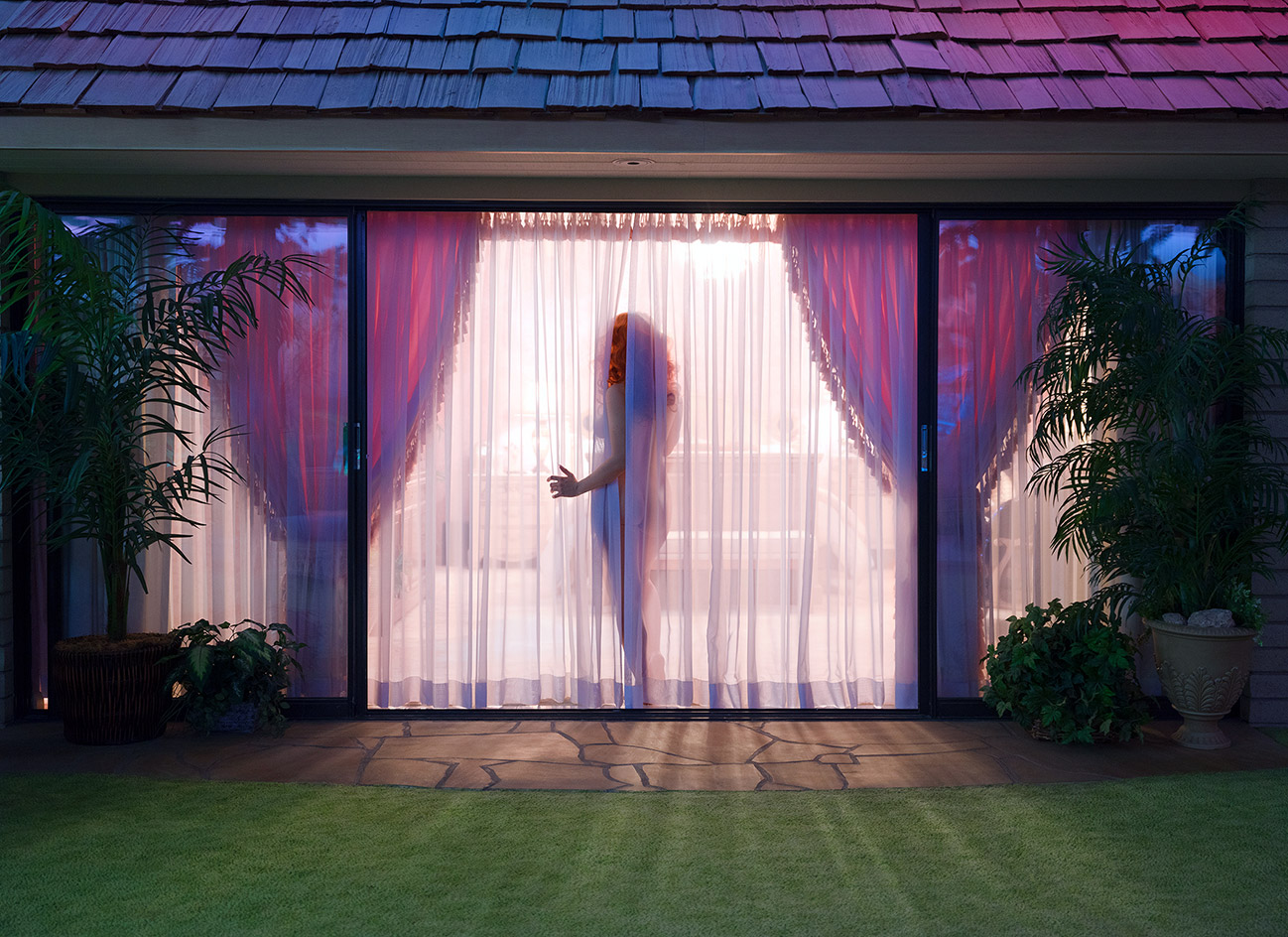
A new body of work by Juno Calypso, ‘What To Do With A Million Years’ (16 May – 23 June), goes on show at London gallery TJ Boulting. The series is set in a surreal house located in Nevada, USA. Built by Avon cosmetics founder Gerry Anderson in the 1960d during the height of the Cold War, the house was built 26ft underground and designed to withstand virtually any disaster. Due to the interior not being exposed to sunlight or outside elements, the interior is perfectly preserved, similar to the experience had a nuclear war or disaster happen outside. Calypso’s work will be on display at Photo London at TJ Boulting’s booth, while booklets are available for purchase at this year’s art publishing fair Offprint London.
Pictured, Rosemary’s Room, 2018, by Juno Calypso. Courtesy of Juno Calypso and TJ Boulting
Writer: Alex Jones
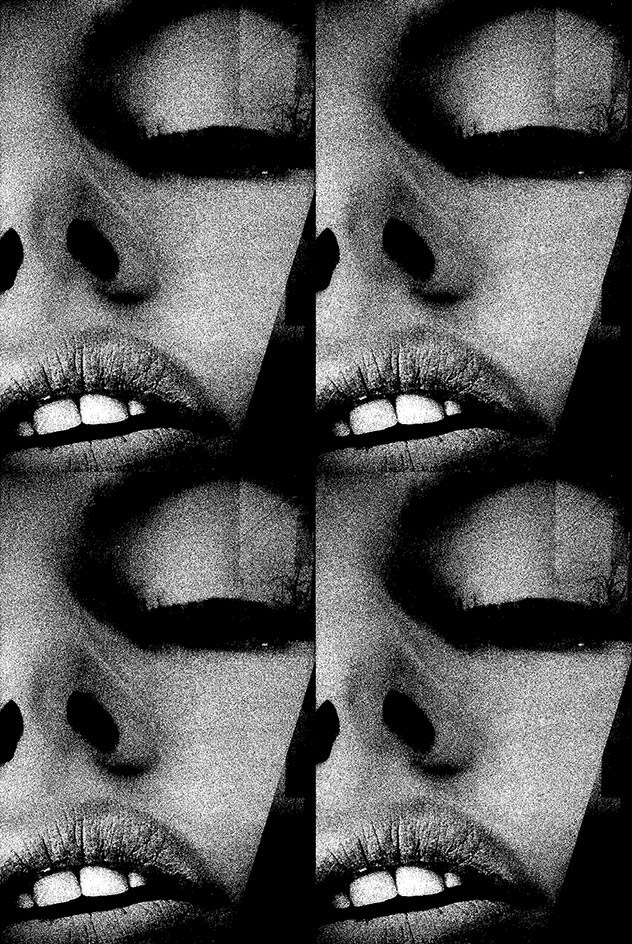
Hamiltons presents ‘Daido Moriyama: SCENE’ (15 May – 17 August), an exhibition of photographs selected by gallery owner Tim Jefferies from the Japanese artist’s extensive oeuvre and produced exclusively for the London gallery as silkscreens on canvas. Known for his gritty, high-contrast images, Moriyama broke convention as he exploded onto the photography scene in the 1960s, visually tracing a Japan in flux both culturally and socially. Moriyama’s work is on display at Hamiltons’ Photo London stand, as well as a Pavilion Commission at the art fair.
Pictured, Eros or something other than Eros, 1969, by Daido Moriyama. © Daido Moriyama
Writer: Jessica Klingelfuss
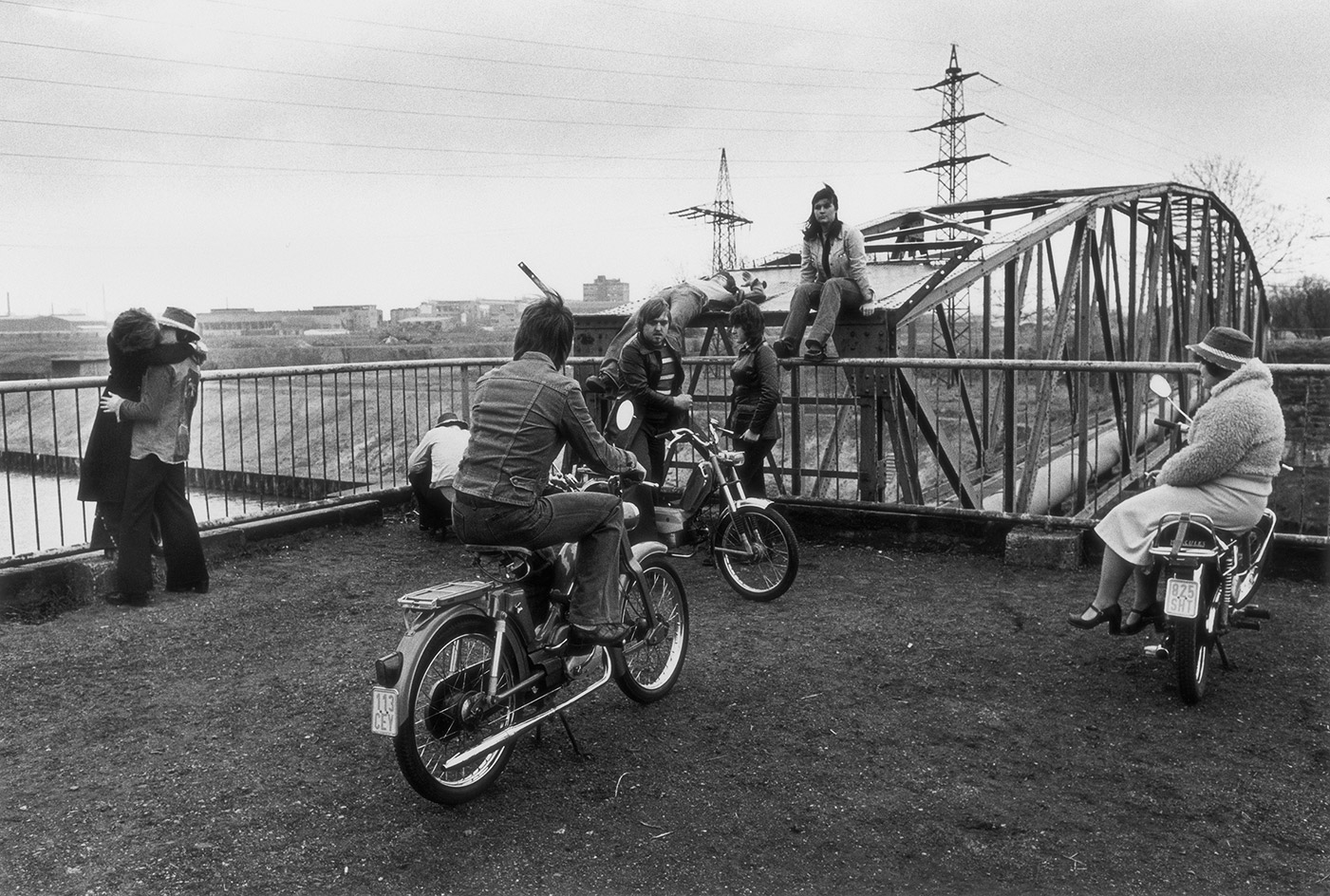
‘Bottrop-Ebel 76’ revisits Hong Kong-based photographer Michael Wolf’s first complete series, taken in a small German coal mining village in the Ruhr District in 1976, while he was still a student. Reflecting his early interest in social documentary, Wolf’s images frame the collective identity of a community in a changing industrial region, where work was declining due to the uncertain future of an industry on which many relied. ‘Bottrop Ebel 76’ is on view at Flowers Gallery in London from 11 May – 30 June, while will be discussing his practice at Photo London.
Pictured, from the series Bottrop-Ebel 76, by Michael Wolf. © Michael Wolf. Courtesy of Flowers Gallery
Writer: Alex Jones
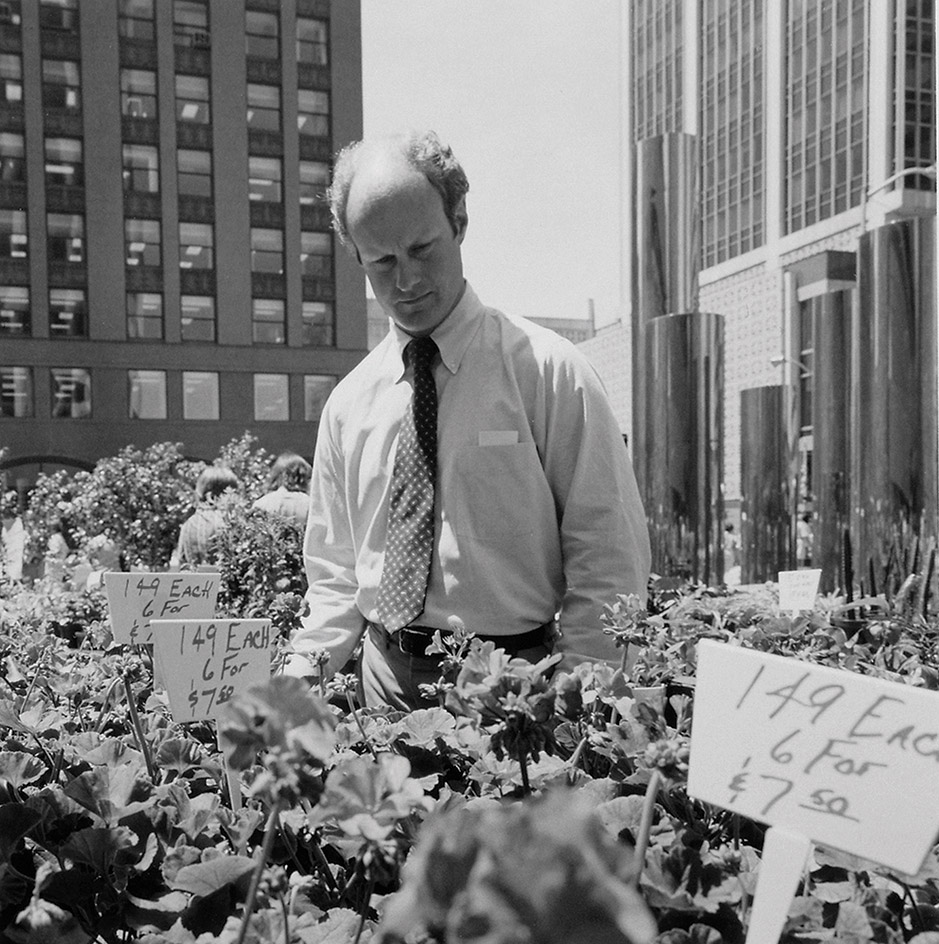
First published by Aperture 35 years ago and now out of print, Robert Adams’ Our Lives and Our Children, Photographs Taken Near The Rocky Flats Nuclear Weapons Plant gets a renewed sense of relevancy as the images go on show at Paris’ Fondation Henri Cartier-Bresson (16 May – 29 July). As the story goes, one day during the 1970s Adams noticed a column of smoke rising from a nuclear weapons production facility near Denver, Colorado and was compelled to capture the ‘the potential destruction of a nuclear disaster’ using his Hasselblad. The book has been republished by Steidl (€48).
Pictured, Untitled, Our Lives and Our Children, 1979-1982, by Robert Adams. © Robert Adams/Collection Centre national des arts plastiques/Photo: Yves Bresson. MAM Saint-Étienne Métropole, courtesy Fraenkel Gallery, San Francisco and Matthew Marks Gallery, New York
Writer: Alex Jones
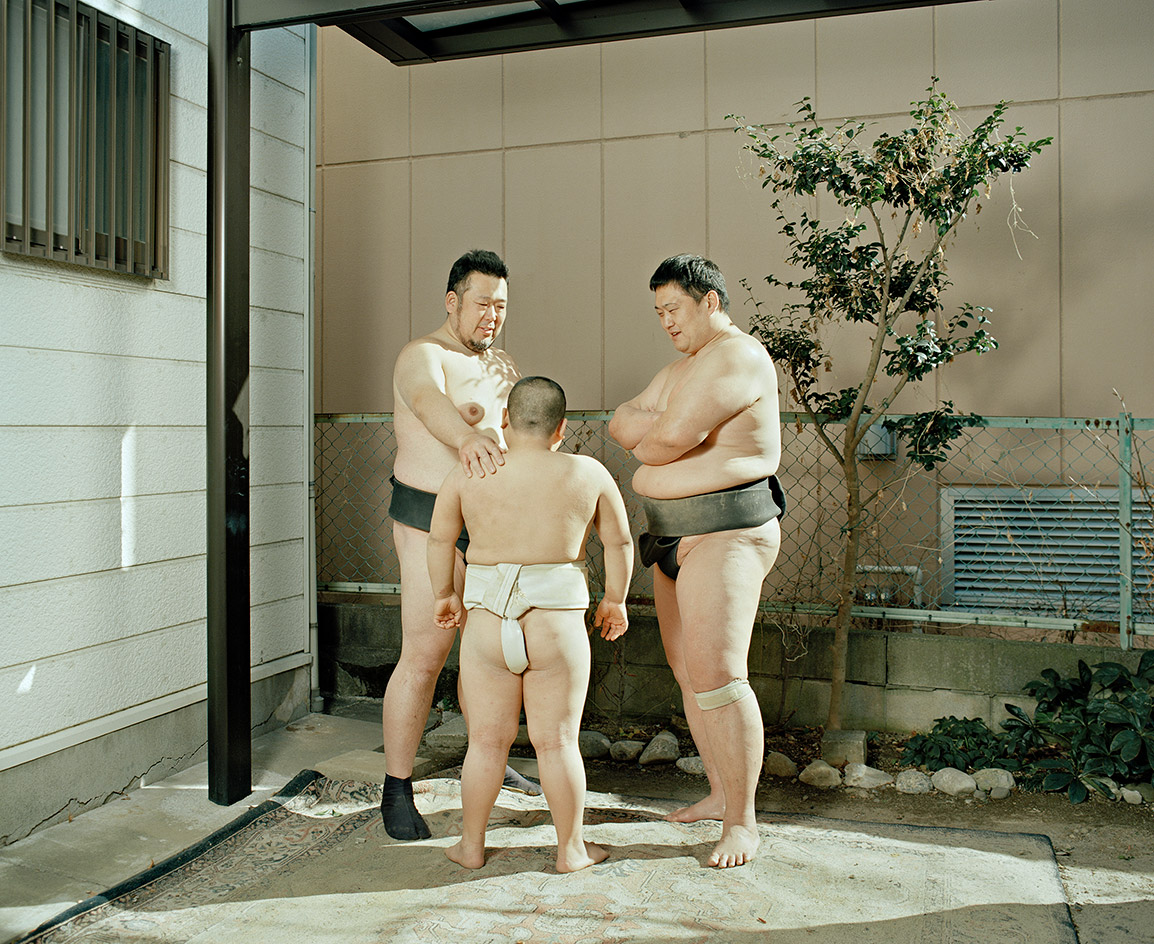
‘Tea Ceremony and Flower Arrangement’ (5 May – 10 June) opens at Antwerp gallery Ibasho, bringing together work from Belgian artist Max Pinckers and the late Swiss photographer Werner Bischof. Juxtaposing Bischof’s post-war images of a 1950s Japan – then still US-occupied – with Pincker’s constructions of modern cultural stereotypes, the exhibition explores how foreigners perceive Japan. Pinckers will be in conversation with curator Tristan Lund about his new self-published book Margins of Excess on Sunday 20 May at Somerset House, as part of Photo London.
Pictured, Sumo, 2015, by Max Pinckers. © Max Pinckers. Courtesy of Ibasho
Writer: Alex Jones
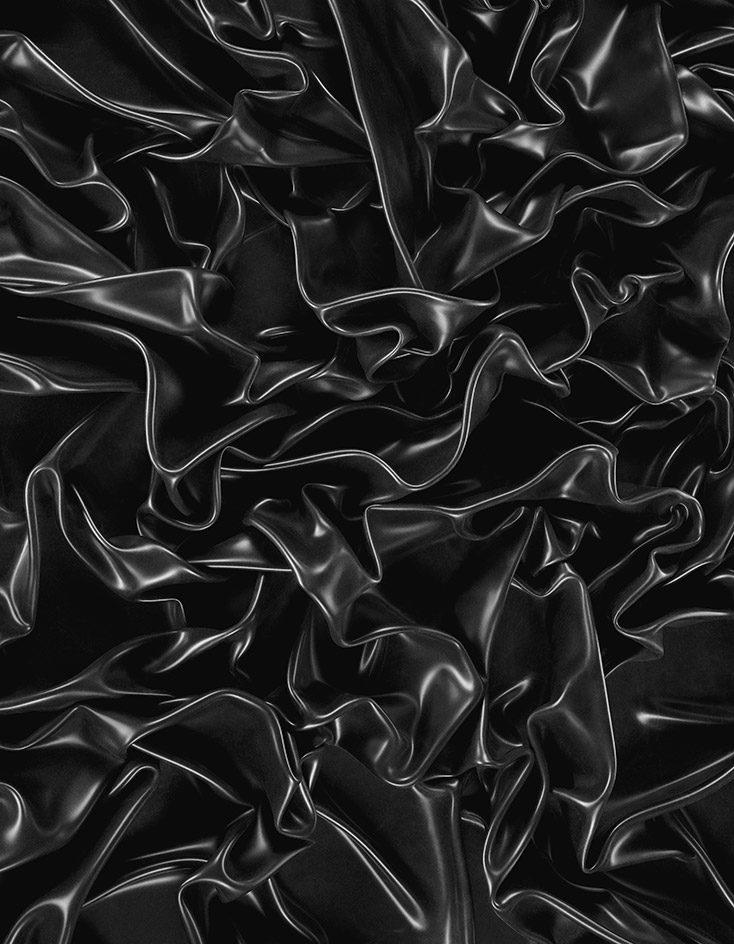
‘Reduction, Reduction’ (3 May – 30 June) is the inaugurating exhibition by still life photographer Robin Broadbent at Wren London, a newly launched photography gallery in East London. Broadbent has taken a selection of works from his book published last year by Damiani, producing them as silver gelatin and digital chromogenic photographic prints for the show. His distinct formal approach examines the qualities of space, light and line each object imprints on his camera, often reducing complex objects into minimalist, abstract shapes. Working mostly in black and white, he plays with shadow, silhouette, and volume to accentuate every shape and texture within each object he photographs.
Pictured, Black, 2016, by Robin Broadbent. © Robin Broadbent. Courtesy of Wren London
Writer: Alex Jones
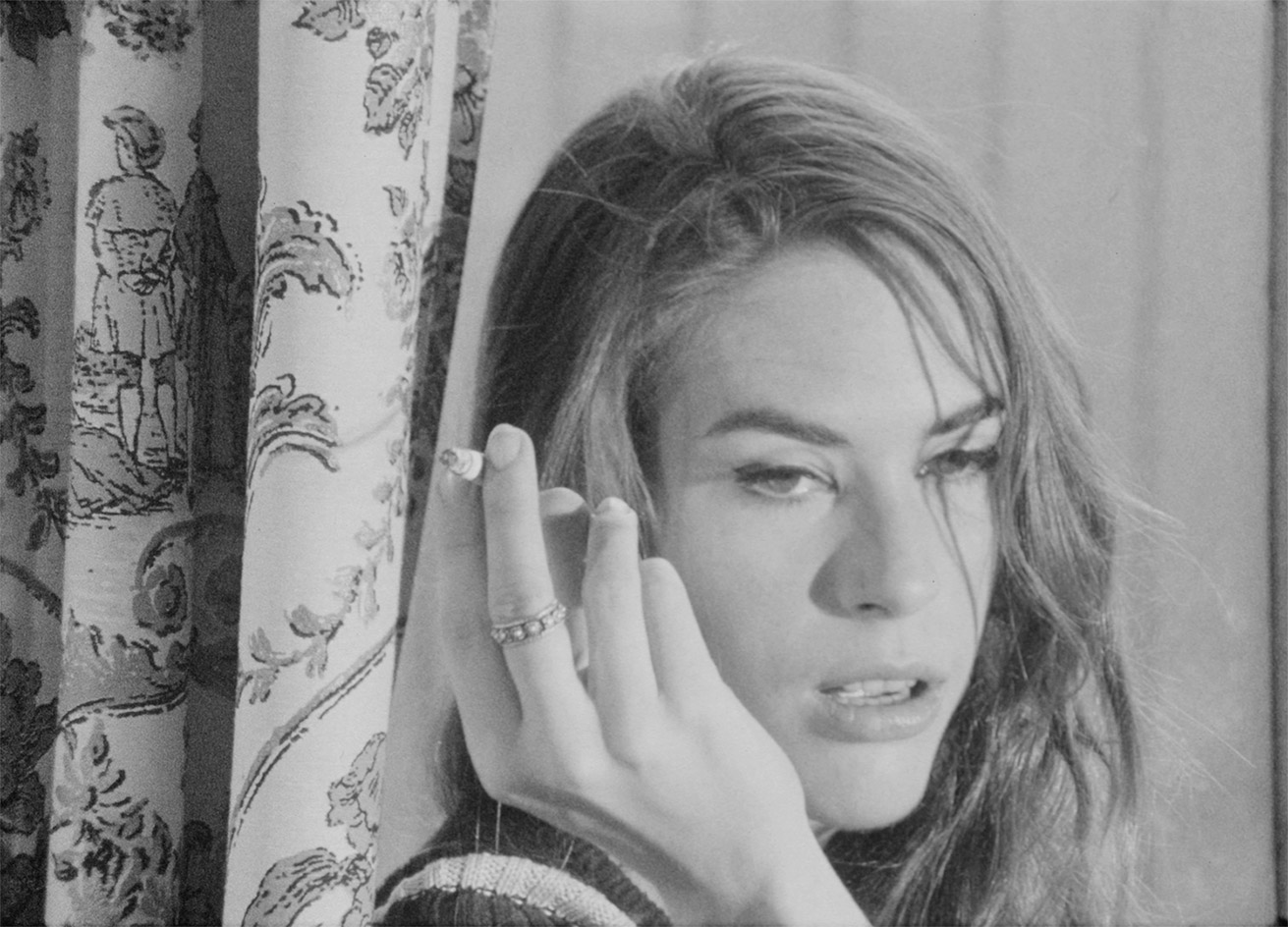
In the autumn of 1966, Andy Warhol’s double-screen masterpiece The Chelsea Girls began its unprecedented journey from its birthplace downtown to uptown commercial success. In celebration of the new publication Andy Warhol’s The Chelsea Girls and the ongoing Warhol film digitisation project, The Andy Warhol Museum and The Museum of Modern Art present the premiere of a new high-quality digital scan, alongside related films and all the never-before-seen material Warhol shot to create his epic vision of the New York underground scene. The Chelsea Girls Exploded runs from 4 – 13 May.
Pictured, a still from The Chelsea Girls. © 2018 The Andy Warhol Museum, Pittsburgh, PA, a museum of Carnegie Institute
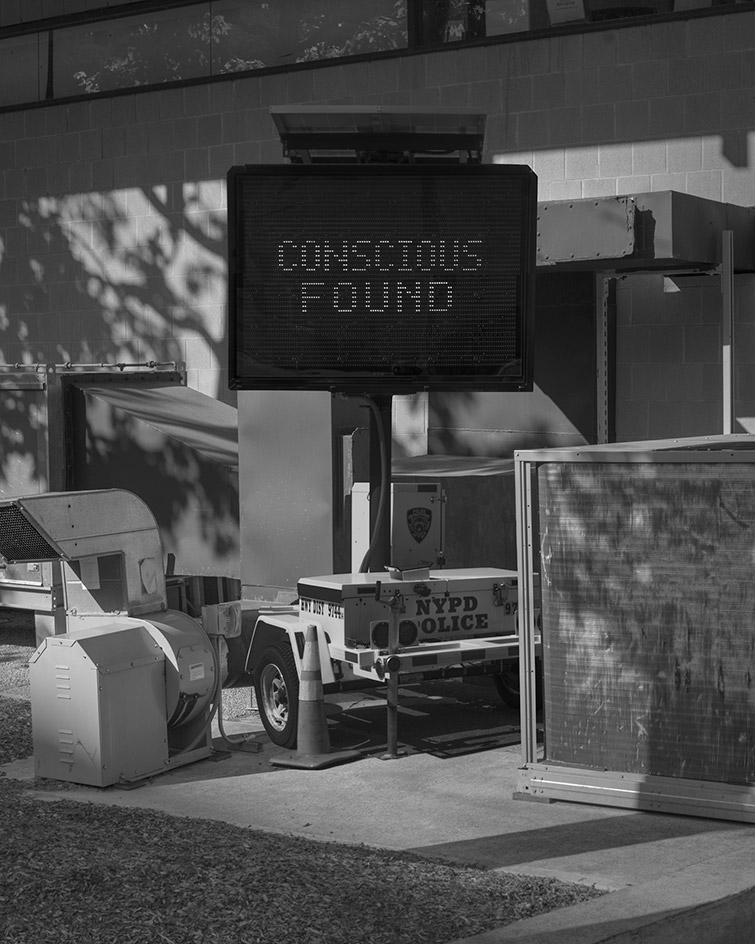
The third monograph by artist and educator Joshua Lutz, Mind The Gap ‘unravels a story of attempting to find some assemblage of truth in the chaos of hierarchy, class and privilege’. The book’s title refers to the ‘gap’ between physical and mental spaces – a reminder of the effort needed to let go of the stories we tell ourselves.
Pictured, Conscious Found, by Joshua Lutz. Mind The Gap, £40, published by Schilt Publishing
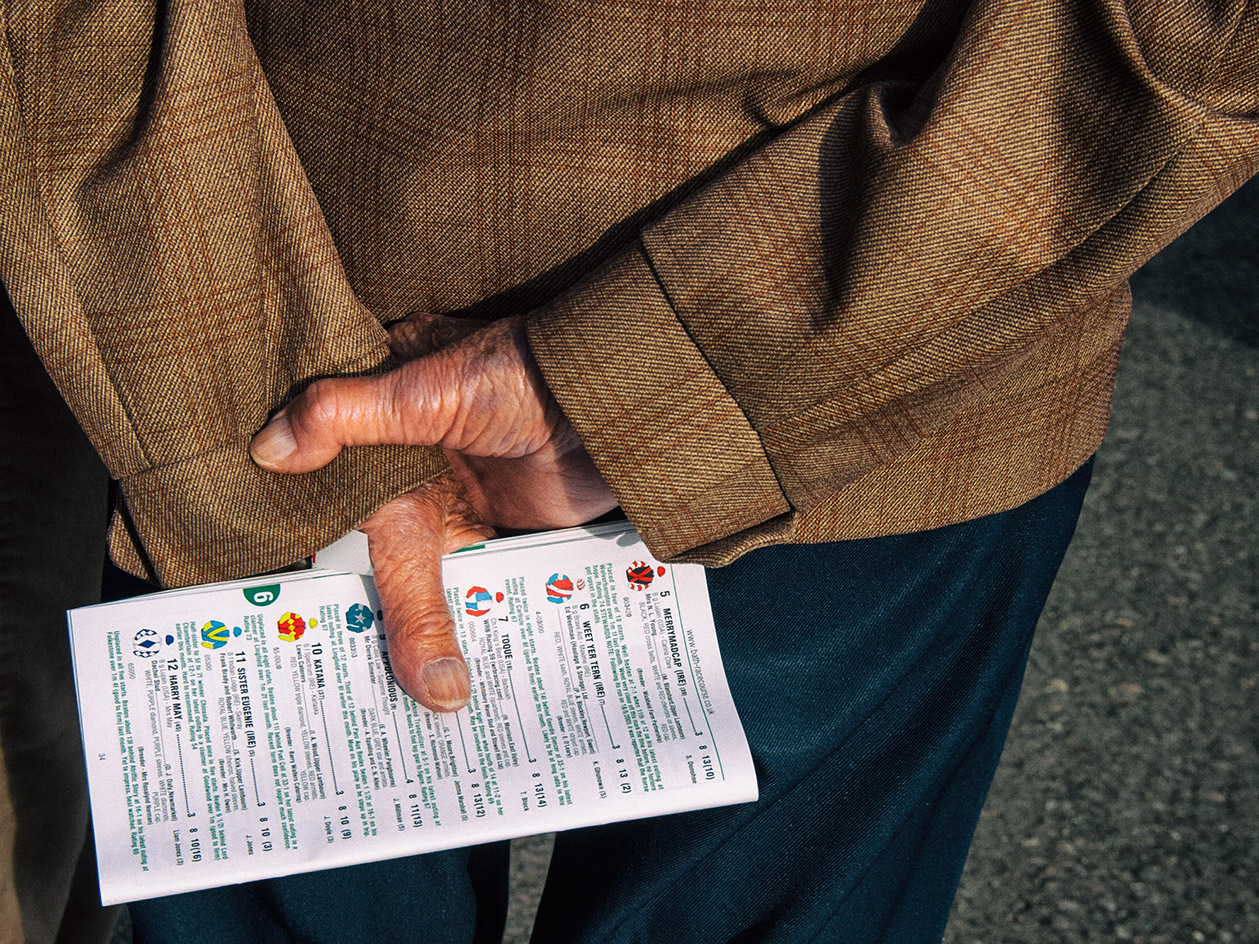
The Gamblers by Martin Amis captures the theatre of horse racing, examining the race day rituals and the varying class and social structure that make up its audience. Since 2005, Amis has visited racecourses across southern England, photographing the spectators, betting stalls, bars and parade rings while purposefully avoiding the horses and race tracks. Instead, his images are affectionate portraits of the racing crowd, reflecting the rollercoaster emotional experience of race day.
The Gamblers, £40, published by RRB PhotoBooks. © Martin Amis
Writer: Alex Jones
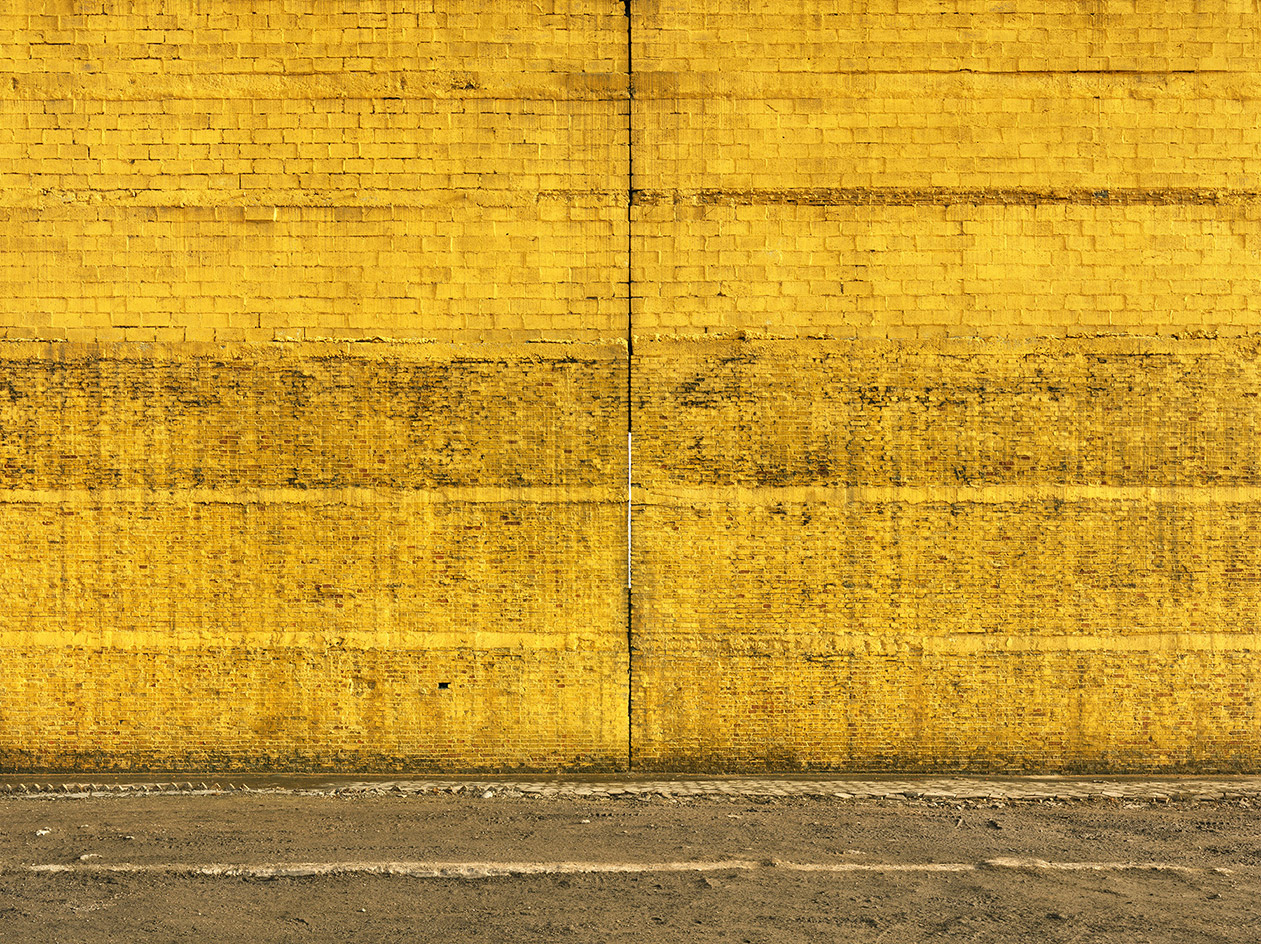
Robert Koch Gallery presents its second solo exhibition by Canadian photographer Ljubodrag Andric, on view in San Francisco from 3 May until 30 June. Depicting ambiguous city spaces from around the world, with his large-format photographs flatten the perspective of the spaces, removing all the depth of the images and hone in on detail, colour and texture. This latest exhibition continues his ongoing investigation into architecture and space, and how the urban landscape is used.
Pictured, China #9, 2013, by Ljubodrag Andric
Writer: Alex Jones
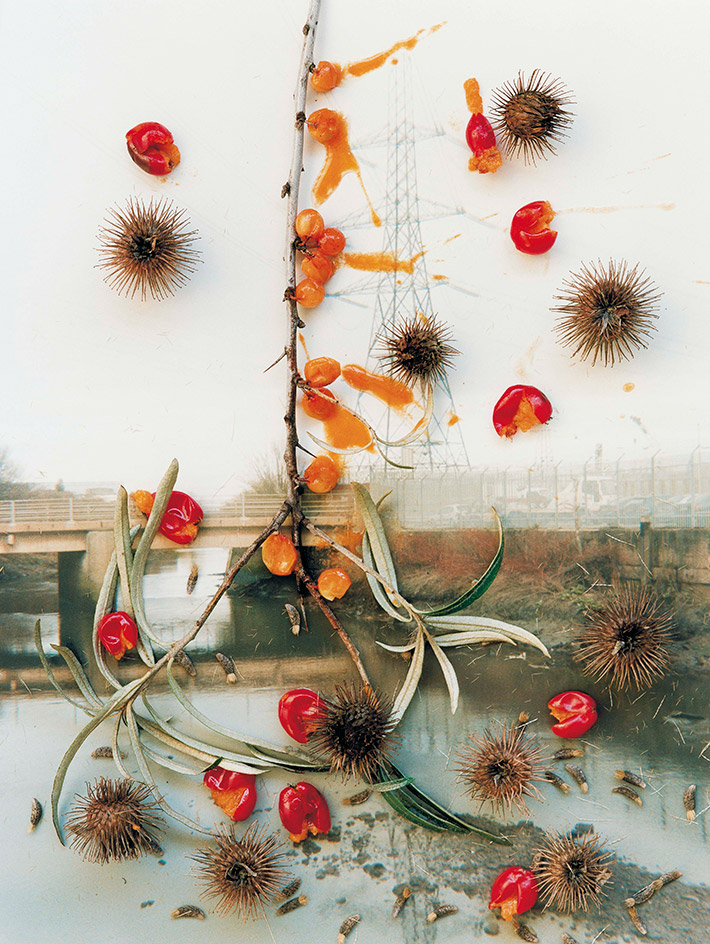
27 April
Stephen Gill: ‘From Document to Experiment’
Museum für Photographie Braunschweig opens an extensive solo exhibition of Stephen Gill, showing a broad selection of the photographer, who is based between London and Sweden. ‘From Document to Experiment: Photographs, Projections, Books and Objects’ is the first solo show of Gill’s work in Germany, from earlier series such as Day Return and Trolley Portraits, to later projects including Hackney Flowers and Talking to Ants. ‘From Document to Experiment: Photographs, Projections, Books and Objects’ is on view 28 April – 24 May.
Pictured, from the series Hackney Flowers, 2005-2007, by Stephen Gill, hand print on C-type paper. © Stephen Gill. Courtesy of Christophe Guye Galerie, Zurich
Writer: Alex Jones
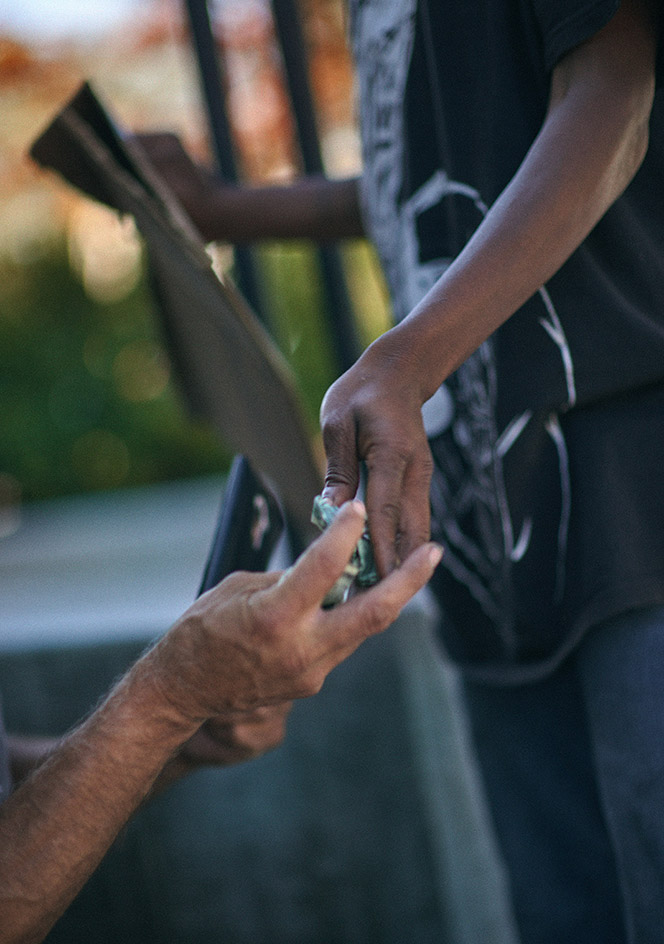
26 April
Niall O’Brien’s ‘Three Cities’
Irish photographer and filmmaker Niall O’Brien spent months documenting the people and landscapes of Santa Clara’s ‘Silicon Valley’, shot in and around the county’s seven-mile long Bascom Avenue. O’Brien states he was moved by the banality of a place that prides itself on being a world leader in technological innovation, despite the wealth disparity and inequality that exists amongst Bascom’s residents. Co-curated by Bakul Pakti, ‘Three Cities’ is on view at London’s Sid Motion Gallery from 26 April – 26 May.
Pictured, It got really Bad Right, by Niall O’Brien. Courtesy of the artist
Writer: Alex Jones
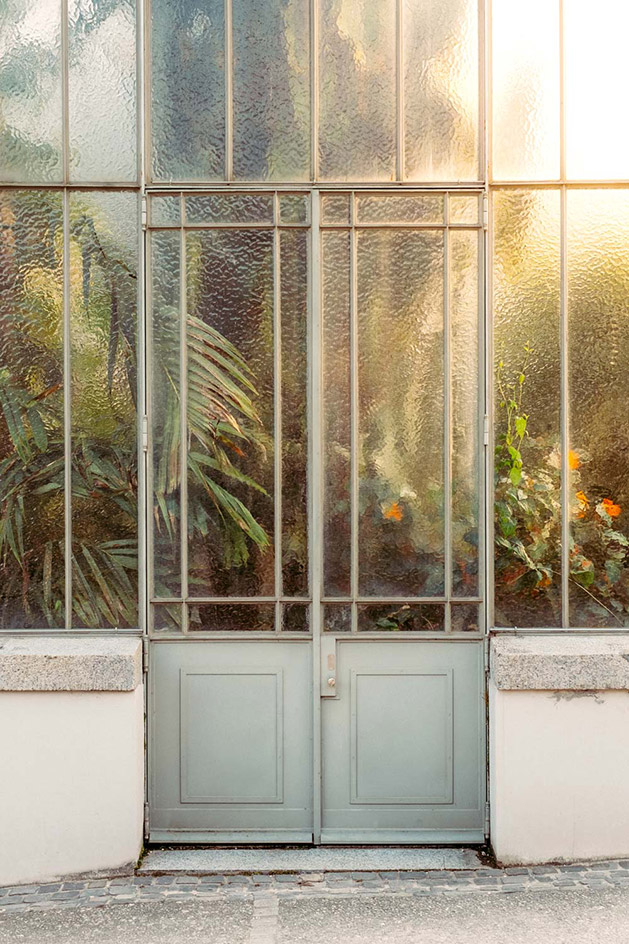
25 April
In bloom with Samuel Keller
Botanical, a new body of work by Geneva-based photographer Samuel Keller published by Hoxton Mini Press, offers a glimpse at the masked beauty of botanical gardens throughout European cities, hidden behind translucent glass façades. The images recall classical botanical illustrations from the 19th century and impressionist paintings. A London exhibition coinciding with the book launch is on view at The Print Space from 26 April – 2 May.
Pictured, Geneva, by Samuel Zeller. Botanical, £16.95, published by Hoxton Mini Press. © The artist
Writer: Alex Jones
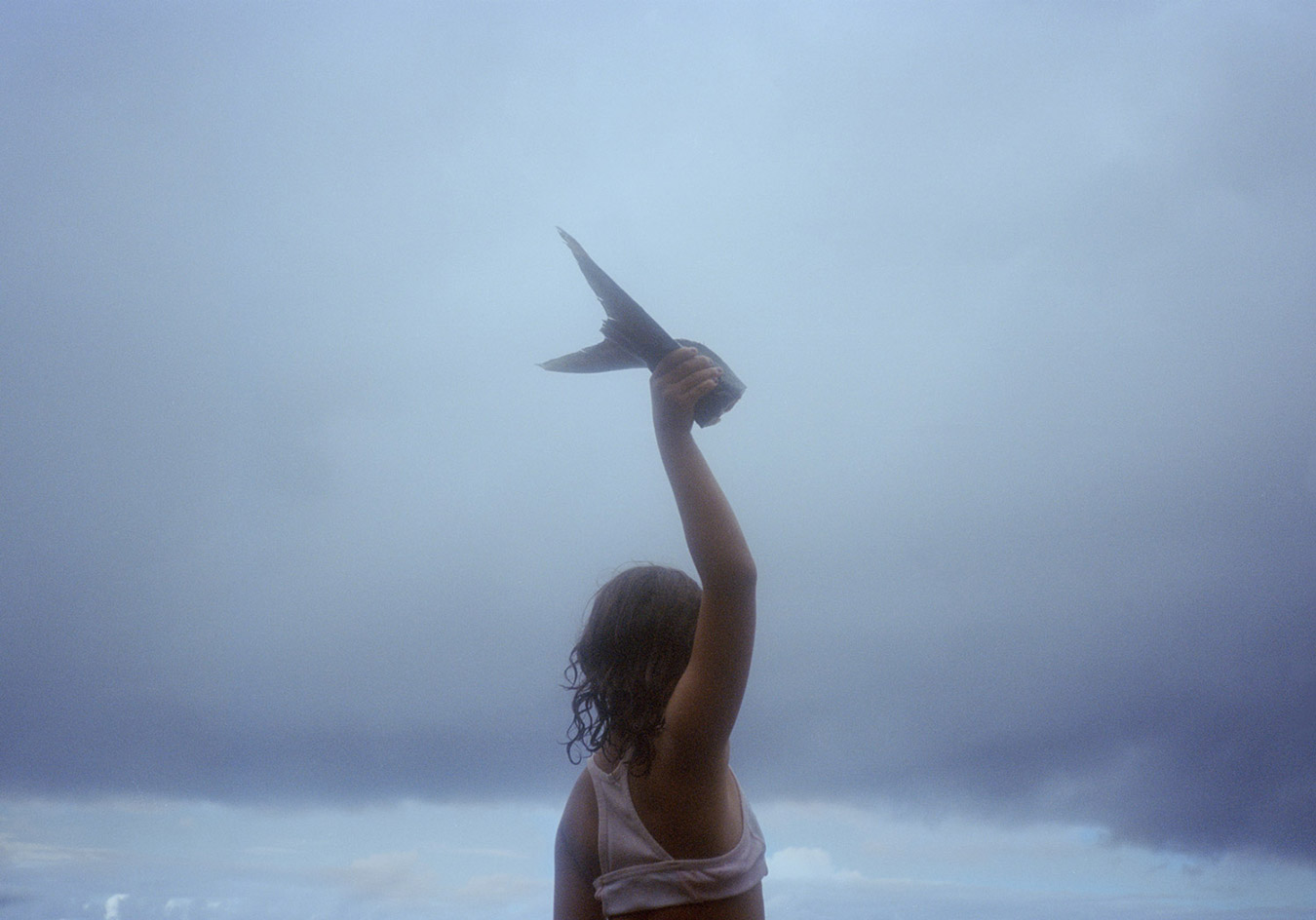
24 April
Rhiannon Adam delves into Pitcairn island
Francesca Maffeo Gallery presents ‘Big Fence / Pitcairn Island ’ by Rhiannon Adam, the first comprehensive photographic project to take place on the island. Forming part of the last British overseas territory in the South Pacific, the island of Pitcairn made international headlines in 2004 with a string of sexual abuse scandals. The exhibition’s title not only refers to the ‘big fence’ that the Pacific creates between Pitcairn and the rest of the world, but also as a metaphor for the defensive guard her subjects use to protect themselves from the isolation and secrecy that is rampant within the community. ‘Rhiannon Adam: Big Fence/Pitcairn Island’ is on view at Francesca Maffeo Gallery from 21 April – 9 June.
Pictured, Cushana and the Frigates, Down Landing, by Rhiannon Adam. © The artist. Courtesy of Francesca Maffeo Gallery
Writer: Alex Jones
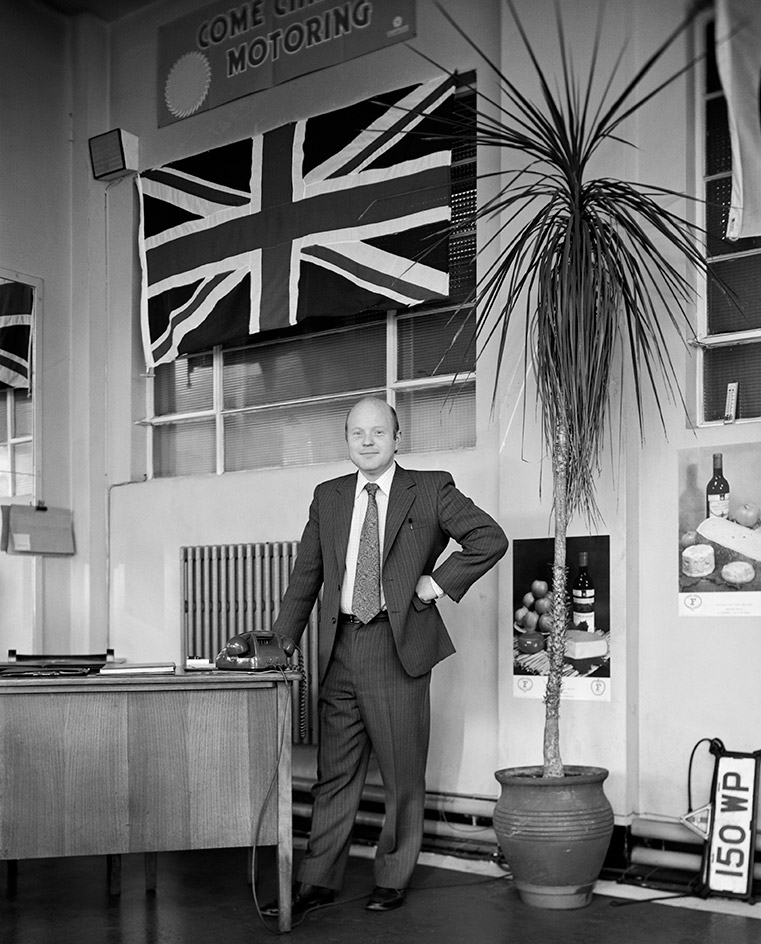
23 April
John Myers’ portraits of 1970s British suburbia
The Portraits, containing many unpublished photographs, is the first time John Myers’ portraiture work has been compiled in a book. Throughout most of the 1970s, Myers captured the residents of the West Midlands town of Stourbridge on his large-format camera. The black and white portraits are visually loaded with social and historical cues, from house plants to corduroy and soft furnishings. Myers’ deadpan approach to portraiture was driven by aesthetics, a conscious creative decision that countered the politically driven narratives of his contemporaries.
Pictured, Car salesman, 1973, by John Myers. The Portraits, £75, published by RBB Photobooks. © The artist. Courtesy of RRB PhotoBooks
Writer: Alex Jones
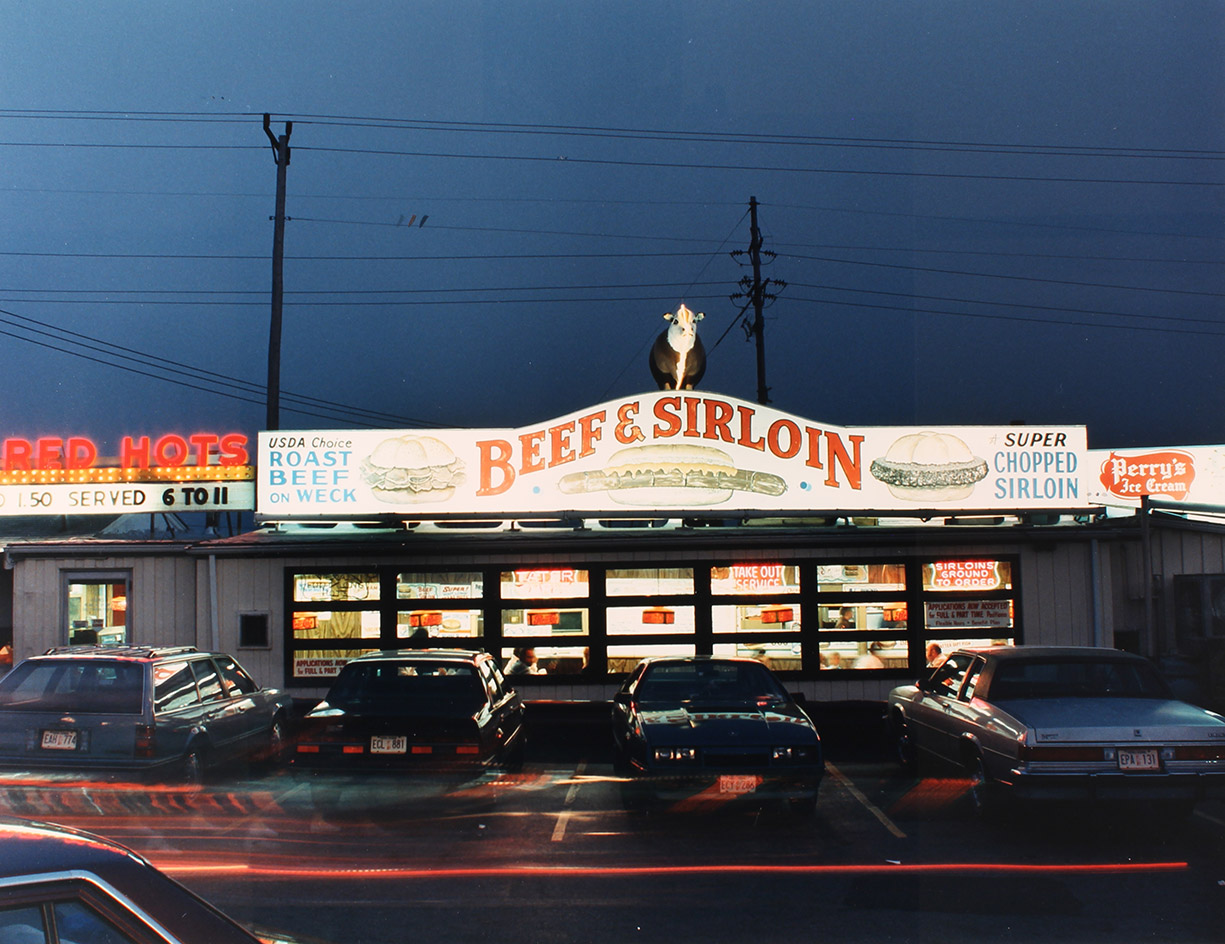
20 April
Marion Faller
Marion Faller (1941-2014) was a photographer and professor of studio photography and photographic history, whose diverse artistic practice spanned 50 years. Her work crossed multiple mediums and themes, ranging from street photography, to collage, and large-format photography, often underpinned by a humorous exploration of the oddities of society, capturing public displays of religious customs, cultural traditions, patriotism, and seasonal events. An exhibition at CEPA Gallery in Buffalo, New York, includes work from early in Faller’s career, collaborations with other artists, and unique ephemera, many of which have never been presented in a gallery setting. ‘The Unseen Marion Faller’ is on view from 20 April until 8 July.
Pictured, Beef and Sirloin restaurant Genesee St, Cheektowaga, 1987, by Marion Faller, Colour Photograph. © The artist
Writer: Alex Jones
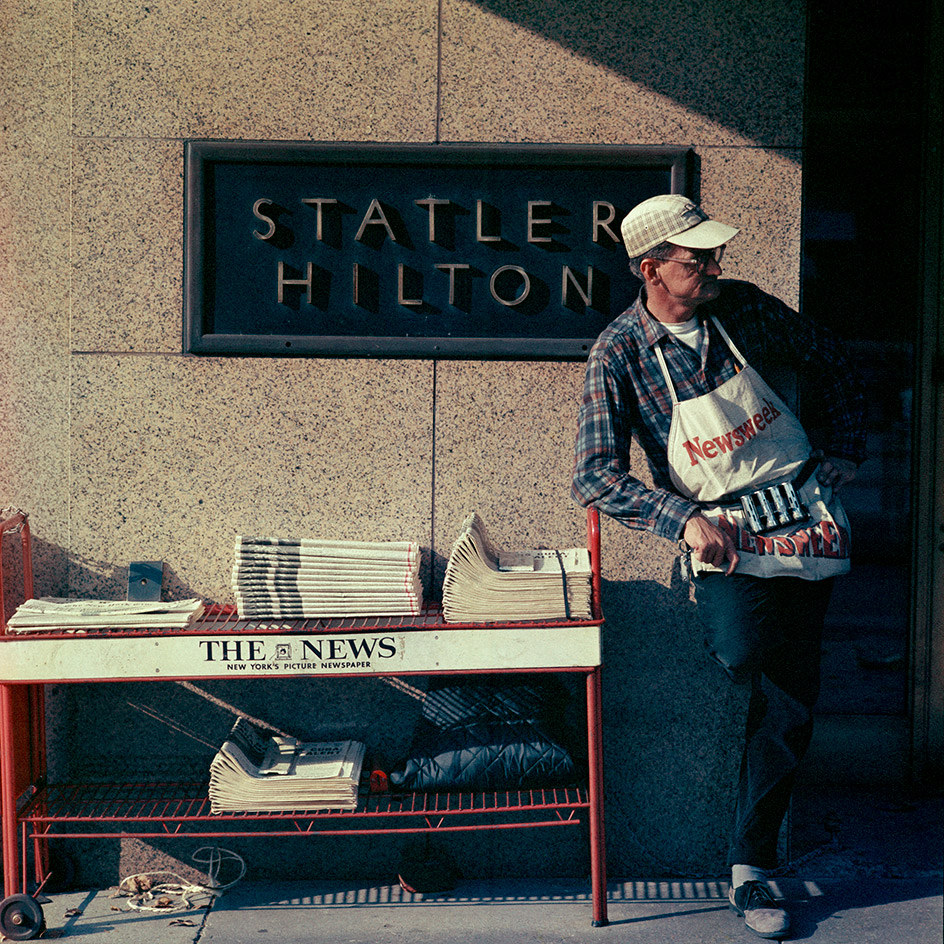
An American voyage
19 April
In 1966, Mario Carnicelli scooped top honours in a national Italian photography competition, winning a scholarship to photograph America. The resulting body of work, American Voyage, was recently rediscovered after 50 years and is being published by Reel Art Press for the first time. Carnicelli’s photographs span several US cities – Detroit, San Francisco, Buffalo, New York and Chicago – during the 1960s. His images comment on the complexities and contradictions of the American Dream, and how the pursuit of it was underpinned by loneliness and displacement. An accompanying exhibition runs at David Hill Gallery from 20 April until 8 June.
Pictured, Newsstand, New York, 1966, by Mario Carnicelli. Published by Reel Art Press, American Voyage, £30, is available from May
Writer: Alex Jones
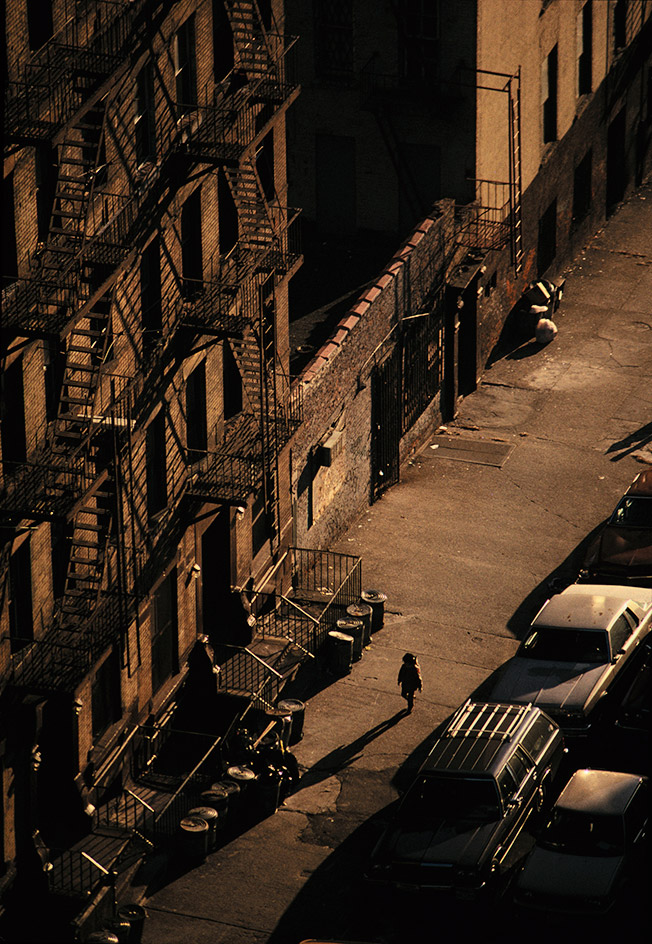
18 April
Joseph Rodriguez puts 1980s NYC in the frame
Cologne’s Galerie Bene Taschen is staging an exhibition of work by Joseph Rodriguez. The Brooklyn-born photographer’s images – captured in the late 1980s – centres on New York’s Latino district, Spanish Harlem. Eschewing the poverty and violence which plagued the neighbourhood during this period, Rodriguez instead focuses on community and family spirit that lifted the struggling area’s habitants. Drawing on his own experience of being on the wrong side of the law, Rodriquez challenges the ideal of the American dream. ‘Spanish Harlem’ is on view 20 April – 30 June.
Pictured, East Harlem, Spanish Harlem, New York, 1987, by Joseph Rodriguez. © The artist
Writer: Alex Jones
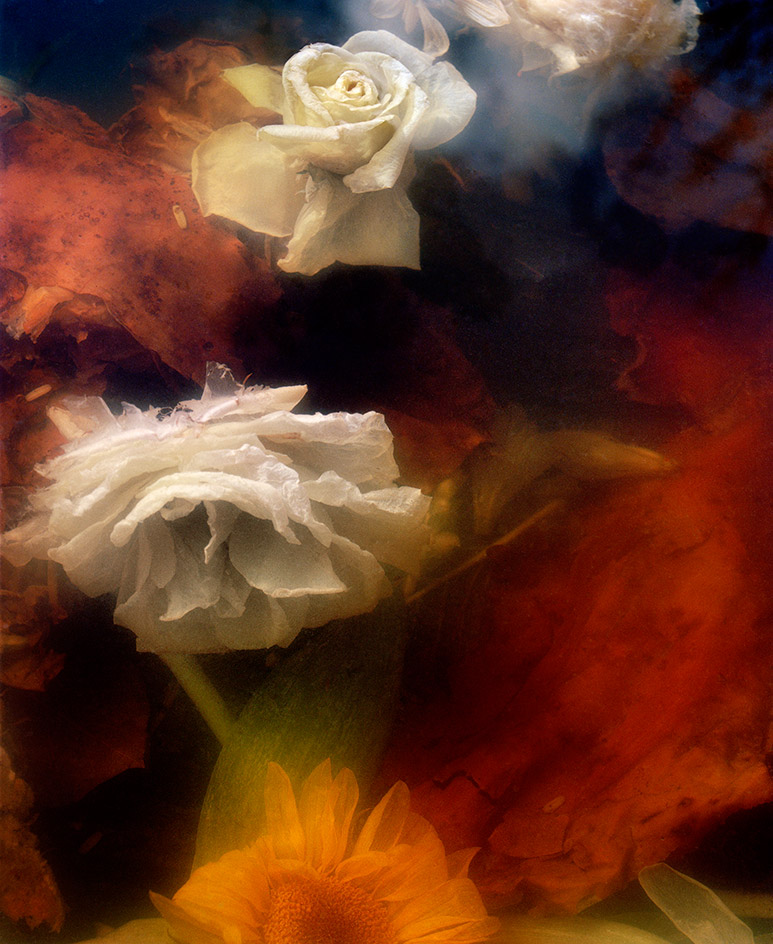
17 April
Jocelyn Lee’s dark matters
‘The Appearance of Things’ (19 April – 12 May), the first UK solo exhibition by American artist Jocelyn Lee, opens at London gallery Huxley-Parlour. The exhibition includes portraits, landscapes and floral still lifes as well as new images from her ongoing body of work of the same name. Themes of sexuality, family, death and ageing underpin her work.
Pictured, Dark Matter 13, Sinking Rose, 2017, by Jocelyn Lee. Courtesy of Huxley-Parlour Gallery
Writer: Alex Jones
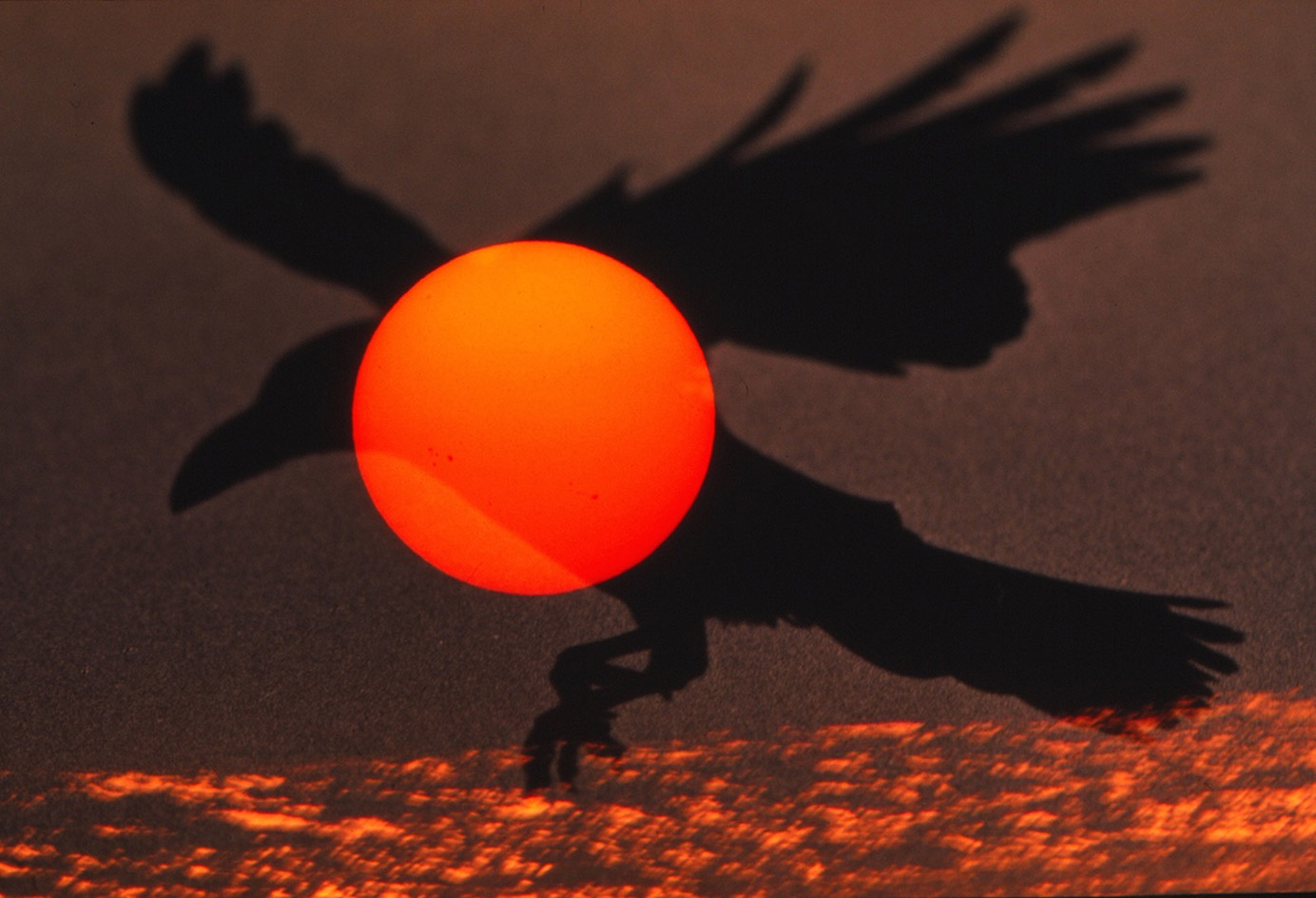
16 April
The sixth edition of Kyotographie International Photography Festival runs from 14 April until 13 May. This year’s programme comprises 15 exhibitions throughout Kyoto, presented in unusual venues such as traditional townhouses, temples and cultural sites not ordinarily open to the public. One of the artists featured is Masahisa Fukase, whose photobook, Ravens, first published in 1986, is deemed among the best of all time. Fukase used images of ravens as a metaphor for the tragedy that plagued his life. Read our full review of Kyotographie here.
Pictured, Noctambulant Flight, 1980, by Masahisa Fukase, from the series Ravens. © Masahisa Fukase Archives
Writer: Alex Jones
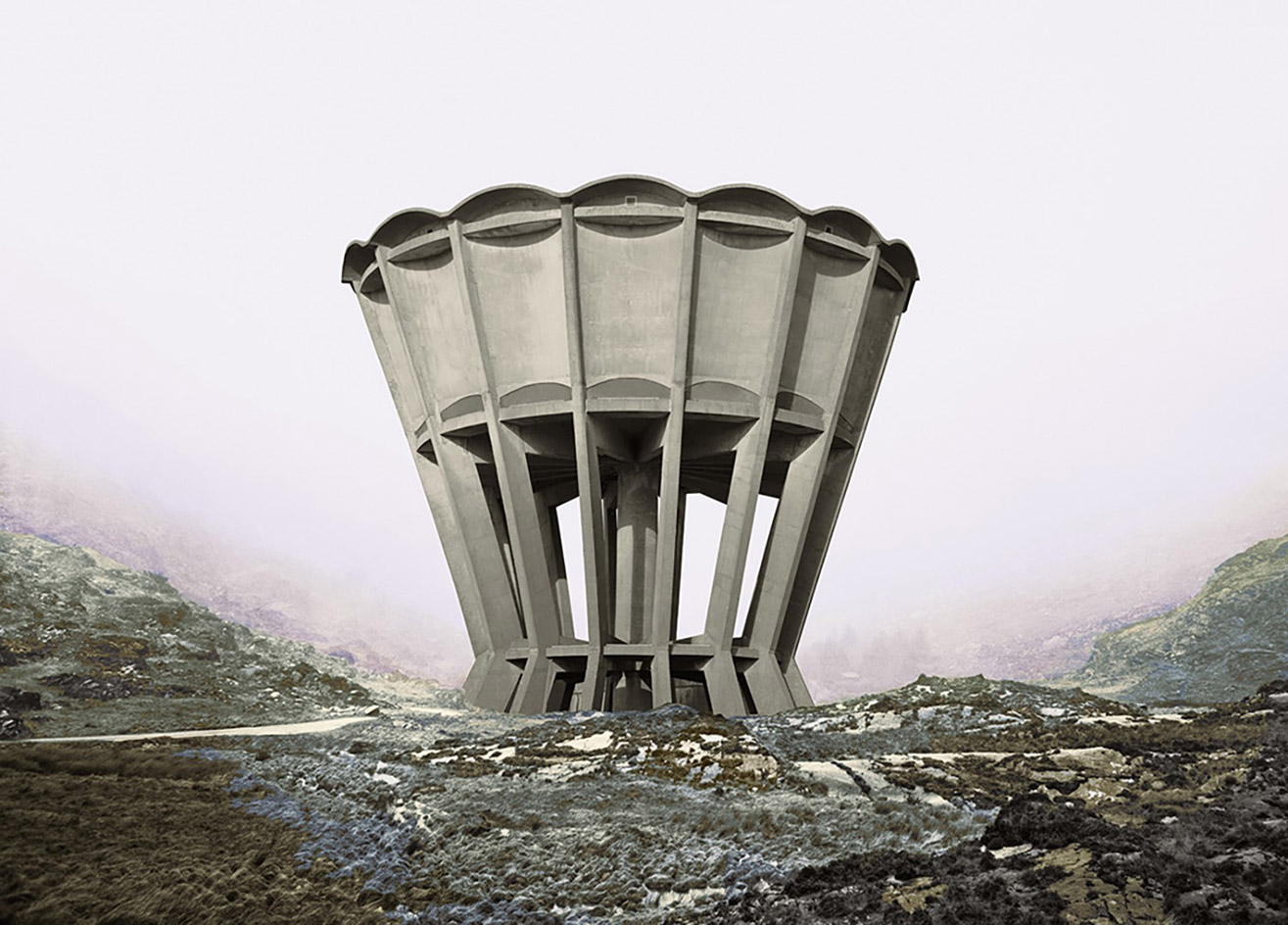
13 April
EVA International 2018
The 38th EVA International, Ireland’s biennial of contemporary art, will showcase 56 local and international artists and collectives across five venues in Limerick, alongside an extended programme at Dublin’s Irish Museum of Modern Art. Irish photographer Darn Thorn, who is exhibiting at this year’s EVA International, mies analogue photography with digital post-production to create imaginary rural landscapes interrupted by large modernist structures. His images examine how landscape functions within personal and cultural imaginations, in relation to Irish history and religion, and the possibility of alternate futures. Aggiornamento seeks to translate the ideas of modernist city planners of the 1960s whose desire for a modern society led to extraordinary concrete monuments dotted across Ireland – a reminder of an unrealised utopia. EVA International runs from 14 April until 8 July.
Pictured, Aggiornamento #1, by Darn Thorn
Writer: Alex Jones
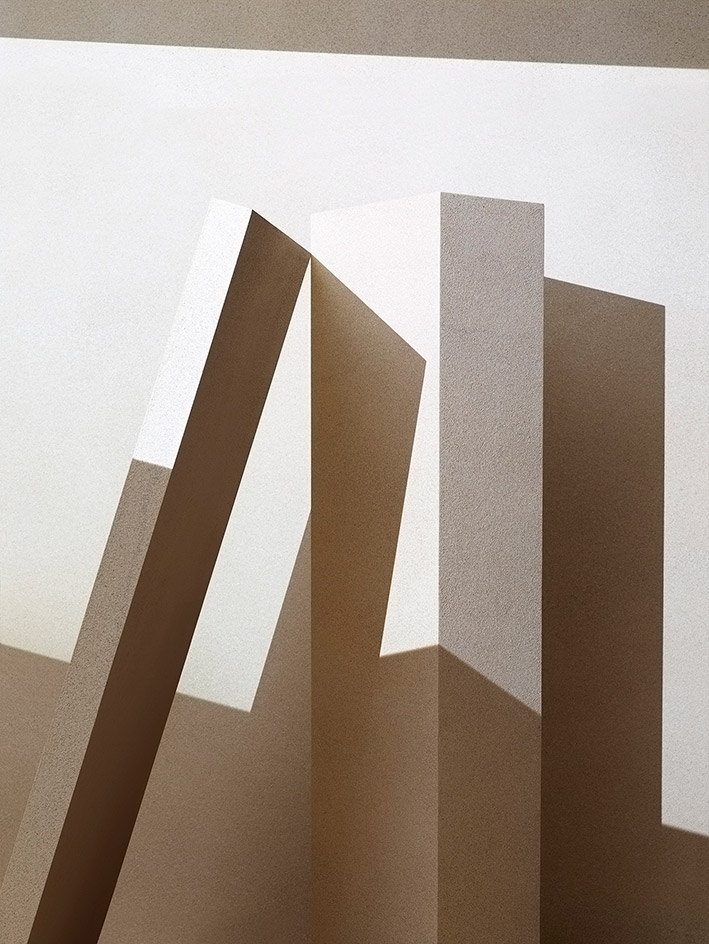
12 April
Richard Foster
Between Sense & Uncertainty, a self-published book by Richard Foster, is a beautiful compendium of still lifes from the accomplished photographer, who clients include Mulberry and Stella McCartney. The publication flaunts Foster’s flair for transforming inanimate objects into spectacularly artful images, playing with light, colour and shape. Designed by Harry Pearce at Pentagram and printed by Gavin Martin Colournet on GF Smith paper, the book is available for purchase here.
Pictured, Sandstone 4, by Richard Foster. Courtesy of the artist
Writer: Alex Jones
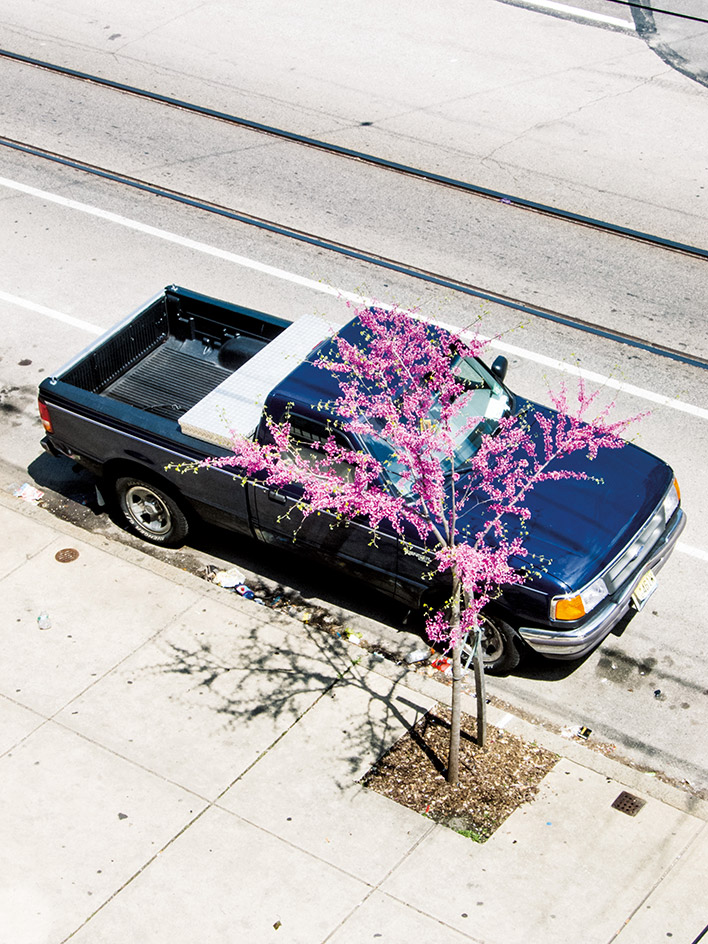
11 April
Jordan Baumgarten captures America’s opioid crisis
Philadelphia-born photographer Jordan Baumgarten’s latest project, Good Sick, traces the ongoing opioid crisis in America through one particular neighbourhood in his hometown. His images, varying from portraits to landscapes and still lifes, chronicle the chaotic encounters caused by the drug epidemic. Although the photographs focus solely on the Kensington neighbourhood, the images reflect a series societal dilemma transforming many cities across the US.
Good Sick, £40, published by GOST Books
Writer: Alex Jones
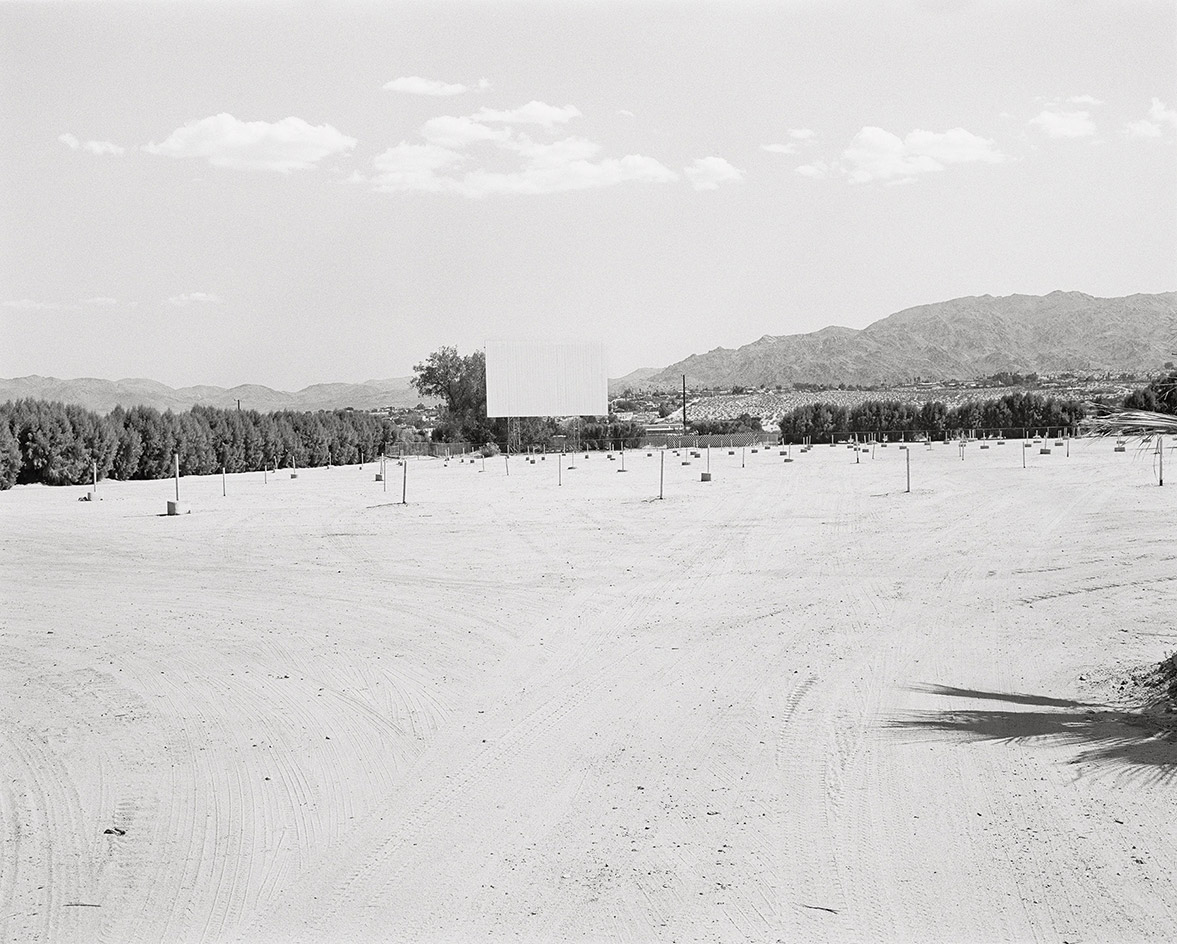
Susan Lipper’s Domesticated Land
10 April
Published by MACK, Domesticated Land by Susan Lipper frames an apocalyptic world resembling the barren landscape of Mars imagined in many science-fiction films. The desolate images purposely offer little clue as to their location – the reality, however, is less fantastical than outer space, as Lipper has been photographing the Californian desert since 2012.
Domesticated Land, £35, published by MACK
Writer: Alex Jones
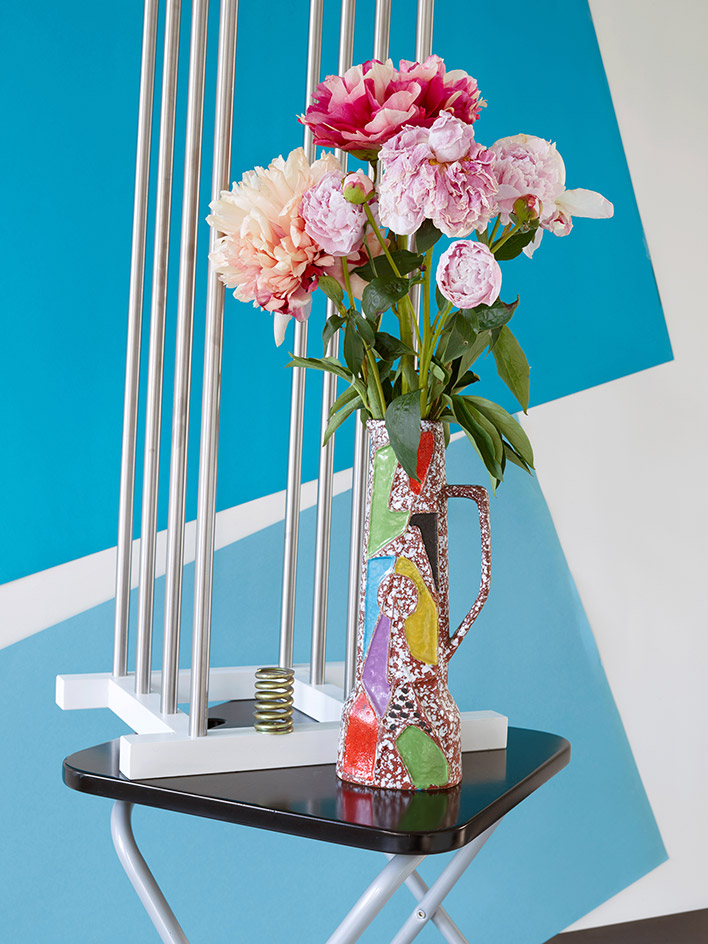
9 April
Annette Kelm has us in knots
Annette Kelm’s fourth solo exhibition with New York’s Andrew Kreps Gallery continues her exploration into the function and nature of objects. Kelm’s work crosses multiple themes, from mass production to technology, design, and the materiality of the objects. The colourful, artfully composed still lifes flatten space, removing the illusion of depth from the image and forcing the viewer to examine the relationship between the objects. ‘Knot’ is on view 7 April – 12 May.
Pictured, Still Life with Spring, 2017, by Anette Kelm. Courtesy of the artist and Andrew Kreps Gallery, New York
Writer: Alex Jones
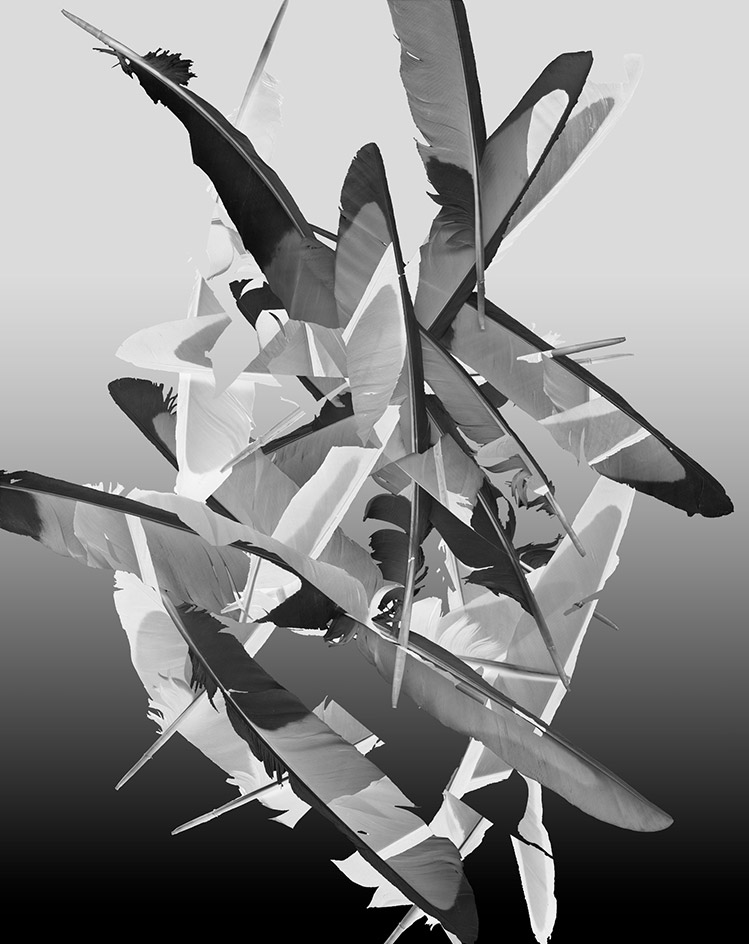
6 April
Thom Bridge takes flight
Thom Bridge is a British-Swedish artist whose practice straddles analogue and digital, exploring the duality that lies between the two mediums. This image from his series Pied shows a scanned magpie feather, which is then digitally manipulated to create a 3D shape. The themes in his work overlap a multitude of fascinations: flying, falling, orbits, suspension in photography, archives, space travel and birds. Bridge has exhibited internationally, showing a variety of mediums from photographic prints to sculptural works and installations.
Pictured, Without Title, 2017-18, by Thom Bridge, from the series Pied, unique digital fibre-based silver gelatin print
Writer: Alex Jones
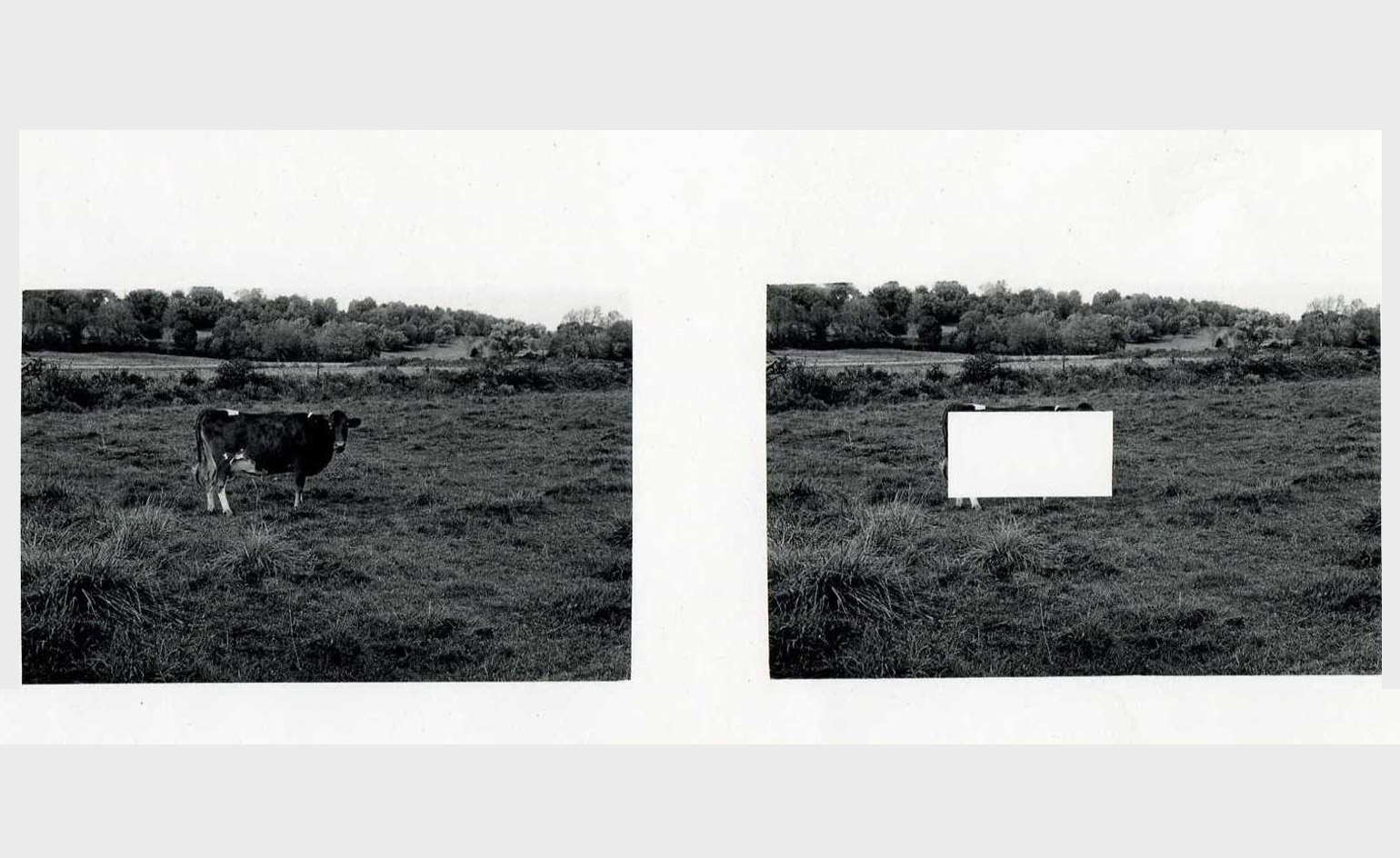
5 April
Early Jan Groover works uncovered
‘Hartford and Other Photographs’ (5 April – 15 May), an exhibition showing at New York gallery Janet Borden Inc, focuses on vintage photographs made early in Jan Groover’s career. This collection – comprising 100 photographs and prints not seen since the early seventies – offers a glimpse into history of Hartford, Conneticut, picturing high streets and quiet suburban homes with a formal, objective perspective. The works allude to the late photographer’s developing interest in diptychs and triptychs, and demonstrate her nuanced approach to black and white photography.
Pictured, Cow in field, by Jan Groover
Writer: Alex Jones
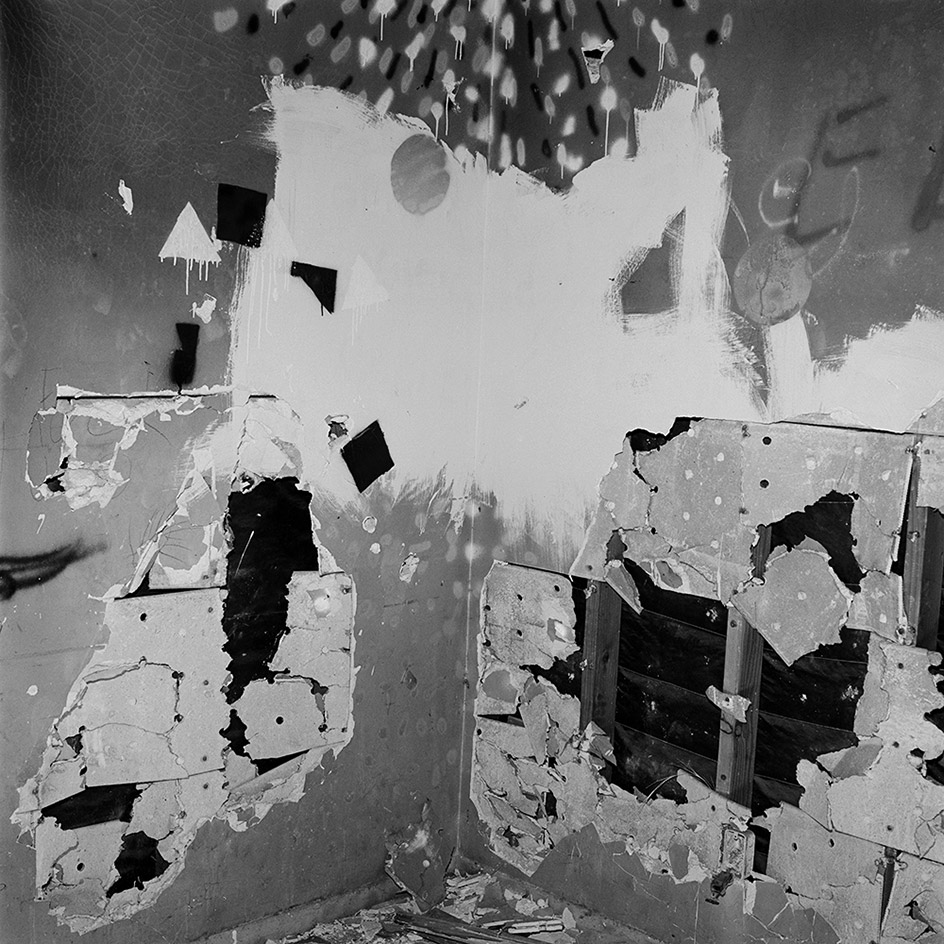
4 April
John Divola’s domestic disruptions
Vandalism, a body of work produced in the mid-1970s by American artist John Divola, is being immortalised in a dedicated book from MACK. The series, produced early in the Divola’s career, saw the artist stage graphic and sculptural interventions in dilapidated houses across his native Los Angeles, using spray paint, string and cardboard.
Vandalism, £30, published by MACK. Courtesy of the artist and MACK
Writer: Alex Jones
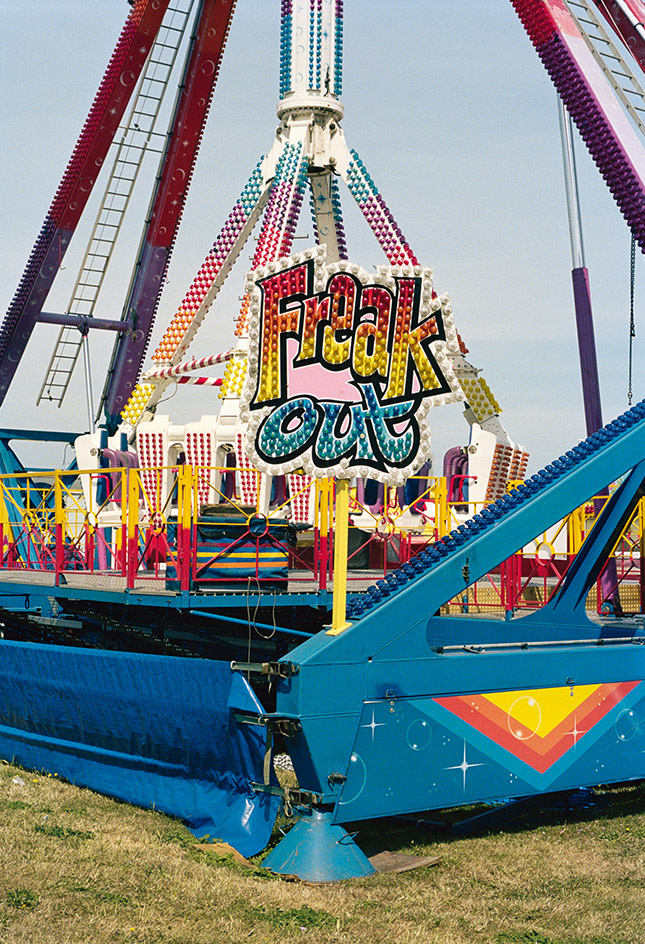
3 April
Isabelle Graeff confronts Brexit
A new body of work from Isabelle Graeff continues her investigation into identity and heritage. Whereas her previous work delved into her personal relationship with her mother, Exit captures vignettes of the UK shortly before the EU referendum. The images are directed equally inward and outward, commenting on not only the identity crisis provoked by Brexit, but also the optimism and patriotism the future may hold.
Pictured, Margate, by Isabelle Graeff. Exit, €45, published by Hatje Cantz
Writer: Alex Jones
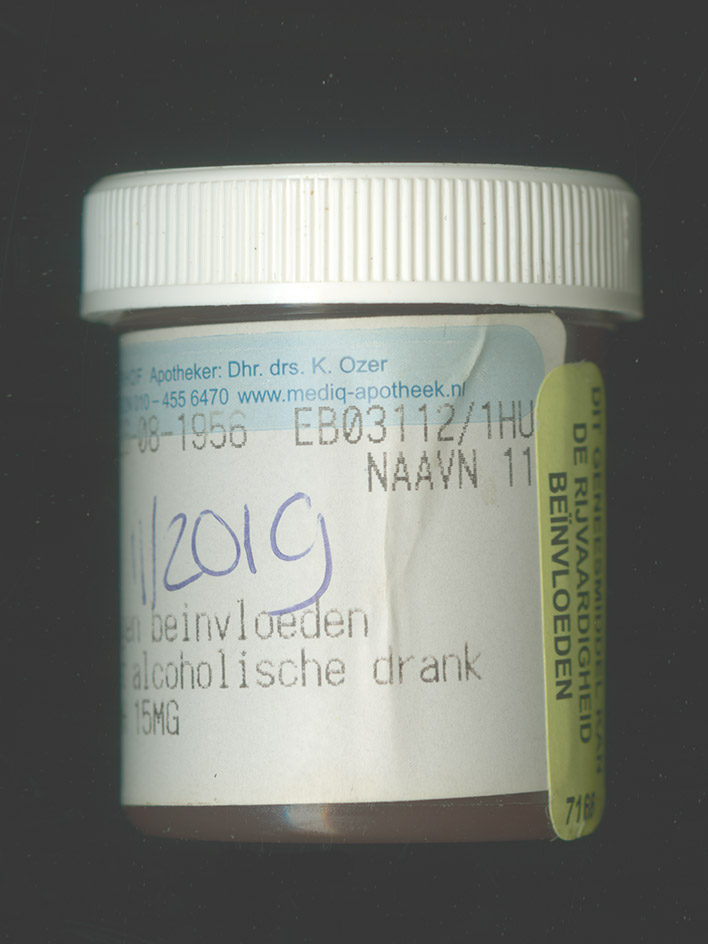
30 March
A hard pill to swallow
A new body of work by Belgian-Dutch duo Sofie Middernacht and Maarten Alexander goes on show at Ingrid Deuss Gallery, Antwerp. The intimate, personal photographs feature pill boxes belonging to a mentally ill relative of one of the artists suffering from a psychotic disorder. The duo repeatedly scanned and layered images of the pill boxes, in a ritualistic sort of ‘personal processing and acceptance process’. ‘Like Today, But More Like Forever’ runs from 30 March until 19 May.
Pictured, Like today, but more like forever, by Sofie Middernacht and Maarten Alexander. Courtesy of the artists
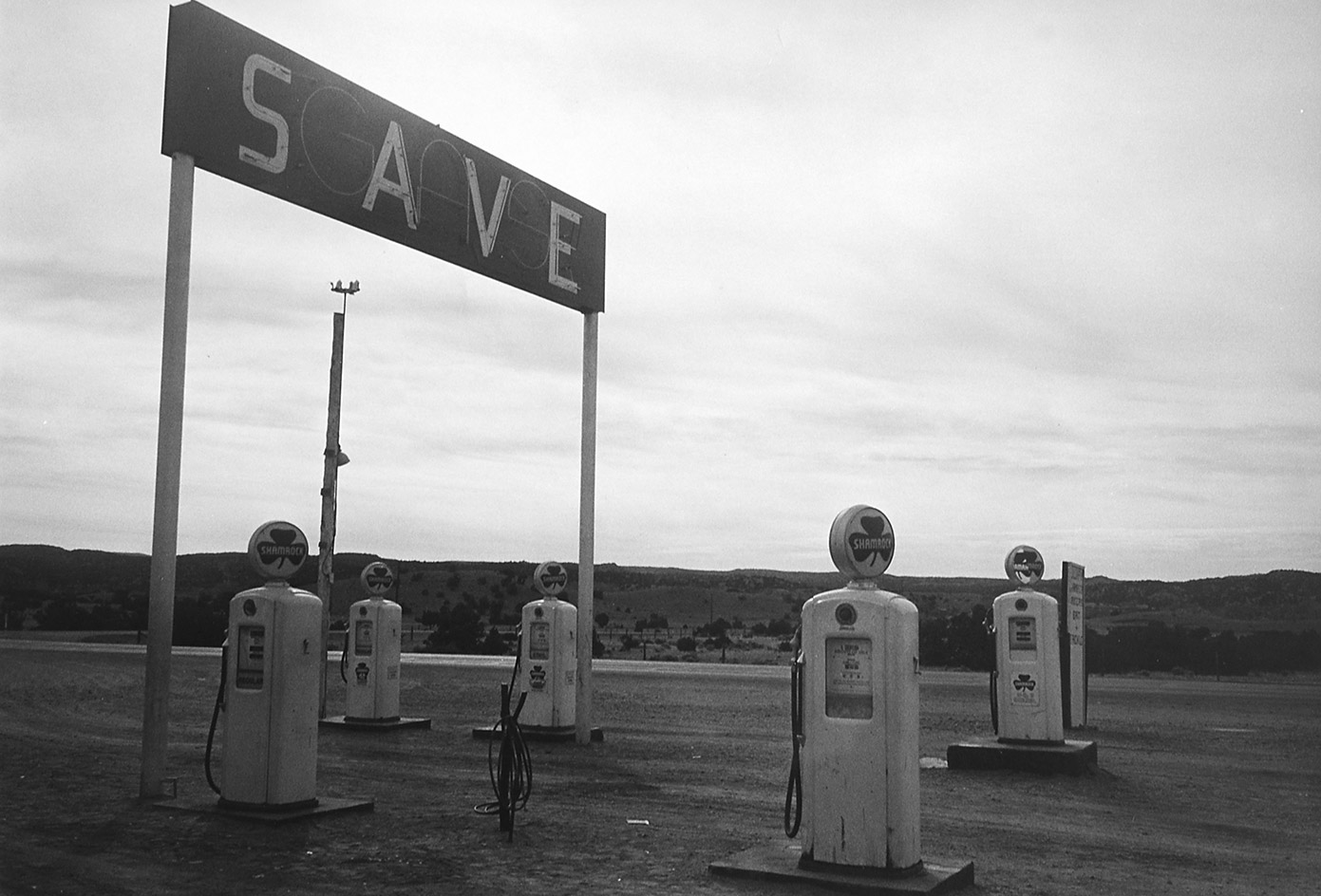
29 March
Robert Frank’s road trip
Lodon gallery Hamiltons shows a selection of rarely-seen work by New York-based photographer Robert Frank. The exhibition, running from 28 March – 11 May, chronicles the photographer’s trips during the 1950s and early 1960s to Wales, Paris, London and across the US. Celebrated for bringing a new poetic sensiblity to photographic narratives, Frank undoubtedly had a unique perspective of his subjects and surroundings. This selection of work precedes The Americans – a seminal body of work which propelled him into the spotlight – and inklings of the style he became renowned for can be seen in these earlier images.
Pictured, Tusuque, N.M. Save Gas Station, 1955, by Robert Frank
Writer: Alex Jones
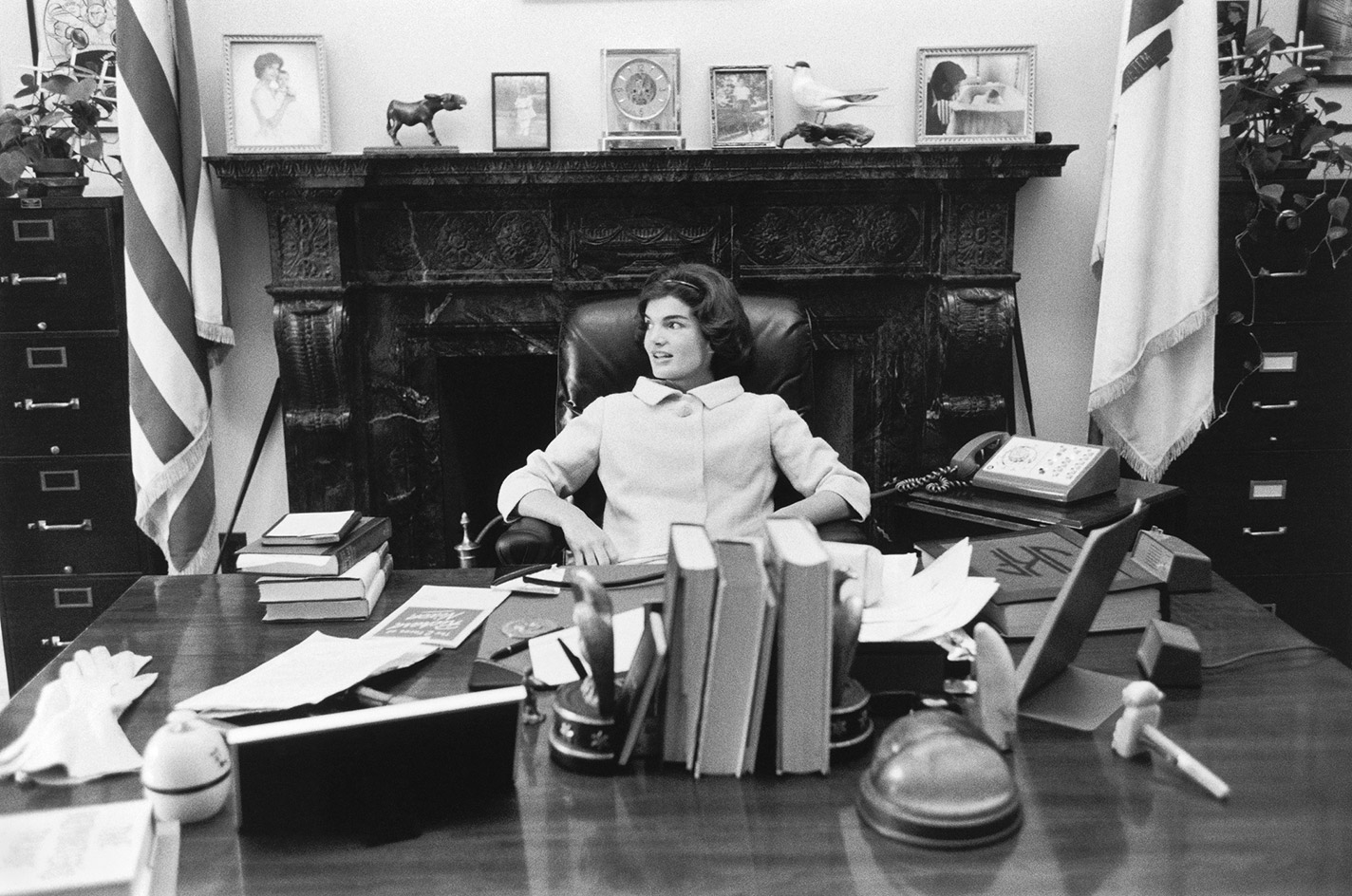
28 March
Life with the Kennedys
Marking the 55th anniversary of John F Kennedy’s assassination, Proud Galleries is exhibiting an extraordinary body of historic photographs by LIFE photojournalist and filmmaker Mark Shaw. After being commissioned to shoot a series of intimate portraits of Jacqueline Kennedy (her husband then a senator running for President) in 1959, Shaw became the unofficial photographer for the family, documenting both official and candid images for them. His iconic images of the glamourous family came to represent American ideals in the 1950s and 1960s. ‘Life with the Kennedys: Photographs by Mark Shaw’ is on view 22 March – 6 May.
Pictured, Jackie sits at JFK’s senate desk, Washington DC, 1959, by Mark Shaw. © Mark Shaw / mptvimages.com
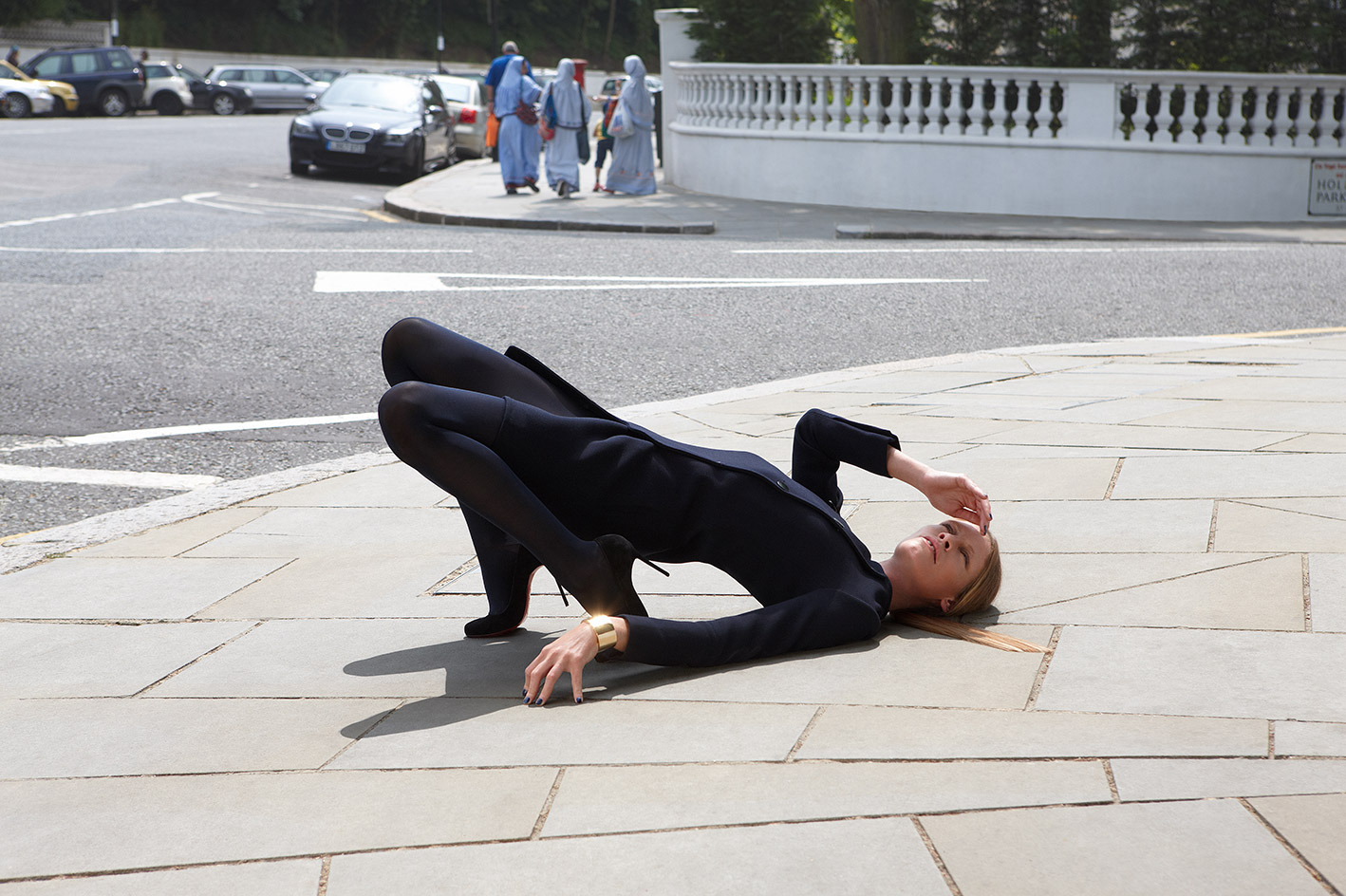
27 March
Posturing in fashion
Posturing, a new book from Self Publish Be Happy, investigates the emergence of a formal and objective approach to fashion photography. Rejecting celebrity-driven visuals, the book features images of the body that are often presented contorted or fragmented. Edited by Shonagh Marshall and Wallpaper* photography director Holly Hay, Posturing puts clothing, casting and fashion imagery in a new frame.
Pictured, Navy, by Blommers & Schumm for The Gentlewoman A/W 2010
Writer: Alex Jones
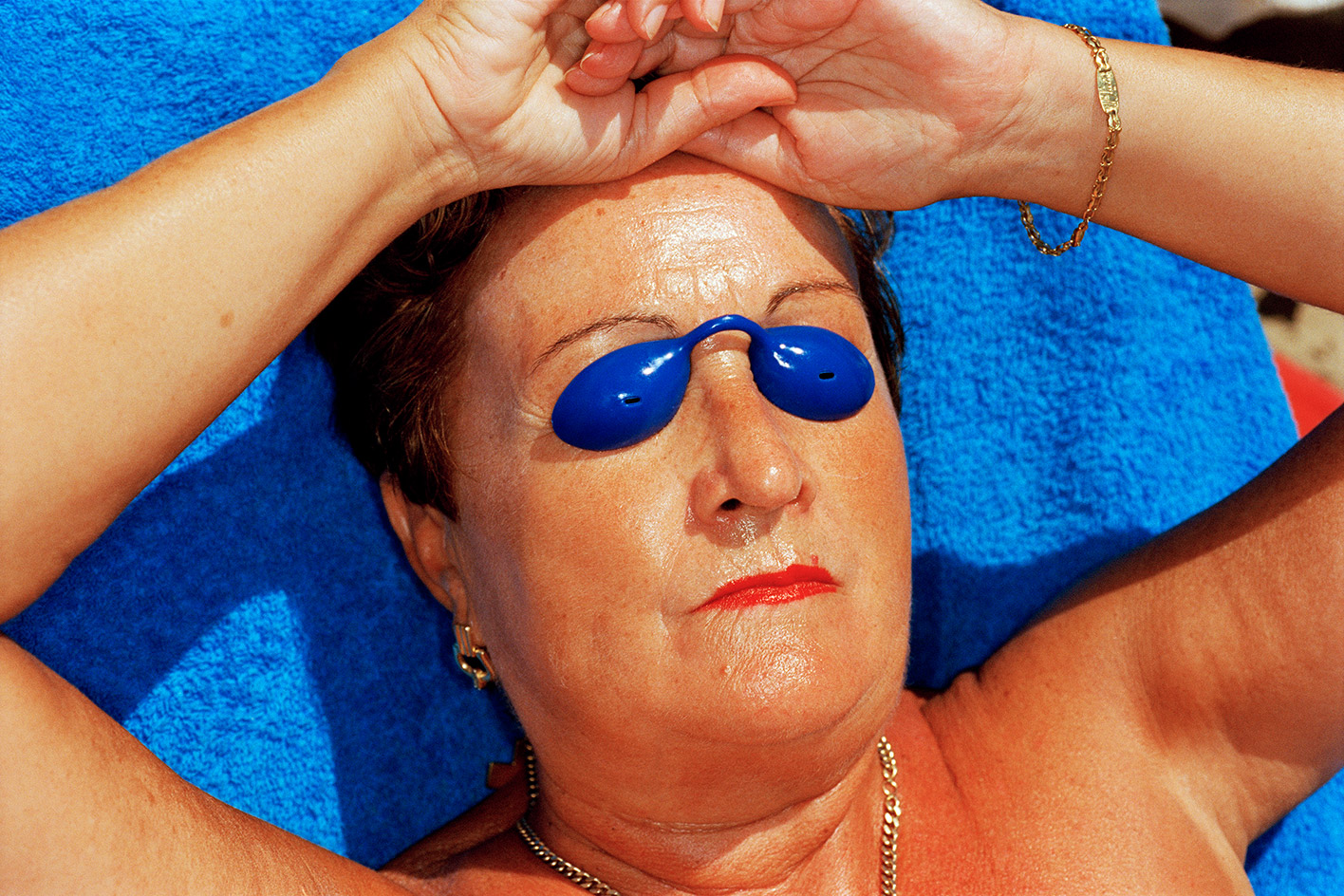
26 March
Parr for the course
A special edition of ToiletPaper magazine features a collaboration between British photographer Martin Parr and the publication’s creative directors Maurizio Cattelan and Pierpaolo Ferrari. The mash-up Toilet Martin Paper Parr pairs visual motifs from the photographic archives of both, juxtaposing saturated pop imagery. The voices of authorship are apparent in the contrast between the constructed and the observed, but they share a provocative sense of humour and taste for the visceral.
Pictured, Untitled, 1997, by Martin Parr. © The artist
Writer: Lynsie Roberts
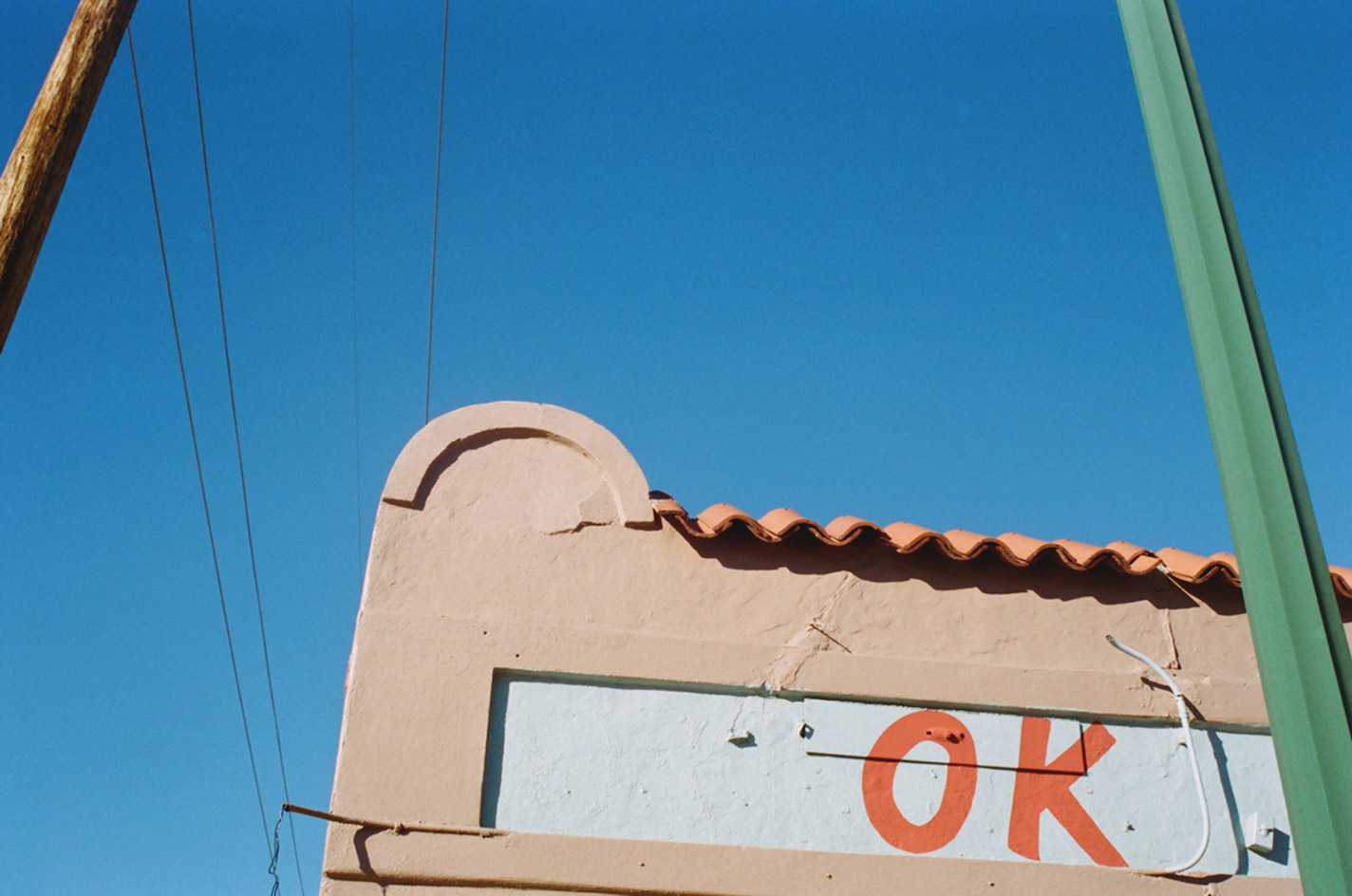
25 March
Texas Blue
Lorena Lohr’s book, Texas Blue, catalogues the aesthetic of El Paso. Making several visits since 2010, Lohr aims to create a photographic survey of the city’s surfaces, documenting the textures, colours, and shapes that she discovered walking through the city. The town is an overlap of American and Mexican cultures that are jeopardised by gentrification. Her pastel cityscapes include pink cowboys, vintage signs, crumbling buildings, sparse diners, and sun-soaked objects. The project will also be shown at Photo London in May.
Pictured, Untitled, 2017, by Lorena Lohr. © The artist
Writer: Lynsie Roberts
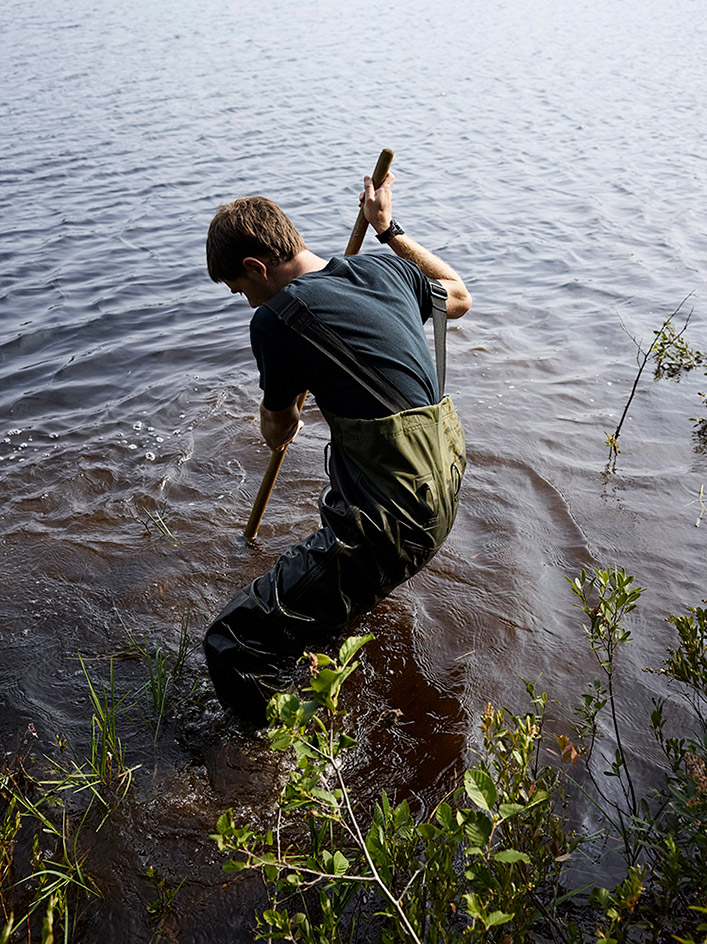
21 March
Guillaume Simoneau: Experimental Lake
Canadian artist Guillaume Simoneau spent time photographing Kenora District lakes in Ontario, documenting the research facility where scientists conduct tests that influence international policies on water and the environment. The IISD Experimental Lakes Area consists of 58 freshwater lakes, where the human impact on ecosystems is researched. Simoneau focuses his lens on the landscapes, the scientists, and their processes and apparatuses in his quiet study of the innovative institute. Experimental Lake is published by MACK, with a forthcoming exhibition at Stephen Bulger Gallery in Toronto.
Pictured, Untitled, by Guillaume Simoneau. © Gillaume Simoneau. Courtesy of the artist and MACK
Writer: Lynsie Roberts
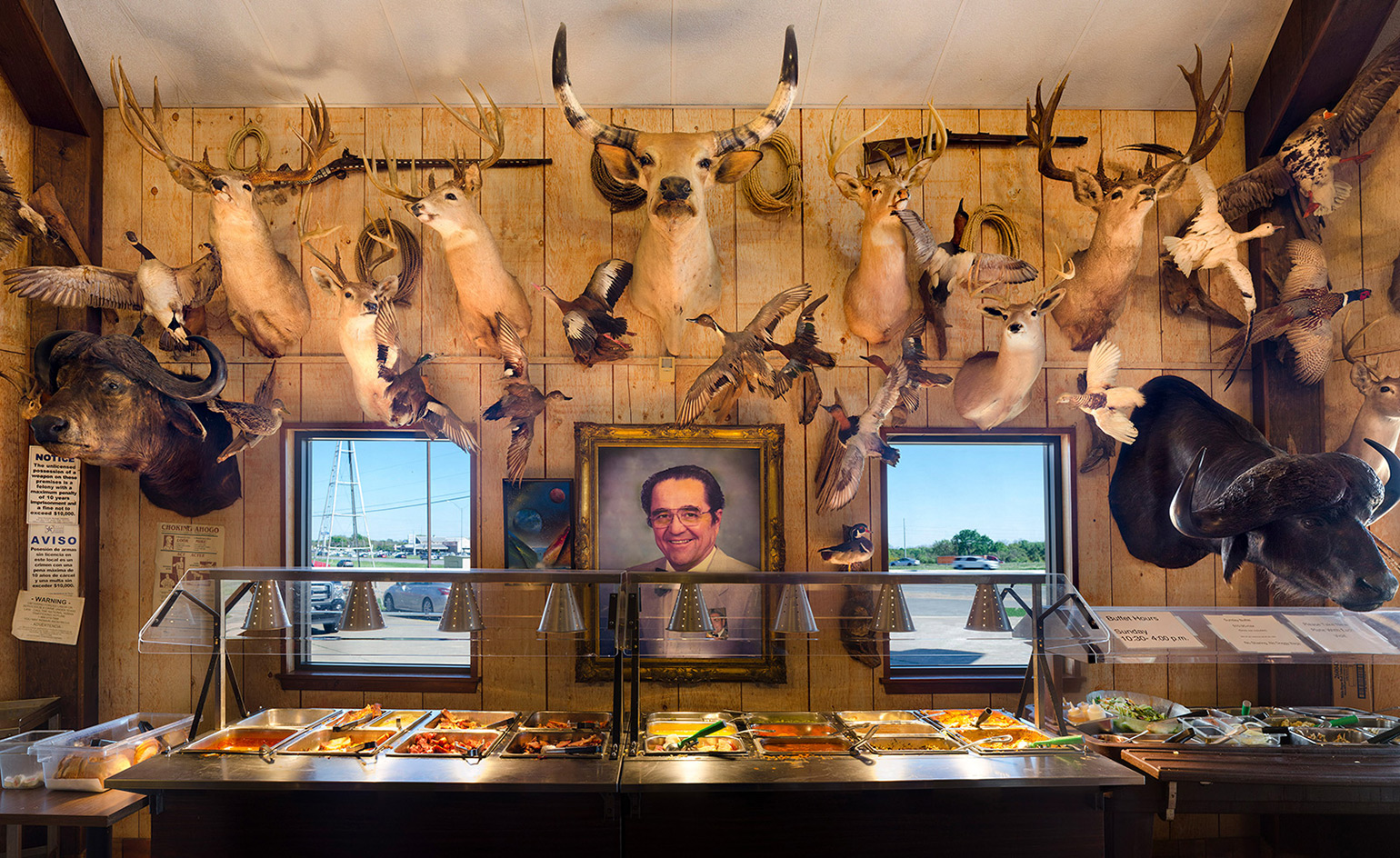
20 March
Sony World Photography Awards 2018
The Sony World Photography Awards announces the winners of the Open category and National Award today ahead of an exhibition at Somerset House, London, running from 20 April – 6 May. The awards celebrate photography from both professional and non-professional image-makers around the globe, with generous prizes sponsored by Sony across four competition levels and multiple categories. This year’s Outstanding Contribution to Photography was awarded to Candida Höfer for her lavishly detailed, large-format prints of vast interior spaces. The remaining winners will be revealed on 19 April.
Pictured, Sunday Buffet at Jerry Mikeska’s Bar-B-Q, 2018, by Richard Frishman, winner of Open Still Life and United States National Award categories. © The artist
Writer: Lynsie Roberts
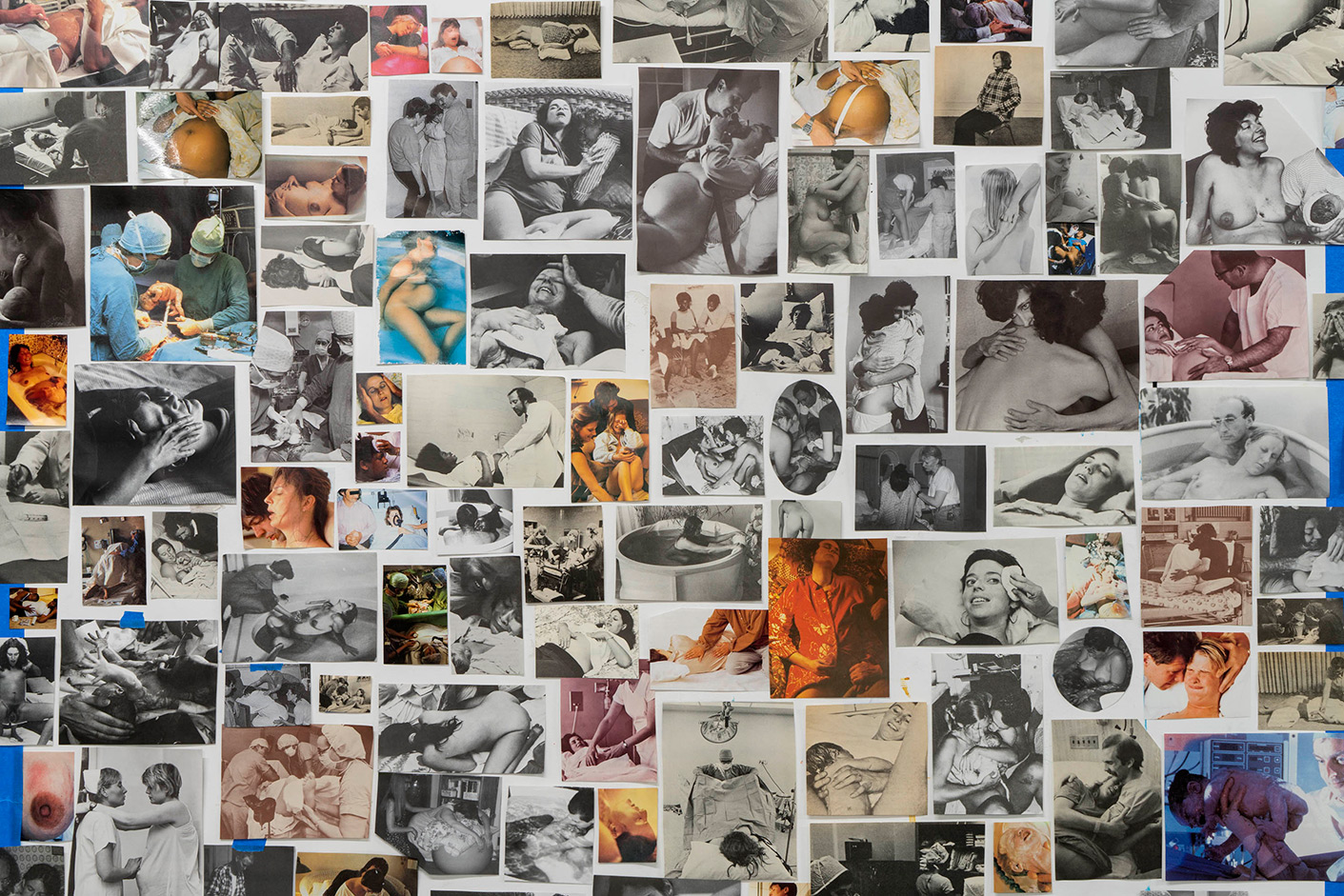
19 March
MoMA’s New Photography
In 1985, the Museum of Modern Art in New York launched a bi-annual exhibition series championing key photographic works. The latest edition – ‘Being: New Photography 2018’ (18 March – 19 August) – is curated by Lucy Gallun and features 17 international artists responding to ‘what it means to be human’. This year focused on representations of identity, re-examining modes of portraiture, performances of the self, and intertwining issues of gender, community, and personal histories. Carmen Winant’s collage installation of 2,000 uncensored images (pictured) of women giving birth gives a vital clarity to a universal experience that often goes overlooked.
Pictured, My Birth (detail), 2018, by Carmen Winant. © Carmen Winant
Writer: Lynsie Roberts
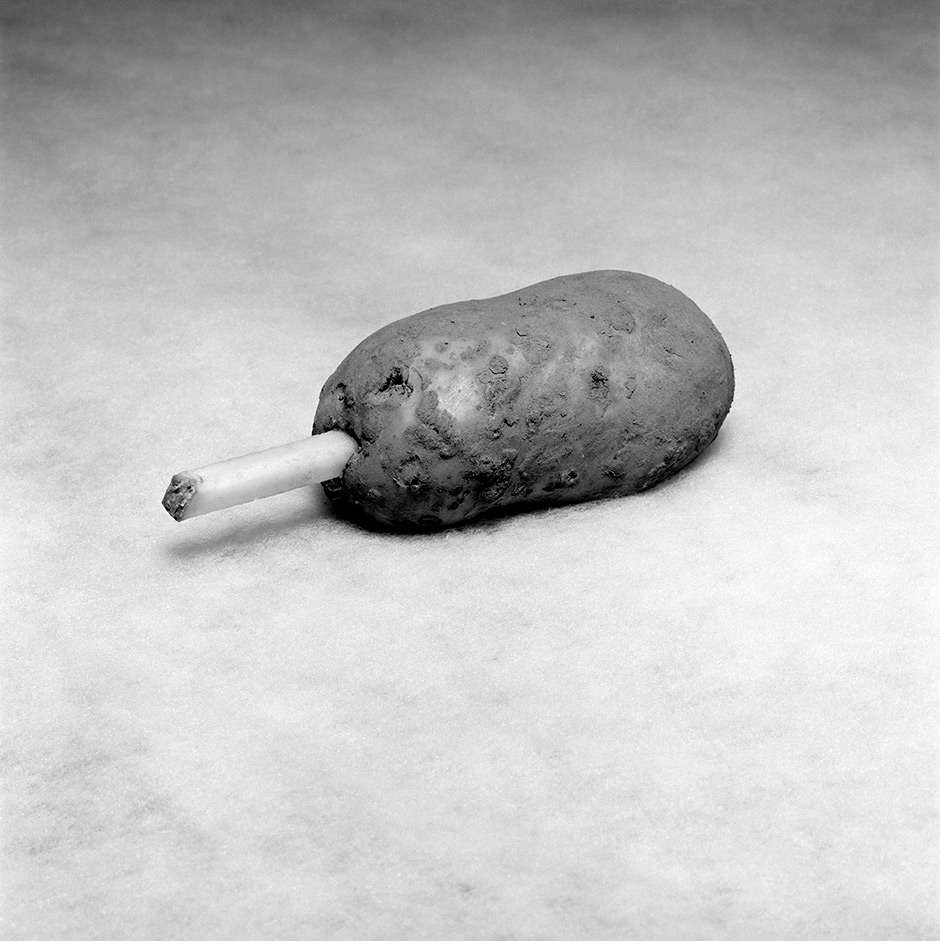
In a new book, SPUD, Brian Griffin considers the transformation of land from a war zone to industrial processing plant. The title is a play on British slang – a double entendre for both low-ranking soldiers and potatoes. Griffin undertook a three-week residency at Béthune-Bruary in northern France, a small town near the site of the Battle of Somme where a McCain potato factory had previously been a battlefield during the First World War. The book features Griffin’s style of nonchalant photography, fixing his lens on soldiers and potatoes in absurdist situations. Published by GOST Books, the book coincides with the exhibition ‘Between Here and Nowhere’ at Labanque Arts Centre in Béthune from 17 March until 15 July.
Pictured, Test Potato, McCain, 2017, by Brian Griffin. © The artist
Writer: Lynsie Roberts
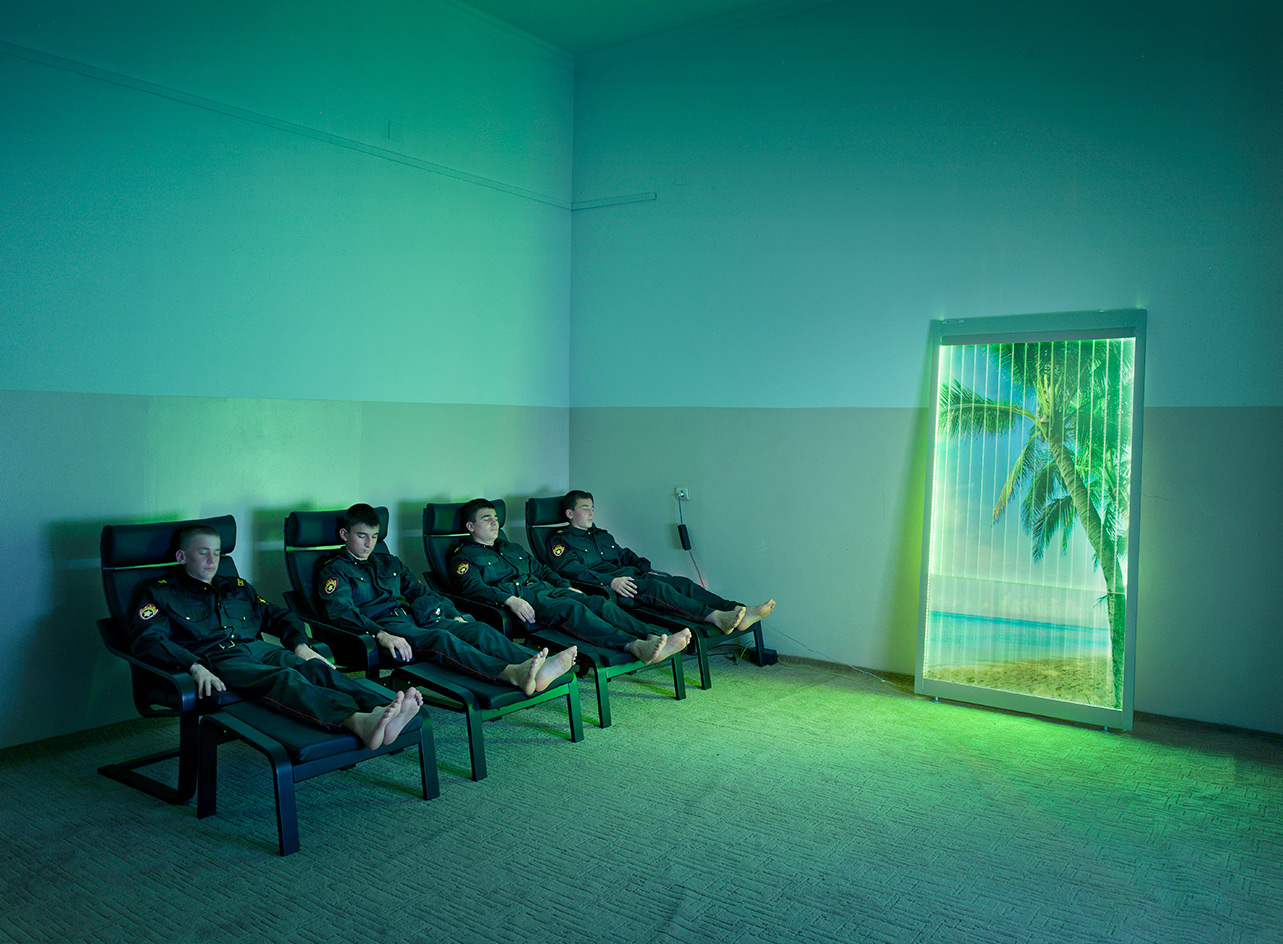
Circulation(s)
17 March
Circulation(s) festival opens 17 March, featuring the top emerging European photographers in a three-month exhibition at Centquatre in Paris. The exhibition will feature 50 creative photographers from around the continent, chosen by head curator Susan Bright and a jury of established photographers and galleries. The unique venue is an old Parisian funeral home that has been repurposed into a creative event space. One featured photographer is Frank Herfort (pictured), who captures surrealist scenes in Russia, like this psychological training room for young policemen. The exhibition is a great showcase of young talent, with the opportunity to discover fresh work and new ideas.
Pictured, Dreaming, Russian Fairy Tales, by Frank Herfort. © Frank Herfort
Writer: Lynsie Robert
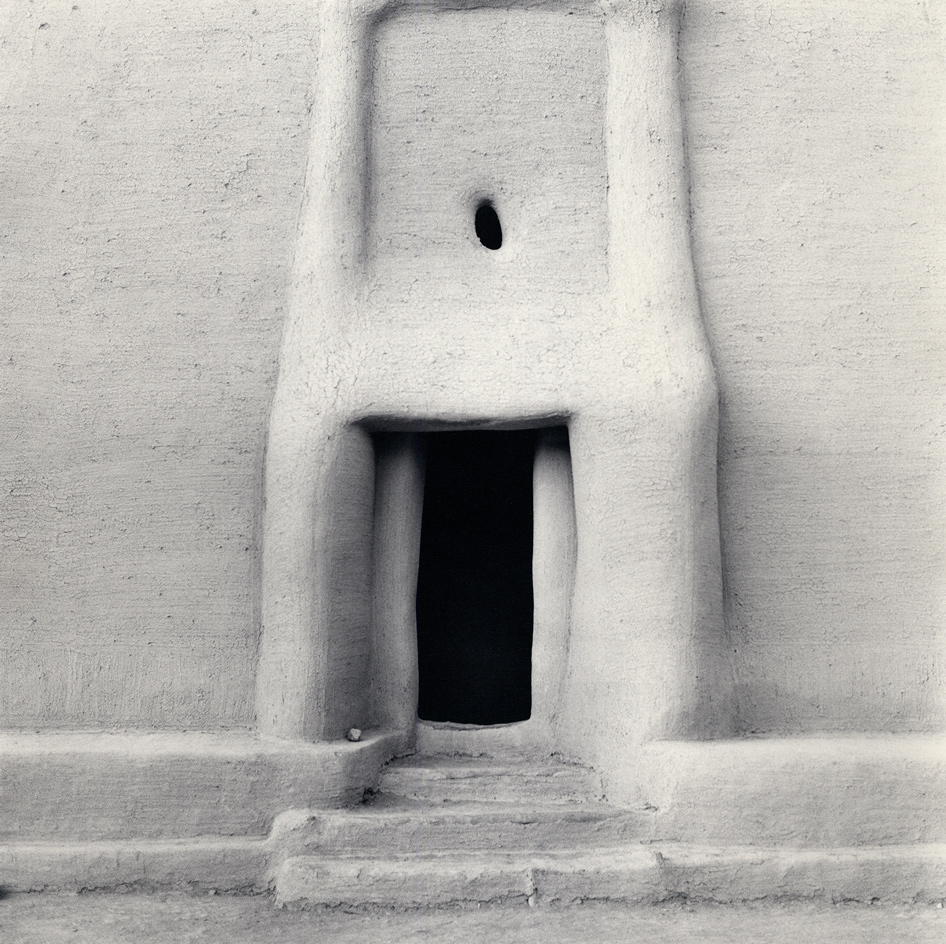
Identities, ideas and perspectives from the edge
12 March
Political action committee For Freedoms aims to add more depth to the American political discourse by bringing together artists from around the globe for a national advertising campaign and several art exhibitions. The campaign will feature artworks that explore divergent views and alternative ideas, with the aim to encourage critical thinking. ‘Margins and Center’, inspired by text by Gloria Jean Watkins, (better known by her pen name Bell Hooks), explores identities, ideas, and perspectives that are from the edge; it aims to advocate modes of seeing that consider both the mainstream and the marginalised. The project will call into question the critical frameworks and structures of power and borders that influence our positions and perceptions. On the view at The Houston Center for Photography until 29 April.
Pictured, The Shape of Things (Female), Carrie Mae Weems, Africa, 1993, by Carrie Mae Weems. © The artist
Writer: Lynsie Roberts
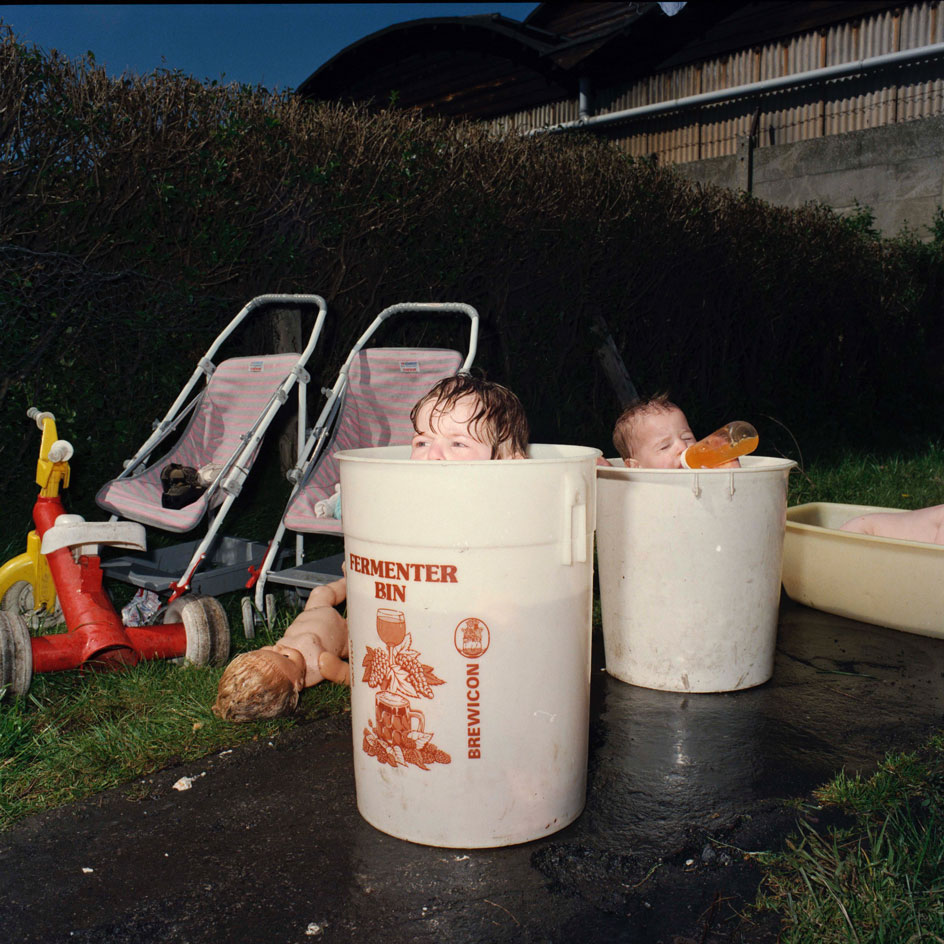
David Moore revisits Derby’s working class
9 March
For David Moore’s ‘Lisa and John’ exhibition, he revisited a project made in the 1980s of working class communities in Derby. Approaching the original families again, he asked them to make an edit of the archival images and comment on their context. Lisa and John, since divorced, were invited to make new selections and reinterpret their history. The following dialogue between the two was the basis for an accompanying theatrical play. The exhibition brings into question roles of authorship, participation, and archival intervention. On view at London Gallery West until 22 April.
Pictured, Nicola and Milly Buckets, by David Moore. © The artist
Writer: Lynsie Roberts
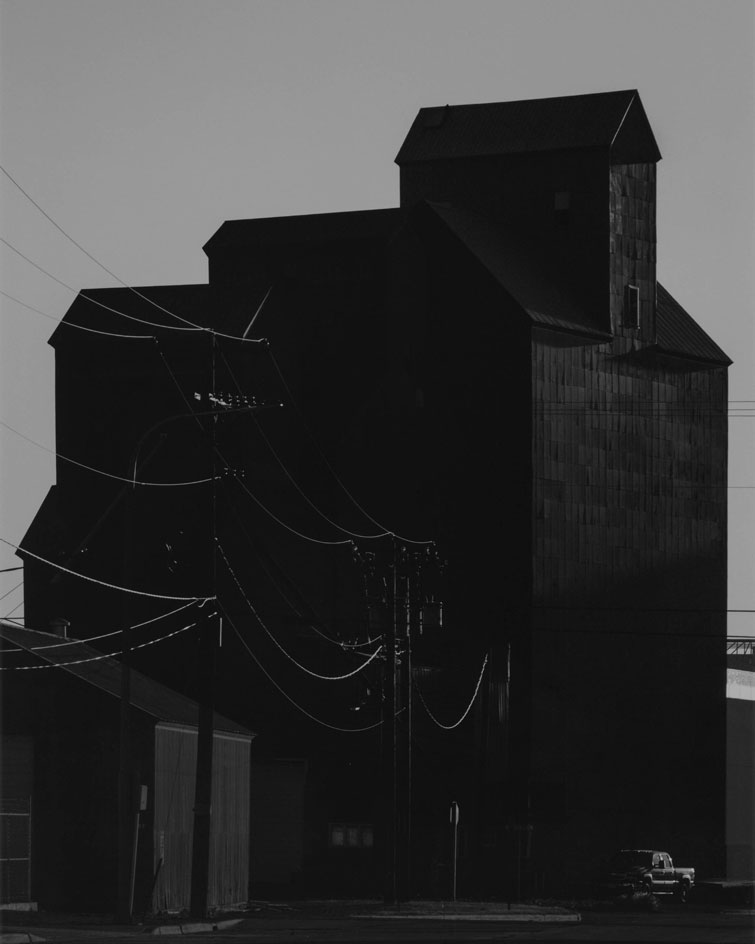
Daniel Shea wins the 2018 Foam Paul Huf Award
8 March
American photographer Daniel Shea is the winner of the Foam Paul Huf Award 2018, as announced today by the Amsterdam gallery. ‘I’m a bit at a loss at the moment; to say that I’m honored feels like an understatement,’
says the New York-based artist. ‘I’ve been following this award and Foam for a long time, and I feel incredibly honored, grateful, lucky, and humbled by this opportunity.’
The coveted prize has been running since 2007 in support of up-and-coming photographers. Shea follows in the footsteps of Taryn Simon (who won in 2007) and Romain Mader (in 2017), among others.
Pictured, Untitled, 2016, from the series Devils Lake, by Daniel Shea, 2016. Courtesy of the artist
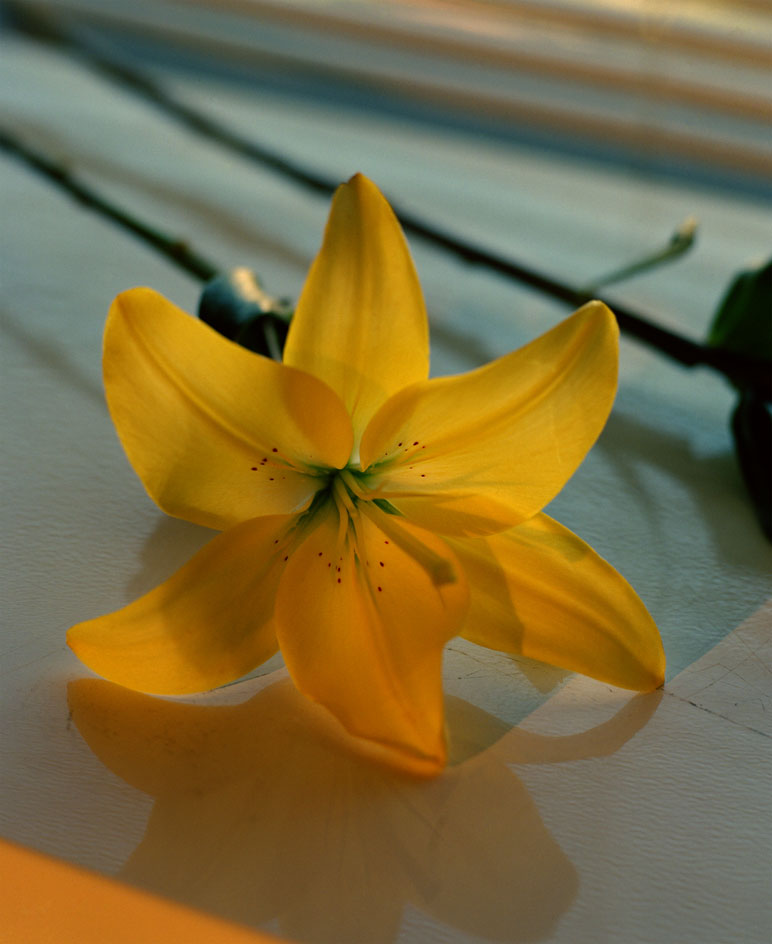
EYM partners with Webber Gallery
7 March
Enlarge Your Memories (EYM) has partnered with Webber Gallery to give four emerging photographers carte blanche in a gallery space. ‘Fever Dreams’ debuts the work of Grace Ahlbom, Molly Matalon, Jean Vincent Simonet, and Deter Lander, whose work crosses the boundaries of portraiture, fashion, editorial, and documentary. EYM is a fashion and photography project that gives artists the space to collaborate outside the confines of commissioned editorials. The same philosophy was applied to this exhibition, whereby each photographer was given 6m of gallery space to display their work as they wished. Until 16 March.
Pictured: Untitled, by Molly Matalon. © the artist
Writer: Lynsie Roberts
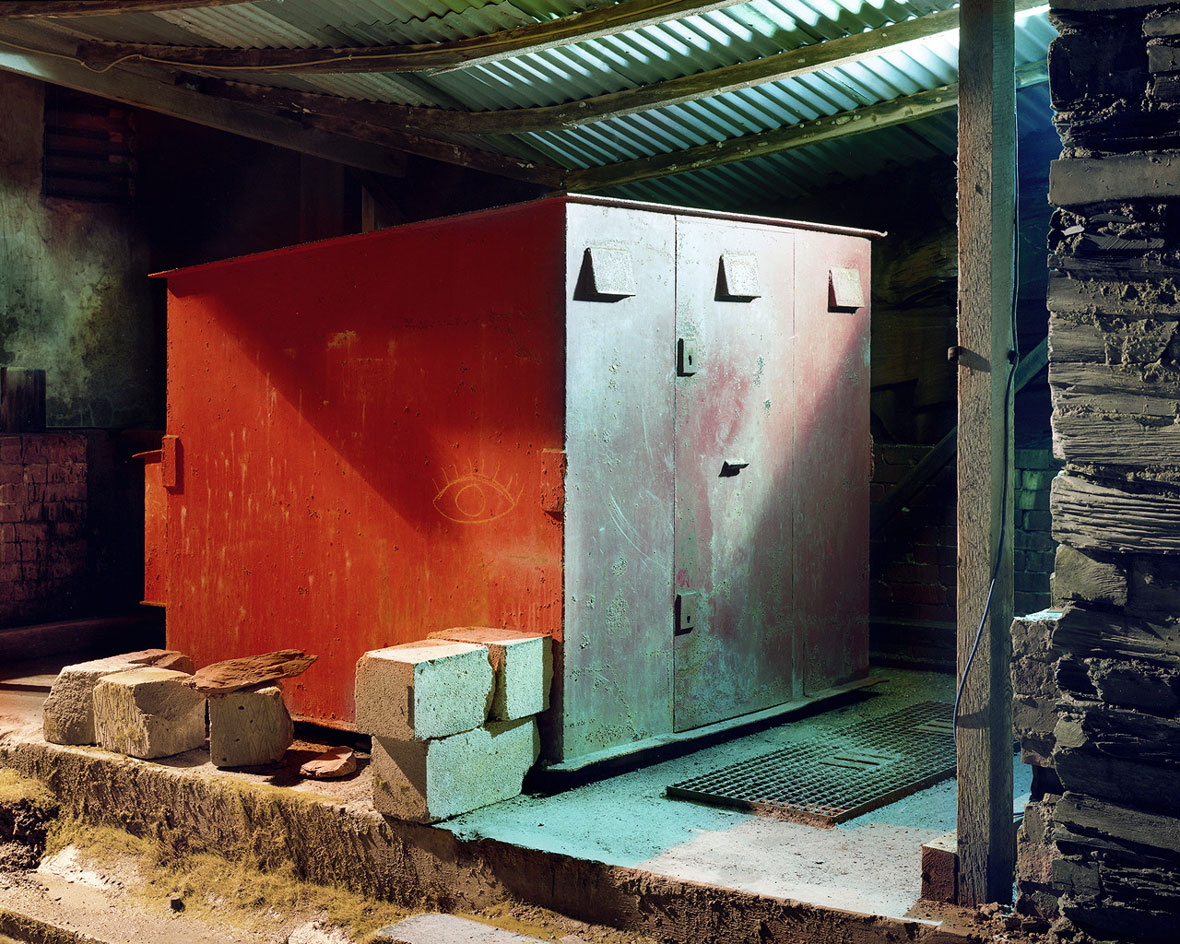
Robin Friend retraces the wartime journey of masterpieces
6 March
During World War Two, The National Gallery in London sent its revered art collection to be protected underground in a slate mine in Manod, Wales, for the four years that followed the war. Now, artist Robin Friend has recreated the journey that these masterpieces would have travelled, and photographed the caves and quarries where they remained untouched, hidden and safe. The exhibition, fittingly hosted by The National Gallery, provides insight into the cultural history and provenance of this great art collection, accompanied by archival photos and a film. ‘Manod: The Nation’s Treasure Caves’, coinciding with the ‘Civilisations’ festival and a BBC series. Until 8 April.
Pictured, Untitled, Wales, by Robin Friend. © The artist
Writer: Lynsie Roberts
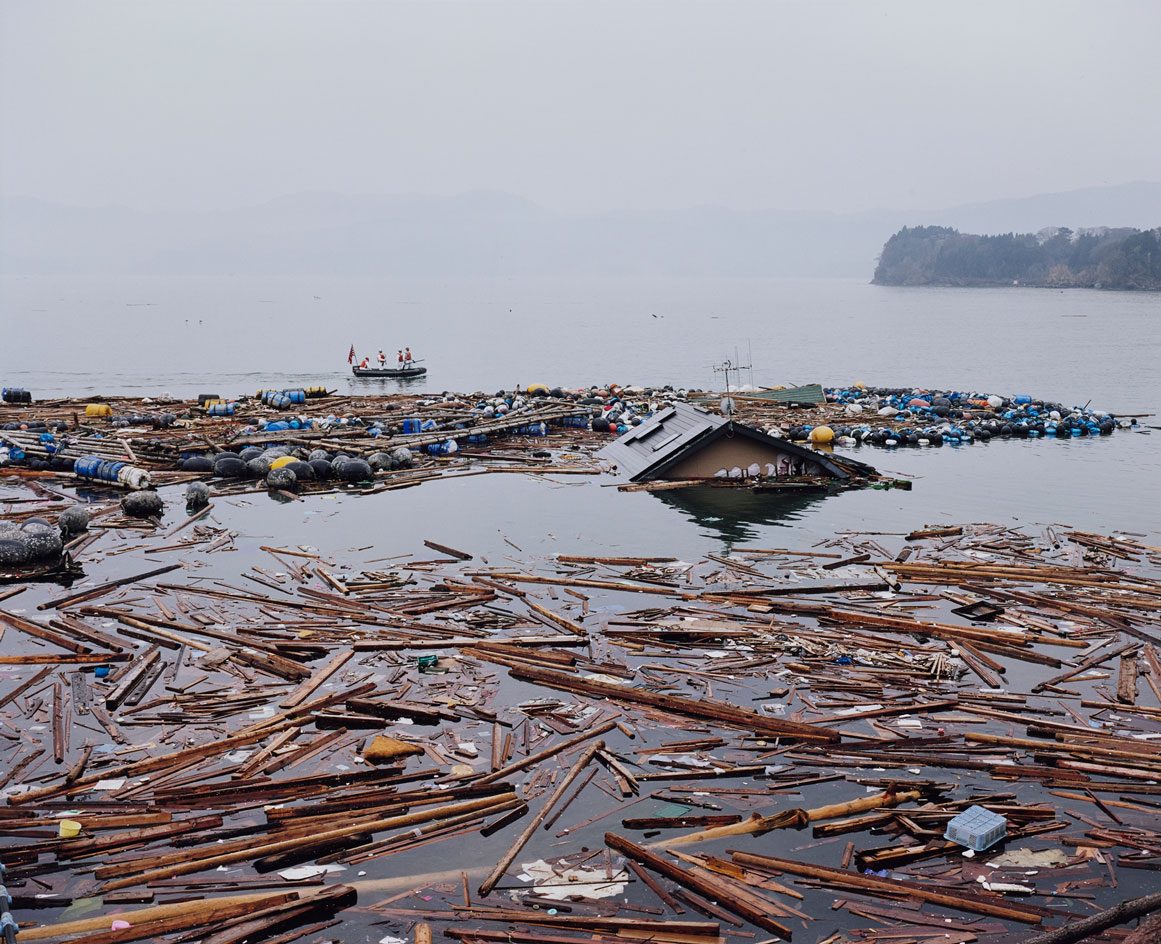
Naoya Hatakoeyama’s large-scale Japanese landscapes
5 March
Naoya Hatakeyama’s large-scale photographs capture the beauty in destruction across Japanese landscapes and urban centres. Over the past 30 years, Hatakeyama has used a large format film camera to chart the growth and demolition of nature and cityscapes, from limestone explosions, piles of ruins, and remnants of a tsunami. His series Rikuzentakta documents his home town after the devastating effects of the earthquake and tsunami in March 2011 (pictured). ‘Excavating the Future’ is on at on at the Minneapolis Institute of Art until July 22.
Pictured, Yoneasaki-cho, 2011.5.1, 2011, by Naoya Hatakeyama, from Rikuzentakta. © Naoya Hatakeyama. Courtesy of Minneapolis Institute of Art
Writer: Lynsie Roberts
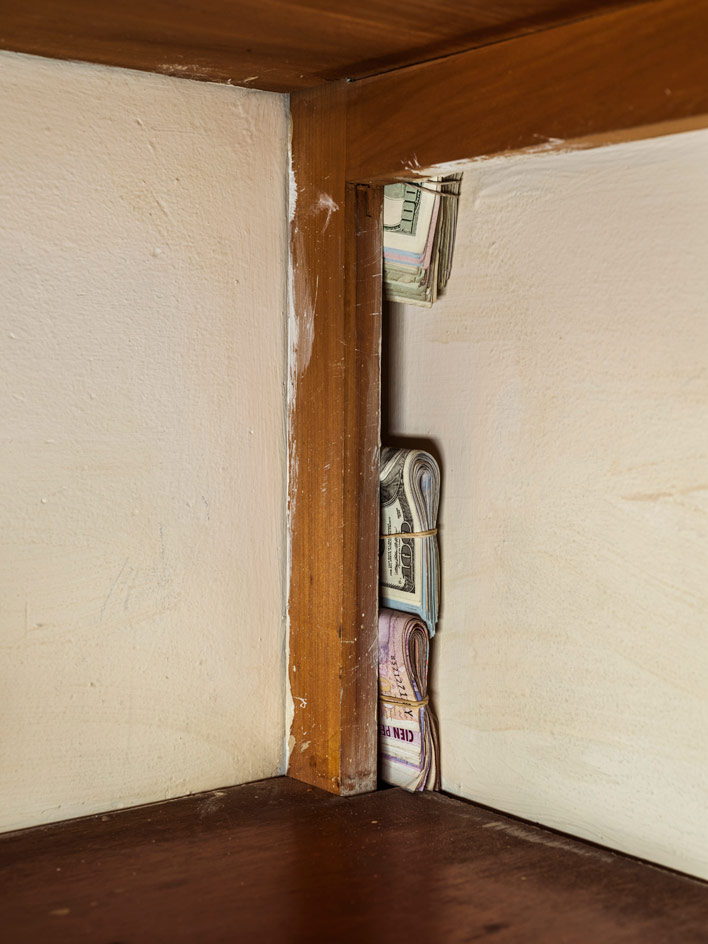
Magnum photographers make themselves at home
2 March
Magnum invited 16 of its photographers to explore the theme of ‘home’ for an upcoming exhibition that will tour around the world. Each photographer made a personal interpretation in response to the theme, depicting notions of family, home, parenthood, and a sense of place and belonging. Photographers from around the world include Alec Soth, Elliot Erwitt, Jonas Bendiksen, Hiroji Kubbota, Antoine d’Agata, and Thomas Dworzak. Debuting in New York, then moving to London, the exhibition will also visit Paris, Tokyo, Cologne, and an additional five cities.
Pictured, The closet, 2017, by Alessandra Sanguinetti. © Alessandra Sanguinetti
Writer: Lynsie Roberts
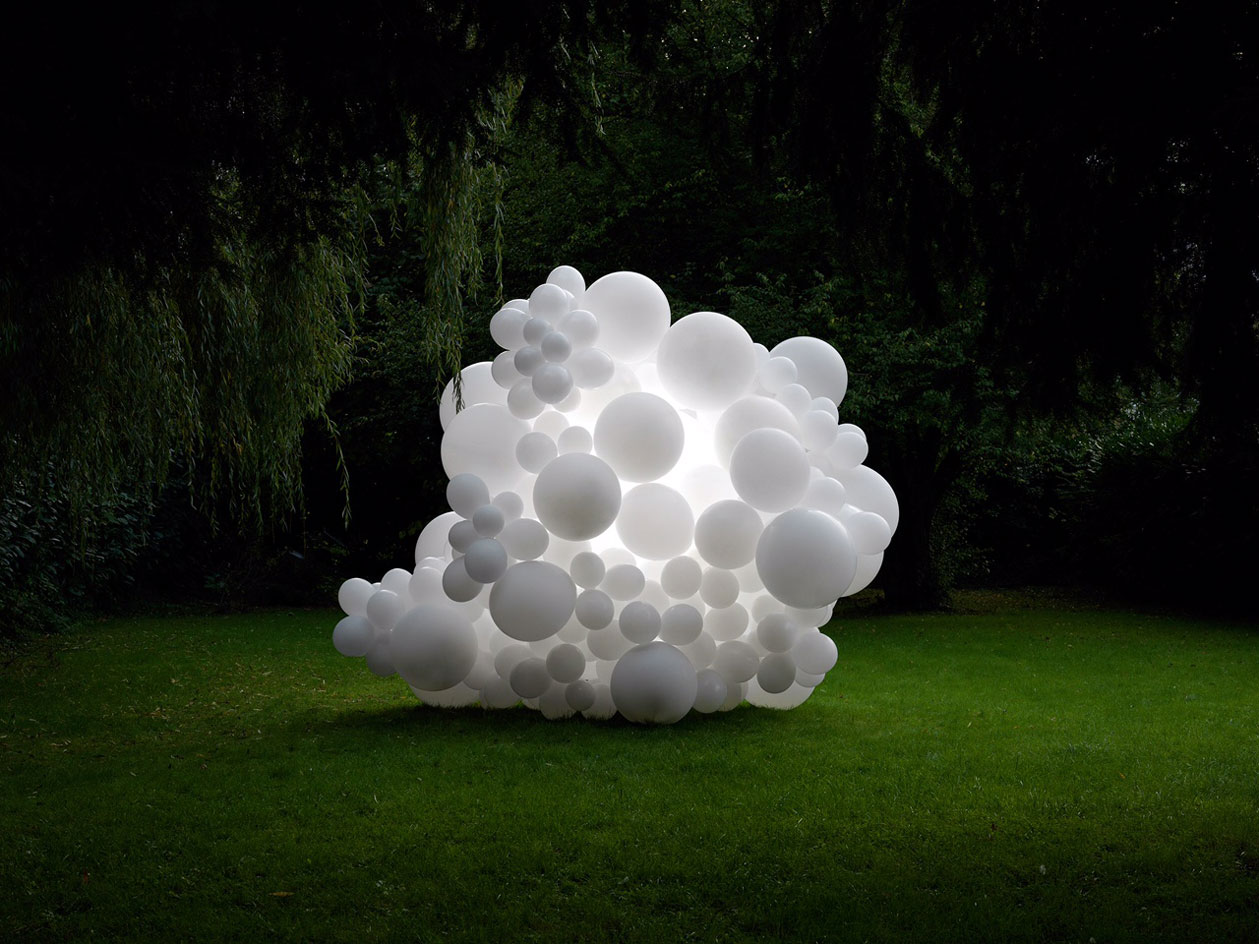
‘A Slight Shift’ is happening in New York
1 March
A group of artists re-imagines our perception of the everyday through a group exhibition at Sous Les Etoiles Gallery in New York. ‘A Slight Shift’ proposes seeing beyond the mundane and focusing on the vast possibility of aesthetic experiences. The combination of photography and installation art transforms how we look at the ordinary, creating visual metaphors that are both beautiful and surreal. Charles Pétillon, Javier Riera and Barry Underwood reinterpret their landscapes, embuing it with a sense of poetry, incorporating high imagination in their art. Until 14 April.
Pictured, Igloo 1, Charles Pétillon, 2016. © The artist
Writer: Lynsie Roberts
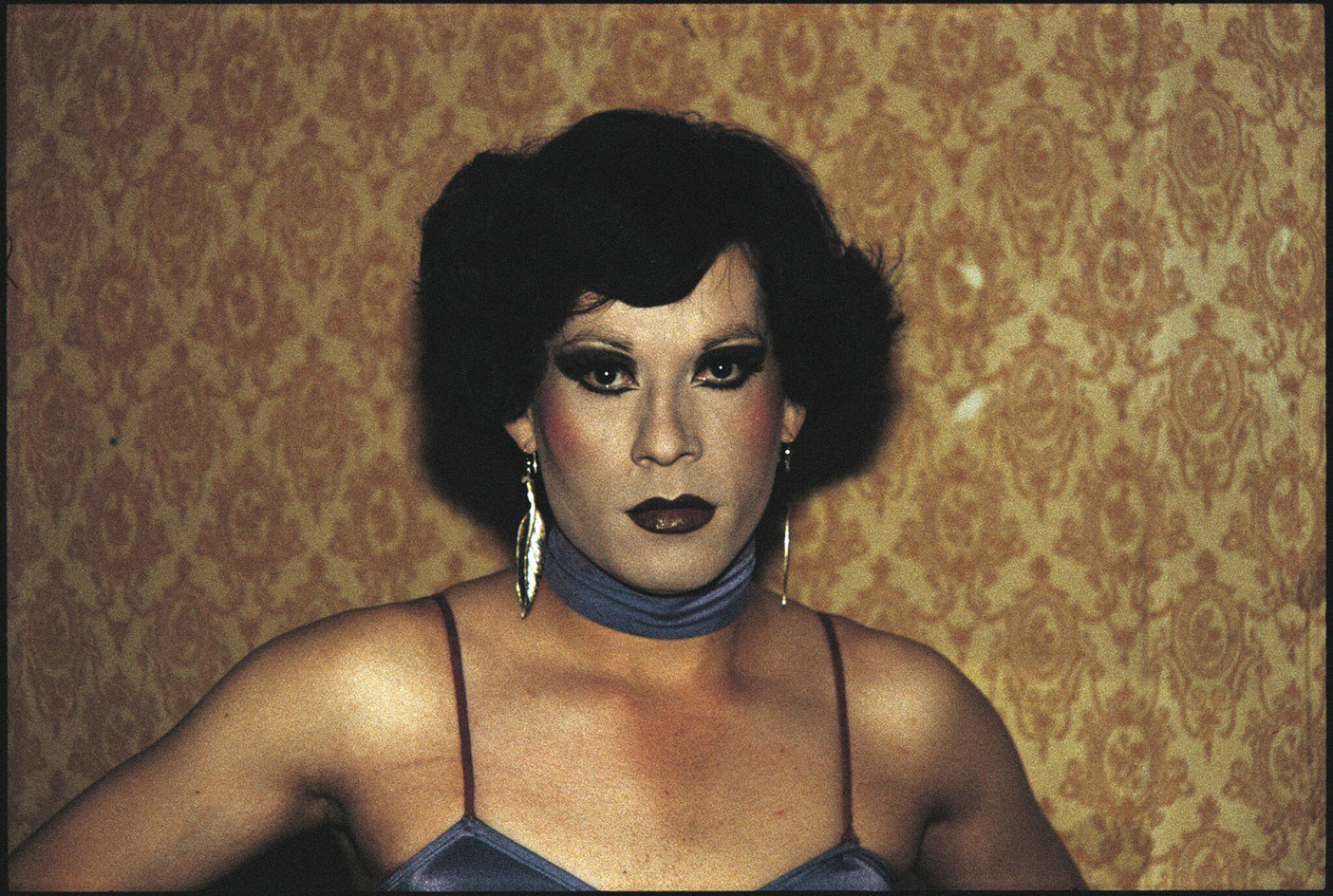
Life on the margins
28 February
Rebels, hermits, gang members and transvestites – a world outside of societal norms is the focus of a new exhibition at the Barbican. ‘Another Kind of Life: Photography at the Margins’ focuses on those who dare to live beyond mainstream culture, the subjects making divergent lifestyle choices and embracing counter-cultures. Photographers on show include Larry Clark, Mary Ellen Mark, Diane Arbus and Bruce Davidson, among others, in a multi-media show featuring vintage and contemporary photographs, rare films, photobooks and magazines. It should prove to be an inspiring example of independent thinkers on sexuality, gender, fashion, politics and alternative ways of viewing the world.
Pictured, Evelyn, La Palmera, Santiago, 1983, Paz Errázuriz. © Paz Errázuriz. Courtesy of the artist
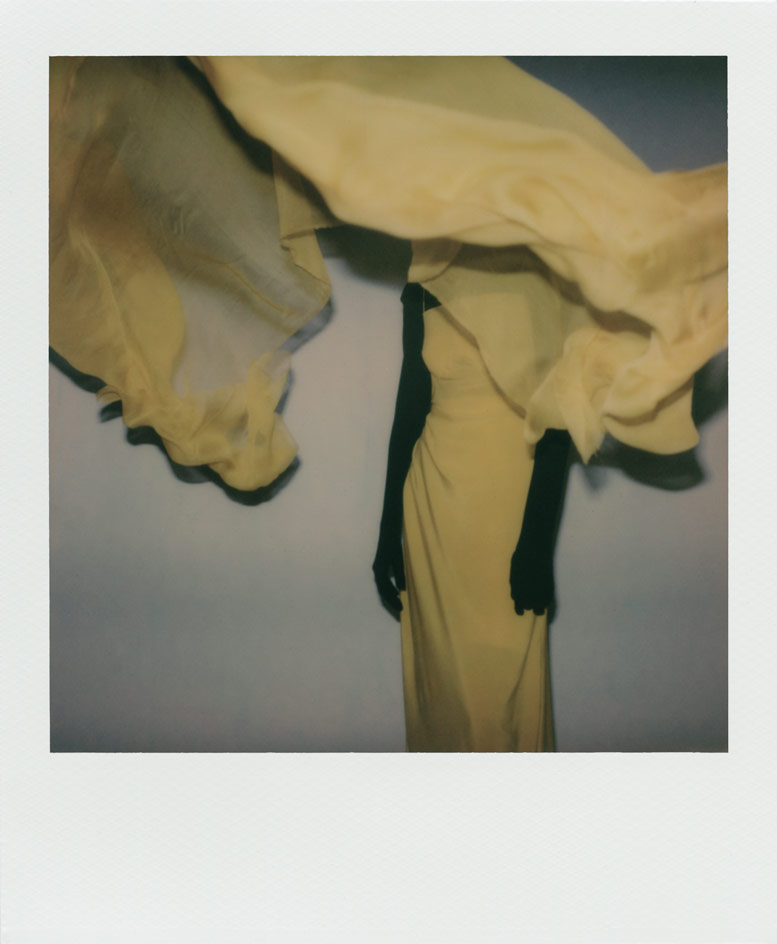
Nicolas Lecourt Mansion in Polaroids
27 February
A selection of whimsical Polaroids capturing the fashion collection of Nicolas Lecourt Mansion is currently on display at Paris’ Galerie Joseph. ‘51 Polaroids, shot by François Pragnère’, features the designer’s friends and muses playing with the theatricality and movement of the clothing. The photographs will be shown alongside the debut collection as part of the Paris Fashion Week presentation. Pragnère considers photography a ‘medium of delayed gratification’, which is evident in the poetic playfulness of the Polaroids.
Pictured, Untitled, 2018, by François Pragnère. © The artist
Writer: Lynsie Roberts
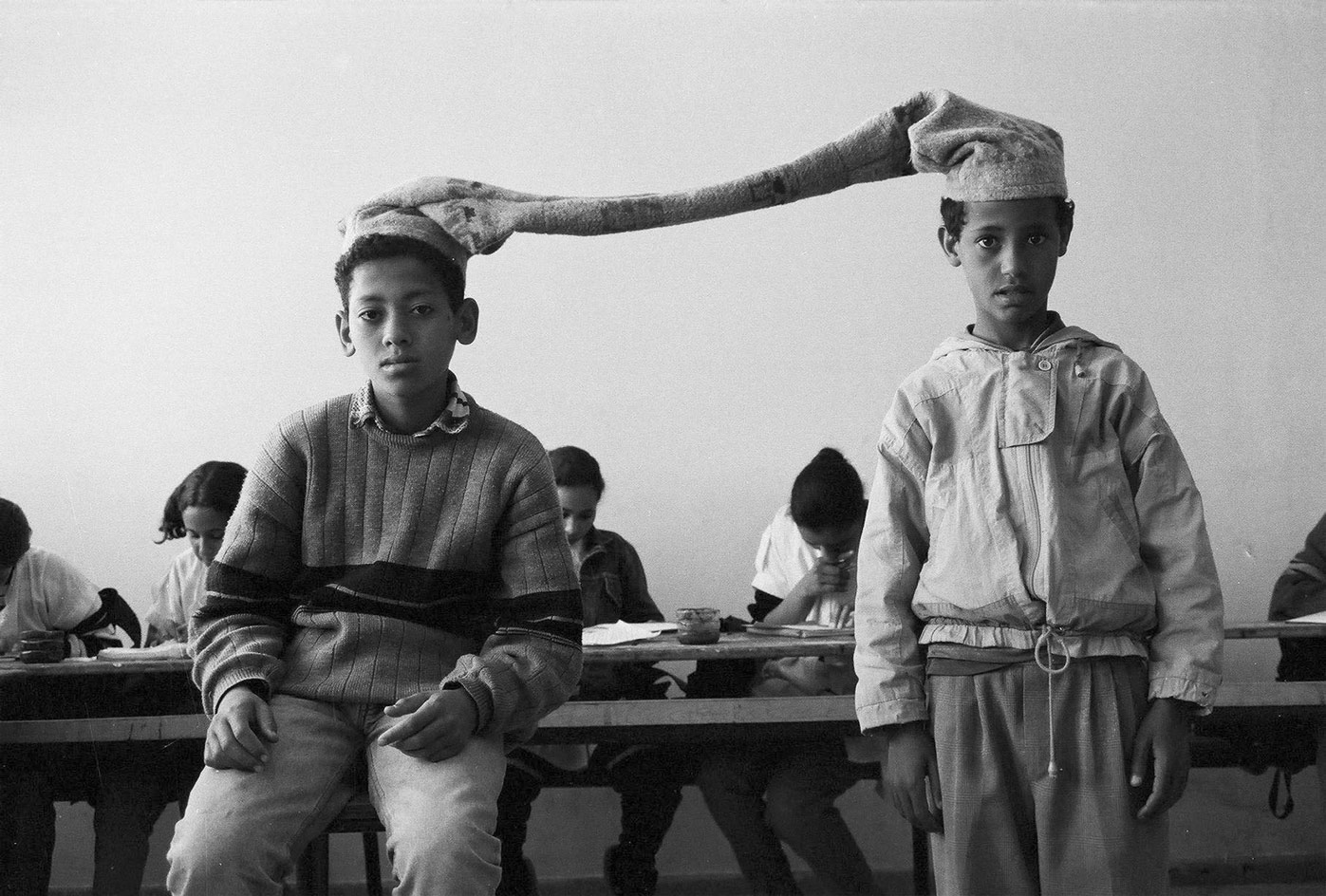
African photographers inaugurate MACAAL
26 February
Coinciding with the first-ever Marrakech edition of 1:54 Contemporary African Art Fair at La Mamounia in Marrakech, the newly unveiled MACAAL is presenting an exhibition of African photographers in ‘Africa is No Island’. The exhibition brings together 40 emerging and established photographers that consider themes of representation, history, and borders. The show aims to transcend physical barriers by incorporating multiple perspectives of the African experience, highlighting creativity energies, cultural diversities, traditions, and daily life. The show has been curated by Afrique in Visu, which acts as a platform to provide support and a network to professional photographers. Until 24 August.
Pictured, Untitled La salle de classe series, 1994-2002, by Hicham Benohoud. © The artist
Writer: Lynsie Roberts
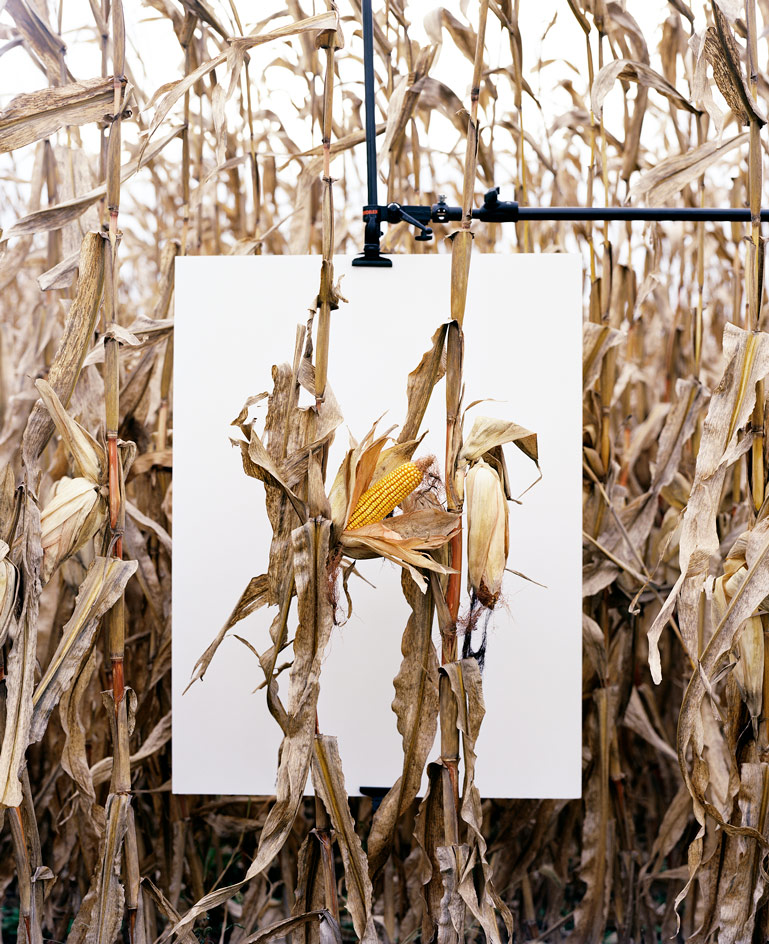
The Deutsche Börse Photography Foundation Prize 2018
23 February
The Deutsche Börse Photography Foundation Prize 2018 exhibition opens today at The Photographer’s Gallery in London with shortlisted photographers including Mathieu Asselin, Rafal Milach, Batia Suter and Luke Willis Thompson. Each of the candidates examines the representation of knowledge through visual culture within their individual bodies of work. Mathieu Asselin (pictured) studied the biotech corporation Monsanto, and its detrimental effects environmentally, sociologically, and economically. The annual prize awards £30,000 to a photographer who has made a significant contribution to the medium of photography, with the winner being announced on May 17. The show runs until June 3.
Pictured, Untitled, 2013, by Mathieu Asselin. © The artist
Writer: Lynsie Roberts
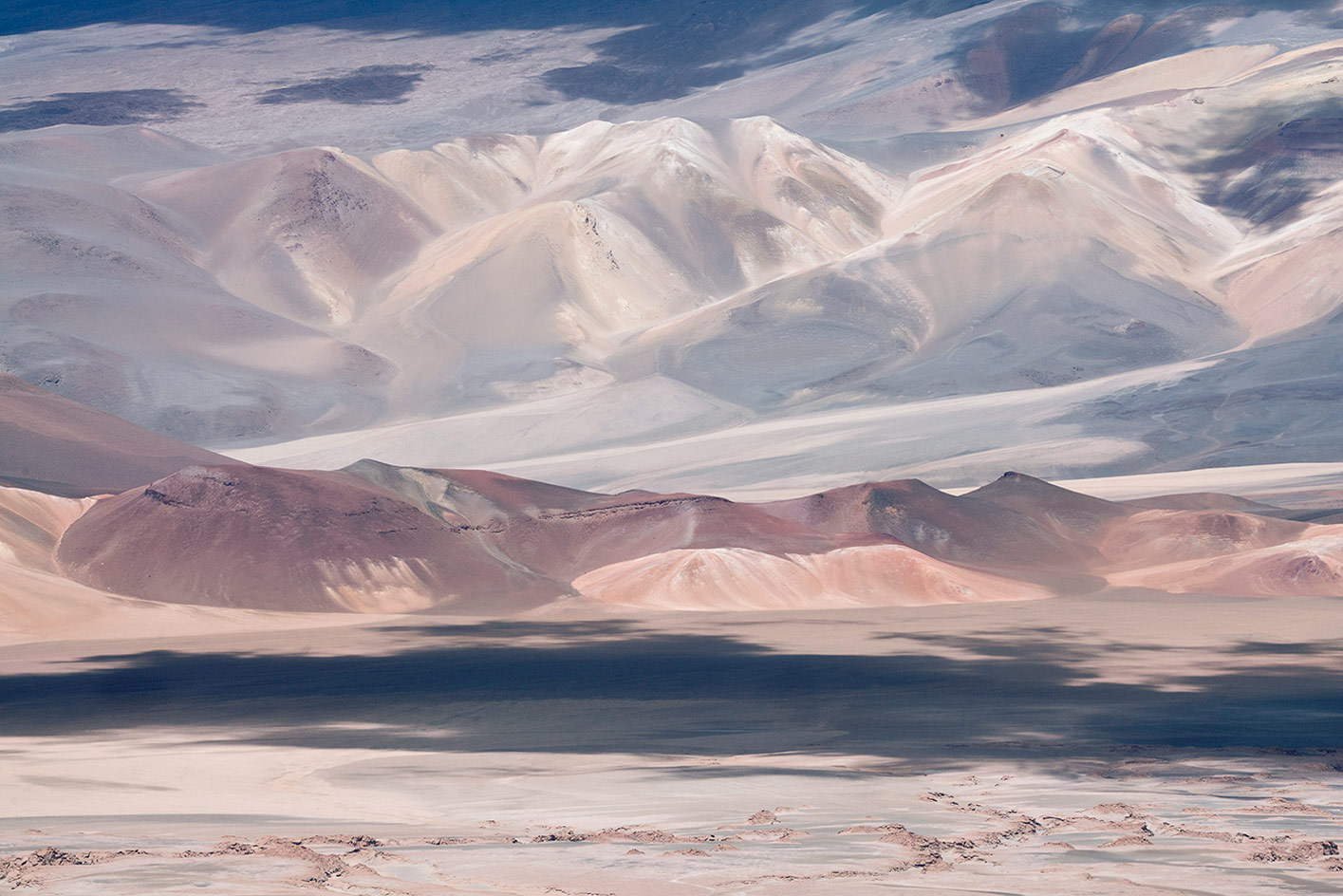
San Francisco Photofairs 2018
22 February
A selection of international galleries will be coming together in San Francisco for the latest Photofairs this weekend to present the best in contemporary photography. Also held in London and Shanghai, and the fair highlights the best from Chinese and Latin American markets. In addition to the gallery exhibitions, the fair will include key talks regarding the international art photography market and artist talks to offer insight to collectors. There will also be a curated video art collection focusing on themes of womanhood, power, and representation. Until 25 February.
Pictured, Shadowmountains, 2017, by Maroesjka Lavigne. © The artist. Courtesy of Robert Mann Gallery
Writer: Lynsie Roberts
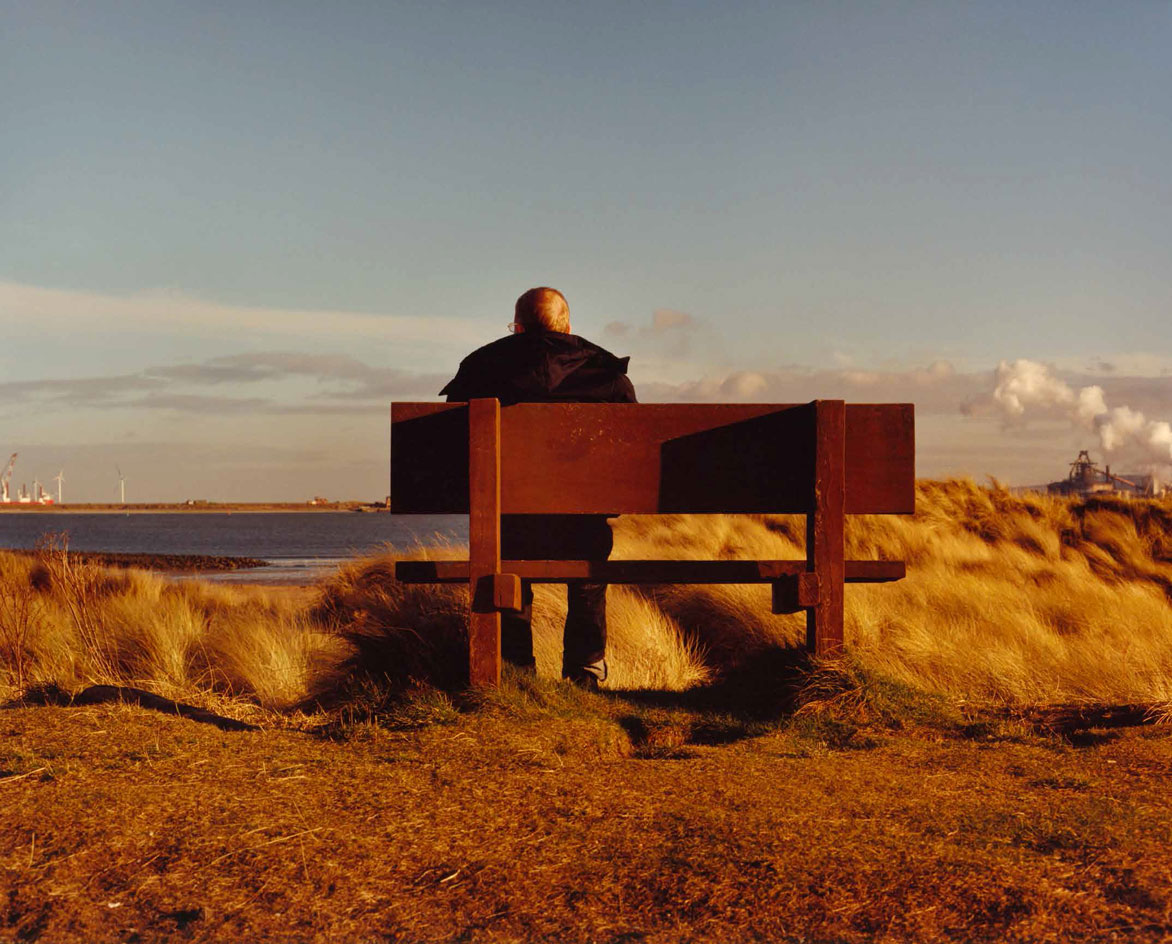
Jamie Hawkesworth pops up in London
22 February
Jamie Hawkesworth will be debuting a new series of personal work in a pop-up gallery on 24-25 February in London. The show will include photographs and sculptures inspired by the British coastal towns of Hartlepool and Inverness. Hawkesworth gained acclaim as a photographer for his lo-fi style, shooting his subjects by daylight with film and processing them himself. The show is a respite from Jamie’s usual work of shooting campaigns for high fashion brands such as Alexander McQueen, JW Anderson, and Loewe.
Pictured: Untitled, by Jamie Hawkesworth, 2017. © the artist
Writer: Lynsie Roberts
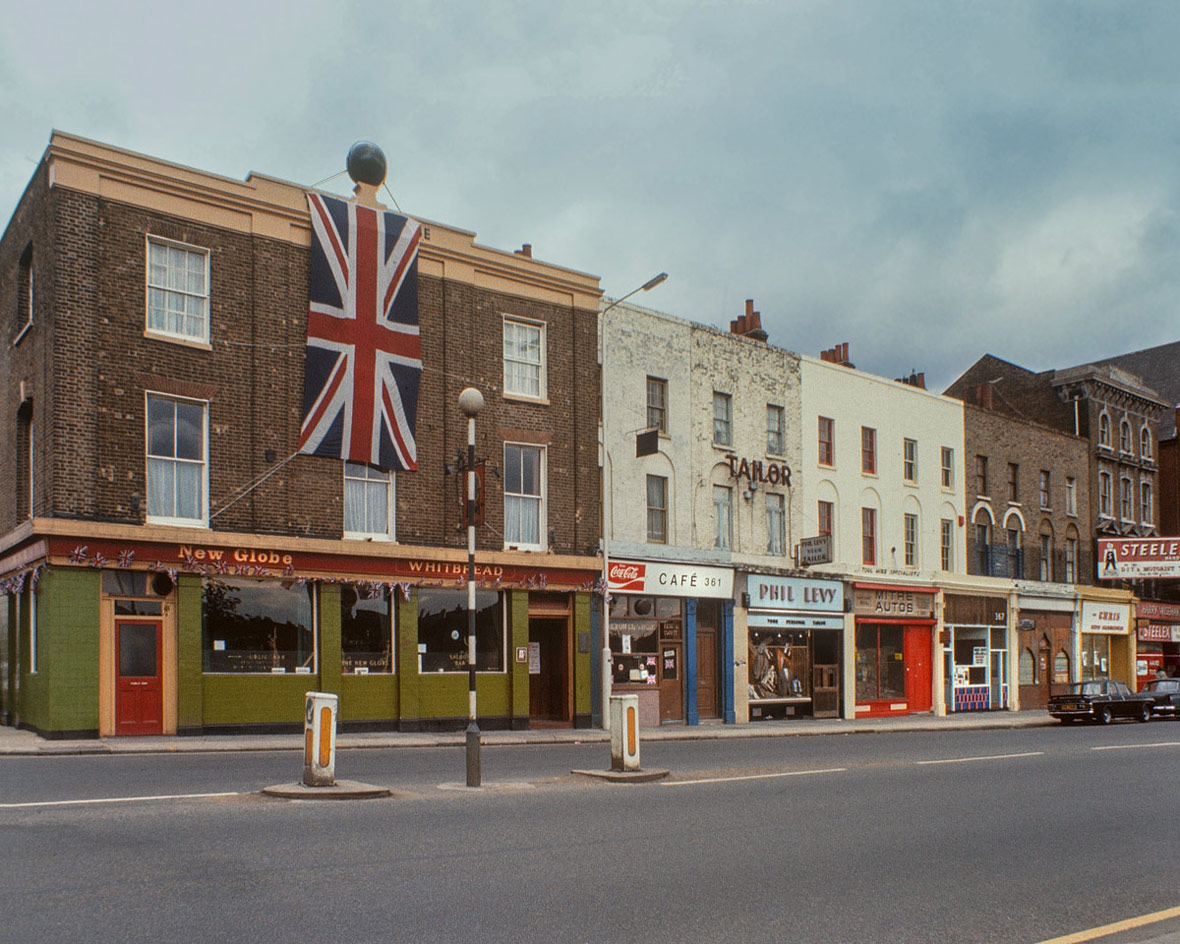
David Granick is a Hoxton hero
20 February
Photographer David Granick was born in Stepney and lived in the area his entire life. Upon his death in 1980, he left a large archive of thousands of colour slides of east London. Last year Chris Dorley-Brown embarked on a project to digitize the collection, curating a selection for an exhibition that celebrates the Kodachrome history of the neighbourhood. The colourful photographs from the 1960s and 70s present a rich visual record of the pubs, shops, architecture, cars, and people. The exhibition is on view at the Tower Hamlets Local History Library & Archives, and accompanied by a book published by Hoxton Mini Press.
Pictured: Untitled, by David Granick. © the artist. Courtesy of Tower Hamlets Local History Library & Archives
Writer: Lynsie Roberts
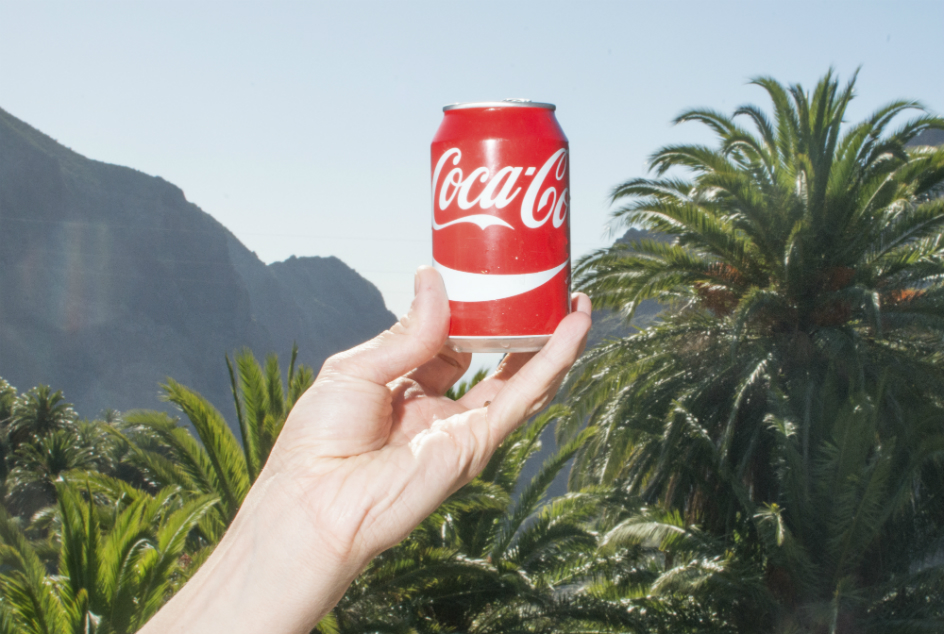
Alexander Coggin hits the streets
19 February
As part of this year’s Düsseldorf Photo fair, Alexander Coggin will take to the city’s Ninasagt Galerie to exhibit a large body of work shot over the past eight years. Coggin’s trademark aesthetic captures unexpected scenes and humorous juxtapositions, with a bright flash that emphasises the colours and textures within the image. Coggin’s street photographer ethos sees him document a broad range of subjects, both banal and personal. Exploring digital printing techniques, he has rendered over 100 images across various objects – including sweatshirts, mugs, sandals and clocks – as well as traditional framed prints. Until March 17.
Pictured: Untitled, 2017, by Alexander Coggin. © the artist
Writer: Lynsie Roberts
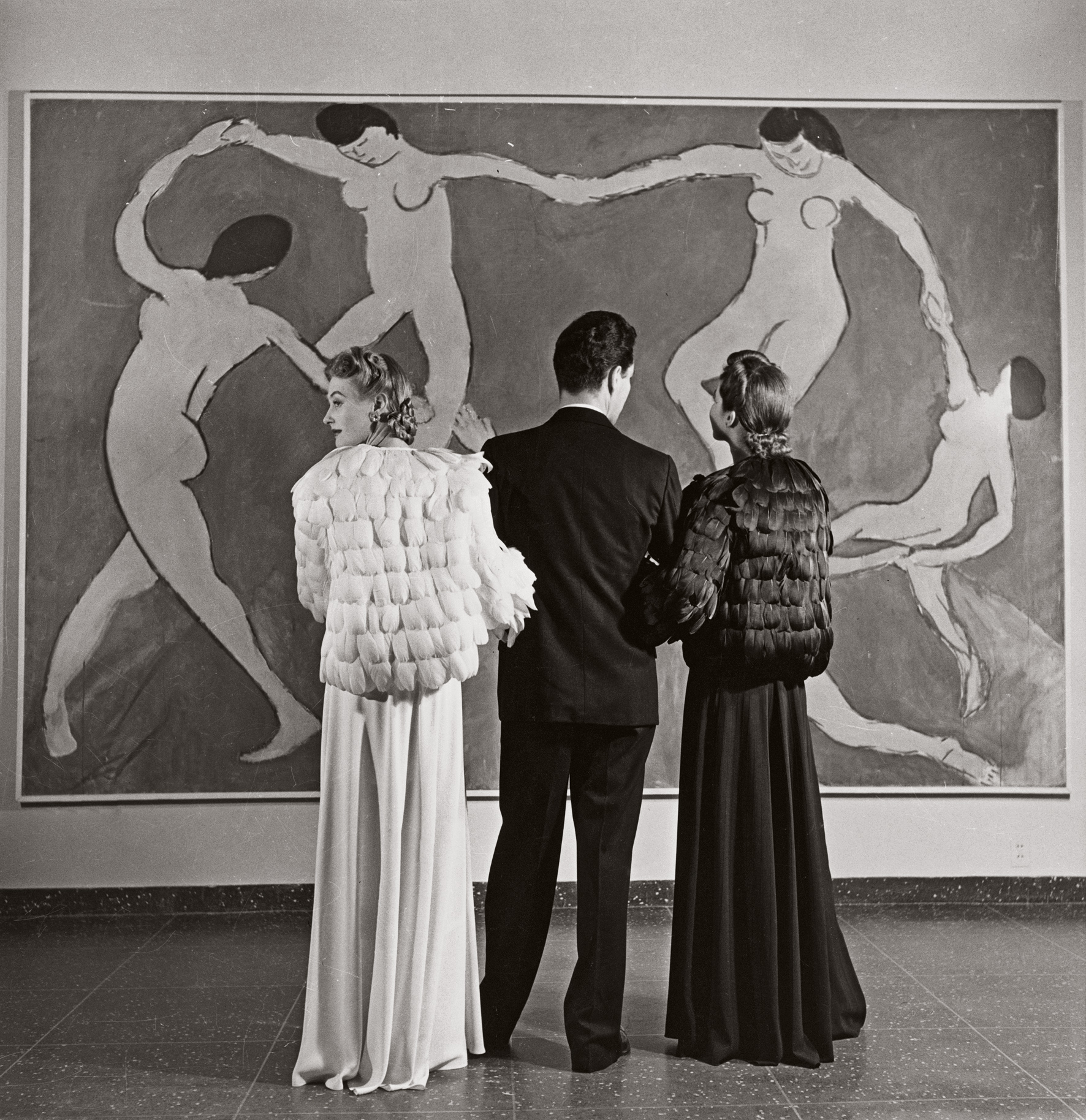
Historical and contemporary works at Düsseldorf Photo
16 February
Düsseldorf Photo opens this weekend, filling the city with over 30 photography exhibitions across galleries, museums, cultural institutions and independent project spaces. The fair will feature both historical and contemporary works by over 100 photographers, and includes a photo book fair, film programme, public performances, studio visits, portfolio reviews and a symposium. Sammlung Philara will exhibit images and installations by Barbara Kasten, whose abstract photographs of constructed sculptures play with colour, light and form. The fair’s extensive offering is set to affirm Düsseldorf’s role as a photography centre and global cultural hub.
Pictured: A style of her own, Museum of Modern Art, Looking at Matisse, circa 1940, by Louise Dahl Wolfe
Writer: Lynsie Roberts
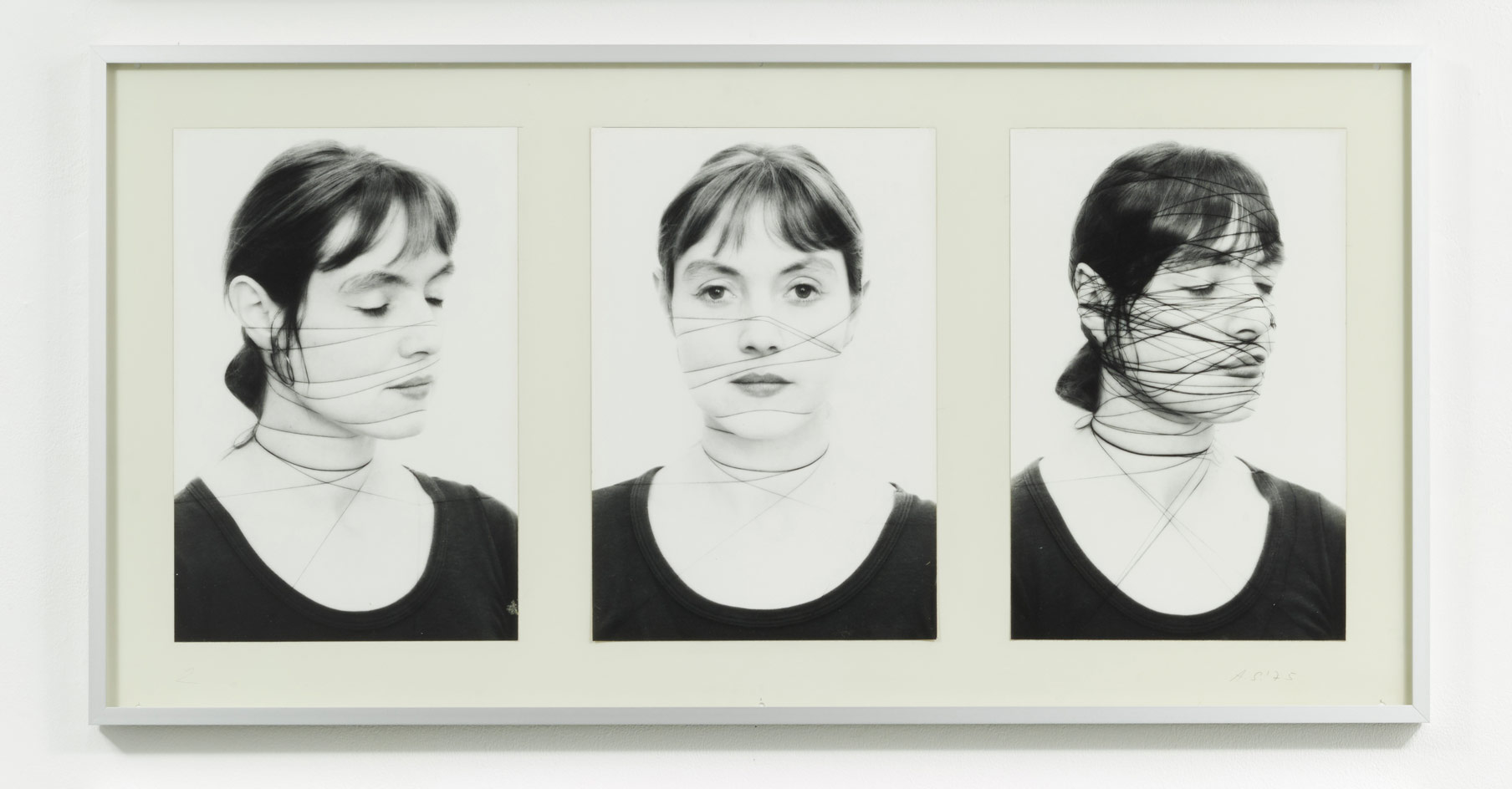
‘Women Looking at Women’ in Mayfair
15 February
Richard Saltoun debuts its new gallery location in Mayfair with the exhibition ‘Women Looking at Women’. Pioneering female artists working in photography, film, performance, and sculpture examine themes of identity and representation. Featured artists include Francesca Woodman, Helen Chadwick, Jo Spence, and Alexis Hunter. Predominantly avant-garde pieces from the 1970s explore concepts of femininity as performance, the body as a site of political and social discourse, a rejection of the traditional roles of women, and the reclaiming of female sexuality. Until 31 March.
Pictured, Selbst II, 1-12 (Self II, 1-12), 1975, by Annegret Soltau. © The artist. Courtesy of Richard Saltoun Gallery
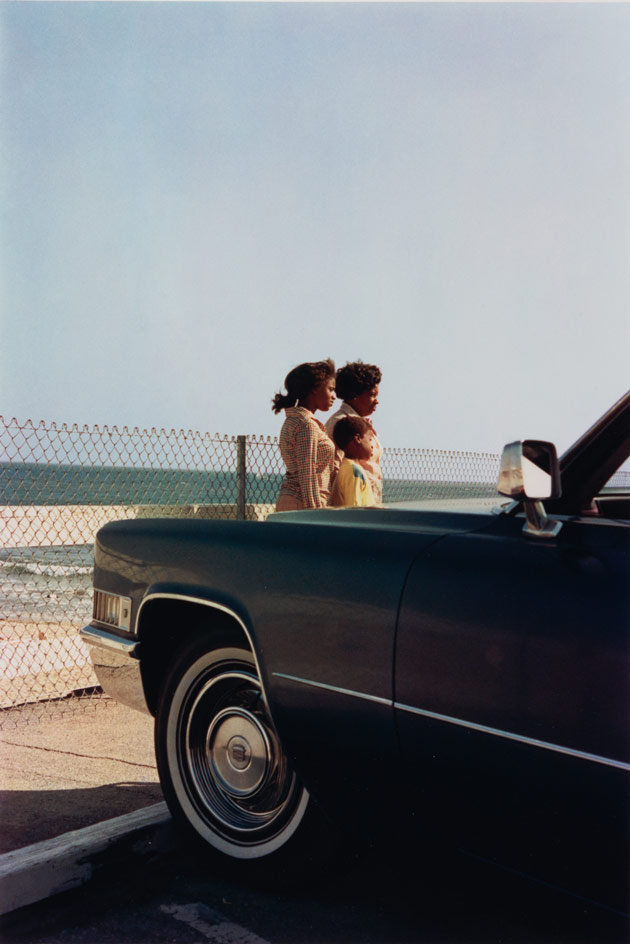
William Eggleston’s post-war Americana arrives at The Met
14 February
The work of William Eggleston, American pioneer of colour photography, will be the highlight of a new exhibition at The Met Museum this Spring. ‘Los Alamos’ will feature 75 dye-transfer prints from of his road trips through New Mexico, New Orleans, Las Vegas, and Los Angeles from 1965-1974. His ‘democratic way of looking’ recorded the banality of post-war America in vivid colour, turning his camera on any subject that caught his eye. It’s an amazing opportunity to see original prints of some of Eggleston’s most iconic photographs. Until 18 May.
Pictured: Santa Monica, by William Eggleston, 1974. © Eggleston Artistic Trust
Writer: Lynsie Roberts
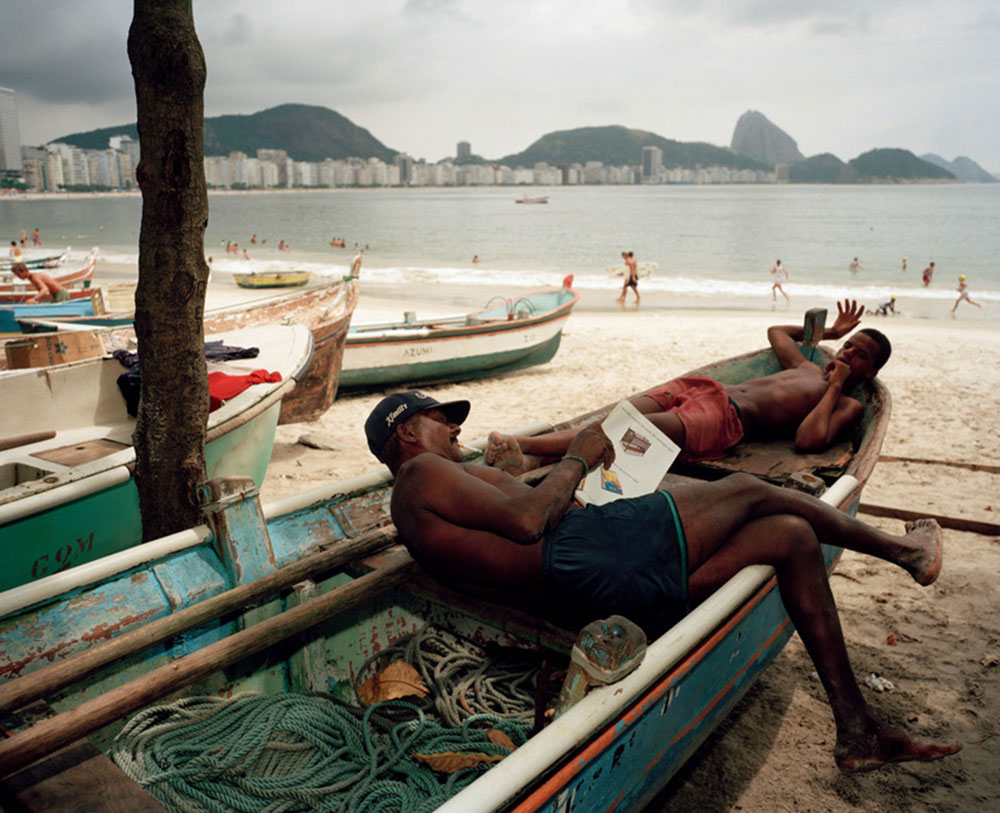
Martin Parr’s Spanish vacation
13 February
Martin Parr brings his seaside holiday snapshots to Huelva, Spain with his exhibition ‘Life’s a Beach’ opening at the Fundacion Caja Rural del Sur gallery. He has been fascinated by holidaymakers for decades, since the 1986 debut of ‘The Last Resort’ featuring the New Brighton resort and growing into project that’s taken him to beaches around the world. ‘Life’s a Beach’ is abound with Parr’s signature aesthetic: images saturated by sun-soaked colours, ironic juxtapositions, and absurd activities. His humorous perspective of beach leisure is a delightful insight into ‘quirky national behaviours’. Until 25 March.
Pictured, Copacabana Beach, Rio de Janeiro, Brazil, 1996, by Martin Parr. © The artist / Magnum Photos
Writer: Lynsie Roberts

Inside America’s prisons
12 February
Aperture’s release of the book Prison Nation is a timely document that presents a visual representation of mass incarceration in America; a collection of photographers, artists and essayists who gained access to the prison system, giving insight into individual stories. Included is Lucas Foglia’s Rikers GreenHouse project (pictured), which documents the organic gardening initiatives of the inmates of Rikers Island. Also included is Bruce Jackson’s social documentary in the 1960s and 1970s, images by incarcerated artist Jesse Krimes and correction officers Jamel Shabazz and Lorenzo Steele Jr, and photographic archives from San Quentin State Prison.
Pictured, Vanessa and Lauren watering, GreenHouse Program, Rikers Island jail complex, 2014, by Lucas Foglia. © The artist. Courtesy of Fredericks & Freiser Gallery, New York
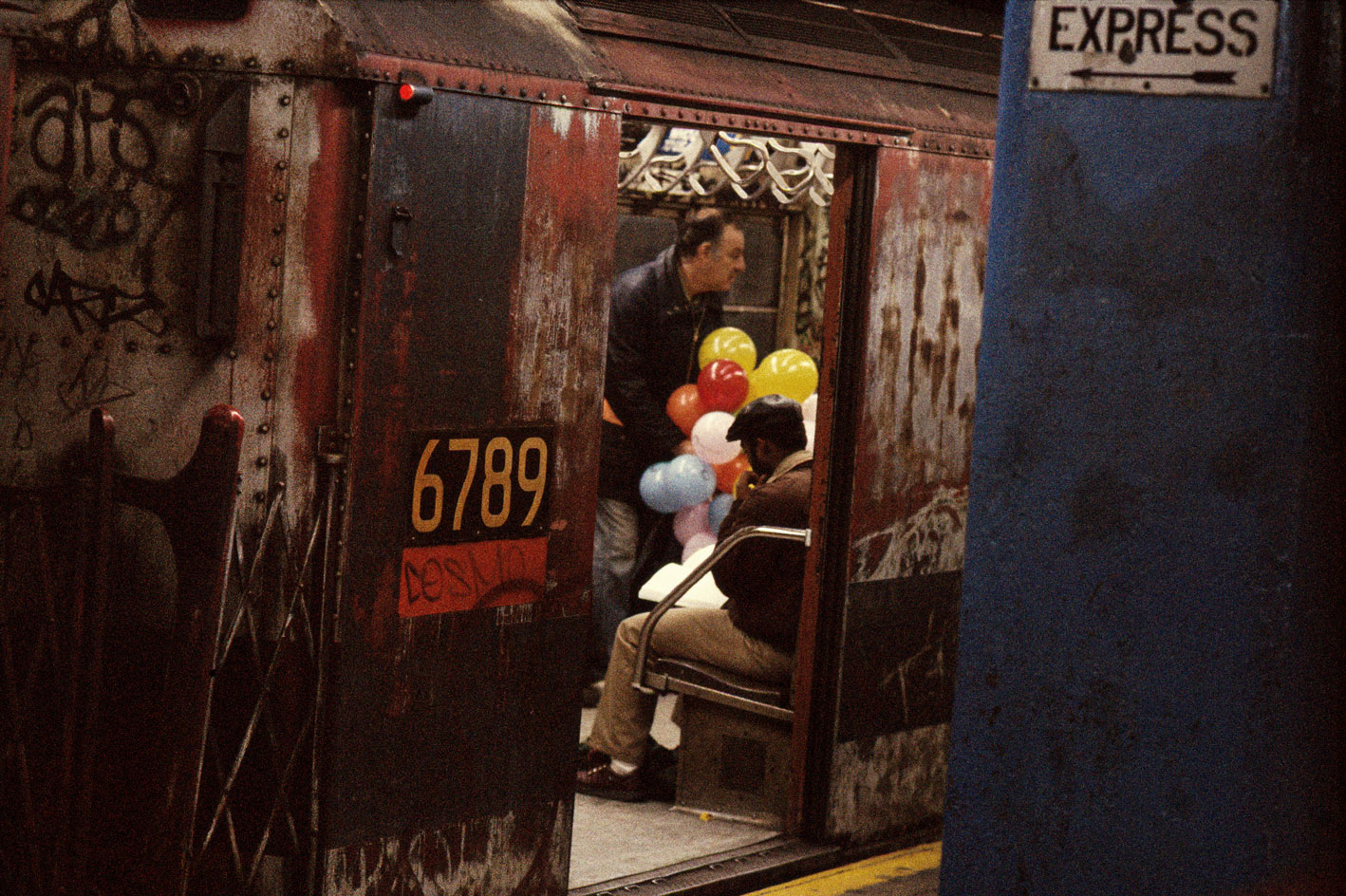
A Kodachrome recollection of 1980s New York
9 February
Frank Horvat’s rare collection of colour photographs are the subject of a new exhibition at Fifty One, New York. Focussing on his travels to New York during the 1980s, he used his camera as a tool to observe the characters and idiosyncrasies of the city, documenting public life across the highly diverse neighbourhoods. The series is a vibrant city-portrait, captured on a densely saturated Kodachrome film – a nostalgic snapshot that shouldn’t be missed. Until 7 April.
Pictured, Balloons in the subway, 1984, by Frank Horvat. © The artist
Writer: Lynsie Roberts
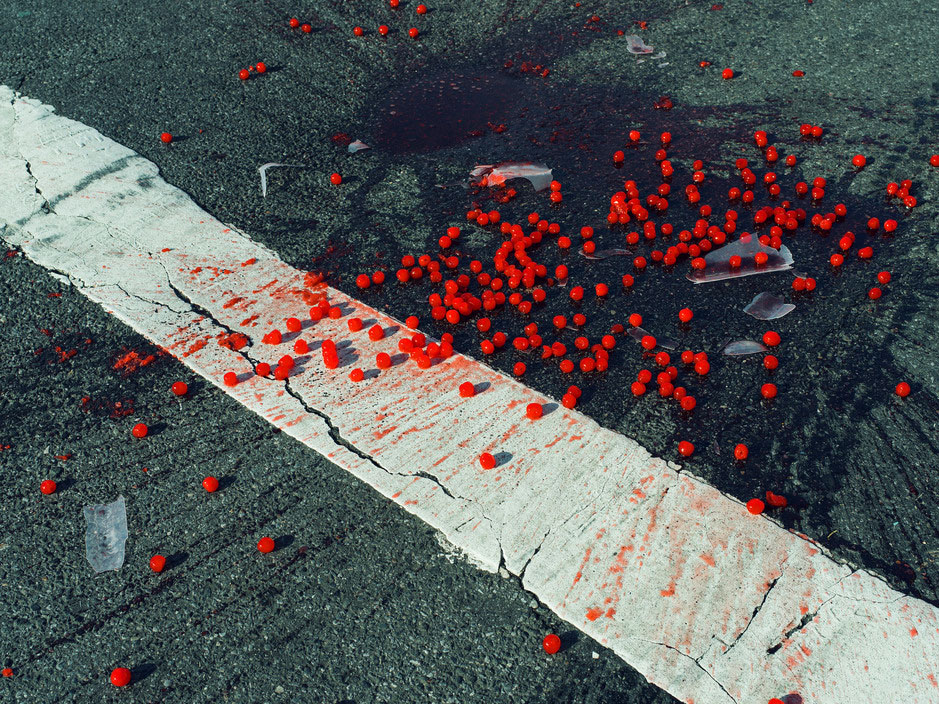
Celebrating 70 years of Magnum in Rome
8 February
The exhibition ‘Magnum Manifesto’ celebrates the 70th anniversary of the reknowned photojournalist agency that has supported innovative and interesting photography projects since it’s conception in Paris in 1947. Curated by Clément Chéroux, the exhibition features images from 75 of its members across the past 7 decades, including founders Robert Capa, Henri Cartier-Bresson, and David Seymour, and contemporary masters Alec Soth, Jonas Bendiksen, Susan Meiselas, and Martin Parr. Magnum photographers have always been at the forefront of ground-breaking imagery and this exhibition will provide a visual history of the ways in which the members have contributed to our cultural narrative. On view at Museo dell’Ara Paric in Rome until 3 June.
Pictured, Cherries spilled on crosswalk, New York City, 2014, by Christopher Anderson. © The artist and Magnum Photos
Writer: Lynsie Roberts
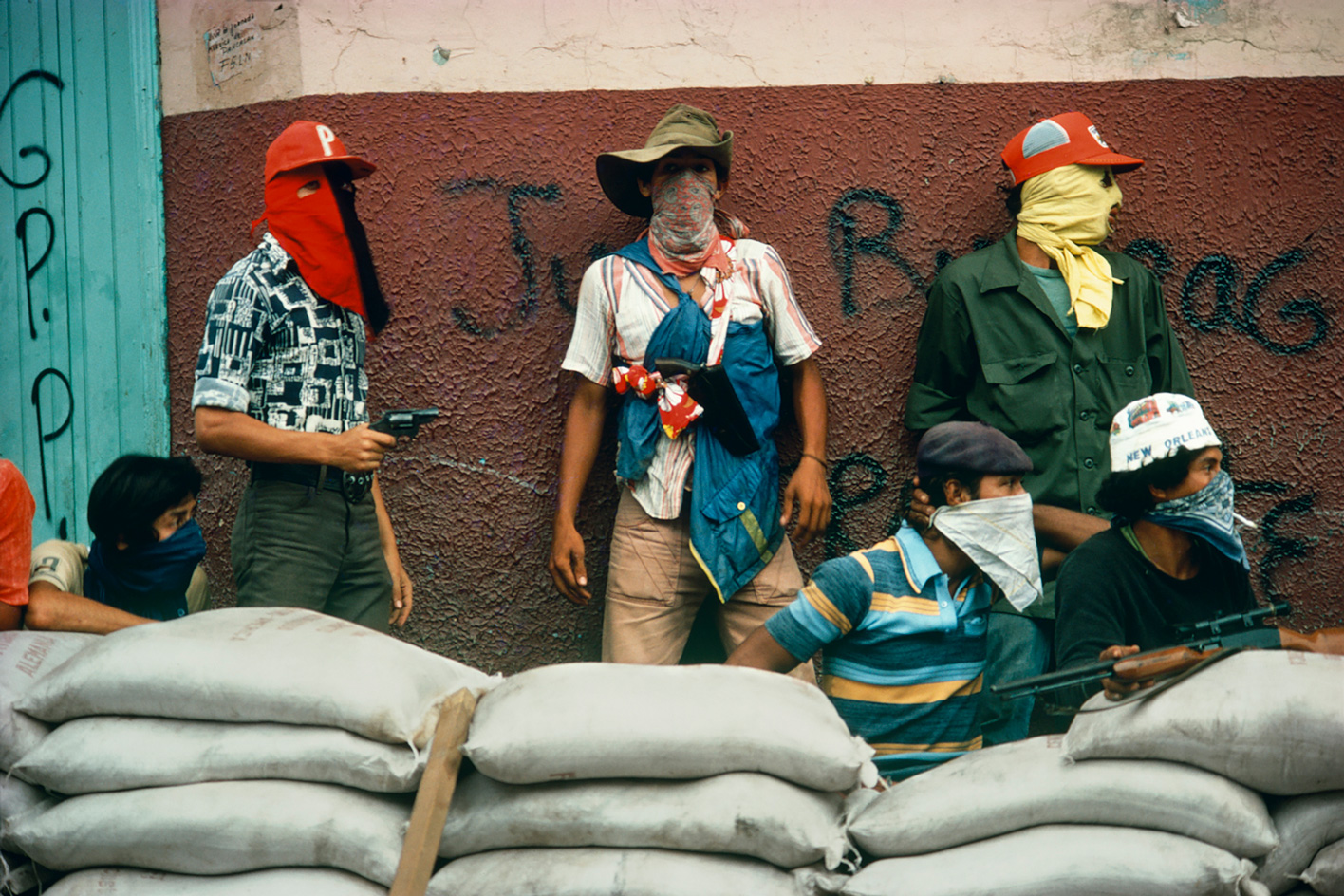
Susan Meiselas retrospective
7 February
Paris’ Jeu de Paume is hosting a retrospective of American Magnum photojournalist Susan Meiselas, showcasing her documentary practice since the 1970s. Over the course of her career, she documented a broad range of social issues and international projects, from domestic violence in San Francisco to revolutionaries in Latin America and refugees in Kurdistan. One series began in 1971 in Nicaragua (pictured), where she photographed the civil uprising and its aftermath over several decades, returning multiple times to document the original subjects and sites. These long-term projects illuminated how context and distribution influences the interpretation of her work, and calls into question the role of the photographer as witness to social issues in other countries. Until 20 May.
Pictured: Muchachos await counterattack by the Guard, 1978, Matagalpa, Nicaragua, by Susan Meiselas. © The artist and Magnum Photos
Writer: Lynsie Roberts
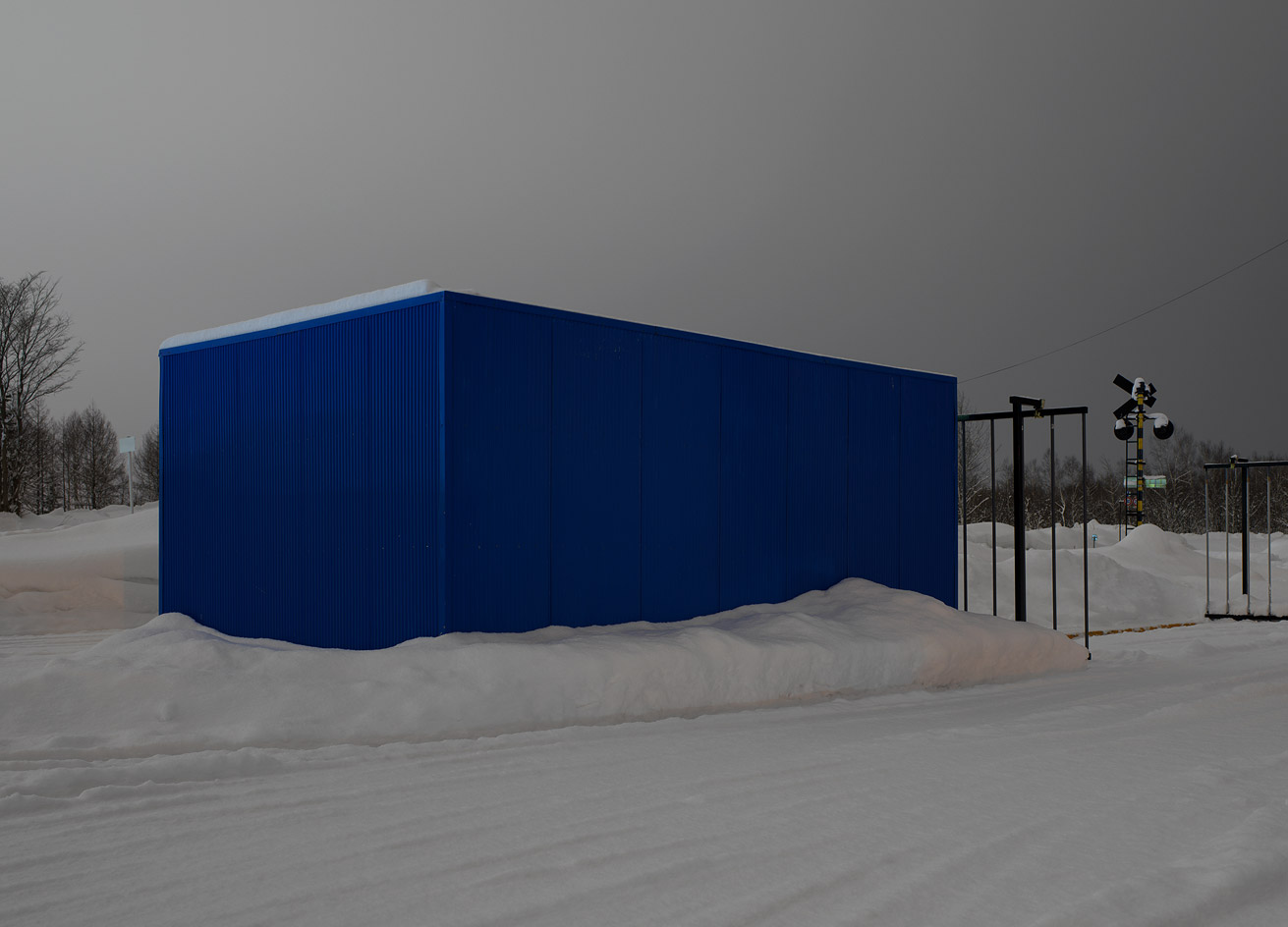
Gian Paul Lozza’s nightscapes
3 February
Gian Paul Lozza’s fascination for nocturnal happenings comes to the fore in his exhibition ‘Somnium’, on view at Francesca Maffeo Gallery. The Swiss photographer references landscape paintings of the 19th century with quiet evening scenes, punctuated by manmade objects and tiny traces of activity. Lozza refers to his photographs as ‘metascapes’, referencing the audience’s ability to draw associations and derive their own interpretations to the images. A large format camera captures scenes illuminated by low light, thus producing a heightened sense of melancholy within the series.
Pictured, Container, 2017, by Gian Paul Lozza. © The artist
Writer: Lynsie Roberts
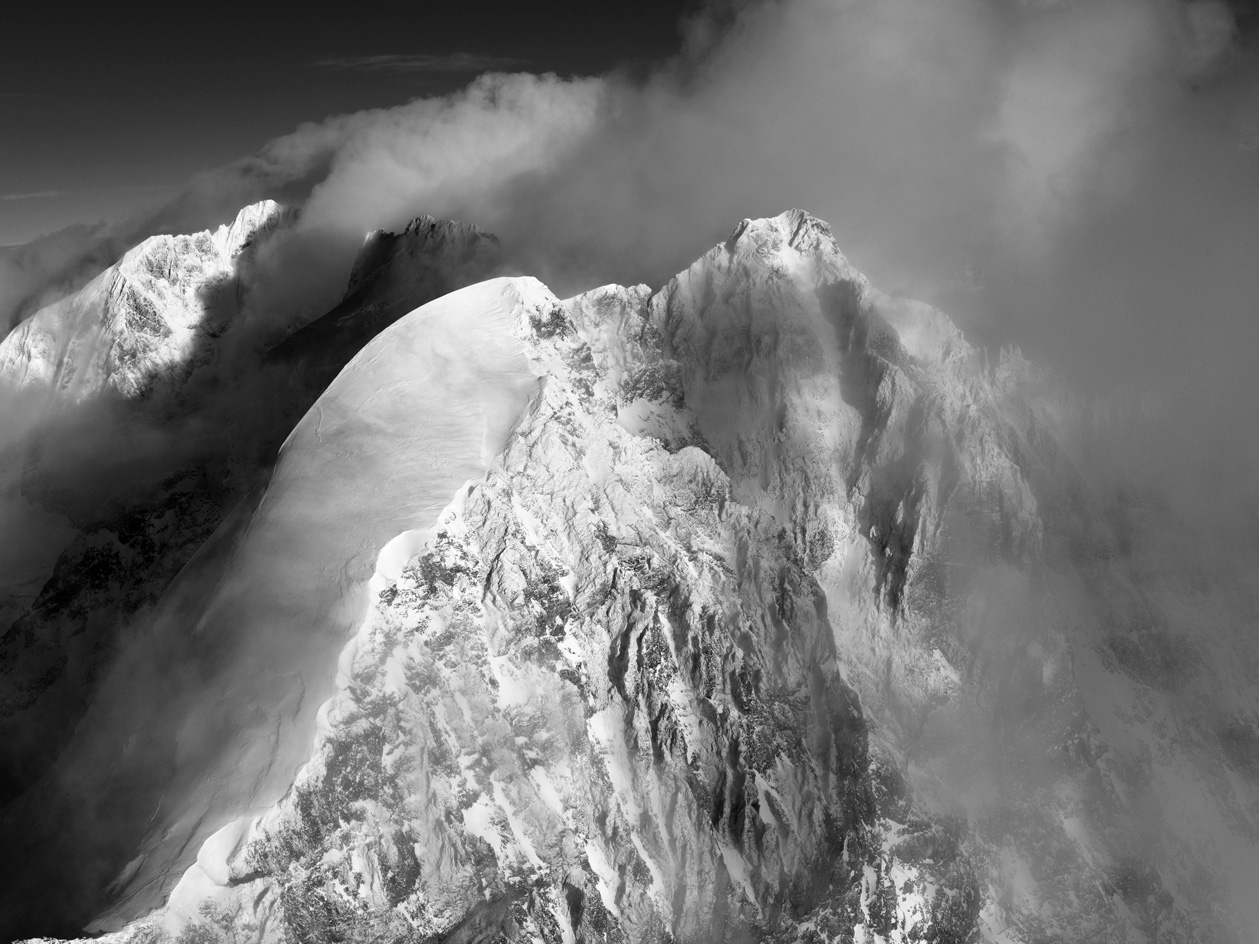
Robert Boesch traverses the Swiss Alps
2 February
With skill and bravado, Robert Boesch creates enigmatic photographs of mountains. The alpine images may look serene and atmospheric, but Boesch brings his experience as a climber and geographer to his shoots, overcoming changing weather conditions and difficult terrains. The monochrome images of Swiss peaks are sculpted by light, shadows and mist, creating highly detailed graphic representations. Large prints are on view in his exhibition, ‘Engiadina’ at Bildhalle’s St Moritz and Zurich galleries. Until 18 February.
Pictured, Piz Roseg and Piz Bernina, Engadin, 2017, by Robert Boesch. © The artist
Writer: Lynsie Roberts
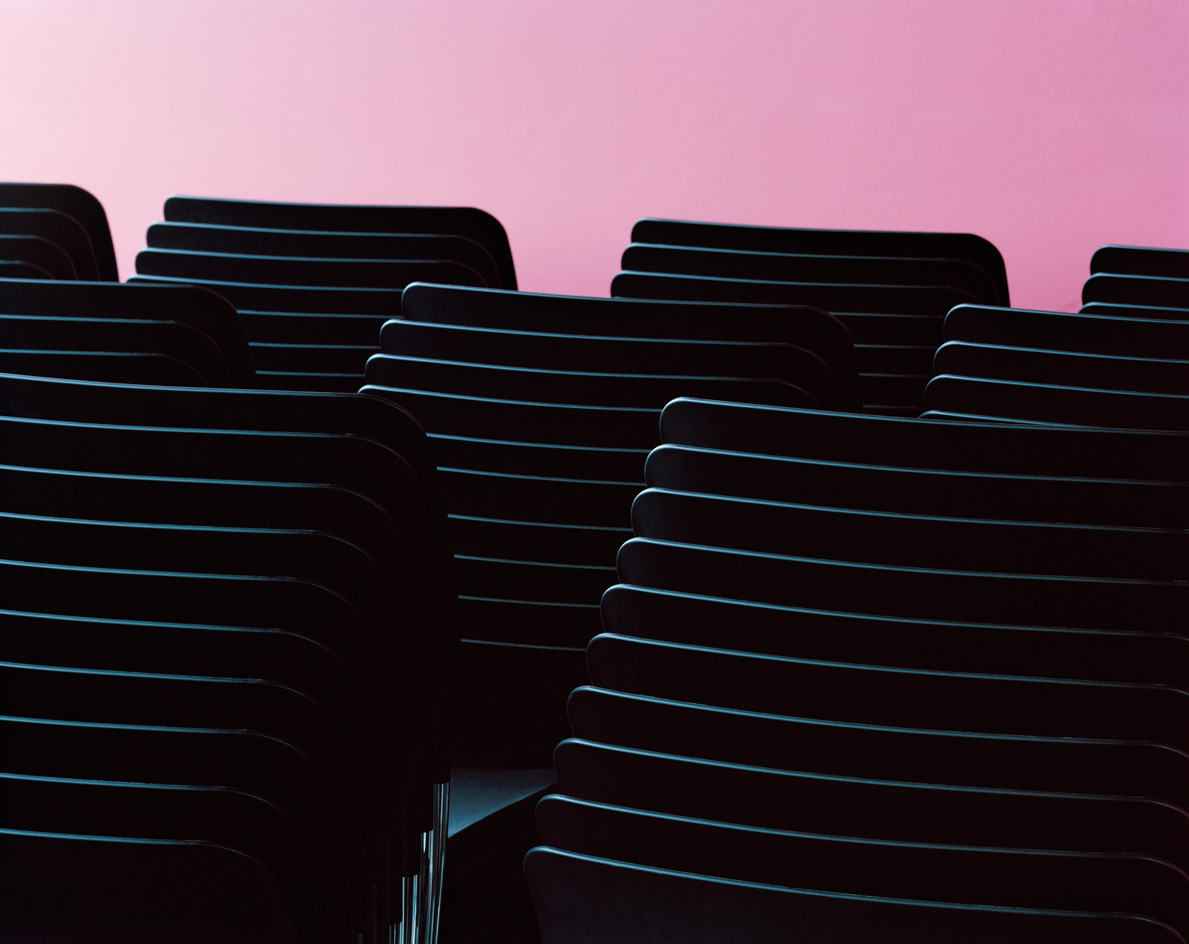
Julian Faulhaber’s plastic vision
1 February
Julian Faulhaber contemplates plastic in all its forms for his latest project, ‘LDPE’
(low density polyethylene) on view at The Lumiere Brothers Center for Photography in Moscow. His photographs utilises the unity of line, colour, and form to create graphic geometric compositions. His approach involves documenting the construction process of new buildings and spaces across Germany, America, and Japan. Long exposures on large format cameras create hyper sharp, highly saturated images that focus on the structural forms and architectural design without the use of post-production. Until 15 April.
Pictured, Stapel (Pack), 2010, by Julilan Faulhaber. © The artist / VG Bildkunst Bonn / RAO
Writer: Lynsie Roberts
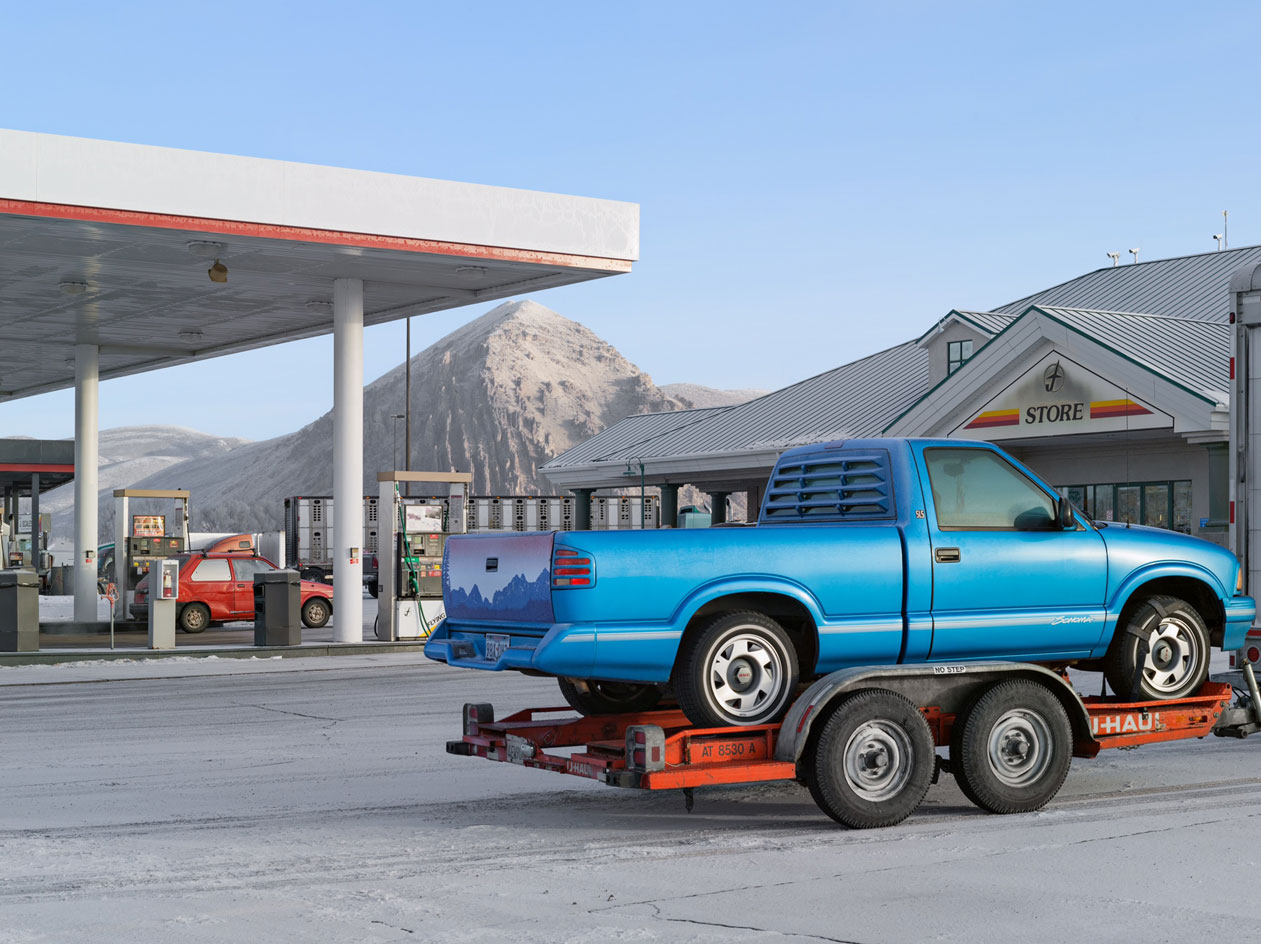
Lucas Foglia on human nature
31 January
American photographer Lucas Foglia is a visual storyteller to rival the best. ‘Human Nature’, on view from 2 February at Foam Amsterdam, uses both staged and naturalistic pictures to dissect our relationship with the natural world. Traversing a strange and conceptual landscape, across oceans, cities, farms and deserts, Foglia examines the ways in which human activity has altered our organic environment, demonstrating how we can experience the ‘wild’ across urban territories. An accompanying publication concludes with advice from scientists, and Foglia himself, urging us to spend more time outside. Until 15 April.
Pictured, Gas Station, Wyoming, by Lucas Foglia. © The artist. Courtesy of Michael Hoppen Gallery
Writer: Lynsie Roberts
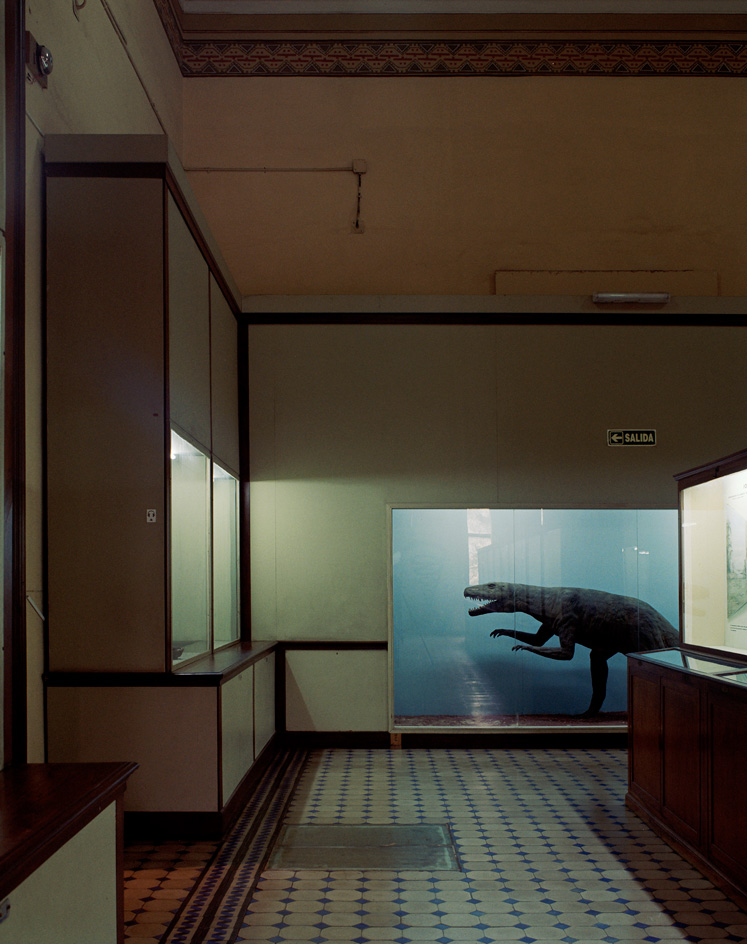
Explorer Louis de Boccard reimagined
30 January
Nicolas Savary reimagines the plight of 20th-century explorer Louis de Boccard in his latest exhibition ‘Conquistador’, on view at Musée de l’Elysée. Upon discovering a large archive of the explorer during his art residency, Savary based his research on the extensive materials, including diaries, photographs, historical documents and correspondence from Boccard’s travels through Argentina and Paraguay the early 1900s. Embarking on a comparable contemporary journey with his camera, Savary juxtaposes his original imagery with archival material, bringing to attention the role and responsibility of an explorer in the place they are exploring.
Pictured, Raptor, Musée des Sciences naturelles, la Plata, 2014, by Nicolas Savary. © The artist
Writer: Lynsie Roberts
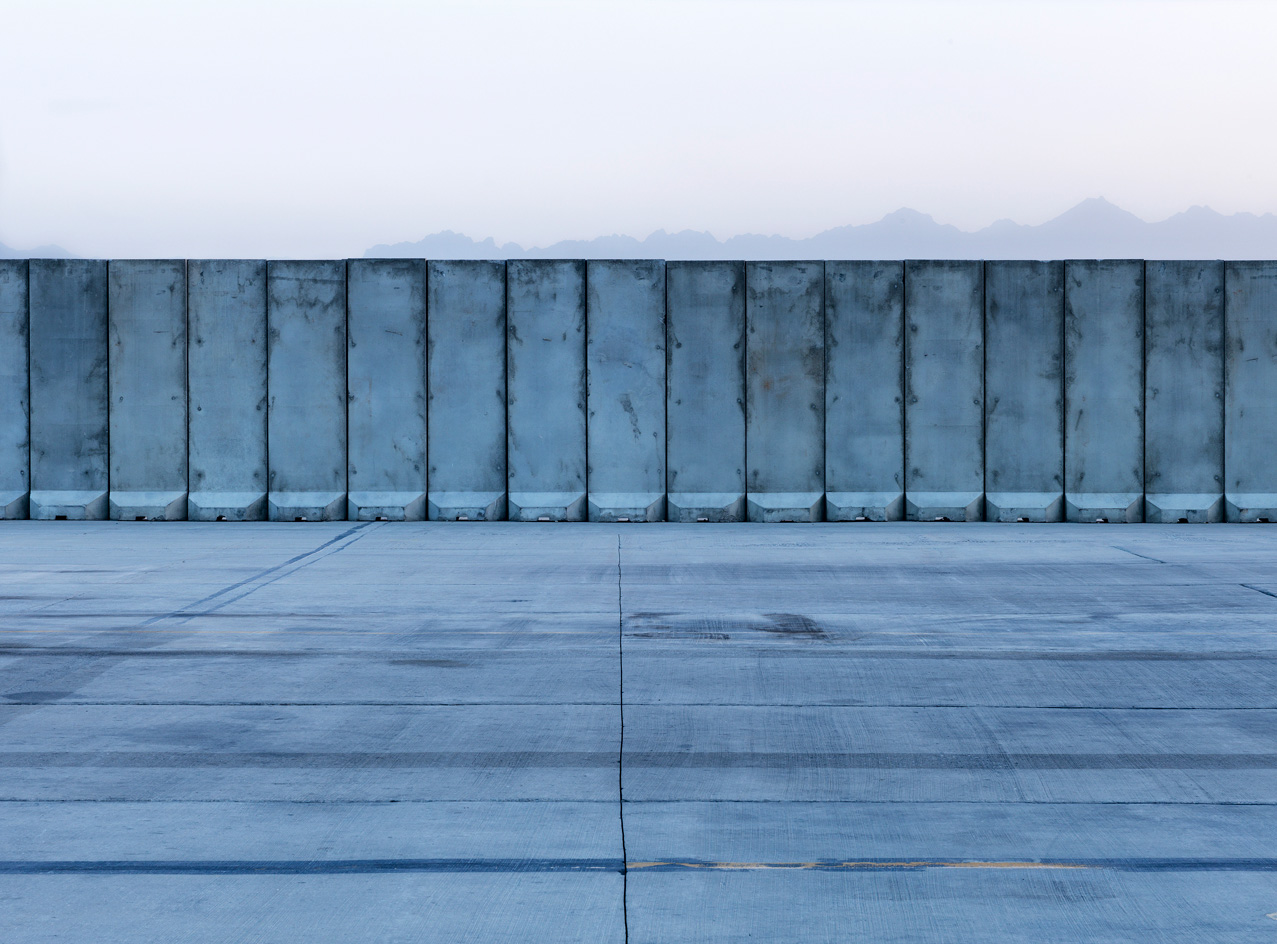
Edmund Clark contemplates conflict
29 January
The Mountains of Majeed – a new series by British photographer Edmund Clark, on view at Flowers Gallery in New York – is a reflection on the so-called War on Terror, in particular, the end of Operation Enduring Freedom in Afghanistan. Presenting an alternative narrative to the one ordinarily presented by the media, the series has a quiet and contemplative tone, as captured by this image of stoic, military base walls, which poetically trace the peaks of the distant, Hindu Kush mountains. Until 3 March.
Pictured, The Mountains of Majeed 4, 2014, by Edmund Clark. © The artist. Courtesy of Flowers Gallery London and New York
Writer: Elly Parsons
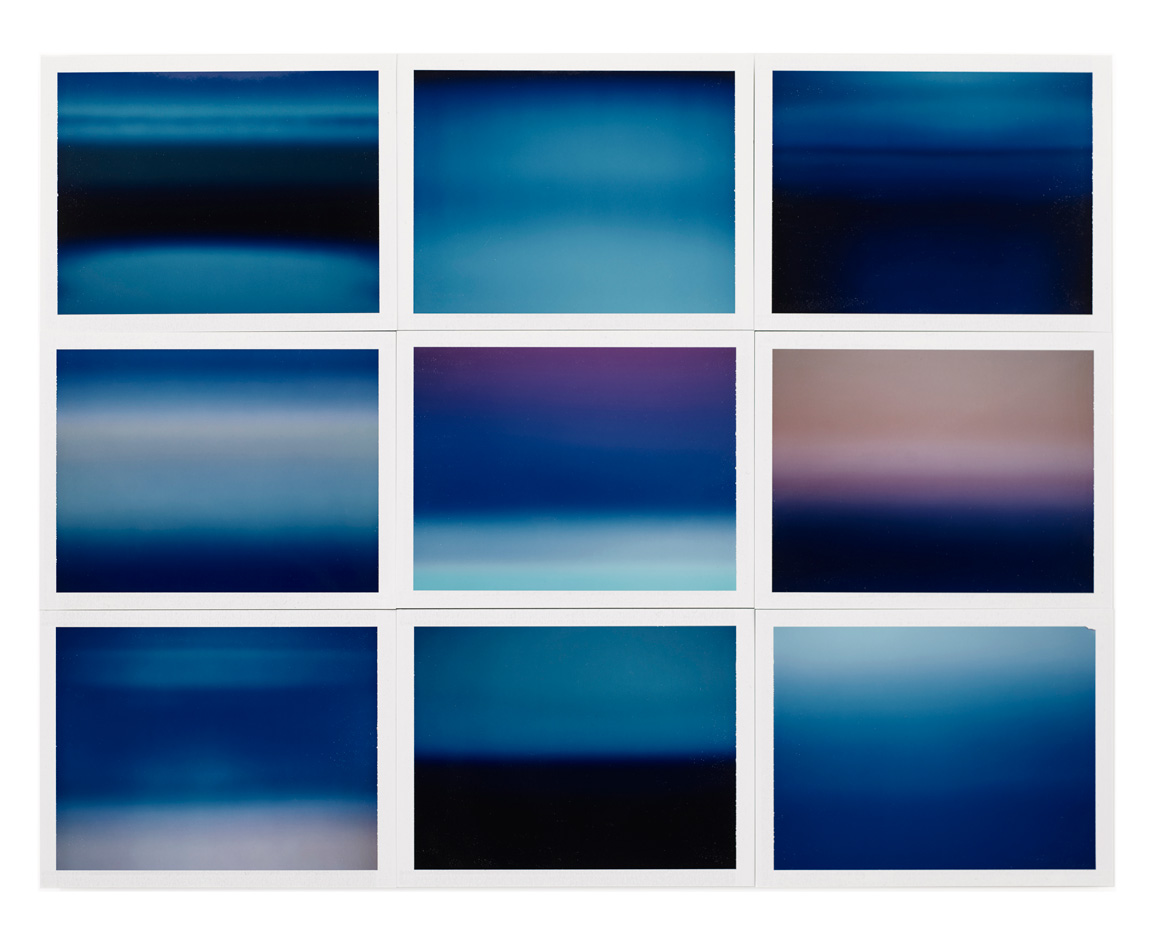
Thomas Paquet evokes Mark Rothko
26 January
Galerie Thierry Bigaignon presents Thomas Paquet’s ‘Fragments #1’, a meditation on photography as a form of recording light. Paquet experiments with traditional film processes, manipulating emulsions and chemicals to create poetic plays of light. The results are gradients of colour that emulate peaceful horizons. Similar to Mark Rothko’s paintings, Paquet aims to create a distilled experience of emotion while viewing his imagined landscapes. Until 10 March.
Pictured, Etude pour un horizon #2, 2015, by Thomas Paquet. @ The artist, courtesy of Galerie Theirry Bigaignon
Writer: Lynsie Robets
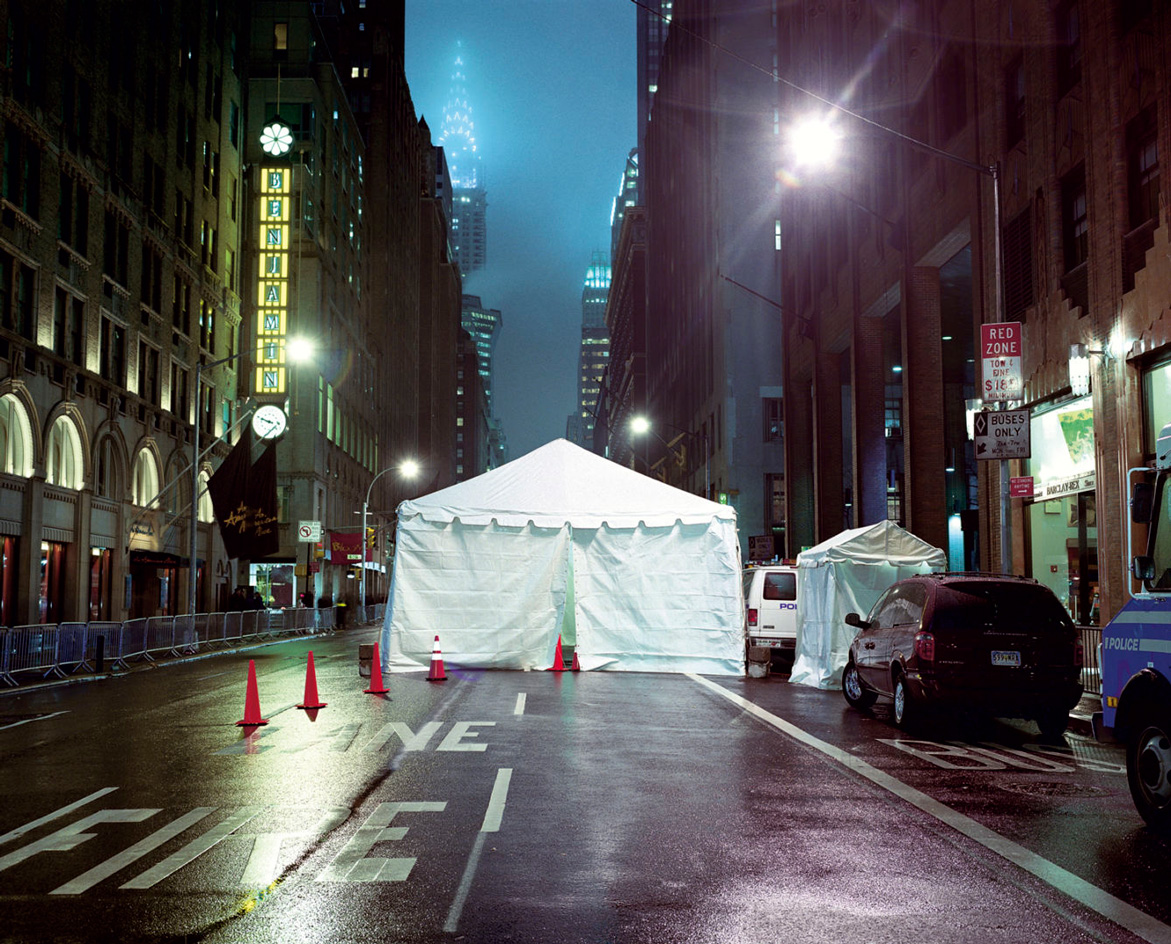
Jules Spinatsch investigates security
25 January
Swiss photographer Jules Spinatsch investigates the role of technology and security in the age of digital photography. Currently on view at Christophe Guye Gallerie, ‘Summit’ is an exhibition of detailed large format photographs, some specially made, others from Spinatsch’s two decade career. Using his camera as a tool to imitate modes of surveillance and image recording, the series ‘Temporary Discomfort’ (pictured) looks at forms of security and control surrounding world leader summits. Throughout, he questions the role of the camera in image authorship, and its power to survey behaviour across urban centres. Until 21 April.
Pictured, Around Hotel Astoria Sector B, by New York, 2002, by Jules Spinatsch. © The artist
Writer: Lynsie Roberts
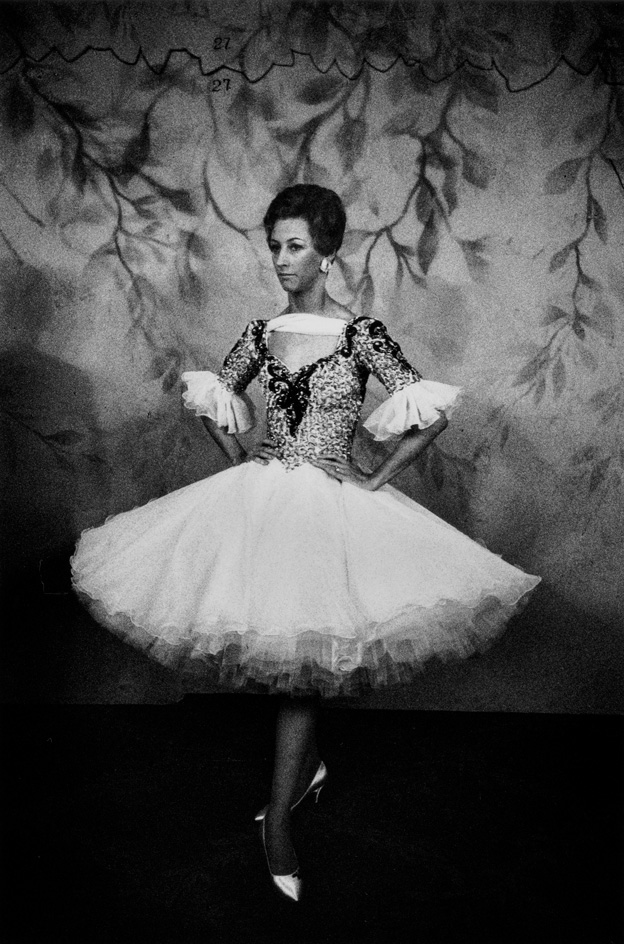
Burberry celebrates British culture
24 January
‘It’s the spirit of these photographs – sometimes ironic, sometimes tender, always truthful – that guided our September collection,’ says Christopher Bailey, (Burberry’s president and chief creative officer) of the fashion house’s exhibition ‘Here We Are’, which opens today in Paris after showing to great acclaim in London and Hong Kong last year. Curated by Bailey, along with British photographer Alasdair McLellan and Claire de Rouen director Lucy Kumara Moore, ‘Here We Are’ is a celebration of British culture, and all its idiosyncrasies. Spotlighting 30 photographers including Martin Parr, Dafydd Jones, Karen Knorr, and Janette Beckman, it commemorates British social portraiture and photojournalism across the 20th century, documenting subcultures, ‘tribes’, and classes that make up the British Isles. The photographs are displayed alongside Burberry’s September 2017 collection, providing insight into the brand’s varied inspiration from the worlds of art, music and culture. Until 4 February.
Pictured, Ballroom Dancer, 1982, by Brian Griffin. © The artist. Brian Griffin will be in conversation with Sam Stourdzé (Director of Rencontres D'Arles) on the 31 January at ‘Here We Are’
Writer: Lynsie Roberts
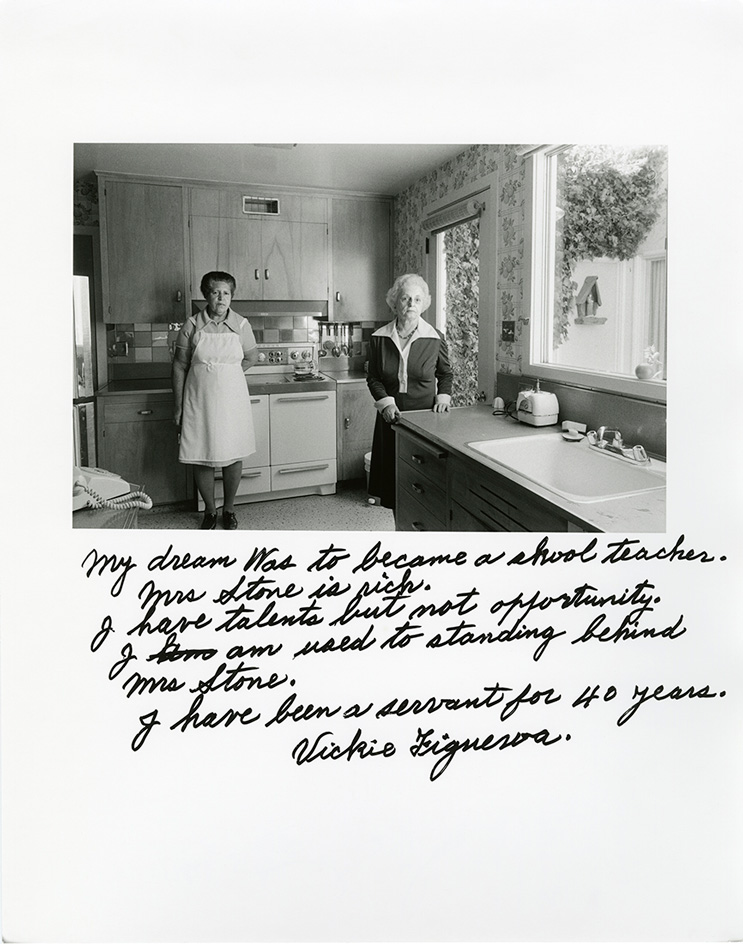
Jim Goldberg examines wealth disparity
23 January
Jim Goldberg’s ‘Rich and Poor’ portrait series – in which he looked at wealth disparity in 1970s and 1980s America – garnered national attention in 1985. Currently on view at the Ryerson Image Centre as part of ‘Collaboration: A Potential History of Photography’, which features photography projects that reconsider the dynamics between photographer and subject. The seminal body of work asked sitters from both ends of the wealth scale to write a comment on their portrait. Observations of self-presentation, and the disconnect between appearances and reality is evident across portraits, despite differences in economic and social positions. Until 8 April.
Pictured, Vickie Figueroa, San Francisco, California, 1982, by Jim Goldberg. Courtesy of the artist, and Pace/MacGill Gallery (NY)
Writer: Lynsie Roberts
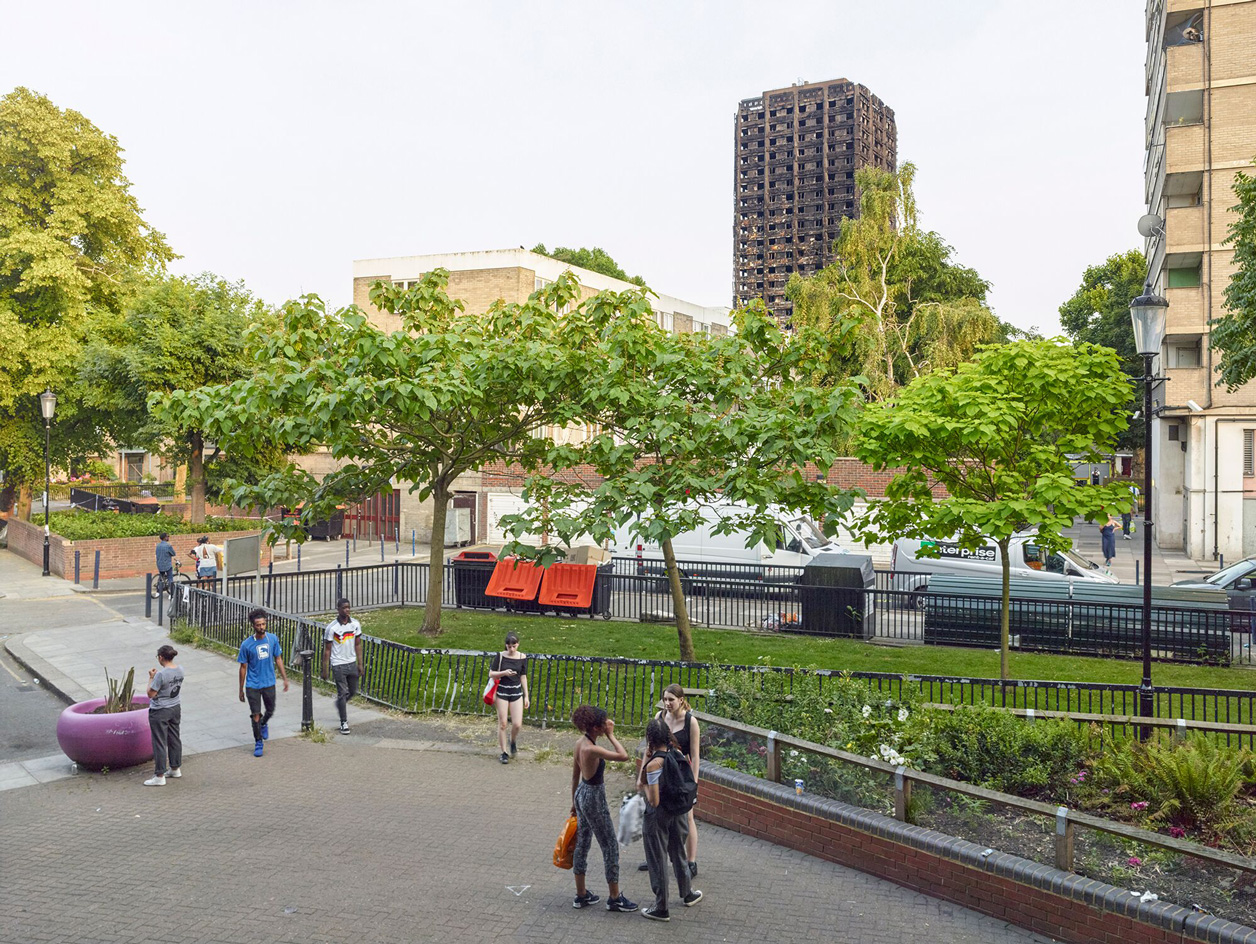
Simon Roberts examines British identity
22 January
‘Merrie Albion – Landscape Studies of a Small Island’ by Simon Roberts, now on view at London’s Flowers Gallery, looks at the collective British identity as witnessed in social environments. Roberts’ large format photography documents community gatherings across the UK with a detached perspective and deadpan aesthetic. The showcase, in which his images are part of a dialogue of current events, features the series Grenfell Tower, which depicts the community’s feelings of injustice and social disparity. Until 10 March.
Pictured, Grenfell Tower, North Kensington, London, 19 June 2017, by Simon Roberts. © The artist. Courtesy of Flowers Gallery London and New York
Writer: Lynsie Roberts

Lumiere London
19 January
For Lumiere London – a weekend of after-dark interventions, installations and atmospheric screenings – filmmaker and master of monochrome George Harvey has cast a mesmeric glow over 18montrose’s Stable Street store. His bespoke wall, created in collaboration with VFX artist Adam Aftanas, spans 132 interlinked video screens, each throwing hypnotic shadows across the boutique’s choice selection of fashion, objet and sneakers. Until 21 January.
Pictured, a still from George Harvey and Adam Aftanas’ Lumiere London installation, for 18montrose. Courtesy of the artists
Writer: Elly Parsons
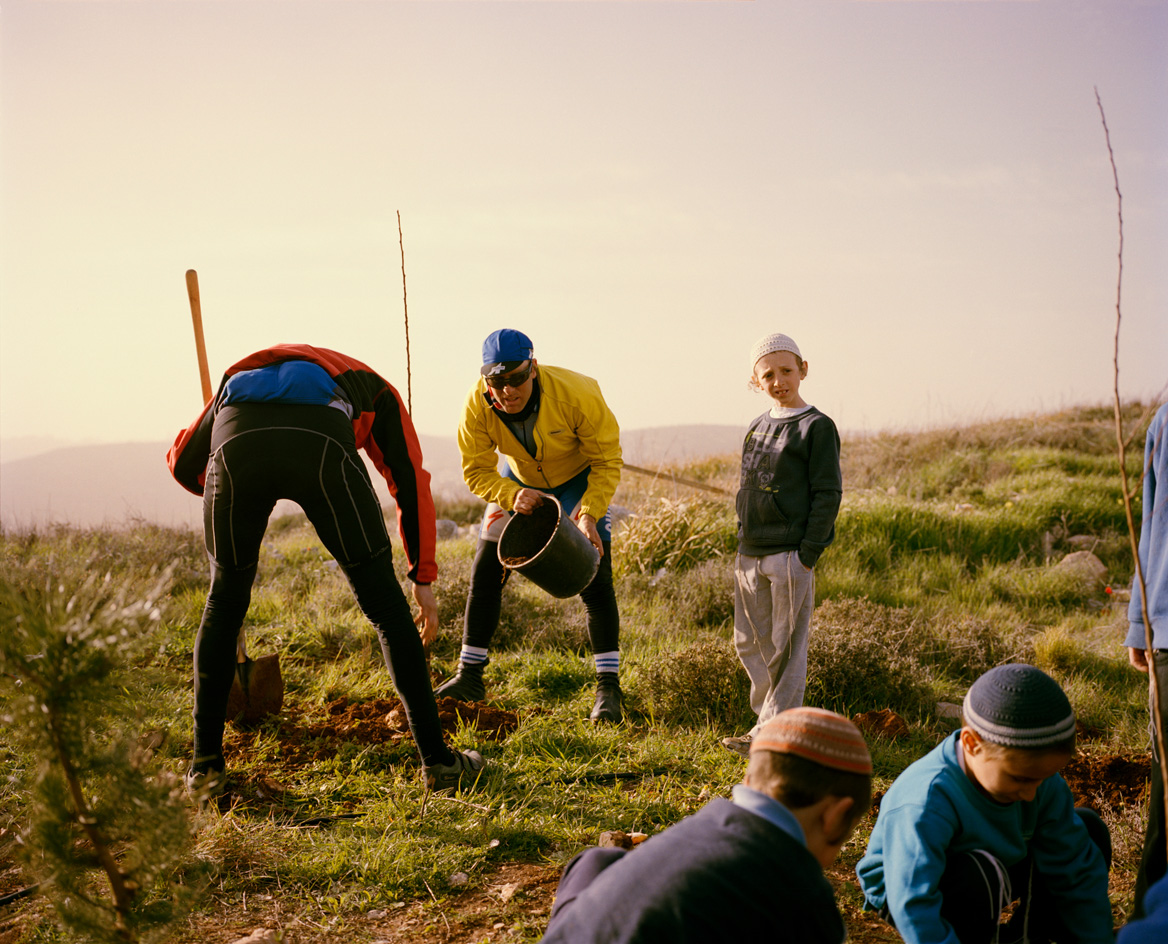
A Chicago museum ‘traverses the past’
18 January
From today, the Museum of Contemporary Photography (MOCP) at Columbia College Chicago presents ‘Traversing the Past’, which features three photographers who use their photographic practices to mediate family histories of political turmoil, violence, and displacement. Adam Golfer, Diana Matar, and Hrvoje Slovenc reconsider their generational narratives, reframing and re-contextualising memories and research in their personal projects. Golfer’s series – A House Without a Roof – looks at conflicting histories of trauma throughout Europe, Israel, and Palestine. His multi-layered practice involves first-hand experiences, fictional texts, archival imagery, and photographing sites of conflict to investigate a convoluted history. Until 1 April.
Pictured, Settlers Planting Trees on Tu’bshev, by Adam Golfer, 2012. Courtesy of the artist
Writer: Lynsie Roberts
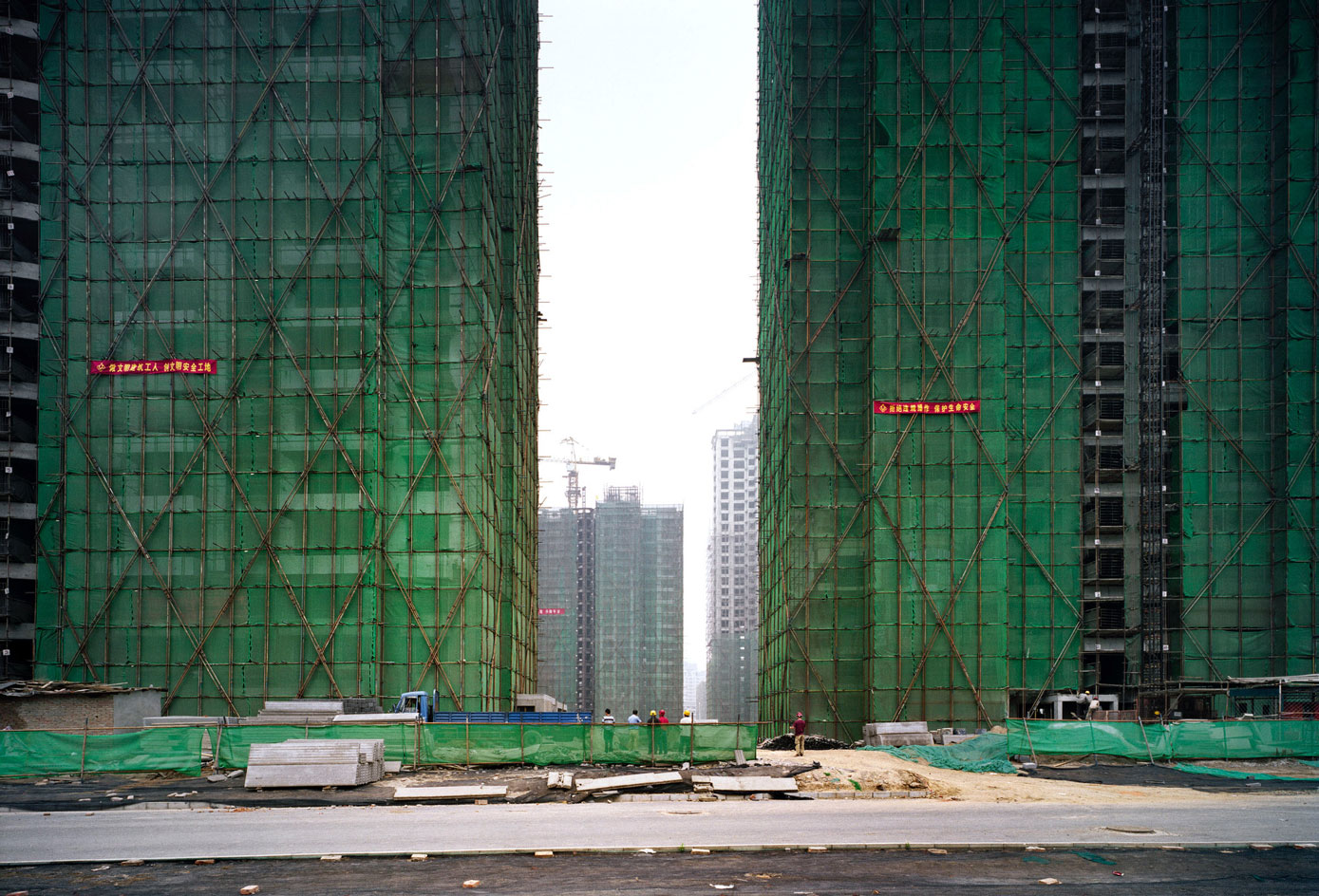
Prix de la Photo Camera Clara
17 January
Founded in 2012, Paris’ Prix de la Photo Camera Clara celebrates large format photography, awarding an annual cash prize to a series made with a viewfinder camera. The founders wanted to provide an antidote to the current photography climate where images are both created and consumed at a rapid rate. Using a viewfinder with a reverse composition, the image making process is slowed down. Won by Guillaume Zuili, another of this year’s finalists is Patrick Tourneboeuf, whose series Next City addresses universal housing through photographing large buildings on the outskirts of the urban centres of Beijing and New Delhi. Until 17 March.
Pictured, (Untitled), Next City, by Patrick Tourneboeuf, Beijing, 2008. Courtesy of the artist
Writer: Lynsie Roberts
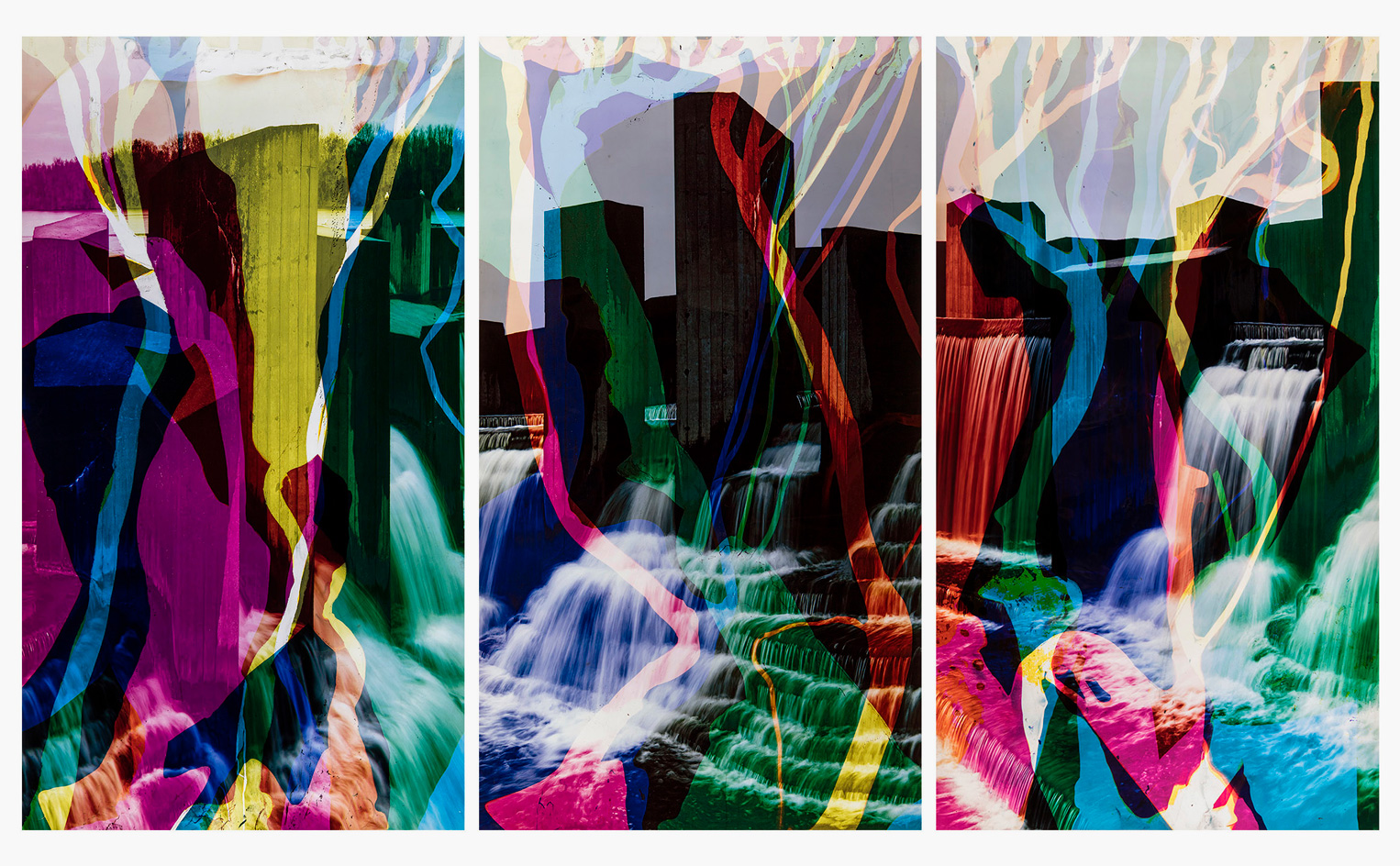
Foam goes ‘Back to the Future’
16 January
Foam’s ‘Back to the Future’ exhibition spotlights contemporary and 19th century photographic pioneers, who have hunted out new ways of visual recording. Matthew Brandt, for example, incorporates the subject matter in the process of his picture making. In Stepping Stone Falls (pictured), several CMYK prints were exposed to the erosion of Michigan’s Flint River. Water flowing over them before they were reassembled in a light box. To each of the photographers featured, the process is as important as the final art object. Until 28 March.
Pictured, Stepping Stone Falls (Triptych), Matthew Brandt, 2016. © The artist. Courtesy of Yossi Milo Gallery, New York
Writer: Lynsie Roberts
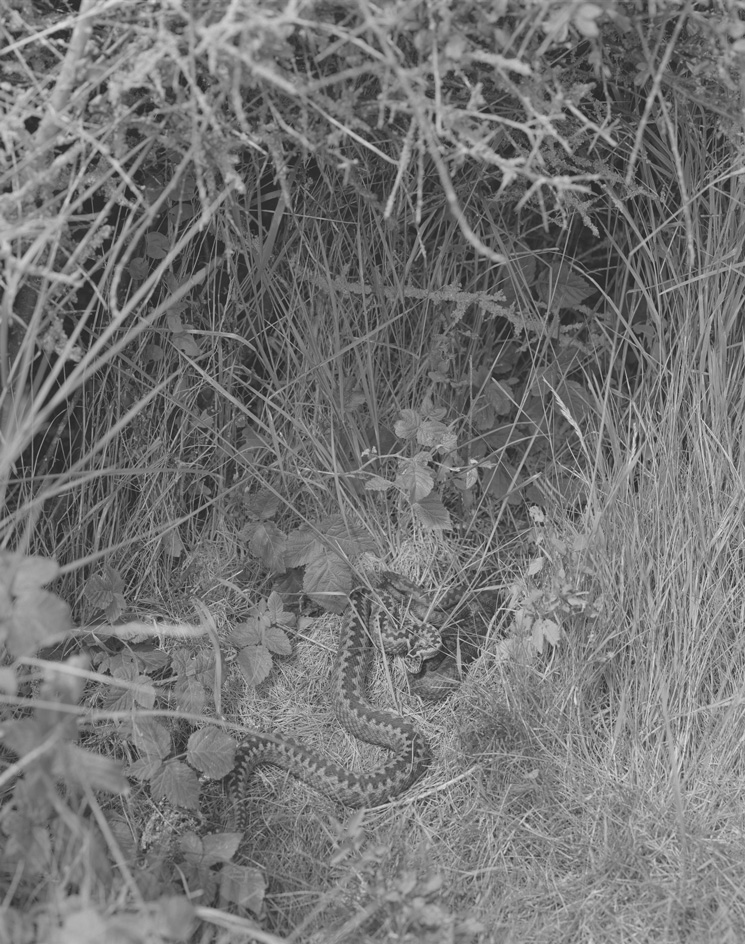
Jerwood/Photoworks Awards 2018
15 January
The Jerwood/Photoworks Awards – now in its second year – acts as a platform to support emerging and mid-career photographers in producing a new body of work, to be shown in a nationally touring exhibition. This year’s awardees Alejandra Carles-Tolra, Sam Laughlin and Lua Riberia explore various concerns, including death, belonging, and the fragility of the natural world. Pictured is a shot from Sam Laughlin’s series A Certain Movement, which considers delicate processes and fragile places in nature. The photographers also receive a bursary and mentorship to aid in production of the new work, in support of their ongoing success. Until 11 March.
Pictured, Adders basking (Vipera berus), from the series ‘A Certain Movement’, originally commissioned through the Jerwood/Photoworks Awards, 2017. © Sam Laughlin
Writer: Lynsie Roberts
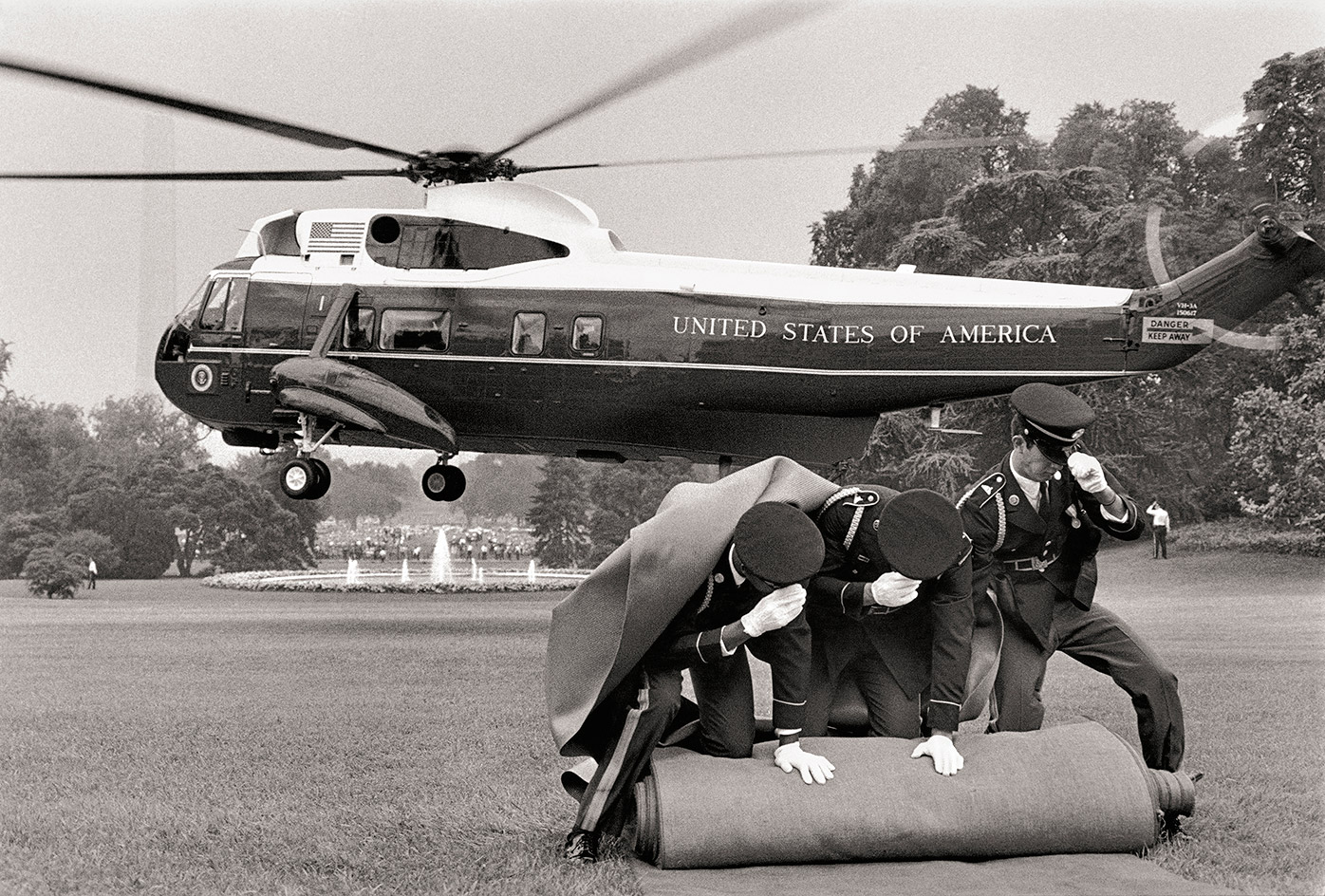
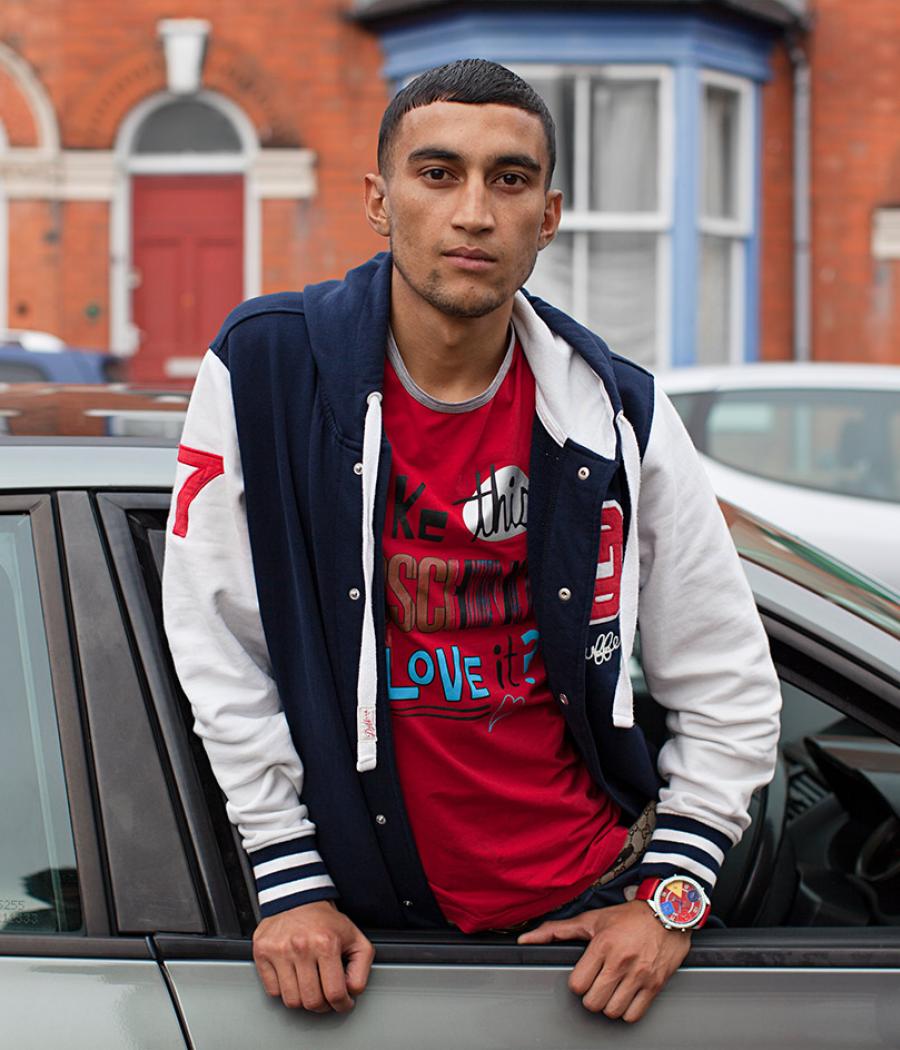
Mahtab Hussain confronts identity politics
12 January
Mahtab Hussain confronts representation and identity in his portrait series ‘You Get Me?’ on show at Impressions Gallery this month. Questioning, ‘What does it mean to be a British Muslim male today?’, Hussain considers the intersectional identity politics of race, religion, and masculinity amongst males in the UK. In the series, he approached his subjects with his camera and had a discussion about their experiences – the exhibition displays these direct quotes beside the large-scale portraits. Through his work Hussain aims to bring insight into personal narratives without discrimination and racism. Until 24 March.
Pictured, Red t-shirt, baseball jacket, car, Mahtab Hussain, 2012. Courtesy of the artist
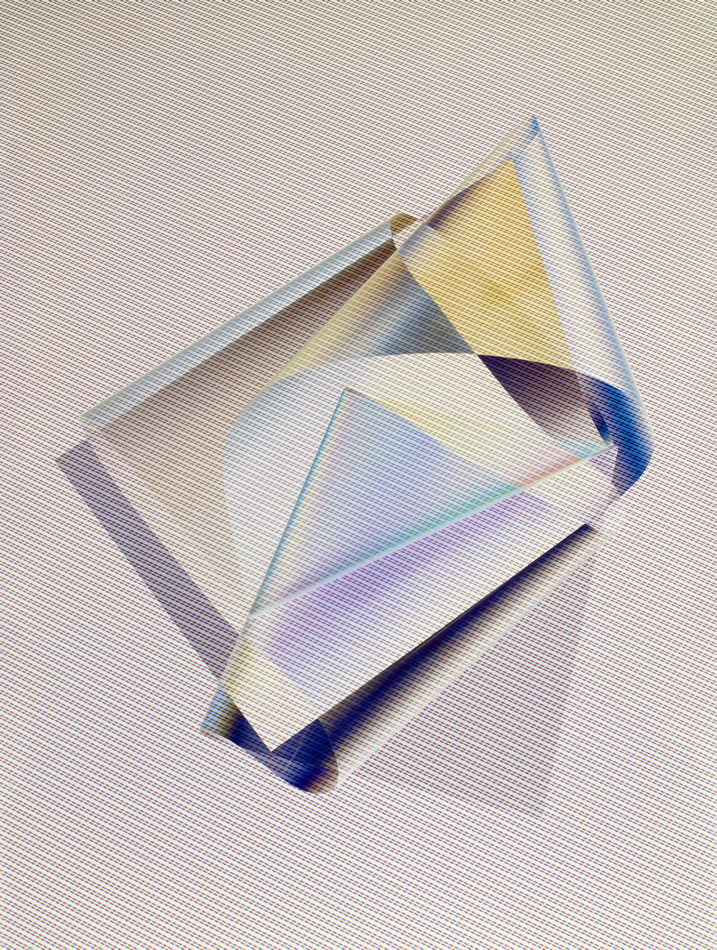
Martin Klimas’ radiant light works
11 January
Martin Klimas is known for his experimental, high-speed photography of sound waves, shattering porcelain, and exploding flowers. In ‘Radiant & Polarization’, his most recent solo exhibition at New York’s Foley Gallery, he examines light refractions and polarisations, creating ‘temporary sculptures structured by motion, time, and light’. Playing with transparent films and white light to manipulate wavelengths and colour spectrums, the series is a visually striking insight into light forms usually missed by the human eye. Until 18 February.
Pictured, Polarization 10914, 2016, by Martin Klimas. Courtesy of Martin Klimas and Foley Gallery
Writer: Lynsie Roberts
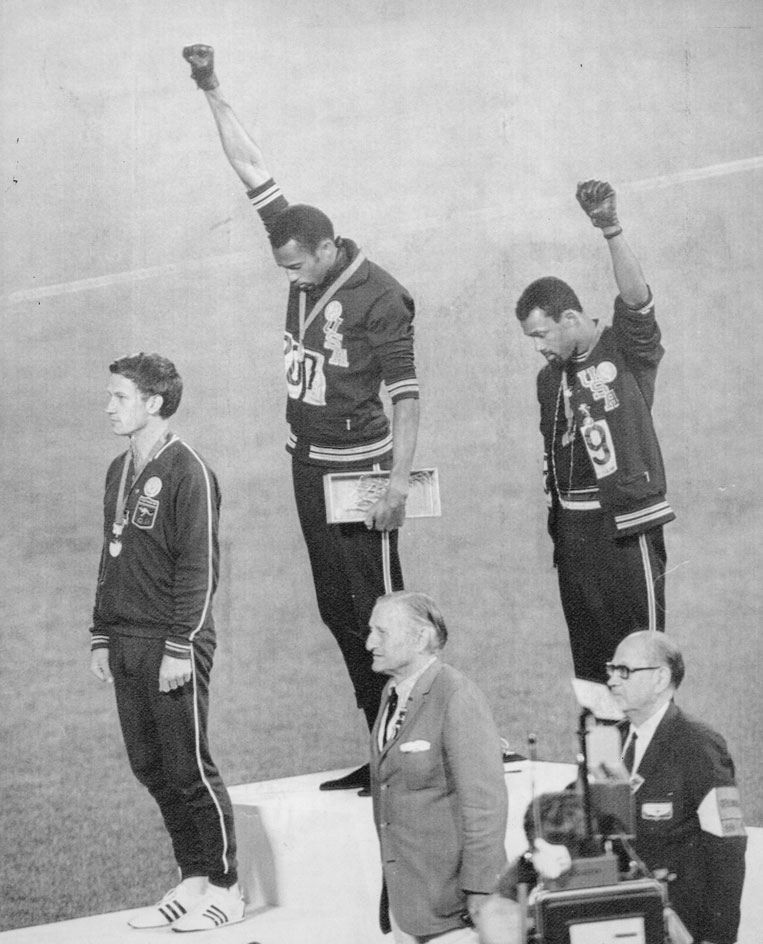
Vintage photographs of 1968
10 January
A new exhibition at New York’s Steven Kasher Gallery examines the political activism and cultural shifts of 1968 – a landmark year for both. Methodically, an image made on each day of the year has been selected, to reflect key news stories and important, unfolding events. The resulting collection, comprising black and white news photographs sourced from American press agencies, has been framed in a calendar grid, where we find photographs of Robert F. Kennedy’s assassination, anti-war movements, Black Power affirmations, the Beatles’ White Album debut, equal rights conferences, and portraits of protestors across the world. Until 24 February.
Pictured, Tommie Smith And John Carlos Give The Black Power Salute At The Medal Ceremony At The Olympic Games In Mexico City, 17 October. Courtesy of Steven Kasher Gallery, New York
Writer: Lynsie Roberts
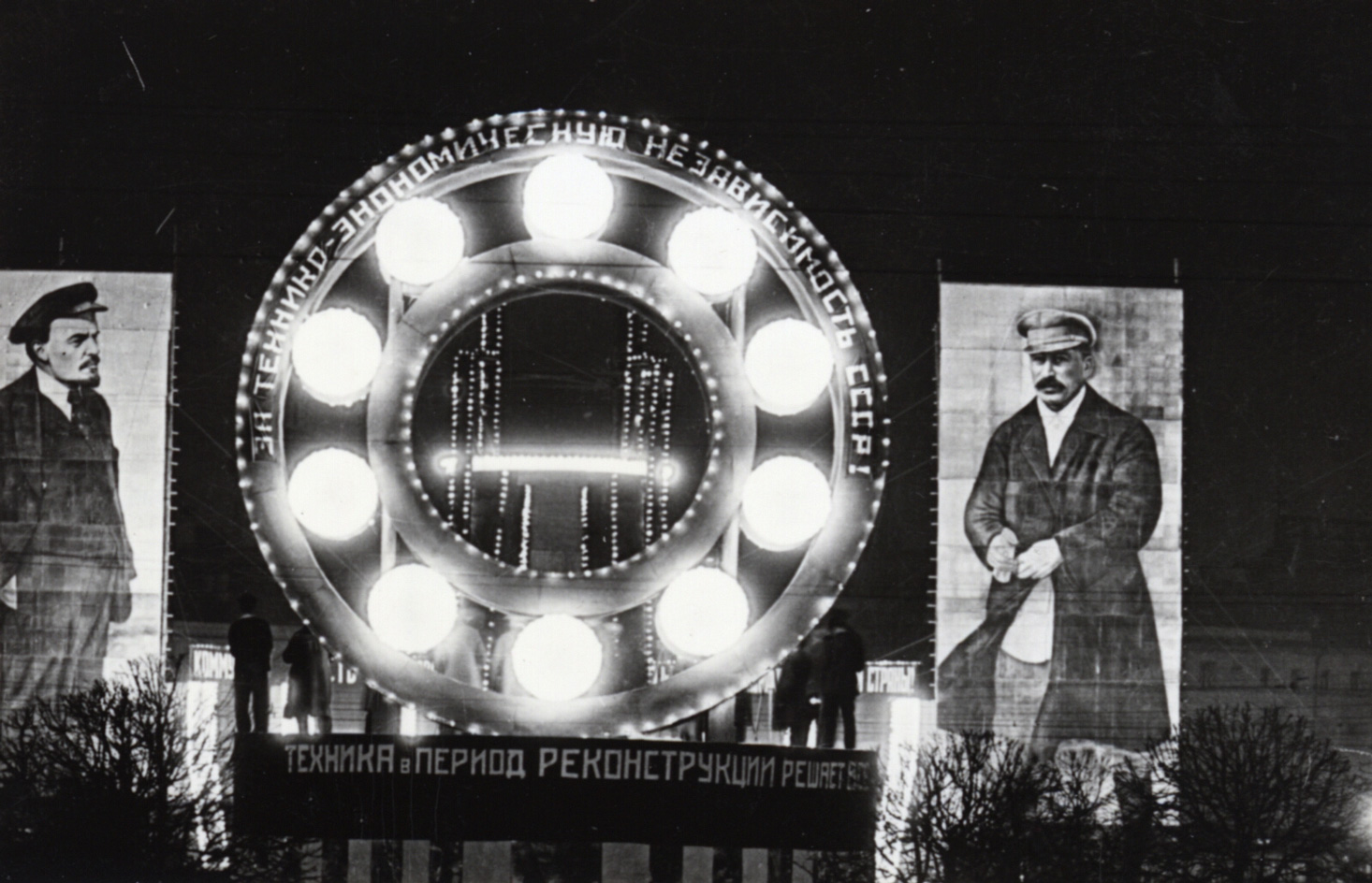
Boris Ignatovich’s first New York exhibition
8 January
From this week, Nailya Alexander Gallery presents ‘Boris Ignatovich: Master of Russian Avant-Garde Photography’ – the first solo exhibition in New York of the Russian photographer. Ignatovich was an early Soviet experimental photographer who captured the changing urban life of the 1920s and 1930s in Russia. The show will feature large-scale silver gelatin prints of his black and white photography, including reportage, portraits, and constructivist snaps of the industrialised city. Until 17 March.
Pictured, Holiday Illumination, Boris Ignatovich, Russia, 1932. © Boris Ignatovich Estate. Courtesy of Nailya Alexander Gallery, New York
Writer: Lynsie Roberts
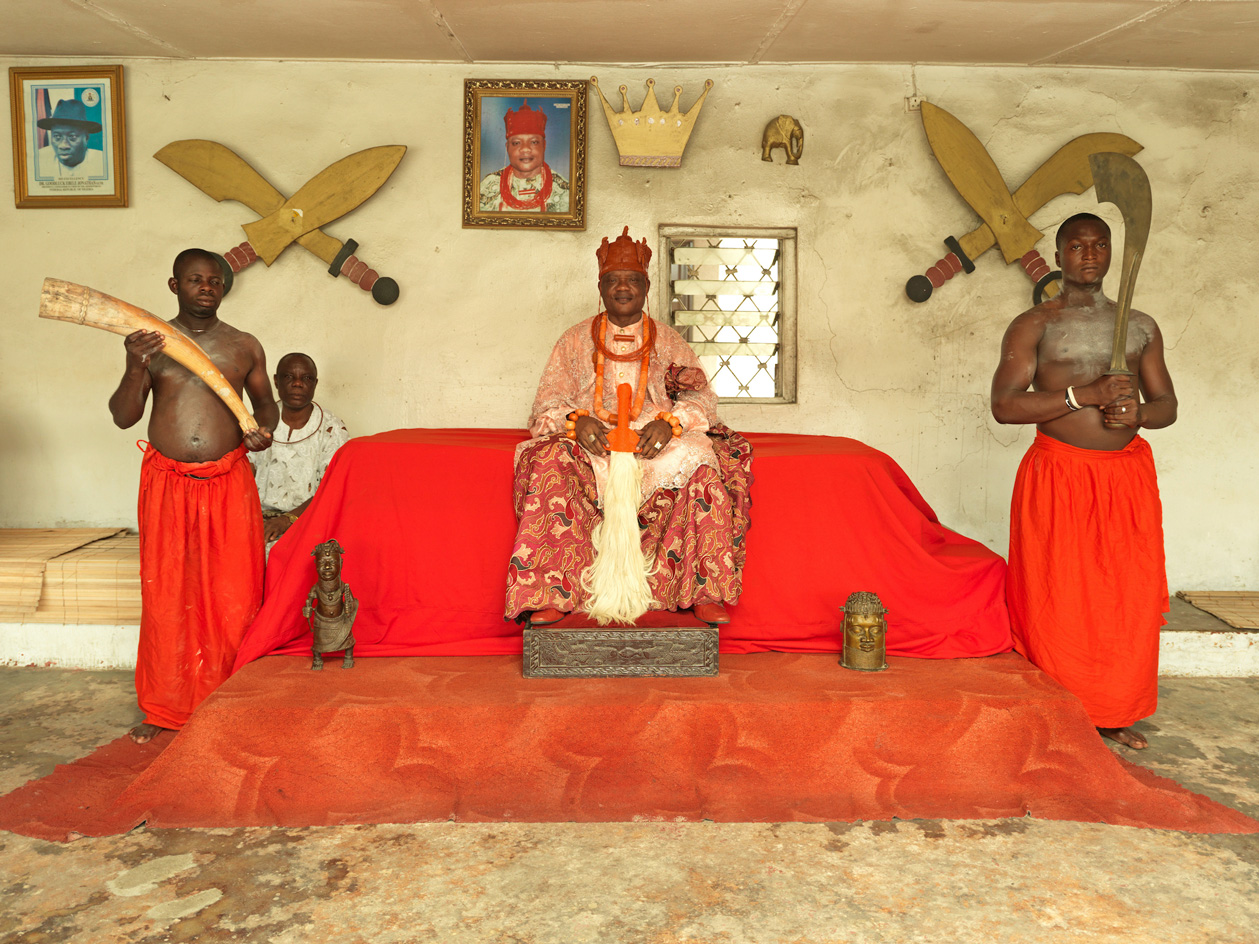
‘In Your Dreams’ addresses issues of wealth inequality
5 January
Photography exhibition ‘In Your Dreams’ addresses issues of wealth inequality across the globe. Hosted by the Australian Centre for Photography, it features 14 international photographers, each exploring the effects of poverty, war, and displacement. The exhibition aims to highlight global concerns that often go ignored, while bringing to light personal stories of those affected. The vivid portraits of Nigerian photojournalist George Osodi, for example, capture both the lives of royalty and those that serve them. Until 7 April.
Pictured, HRH Oharisi III Ovie of Ughelli, by George Osodi, from the series ‘Nigerian Monarchs’, 2006-13. © The artist
Writer: Lynsie Roberts
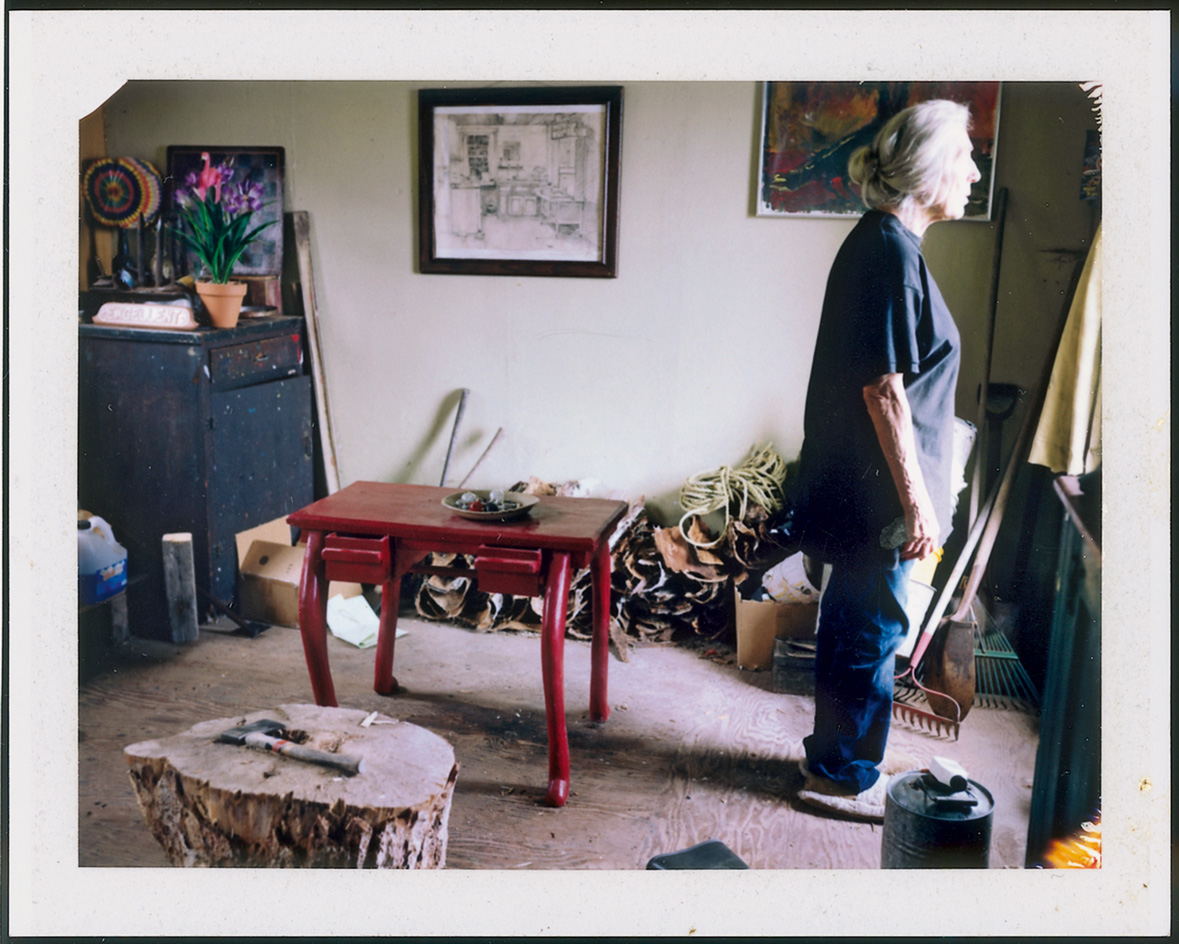
Robert Frank’s ‘Destruction Party’
4 January
‘Robert Frank: Books and Films, 1947-2017’ has been on view for the past month at Houston Center for Photography, showing a selection of images from the photographer’s oeuvre, including prints from his renowned book, The Americans. As an antidote to old and fragile silver gelatin prints, here Frank has printed his photographs on newsprint, making them (in his own words) ‘cheap, quick and dirty – that’s how I like it!’. Now, with the exhibition coming to a close, the Centre invites us to a so-called ‘Destruction Party’, where the prints will be burned in trashcans, so as to avoid a future of speculation and commodification in the art market. The ‘Destruction Party’ takes place on 5 January, 6-8pm.
Pictured, Frank’s wife June Leaf in Mabou, Canada, 2009, by Robert Frank, from the book Household Inventory Record, 2013. © The artist
Writer: Lynsie Roberts
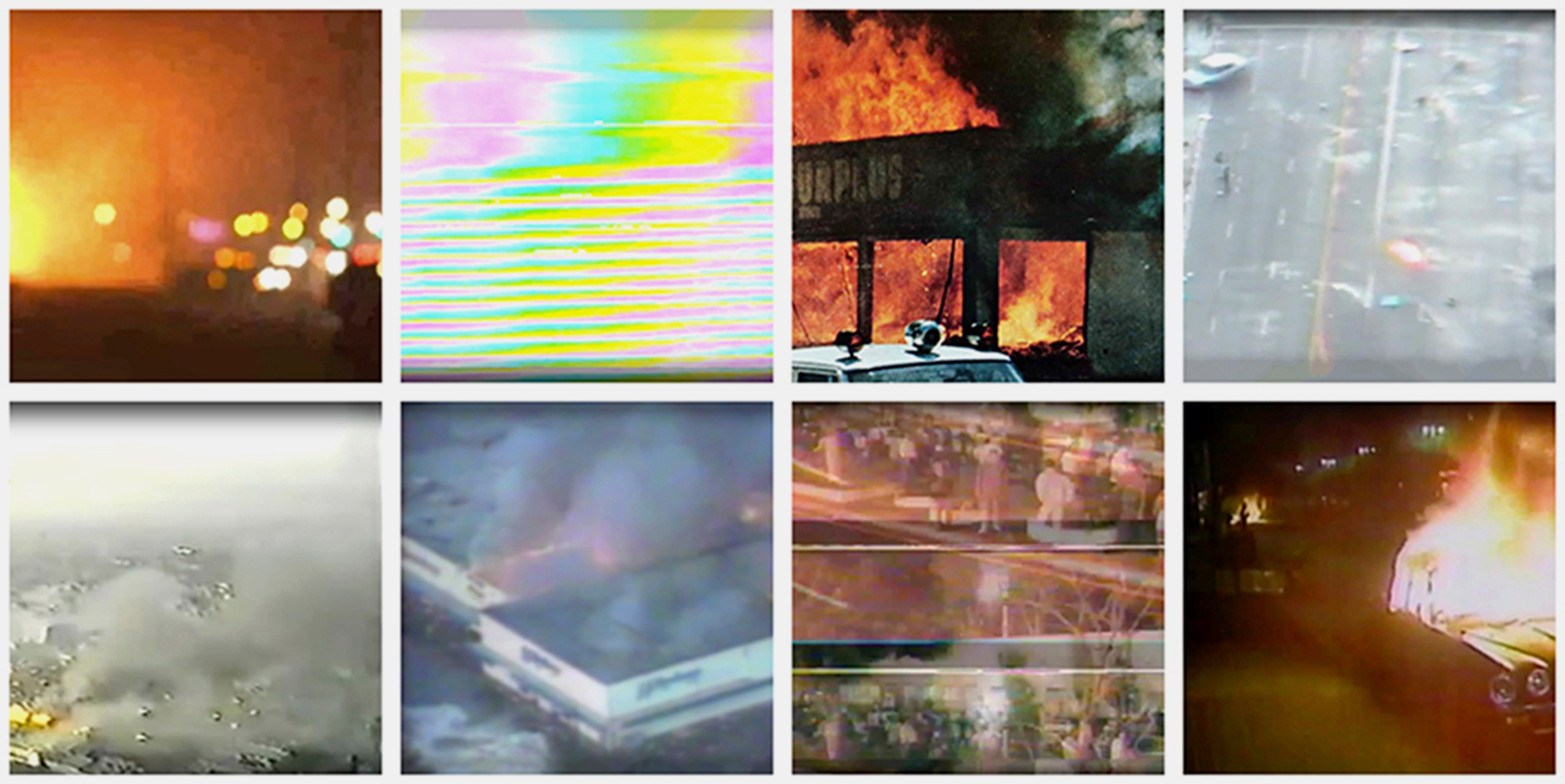
‘#Mass_Observation’ at Filter Space
3 January
Krista Wortendyke is interested in the collective, fragmented voice of social media in relaying news of world events. In particular, she questions the casualness with which we, untrained observers, have come to capture moments of violence. A new exhibition at Chicago’s Filter Space gallery collects a series of images of racial riots across America, cropped to mimic an Instagram feed, bringing digital images into a dynamic, physical form. In doing so, Wortendyke raises issues of violence and brutality, while examining social media as a problematic lens through which we view breaking news stories, and the experiences of others. Until 3 February.
Pictured, #Mass_Observation, 2016, by Krista Wortendyke. © The artist
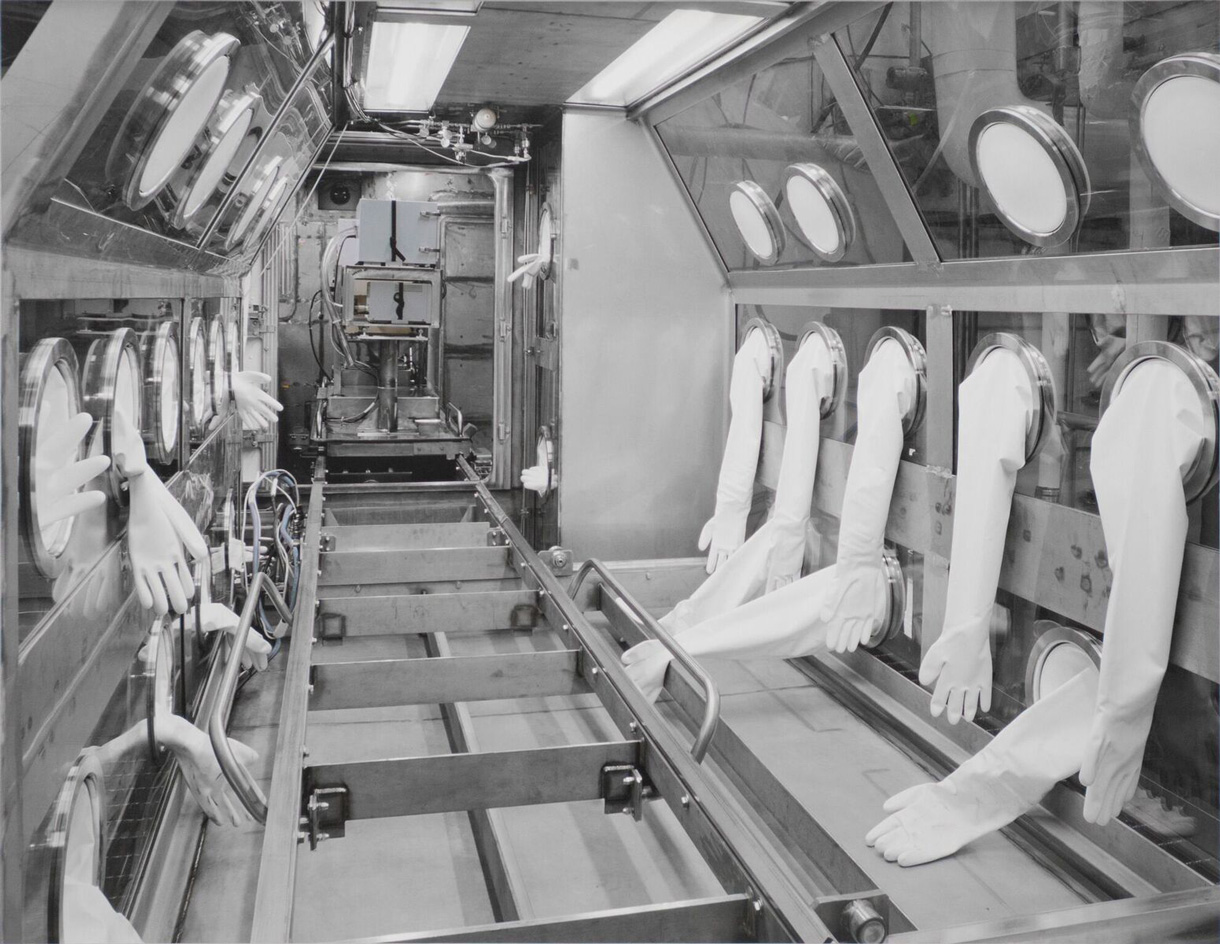
David Maisal’s ‘Proving Ground’
2 January
After requesting access for over a decade, photographer David Maisal was finally granted entry into the classified chemical and biological weapons site of Dugway Proving Ground in 2014. The resulting imagery, on display at Haines Gallery in San Francisco, documents how the vast Great Salt Lake Desert of Utah has been exposed, measured and marked by the tests, through Maisal’s trademark style of aerial photography, along with closed-door interior shots. The clinical facilities and Live Agent Testing Chambers (pictured) are eerily devoid of human life. ‘Proving Ground’ continues until 24 February.
Pictured, Referee Module Interior (5370_04), Whole System Live Agent Test Laboratory, David Maisal, Utah, 2014, by David Maisal. Courtesy of the artist and Haines Gallery
Writer: Lynsie Roberts
-
 Warp Records announces its first event in over a decade at the Barbican
Warp Records announces its first event in over a decade at the Barbican‘A Warp Happening,' landing 14 June, is guaranteed to be an epic day out
By Tianna Williams
-
 Cure your ‘beauty burnout’ with Kindred Black’s artisanal glassware
Cure your ‘beauty burnout’ with Kindred Black’s artisanal glasswareDoes a cure for ‘beauty burnout’ lie in bespoke design? The founders of Kindred Black think so. Here, they talk Wallpaper* through the brand’s latest made-to-order venture
By India Birgitta Jarvis
-
 The UK AIDS Memorial Quilt will be shown at Tate Modern
The UK AIDS Memorial Quilt will be shown at Tate ModernThe 42-panel quilt, which commemorates those affected by HIV and AIDS, will be displayed in Tate Modern’s Turbine Hall in June 2025
By Anna Solomon